Savings and loan crisis
description: a financial crisis that occurred in the 1980s and 1990s involving the failure of numerous U.S. savings and loan associations
193 results
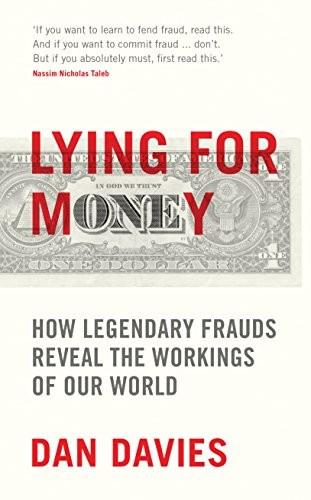
Lying for Money: How Fraud Makes the World Go Round
by
Daniel Davies
Published 14 Jul 2018
It is not so big a step from the rogue trader to consider what might happen if an entire bank came under the control of fraudsters and if the rogue was at the very top. The Savings and Loan scandals The Savings and Loan (S&L) crisis of the 1980s set the tone for many of the financial scandals to come. It was the first really major banking crisis of the post-Bretton Woods era and marked the transition from the inflationary 1970s to the hard-money era in the USA and into the Great Moderation. It also gave the first foreshadowings of the fact that financial deregulation tends to lead to crises; the interaction between the economic conditions of the time and the two major deregulation bills was particularly destructive. And related to this, the S&L crisis happened at the start of the Reagan era, as the power of government was being rolled back and that of corporations was waxing fat, leading to a sea change in the nature of the relationship between powerful bankers and the officials meant to supervise them.
…
Before long, the S&L industry had moved on from its history of small local banks, and was increasingly characterised by quite large organisations, often owned or controlled by property developers, and several of which were connected to the junk bond financier (and later convicted securities fraudster) Michael Milken. It was at this point that the second phase of the S&L crisis can be said to have begun. Nobody better epitomises the S&L scandal than Charles Keating, an amazing fraud, crook and hypocrite. He was the owner of American Continental Corporation (ACC), a real estate company with its headquarters in Phoenix, Arizona. One of ACC’s subsidiary companies was Lincoln Savings & Loan, which was licensed in the considerably more deregulated state of California.
…
But most of all, for our purposes, it was with respect to the S&L industry that the term ‘control fraud’ really came of age. It is probably fair to note at this point that the economic history of the S&L crisis is contested territory from an intellectual point of view, with both market-oriented and pro-government economists having written studies of the crisis which blamed the other side. Broadly speaking, if you did your economics degree in Chicago and call yourself a libertarian or small-government conservative, you tend to view the S&L crisis as the result of broad macroeconomic factors which destroyed the underlying business model of the industry and couldn’t be stopped.
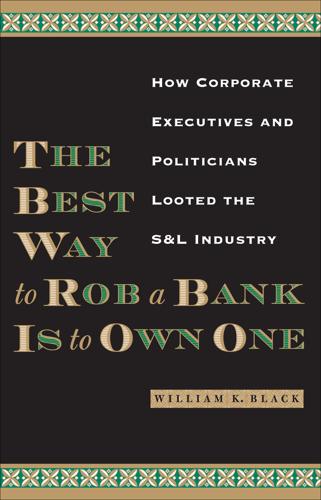
The Best Way to Rob a Bank Is to Own One: How Corporate Executives and Politicians Looted the S&L Industry
by
William K. Black
Published 31 Mar 2005
(Everything Congress proposes is a “reform,” no matter how pernicious its effect.)6 Fifteen years ago, when the financial world was rocked by the savings and loan scandal, the accounting industry faced a crisis not unlike the one it faces today. Lawsuits were mounting, millions of dollars were paid out in settlements, and the image of accountants was plummeting…. Jack Henry, a retired managing partner in Andersen’s Phoenix office, said that at the time of the S&L crisis there was a major change in the industry, caused by mounting litigation. “We were tired of getting the crap kicked out of us….” The nation’s largest accounting firms, including Chicago-based Andersen decided to fight back.
…
Tillman. 1997. Big Money: Fraud and Politics in the Savings and Loan Crisis, Berkeley and Los Angeles: Univ. of California Press. Chicago Tribune. 2002. “Accounting Industry Puts Profit Above Integrity, Critics Say.” February 13. http://finance.pro2net.com/x32941.xml. Craig, James L., Jr. 1994. “Serving the Profession’s Assurance Function.” The CPA Journal Online (January). http://www.nysscpa.org/cpajournal/old/14979915.htm. Accessed January 22, 2004. Day, Kathleen. 1993. S&L Hell: The People and the Politics behind the $1 Trillion Savings and Loan Scandal, New York: W. W. Norton. Easterbrook, Frank H., and Daniel R.
…
He sounded strikingly similar to Senator Proxmire (in the passage quoted in the last chapter) predicting that the FSLIC would create false publicity about an S&L crisis in order to induce Congress to pass an excessively large FSLIC recap bill. Proxmire, a prominent Democrat who had long chaired Senate Banking, was Wall’s chief opponent on myriad issues for many years. The similarity of Proxmire’s and Wall’s views adds to the likelihood that when Wall became chairman he really believed that there was no S&L crisis and that forbearance was the key to preventing a crisis from developing. The industry and the administration had pushed this view since 1981, so it is understandable that Wall shared their beliefs.
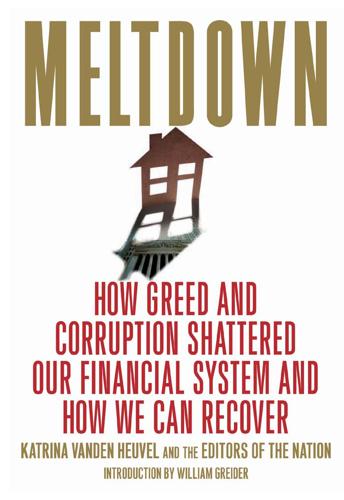
Meltdown: How Greed and Corruption Shattered Our Financial System and How We Can Recover
by
Katrina Vanden Heuvel
and
William Greider
Published 9 Jan 2009
He was pious, he was a devoted family man—and he was lawless. He believed the main purpose of politics was to make people like him rich. Although Keating eventually wound up, by hook or by crook, a very wealthy fellow, it was a failed wealth. Everything *On November 19, 1990, in the wake of the Savings and Loans scandal, The Nation devoted an entire issue to Robert Sherrill’s article, “The Looting Decade: S&Ls, Big Banks and Other Triumphs of Capitalism.” Unfortunately, space doesn’t allow us to reproduce the whole article here. What follows are two extracts from this epic piece. The essay was based largely on these books: Inside Job: The Looting of he ever did was, in a way, a failure.
…
Speaking of corruption, what happened to Arthur Andersen, one of the most venerable of the Big Five accounting firms (established in 1913), really shook Wall Street. If the Big Five couldn’t be trusted to give reliable accounting, the stock market had truly become a gambling den. There had been whispers of Arthur Andersen’s unreliability ever since its part in the savings and loan scandal. Actually, these whispers made it more attractive to some clients. Pollin points out that in 1990 George W. Bush had successfully called on Arthur Andersen to OK his questionable books at the Harken Energy Corporation; and in a promotional video in 1996, Dick Cheney, then chairman of Hal-liburton, had come straight to the point, praising Arthur Andersen for giving him “good advice ... over and above the just sort of normal by-the-book auditing arrangement.”
…
The regulations were initially weakened, then abolished altogether, under the strong guidance of, among others, Federal Reserve chair Alan Greenspan, Republican Senator Phil Gramm and Clinton Treasury Secretary Robert Rubin. For Minsky, the consequences were predictable. Consider the scorecard over the twenty years before the current disaster: a stock market crash in 1987; the savings-and-loan crisis and bailout in 1989–90; the “emerging markets” crisis of 1997–98—which brought down, among others, Long-Term Capital Management, the super–hedge fund led by two Nobel laureates specializing in finance—and the bursting of the dot-com market bubble in 2001. Each of these crises could easily have produced a 1930s-style collapse in the absence of full-scale government bailout operations.
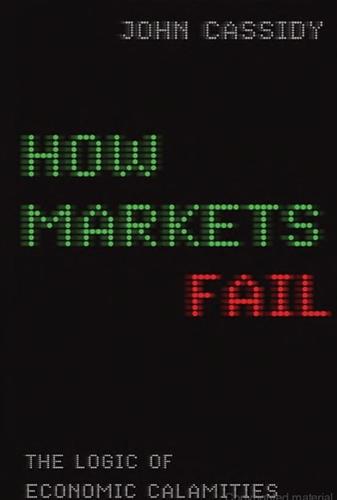
How Markets Fail: The Logic of Economic Calamities
by
John Cassidy
Published 10 Nov 2009
Barth, Gerard Caprio, Jr., and Ross Levine, Rethinking Banking Regulation: Till Angels Govern (Cambridge: Cambridge University Press, 2005). 161 “Banks can offer . . .”: Asli Demirguc-Kunt and Edward J. Kane, “Deposit Insurance Around the Globe: Where Does It Work?” Journal of Economic Perspectives 16, no. 2 (Spring 2002): 176. 162 Cost of savings-and-loan crisis: See Timothy Curry and Lynn Shibut, “The Cost of the Savings and Loan Crisis: Truth and Consequences,” FDIC Banking Review, available at www.fdic.gov/bank/analytical/banking/2000dec/brv13n2_2.pdf. 163 “As Adam Smith recognized . . .”: William Seidman, “Lessons of the Eighties: What Does the Evidence Show?” presentation at NIKKIN, Seventh Special Seminar on International Finance, Tokyo, September 18, 1996, 57. 163 “In effect, the Arrow-Debreu . . .”: Joseph E.
…
In this manner, both banks and depositors can engage in imprudent banking practices, secure in the knowledge that if the high-risk loans do not pay off, deposit insurance protects their principal.” There is now a wealth of evidence from all around the world that the existence of deposit insurance encourages banks to take bigger risks, and raises the probability of financial crises occurring. In the United States, the savings-and-loan scandal of the late 1980s and early ’90s is Exhibit A. Originally, most S&Ls, or thrifts, were local firms that focused on providing residential mortgages to middle-class families. In the 1970s, many of these thrifts struggled to find depositors, because of competition from bank money market accounts, which yielded higher rates of interest.
…
In 1989, Congress finally stepped in and set up the Resolution Trust Corporation, giving it the power to take over troubled thrifts, fire their managers, and sell off their assets. In just a few years, more than seven hundred S&Ls went out of business. None of the thrifts’ depositors lost any money, but the total cost to U.S. taxpayers of cleaning up the mess was about $125 billion. In many ways, the S&L scandal was a rehearsal for the subprime crisis. The latter, because it included the major commercial banks as well as specialized mortgage companies, was much larger. But the central causes of the two financial calamities were the same: a misguided faith in the free market, deregulation that was heavily influenced by industry lobbyists, and an unsustainable real estate boom.
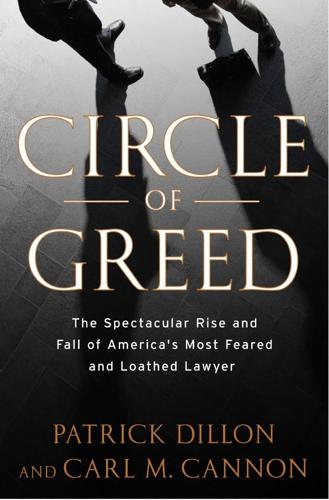
Circle of Greed: The Spectacular Rise and Fall of the Lawyer Who Brought Corporate America to Its Knees
by
Patrick Dillon
and
Carl M. Cannon
Published 2 Mar 2010
Germain, a Rhode Island Democrat, who served for many years as chairman of the House Banking Committee. * Several authoritative books were written detailing the S&L scandal of the 1980s, the most thorough probably being Inside Job: The Looting of America’s Savings and Loans by Stephen Pizzo, Mary Fricker, and Paul Muolo (New York: HarperCollins, 1991). Given what happened to the U.S. economy in 2008 and 2009, however, the single most distressing line about the S&L crisis may have come from Martin Mayer, author of The Greatest-Ever Bank Robbery: The Collapse of the Savings and Loan Industry (New York: Collier, 1992).
…
Proposition 211 (the number, incidentally, that law enforcement officers in California used over their police scanners to designate a robbery in progress) would have prohibited the California legislature from restricting attorney-client fee arrangements, allowed CEOs or directors to be found personally liable for fraud committed by their business, and shifted the burden of proof for securities violations back to the defendants. Striking while Charles Keating and the Lincoln Savings and Loan scandal were still fresh in the public conscience, a Lerach-sponsored front group called Citizens for Retirement Protection and Security told California voters: “Congress gutted the law that allowed the victims of Charles Keating’s fraud to recover most of their money … According to the Federal Trade Commission, Americans are losing one billion dollars a year to investment swindlers.”
…
The list of other journalists whose work informed our own also includes Jeffrey Toobin of The New Yorker, whose profile of Lerach left an indelible impression on friends and foes alike; Stephen Pizzo, Mary Fricker, and Paul Muolo, whose 1989 groundbreaking book, Inside Job, remains the clearest view of the savings and loan crisis, the antecedent to our recent financial meltdown; Fortune writer Bethany McLean, who along with Elkind, authored the captivating book The Smartest Guys in the Room, about the Enron debacle; and to Kurt Eichenwald, for showing us the way with his impeccably reported Conspiracy of Fools. Finally, to legions of reporters from The Wall Street Journal and New York Times and others whose bylines appeared in Forbes, Business Week, the Financial Times, and numerous local newspapers, journals, white papers, and websites.
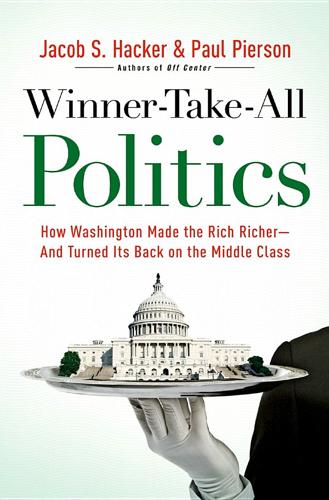
Winner-Take-All Politics: How Washington Made the Rich Richer-And Turned Its Back on the Middle Class
by
Paul Pierson
and
Jacob S. Hacker
Published 14 Sep 2010
Craig, 60 risk management, 1–2, 44, 45–46, 69, 115, 197, 249 “Roadmap for America’s Future,” 302 Robb, Charles, 181 Rogers, Will, 168 Roosevelt, Franklin D., 87, 89, 107–8, 137–38, 242, 255, 283, 303, 306 Roosevelt, Theodore, 79–80, 86, 306 Rosen, Sherwin, 45 Rosenthal, Howard, 158–59 Rostenkowski, Dan, 183 Rubin, Robert, 195, 225, 232, 249, 250, 254 rural interests, 84, 85, 108, 189, 237, 246, 280, 298 Saez, Emmanuel, 13–14, 15, 16, 20, 21, 47–48 Salam, Reihan, 149 salaries, 1, 14, 20, 34–40, 62, 66–67, 140, 153–55, 198 S&P 500, 154–55, 335n Santorum, Rick, 265 Sarah Mellon Scaife Foundation, 123 Sarbanes-Oxley Act (2002), 65–66, 220–21, 279, 282, 292 savings and loans (S&L) scandal, 185, 191 savings rate, 31, 32, 214 Scaife, Richard, 122–23 “Scarlett O’Hara defense,” 127, 220–21, 229, 268 Schattschneider, E. E., 146 Scheiber, Noam, 279 Scher, Peter, 272–73 Schiliro, Phil, 260 Schmitt, Mark, 243 Schudson, Michael, 86 Schumer, Charles, 51, 166, 185, 223–30, 239, 249, 251 Scott, H.
…
On Breaux’s successful brand of “non-partisan chic” see Chait, The Big Con, 225–28. 35 Kuttner, Life of the Party, 53. 36 For a detailed discussion see Mark Smith, The Right Talk: How Conservatives Transformed the Great Society into the Economic Society (Princeton: Princeton University Press, 2007), chapter 7. 37 Quoted in Paul Barrett, “What Brought Down Wall Street?” MSNBC.com, September 19, 2008, http://www.msnbc.msn.com/id/26793500. 38 Barbara Rudolph, Gisela Bolte, Richard Hornik, and Thomas McCarroll, “The Savings and Loan Crisis: Finally, the Bill Has Come Due,” Time, February 20, 1989, http://www.time.com/time/printout/0,8816,957083,00.html. 39 See Thomas Ferguson and Joel Rogers, Right Turn: The Decline of the Democrats and the Future of American Politics (New York: Hill and Wang, 1986), 130–37. 40 Eisenhower, Dwight D.
…
The reforms created a now-familiar set of perverse incentives, expanding opportunities to score big by betting with other people’s money. The debacle that followed was an eerie precursor of the financial implosion of 2008, although this time the damage was largely contained within the S&L industry. The S&L crisis, which cost taxpayers over $125 billion in direct outlays, was a thoroughly bipartisan affair. Early efforts to correct the problems (at a time when the costs would have been minimal) were effectively blocked in Congress.38 The whole sordid business was capped by a mostly Democratic (save for John McCain) scandal involving Charles Keating, the head of Lincoln Savings and Loan.
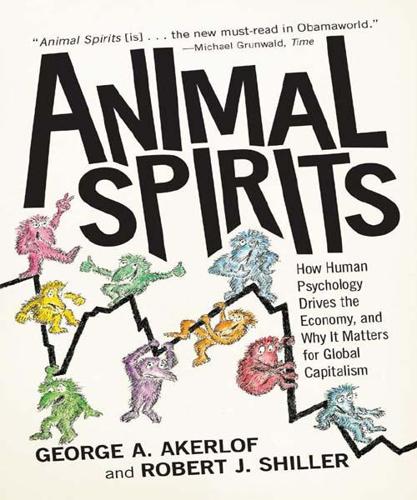
Animal Spirits: How Human Psychology Drives the Economy, and Why It Matters for Global Capitalism
by
George A. Akerlof
and
Robert J. Shiller
Published 1 Jan 2009
A very small number of non-arms-length transactions allowed deals to take place that economists just a few years earlier—envisioning financiers as following the conventional rules— would have thought impossible. This fragility was particularly clear in Texas, where the S&L scandals were especially virulent. There the price of real estate soared. Those who were in the legitimate real estate business knew what was happening and faced a dilemma. Should they get out of the business, or should they continue, knowing that prices were vastly inflated? For legitimate builders and developers it was a tough decision. The S&L crisis was ultimately responsible for a considerable amount of the economic turmoil that disturbed the economy during the recession of 1990–91 and for the slow recovery that followed it, lasting until 1993.
…
But the opportunities are not always equally big. When they are big, we see consequences for the whole economy. One example of this occurred in the savings and loan (S&L) crisis, which was a factor in the recession of 1990–91. (The loss in confidence in the wake of the first Iraq war and the spike in oil prices that preceded it were more important factors.) In the United States, S&Ls act as banks that lend money primarily for mortgages. The S&L crisis began in the 1980s after the Garn– St. Germain Depository Institutions Act of 1982 deregulated the S&Ls. The act allowed them to lend much more aggressively but left in place the government as guarantor of their deposits—a sure prescription for disaster if anyone is tempted to engage in questionable lending.
…
A plan for recovery should include the possibility that relatively well-run banks that fall into the lap of the FDIC be incorporated into a new GSE. This corporation could be used directly to support lending activities beyond the conventional mortgages represented by Fannie Mae and Freddie Mac. This would require new legislation, setting up a corporation similar to the Resolution Trust Corporation, which resolved the S&L crisis. But here the mandate would be different: rather than focusing on expeditious resolution of assets, the banks in this new corporation would, with suitable supervision, be directed to make loans with the specific purpose of relieving the credit crunch. In the Swedish financial crisis of the early 1990s, a variety of methods, including state ownership of banks, insured that credit did not come to a standstill.15 Advantages and Disadvantages of Methods 1, 2, and 3 The actual mix of methods 1, 2, and 3 that should be used to achieve the credit target depends on their respective advantages and disadvantages.
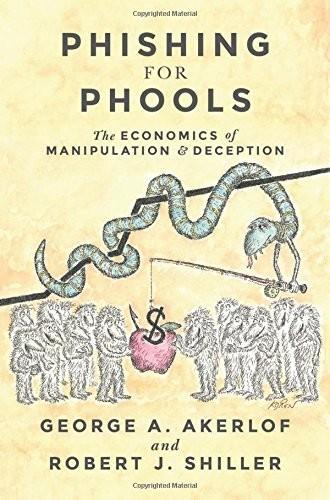
Phishing for Phools: The Economics of Manipulation and Deception
by
George A. Akerlof
,
Robert J. Shiller
and
Stanley B Resor Professor Of Economics Robert J Shiller
Published 21 Sep 2015
Stein, License to Steal, pp. 89–92. 18. The criminal case against Keating was overturned on appeal, after he had served four and a half years of time and confessed to other crimes. Robert D. McFadden, “Charles Keating, 90, Key Figure in ’80s Savings and Loan Crisis, Dies,” New York Times, April 2, 2014, accessed May 27, 2015, http://www.nytimes.com/2014/04/02/business/charles-keating-key-figure-in-the-1980s-savings-and-loan-crisis-dies-at-90.html?_r=0. Spiegel was indicted on many counts, but went free after a seven-week trial. Thomas S. Mulligan, “Spiegel Found Not Guilty of Looting S & L,” Los Angeles Times, December 13, 1994, accessed May 1, 2015, http://articles.latimes.com/1994-12-13/news/mn-8437_1_thomas-spiegel.
…
McDonald, Lawrence G., with Patrick Robinson. A Colossal Failure of Common Sense: The Inside Story of the Collapse of Lehman Brothers. New York: Crown Business, 2009. McFadden, Robert D. “Charles Keating, 90, Key Figure in ’80s Savings and Loan Crisis, Dies.” New York Times, April 2, 2014. Accessed May 27, 2015. http://www.nytimes.com/2014/04/02/business/charles-keating-key-figure-in-the-1980s-savings-and-loan-crisis-dies-at-90.html?_r=0. McLean, Bethany, and Peter Elkind. “The Guiltiest Guys in the Room.” Fortune, July 5, 2006. Last accessed May 12, 2015. http://money.cnn.com/2006/05/29/news/enron_guiltyest/. —. The Smartest Guys in the Room: The Amazing Rise and Fall of Enron.
…
See also Orman, Suze financial crises: phishing as cause of, xiii–xiv; predicting, 165; responses to, 134–35; stories told in, xiii–xiv Financial Crisis of 2008: asset price bubbles and, xiv, 33–34, 134; bank failures in, 29, 164–65; credit default swaps and, 39–40; economists’ failure to predict, 164–65, 170, 230n2; fraud preceding, 79; government bailouts in, 25, 75–76, 134, 204–5n16; myths in, 36–37; reputation mining in, 23–25, 31–33; similarities to savings and loan crisis, 123 financial industry: complex products of, 8, 24–25, 31–33; deregulation of, 120; phishing in, 8; regulation of, 8, 81–82, 132, 156–59. See also banks; investment banks; savings and loan crisis financial markets: informed vs. uninformed traders, 8, 168; Social Security privatization and, 155; stocks, 127, 134, 168; volatility in, 133–34, 168. See also asset prices; derivatives; junk bonds; securities regulation; stocks First Amendment, 160 First Executive Life Insurance, 128, 129 FitzGerald, Garret A., 88–89, 208n11, 209nn25–26 focus, manipulation of, 32, 149–50 Fons-Rosen, Christian, 205n27 food: safety of, 84–86; unhealthy, xv, 86, 94.
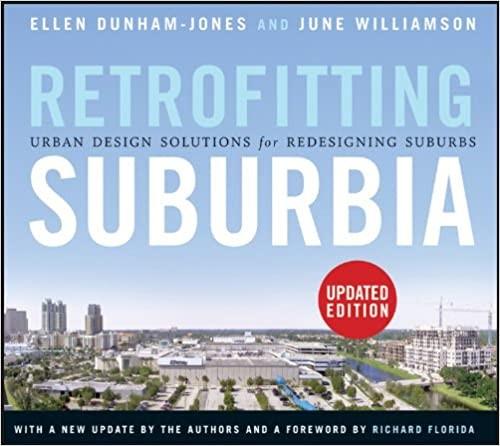
Retrofitting Suburbia, Updated Edition: Urban Design Solutions for Redesigning Suburbs
by
Ellen Dunham-Jones
and
June Williamson
Published 23 Mar 2011
The residents of Sunny Brook Meadows, an older subdivision of fifty ranch houses in the rapidly transforming Sandy Springs area of Atlanta, self-organized to put their homes up for sale for redevelopment and found a willing buyer.24 From Subdivision to Edge City: Greenway Plaza An early “down and dirty” example of the strategy of acquiring multiple single-family parcels to amass a larger parcel for mixed-use development is Greenway Plaza, five miles west of downtown Houston, Texas, on the Southwest Freeway (U.S. 59). The lead developer was Century Development Corporation, run by Kenneth Schnitzer, a larger-than-life Texas personality (later convicted and acquitted on charges related to the 1980s savings and loan bank scandals). In the 1960s, Schnitzer set his sights on the Lamar Weslayan subdivision, a collection of 300 middle-class bungalows, as an ideal location for a major office development. The subdivision had already been split in two by the construction of the freeway. Because of the lack of zoning regulations in the city, there was no need to worry about the proposed change in use or density.
…
Highly auto dependent, it was one of the nation’s first large-scale, planned urban developments to emphasize greenbelts and extensive landscaping. By the early 1980s it had a 400-room hotel, an underground shopping mall, and a sports arena home to professional teams; it also housed over 12,000 employees in ten office towers. Its developer, Kenneth Schnitzer, was convicted then exonerated of fraud in the S&L scandal. Century City, a forerunner of edge cities, was planned in the 1960s as a sleek second downtown for Los Angeles. However, overpasses that were supposed to connect the high-rise business district to new residential communities were never completed; the communities have become private, gated enclaves; and the council member for the area says, “Right now, Century City is a rabbit warren. . . .
…
They are sheathed in monolithic surfaces, opaque for the mall and most often mirror glass for the office buildings. They are typically object-buildings surrounded by parking with a few outparcels. A record 16,000 shopping centers were built between 1980 and 1990.19 Construction did not slow down until the savings and loan crisis in 1989 tightened credit, leading to a 70% decline in shopping center starts.20 In response, many developers took their companies public, becoming real estate investment trusts (REITs). Shopping center ownership, in particular, shifted from being overwhelmingly a family-run and privately based entrepreneurial business, often with local ties to the community, to becoming a standardized commodity traded on Wall Street.21 The landscape from the 1990s reflected Wall Street’s demand for predictability in increasingly uniform, repetitive building types with little, if any, accommodation to the particularities of place or place-making.22 We also see in the strip landscape of the late 1980s and 1990s the proliferation of new retail formats that increased retail specialization and auto dependency.
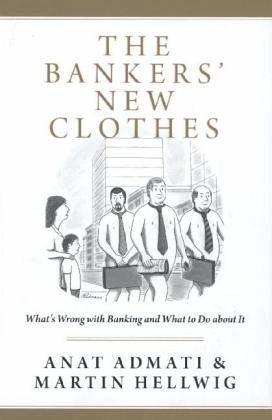
The Bankers' New Clothes: What's Wrong With Banking and What to Do About It
by
Anat Admati
and
Martin Hellwig
Published 15 Feb 2013
In addition to the FDIC, charged with providing insurance for deposits at commercial banks, the United States created the Federal Savings and Loan Insurance Corporation (FSLIC) to insure deposits at savings and loan (S&L) institutions. As a result of the S&L crisis of the 1980s, however, in 1989 the FSLIC was dismantled and its tasks given to the FDIC. The FDIC is supposed to be self-financed through fees it charges member banks. So was the FSLIC, but in the S&L crisis the funds it could obtain in fees did not suffice to compensate for the failing institutions’ losses. The FDIC can borrow from the U.S. Treasury up to $100 billion (Federal Deposit Insurance Act, Section 14, available at http://www.fdic.gov/regulations/laws/rules/1000-1600.html, accessed September 30, 2012).
…
According to Kluge, the term rotta should be translated as “in default, insolvent,” a second meaning that both the Italian word and its Latin ancestor, ruptus, broken, took on in the high Middle Ages. Hoad (1986) also refers to the medieval meaning of ruptus as “insolvent.” 3. Gorton (2010) suggests that the “quiet period” in U.S. banking lasted until 2007, but he neglects the S&L crisis of the 1980s and early 1990s, as well as the hidden crisis of U.S. commercial banks in 1990. On the latter, see Boyd and Gertler (1994). The S&L crisis, discussed in Chapter 4, cost taxpayers $129 billion (see Curry and Shibut 2000). 4. See Goodhart (1996). 5. In this vein, Gorton (2010) calls for an extension of the scope of federally guaranteed insurance from traditional deposits to other forms of short-term lending.
…
The “zombie banks,” those banks that would have been considered insolvent if their accounts had fully reflected their economic situation, were the most reckless in pursuing such strategies.33 They were gambling for resurrection, on the principle that “heads, I become solvent again; tails, the deposit insurer has a problem.” When interest rates rose and the economy turned down again in the late 1980s, many of the speculative investments made by the savings banks in previous years turned sour and the so-called savings and loan crisis finally broke into the open. By the end of the 1990s, when the mess had at last been resolved, 1,043 out of 3,234 savings banks had been closed and the total cost had been about $153 billion, $124 billion to the general taxpayer and $29 billion in industry support for the deposit insurance institutions.34 It would have been much cheaper to resolve the crisis in the early 1980s, but at that time, industry lobbyists had convinced Congress that U.S. savings banks had “only a liquidity problem,” which would be solved by deregulation.35 What Else Can Go Wrong: Risks from Lending The 1980s experience of savings institutions in the United States is an example of the general problem that lending can be very risky.

The Ascent of Money: A Financial History of the World
by
Niall Ferguson
Published 13 Nov 2007
, Annals of the American Academy of Political and Social Science, 465 (January 1983), p. 37. 36 Maureen O’Hara, ‘Property Rights and the Financial Firm’, Journal of Law and Economics, 24 (October 1981), pp. 317-32. 37 Eichler, ‘Homebuilding’, p. 40. See also Henry N. Pontell and Kitty Calavita, ‘White-Collar Crime in the Savings and Loan Scandal’, Annals of the American Academy of Political and Social Science, 525 (January 1993), pp. 31-45; Marcia Millon Cornett and Hassan Tehranian, ‘An Examination of the Impact of the Garn-St Germain Depository Institutions Act of 1982 on Commercial Banks and Savings and Loans’, Journal of Finance, 45, 1 (March 1990), pp. 95-111. 38 Henry N.
…
Large numbers of under-capitalized banks were a recipe for financial instability, and panics were a regular feature of American economic life - most spectacularly in the Great Depression, when a major banking crisis was exacerbated rather than mitigated by a monetary authority that had been operational for little more than fifteen years. The introduction of deposit insurance in 1933 did much to reduce the vulnerability of American banks to runs. However, the banking sector remained highly fragmented until 1976, when Maine became the first state to legalize interstate banking. It was not until 1993, after the Savings and Loans crisis (see Chapter 5), that the number of national banks fell below 3,600 for the first time in nearly a century. In 1924 John Maynard Keynes famously dismissed the gold standard as a ‘barbarous relic’. But the liberation of bank-created money from a precious metal anchor happened slowly.
…
In 1991, after two trials (the first of which ended with a hung jury), Faulkner, Blain and Toler were convicted of civil racketeering and looting $165 million from Empire and other S&Ls through fraudulent land deals. Each was sentenced to twenty years in jail and ordered to pay millions of dollars in restitution. One investigator called Empire ‘one of the most reckless and fraudulent land investment schemes’ he had ever seen.48 Much the same could be said for the Savings and Loans crisis as a whole; Edwin Gray called it ‘the most widespread, reckless and fraudulent era in this nation’s banking history’. In all, nearly five hundred S&Ls collapsed or were forced to close down; roughly the same number were merged out of existence under the auspices of the Resolution Trust Corporation set up by Congress to clear up the mess.
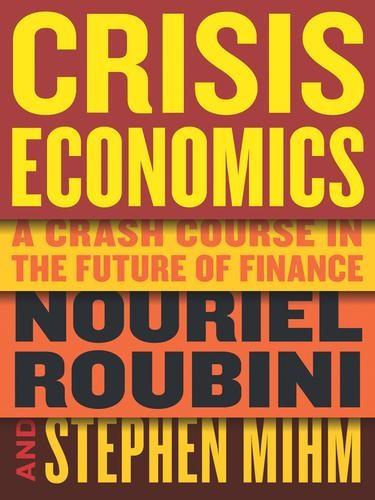
Crisis Economics: A Crash Course in the Future of Finance
by
Nouriel Roubini
and
Stephen Mihm
Published 10 May 2010
Even more striking, the irrational euphoria, the pyramids of leverage, the financial innovations, the asset price bubbles, the panics, and the runs on banks and other financial institutions shared by these two episodes are common to many other financial disasters as well. Change a few particulars of the foregoing narrative, and you could be reading about the infamous South Sea Bubble of 1720, the global financial crisis of 1825, the boom and bust that foreshadowed Japan’s Lost Decade (1991-2000), the American savings and loan crisis, or the dozens of crises that hammered emerging markets in the 1980s and 1990s. In the history of modern capitalism, crises are the norm, not the exception. That’s not to say that all crises are the same. Far from it: the particulars can change from disaster to disaster, and crises can trace their origins to different problems in different sectors of the economy.
…
The same month the FDIC guaranteed the principal and the interest payments on debt issued by banks and bank holding companies up to a total of $1.5 trillion. All of these guarantees came with a price tag. In the third quarter of 2009, the funds set aside by the FDIC dipped into negative territory. Almost inevitably taxpayers will be asked to shoulder the burden in the form of a bailout, much as they did in the wake of the savings and loan crisis. While that kind of support has plenty of precedent, a host of other measures sparked by the recent crisis also pledged unprecedented amounts of taxpayer dollars. These outsize bailouts began with Fannie Mae and Freddie Mac. As the two mortgage giants came under government conservatorship, the Treasury Department pledged $400 billion to underwrite the takeover, though more may become necessary.
…
The same result can be achieved by having the federal government unilaterally declare certain banks insolvent and then take them over, placing them in the custody of government-appointed trustees who sell off the good assets, dispose of the bad ones, and relaunch the bank. This was the “nationalization” option that Sweden used in its own banking crisis in the early 1990s, and the United States effectively used when it took over Continental Illinois, a big bank that fell in advance of the savings and loan crisis. But in the recent crisis neither of these approaches got a serious hearing, and after the failure of Lehman Brothers, the notion of making bondholders shoulder any losses lost its appeal. Instead, the Treasury opted to use some of the $700 billion acquired under the TARP legislation to buy stakes in banks and thereby “inject” capital into them.
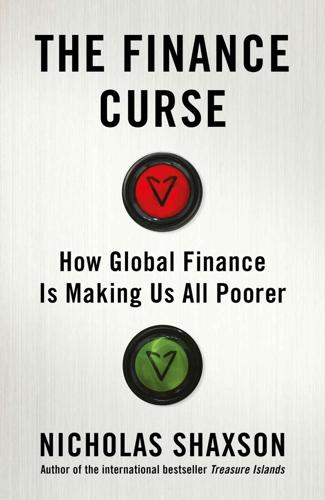
The Finance Curse: How Global Finance Is Making Us All Poorer
by
Nicholas Shaxson
Published 10 Oct 2018
The Coelho history is drawn from multiple sources, including the US House of Representatives biography of him at history.house.gov, as well as Gregg Easterbrook, ‘The Business of Politics’, Atlantic, October 1986, ‘The Tony Coelho Factor’, Washington Times, 17 January 2006, and several stories in the New York Times about Don Dixon. Coelho resigned in 1989 amid the savings and loans scandal but reappeared ten years later as general chairman of Al Gore’s presidential campaign committee – brought in, as one senior Gore official put it, because they needed ‘an adult’ to run it. 12. Wall Street players also rode this cultural wave, on occasion portraying shareholder democracy as an issue of inclusion and civil rights.
…
He then sat down next to a director of a high street bank, who said, ‘I listened with great interest to what you had to say but I can assure you if you think Her Majesty’s Government is ever going to prosecute people of my class, you are utterly mistaken. We are a protected species.’8 Compare this attitude in London in the early 1990s to what had happened in the United States after the savings and loan crisis of 1989, the fruit of Reagan-era deregulation, which felled more than 1,000 US ‘thrift’ financial institutions and was the biggest series of bank collapses in the US since 1929. Within six years of the crisis, more than 3,700 high-profile senior executives and owners of collapsed thrifts had gone to jail for fraud: the US Department of Justice secured convictions for over 95 per cent of chief executives or presidents of their institutions who were charged.
…
Nobody really wanted to insure them because they were only able to offer minute returns, but there was, it turned out, one player who would: the venerable insurance giant American International Group (AIG), specifically AIG Financial Products, based in Mayfair in London. This was led by Joe Cassano, a former employee of Drexel Burnham Lambert, the collapsed US junk bond firm at the centre of the fraudulent savings and loan crisis in the 1980s. AIGFP agreed to earn just 0.02 cents for every dollar it insured, each year, a model that has been compared to picking up pennies in front of a steamroller. (Cassano himself would take home 30 per cent of those pennies for himself, netting $280 million in 2000–8.) This deadly unit had been located in London, Dunbar explains, as part of a complex transatlantic corporate structure.
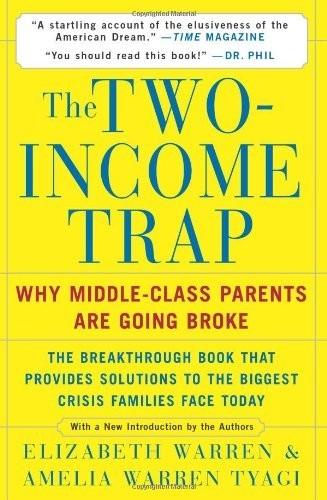
The Two-Income Trap: Why Middle-Class Parents Are Going Broke
by
Elizabeth Warren
and
Amelia Warren Tyagi
Published 17 Aug 2004
See also George W. Bush, Orrin Hatch, Henry Hyde Retirement/retirement accounts Risk(fig.)(fig.) after filing for bankruptcy of lenders See also under Families Safety issues and automobiles and car seats See also Crime; Violence Safety net S&L. See Savings and Loan crisis Saving(s) (fig.) as tax exempt Savings and Loan (S&L) crisis Schill, Michael School transportation expenses Schools. See Education. Schor, Juliet Schumer, Charles Sears retail chain She Works, He Works: How Two-Income Families Are Happier, Healthier, and Better Off Social Security Disability Insurance (SSDI) South Dakota usury laws Sports, college SSDI.
…
Consumer lenders balk at the notion of reregulation, immediately claiming that tighter limits on interest rates would put America at risk for another banking disaster like the Savings and Loan (S&L) crisis of the late 1970s. Hemmed in by high inflation rates and low limits on interest rates, the S&Ls (which issued most home mortgages) found themselves hemorrhaging money.72 But the real problem was inflation, not usury rates per se, which had worked reasonably well for centuries. At the time, usury limits in most states were fixed at a specific number, and they hadn’t been written with double-digit inflation in mind. But that would be an easy problem to solve. To avoid a repeat of the S&L crisis, all that is needed is to tie the limit on interest rates to the inflation rate or the prime rate (which changes with inflation) so that the two never get too far out of sync.
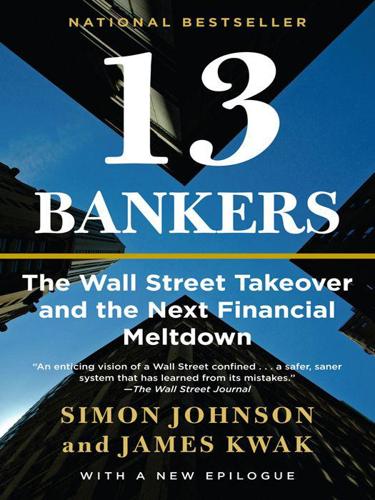
13 Bankers: The Wall Street Takeover and the Next Financial Meltdown
by
Simon Johnson
and
James Kwak
Published 29 Mar 2010
(It also faced opposition from some investment banks, which did not want commercial banks invading their turf.) The Financial Institutions Deregulation Act of 1983, which would have allowed bank holding companies to expand into securities and insurance, died in Congress.62 Comprehensive deregulation was also derailed by the savings and loan crisis, which worsened steadily through the 1980s. As it turned out, the Garn–St. Germain Act, by allowing S&Ls to expand into new businesses, prompted many of them to gamble on high-risk investments. S&Ls lacked experience in these businesses, as did their regulators, and over 2,000 banks failed between 1985 and 1992, with a peak of 534 in 1989.
…
However, the amount of money that changes hands is much smaller; if, at the end of a given year, the floating rate is 7.25 percent, then the dealer only pays the company 0.25 percent (the difference between the floating and fixed rates), or $250,000. 4 “GREED IS GOOD” The Takeover Derivatives have been an extraordinarily useful vehicle to transfer risk from those who shouldn’t be taking it to those who are willing to and are capable of doing so.… The vast increase in the size of the over-the-counter derivatives markets is the result of the market finding them a very useful vehicle. —Alan Greenspan, chair of the Federal Reserve, July 16, 20031 The 1980s came to a close with the peak of the savings and loan crisis. The failure of over 2,000 banks between 1985 and 1992 was by far the largest financial sector mass die-off since the Great Depression.2 The government bailout of the S&L industry cost more than $100 billion, and hundreds of people were convicted of fraud.3 In 1990, Michael Milken, the junk bond king, pleaded guilty to six felonies relating to securities transactions.
…
.” … The obvious danger is that with the passage of time, risk-taking will be encouraged and efforts at prudential restraint will be resisted. Ultimately, the possibility of further crises—even greater crises—will increase. —Paul Volcker, September 24, 20091 If they’re too big to fail, they’re too big. —Alan Greenspan, October 15, 20092 Between 1985 and 1992, over 2,000 banks failed in the savings and loan crisis, a consequence of deregulation, mismanagement, and fraud. Those S&Ls had been largely overseen by the Federal Home Loan Bank Board, which had failed to shut down struggling thrifts early in the 1980s, instead hoping that they could grow into solvency by expanding into more profitable (and riskier) businesses.3 In response, Congress passed the Financial Institutions Reform, Recovery, and Enhancement Act of 1989.
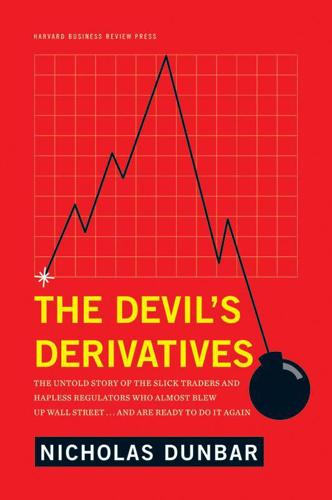
The Devil's Derivatives: The Untold Story of the Slick Traders and Hapless Regulators Who Almost Blew Up Wall Street . . . And Are Ready to Do It Again
by
Nicholas Dunbar
Published 11 Jul 2011
The more loans a bank has made for each dollar of shareholder capital, the easier it is for an economic downturn to eat up the bank’s solvency, and the more lethal the impact a crash is going to have on the confidence of depositors. The combination of Volcker’s inflation-fighting interest rate hikes in the early ’80s and poor commercial real estate lending decisions had produced the equivalent of a multicar pileup: over a thousand bank failures from 1981 to 1989, and a savings and loan crisis that would require hundreds of billions of taxpayer dollars to fix.1 It was obvious to the Fed chairman that the banks had been driving too fast. But what should the speed limit be? Bank regulators typically expressed such a limit (a leverage figure) as a minimum rather than a maximum—the lowest permissible equity capital buffer, expressed as a percentage of a bank’s assets.
…
The oldest was the Office of the Comptroller of the Currency (OCC), created as an arm of the Treasury Department in the wild monetary years of the 1850s, followed by the archipelago of Federal Reserve Banks set up after a crisis in 1907. The stock market abuses and bank failures of the Great Depression spawned, respectively, the Securities and Exchange Commission (SEC) and the FDIC. The youngest was the Office of Thrift Supervision (OTS), founded in 1989 to shepherd “thrifts” or mortgage banks after the trauma of the savings and loan crisis. At the top of the pecking order in the United States was (and is) the Federal Reserve. The Fed was not created to inspect banks; it was a central bank, and its employees proudly referred to themselves as bankers. From the chairman on down, it was staffed largely by economists rather than bureaucrats.
…
The Home ATM Machine It would require another book to recount the long and tortuous history of the shadowy mortgage securitization ecosystem that LB Kiel stumbled into via its North Street CDO deal. Had it not been for two decisive factors, American mortgage lending might have stayed largely on bank balance sheets, as it did in Europe. One factor was the 1980s savings and loan crisis, which discredited traditional bank lending in the United States and forced troubled banks to sell their mortgages to Wall Street. Even more important was the role of the U.S. government in guaranteeing mortgages that got securitized. Since the 1960s, three government-sponsored enterprises—Fannie Mae, Freddie Mac, and Ginnie Mae—had bought residential mortgages from banks.
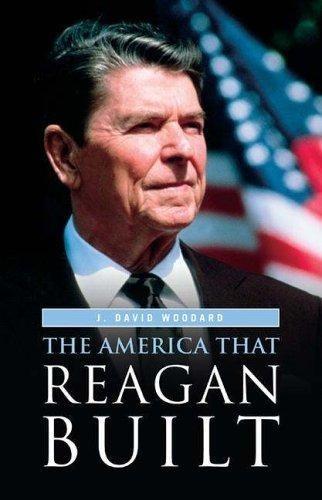
The America That Reagan Built
by
J. David Woodard
Published 15 Mar 2006
In the fall of 1989, the Federal Deposit Insurance Corporation (FDIC) took over more than a billion dollars’ worth of assets from Silverado Savings and Loan. The company was in freefall, and even though Neil Bush had resigned from the board of the S&L in 1988, the scandal lapped at the door of the Bush family residence in Washington, D.C. The president promised to stand by his family and not comment on the situation. ‘‘His [Neil’s] whole problem,’’ Barbara Bush wrote in her diary, ‘‘is that he is our son.’’44 The S&L scandal became 118 THE AMERICA THAT REAGAN BUILT a political issue, and the Bush bailout scheme was personalized by the press when Neil Bush was called before a congressional committee.
…
See New Right Republican Revolution, 183 Republicans, 142, 185–86, 188, 195, 209, 212, 224, 237, 240– 41; liberal, 32; party dominance, 100, 183, 224 reserves, 128 Reston, James ‘‘Scotty,’’ 34 rock music, 72–73, 166 ‘‘Rose Garden’’ strategy, 10, 26, 186 Rumsfeld, Donald, 227 Rwanda, 159–60, 190 same-sex marriage, 236–37 San Francisco Bay earthquake, 1989, 119–20 Sandinistas, 90, 93, 119 281 S&L scandal, 117, 120 Saudi Arabia, 96, 126–27, 131, 133, 214, 226 Schwarzkopf, Norman, U.S. General, 132, 134–35, 137–38 SDI (Strategic Defense Initiative), 57, 97–99 Serbs, 189–91 Shultz, George P., Secretary of State, 59–60, 62 Silicon Valley, 161–62 Simpson, Nicole Brown, 172–73 Simpson, Orenthal James ‘‘O.
…
Government spending for the world’s largest democracy was at a standstill. The Democrats wanted Bush to raise taxes, and the White House wanted the Congress to cut spending. In the ensuing clash, the president’s disavowal of new taxes placed negotiations in a deadlock. The other abiding issue was the S&L crisis, which was growing into an economic catastrophe that had no equal in U.S. history. Approximately 1,000 S&Ls failed between 1980 and 1991, most of them at the end of this period. As the bills came due, the cost of bailing out the thrifts was estimated to be some $500 billion, and the federal budget deficit would soar as the government adopted a strategy of not allowing the largest banks to go under.
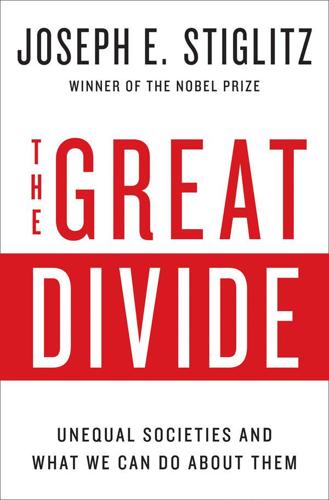
The Great Divide: Unequal Societies and What We Can Do About Them
by
Joseph E. Stiglitz
Published 15 Mar 2015
When you look at the sheer volume of wealth controlled by the top 1 percent in this country, it’s tempting to see our growing inequality as a quintessentially American achievement—we started way behind the pack, but now we’re doing inequality on a world-class level. And it looks as if we’ll be building on this achievement for years to come, because what made it possible is self-reinforcing. Wealth begets power, which begets more wealth. During the savings-and-loan scandal of the 1980s—a scandal whose dimensions, by today’s standards, seem almost quaint—the banker Charles Keating was asked by a congressional committee whether the $1.5 million he had spread among a few key elected officials could actually buy influence. “I certainly hope so,” he replied. The Supreme Court, in its recent Citizens United case, has enshrined the right of corporations to buy government, by removing limitations on campaign spending.
…
Officials know that if they wait too long, zombie or near-zombie banks—with little or no net worth, but treated as if they were viable institutions—are likely to “gamble on resurrection.” If they take big bets and win, they walk away with the proceeds; if they fail, the government picks up the tab. This is not just theory; it is a lesson we learned, at great expense, during the savings-and-loan crisis of the 1980s. When the ATM machine says, “insufficient funds,” the government doesn’t want this to mean that the bank, rather than your account, is out of money, so it intervenes before the till is empty. In a financial restructuring, shareholders typically get wiped out, and bondholders become the new shareholders.
…
They are prone to asset and credit bubbles, which inevitably collapse—often when cross-border capital flows abruptly reverse direction—imposing massive social costs. America’s infatuation with deregulation was the cause of the crisis. The issue is not just the pacing and sequencing of liberalization, as some suggest; the end result also matters. Liberalization of deposit rates led to America’s savings-and-loan crisis in the 1980s. Liberalization of lending rates encouraged predatory behavior that exploited poor consumers. Bank deregulation led not to more growth, but simply to more risk. China, one hopes, will not take the route that America followed, with such disastrous consequences. The challenge for its leaders is to devise effective regulatory regimes that are appropriate for its stage of development.
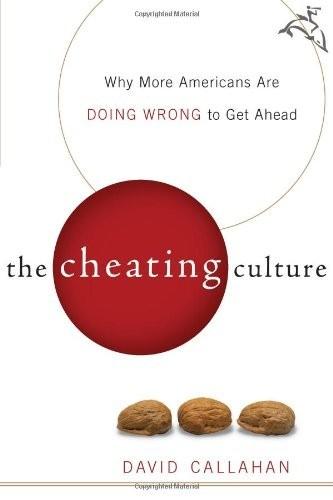
The Cheating Culture: Why More Americans Are Doing Wrong to Get Ahead
by
David Callahan
Published 1 Jan 2004
While overshadowed by the insider trading cases and big scandals involving defense contractors, the 1980s saw the largest wave of accounting abuses in history. By the early 1990s, accountants had paid out some $1.6 billion in damages in response to over 4,000 liability suits filed in the wake of their role in various scams, most notably the savings and loan scandals. Arthur Andersen paid tens of millions of dollars to settle a suit arising from its role in the failure of the notorious Lincoln Savings and Loan Association. KPMG, Deloitte & Touche, and Ernst & Young were also implicated in'S&L collapses. "Accountants didn't cause the'S&L crisis," said Senator Ron Wyden, "But they could have saved taxpayers a lot of money if they did their jobs properly and set off enough warning alarms for regulators."14 As in the 1970s, the accounting scandals of the 1980s were followed by public recrimination and tough talk from Washington officials—and very little action to prevent future abuses.
…
For example, in the 1980s, dozens of lawyers were caught up in the savings and loan debacle and received hundreds of millions of dollars in penalties from the federal government, but not a single lawyer was disciplined by a state bar association for his or her role. More recently, it's become widely known that many lawyers played a key role in various of the big corporate scandals—yet there is little evidence that state bars will do any better at disciplining these rogues than it did after the savings and loan scandal.17 Given the low odds of being hassled by a state bar, it is a wonder that the Arkansas state bar undertook disciplinary proceedings against a lawyer whose main sin was that he lied about his personal life under oath. Then, again, Bill Clinton was no typical bad apple in the legal profession; he was unlucky enough to have many well-financed enemies.
…
Thus, for example, my exploration of integrity in the accounting profession not only draws on many contemporary sources but also on government studies of accounting undertaken in the wake of the corporate scandals of the 1960s and early 1970s, as well as the numerous articles written on the accounting profession in the early 1990s, when the large accounting firms were under fire for their role in the savings and loan scandals. Similarly, my analysis of ethics in the legal profession draws on a host of books, articles, and studies dating back to the 1970s that describe the major changes to the profession over the past thirty years. Some of the best sources for the book were found in specialized magazines, newsletters, and journals, or on industry-specific Web sites.
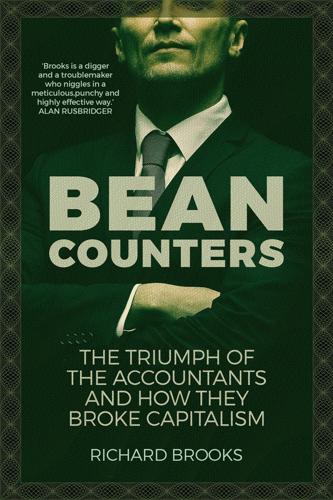
Bean Counters: The Triumph of the Accountants and How They Broke Capitalism
by
Richard Brooks
Published 23 Apr 2018
REFORM CLUB Dramatically higher levels of debt and financial complexity in the age of financial liberalization meant that the bean counters’ shortcomings now posed threats not just to those unfortunate enough to invest in or work for charlatans like Keating, Maxwell and Clowes. They presented more serious economic dangers as well. Along with complicity in the savings-and-loans scandal, deficient auditing also played a big part in the downfall of British bank Johnson Matthey in 1984 – necessitating a Bank of England rescue – and allowed the shadiest financiers of them all, Bank of Credit and Commerce International, to loot and launder with abandon throughout the decade.
…
The absence of effective accounting created a vicious circle in which companies came under pressure to fiddle results in order to keep up with both their competitors’ exaggerated numbers and their own from previous periods. The upshot was that between 1997 and 2000, Levitt wrote in his memoirs, ‘700 [publicly listed] companies would belatedly find flaws in past financial statements and restate their earnings’ (compared to a historic record of around 25 a year).24 Far from learning from the savings-and-loans scandals of a decade earlier, the accountancy firms appeared to have made audit failure all part of the service. They were no longer really accountancy firms, though, either by inclination or income. All of the Big Five were now earning more from advisory services than they were from auditing.25 (They weren’t always doing so honestly, either.
…
Able to present the gas bank as a financial trader rather than an old-fashioned fuel distributor, Skilling persuaded the Securities and Exchange Commission to allow Enron to account for its contracts in the way banks did for their trading books. This ‘mark-to-market’ accounting had become favoured by regulators as a supposed corrective to the savings-and-loans scandal, supposedly to impose the discipline of market values on balance sheets. But it was another tool of deception. As soon as a contract was struck – for example to supply gas for anything up to twenty years – the value of the contract was recorded as income. So if Enron judged that a deal would generate $500m income and cost $400m to fulfil, the contract would instantly generate a profit of $100m.

A First-Class Catastrophe: The Road to Black Monday, the Worst Day in Wall Street History
by
Diana B. Henriques
Published 18 Sep 2017
elections of 1980 of 1984 of 1988 electronic markets Ellis, Hayne endowments Energy Department English, Glenn Environmental Protection Agency (EPA) ESM Government Securities Eurodollars Euromoney Farm Belt farm commodity futures federal budget deficits Federal Bureau of Investigation (FBI) Federal Deposit Insurance Corporation (FDIC) caps on payoffs Continental Illinois and First Chicago and First Options and Glass-Steagall and Isaac resigns Penn Square and S&L crisis and state-chartered banks securities underwriting and Federal Home Loan Bank Board Federal Open Market Committee (FOMC) Federal Register Federal Reserve aftermath of 1987 and bank regulation by Black Monday and Brady Report and Continental Illinois and crisis team and Drysdale default and financial futures and foreign currency markets and Glass-Steagall and Greenspan heads interest rates and Lehman Brothers collapse and Mexican debt crisis and Ohio S&L crisis and Penn Square crisis and President’s Working Group and Silver Thursday and state-chartered banks and securities underwriting and Treasury securities market and unified market and need to harmonize regulations among Chicago, New York, etc.
…
And they would remain true for future financial crises, for decades to come. However, 1988 was an election year. In August, Nick Brady was named by President Reagan as secretary of the treasury after Jim Baker resigned to run his friend George H. W. Bush’s presidential campaign. Soon Brady would be knee-deep in the savings and loan crisis, which gave him little time for the reforms his own commission had recommended. As the stock market gradually and fitfully recovered, any sense of urgency in Congress evaporated. In September 1988, David Ruder’s enforcement staff filed a landmark civil complaint against Drexel Burnham and its star executive, Michael Milken.
…
In the Phillips case, their opposition: Wasserstein, Big Deal, p. 479. the extraordinary gathering in Paul Volcker’s lofty conference room: Monica Langley, “Bank Board Chairman’s Cool Initial Response to Ohio Crisis Linked by Some to GOP Politics,” Wall Street Journal, entered into the record (without a date or page noted), of “Ohio Savings and Loan Crisis and Collapse of ESM Government Securities” (hereafter “Ohio S&L Hearing”), Hearing Before a Subcommittee of the House Committee on Government Operations, 99th Congress, 1st Sess., April 3, 1985, p. 53. The unlikely fuse that triggered this crisis: The description of these events is drawn from the Ohio S&L Hearing’s testimony and supplemental material, pp. 56–58.

Stigum's Money Market, 4E
by
Marcia Stigum
and
Anthony Crescenzi
Published 9 Feb 2007
CHIPS FFB (see Federal Financing Bank) FHCs (see financial holding companies) FHLB (see Federal Home Loan Bank System) FICC (see Fixed Income Clearing Corporation) FICO (see Financing Corporation) Financial Accounting Standards Board (FASB) asset-backed paper loan participations financial futures (see also futures) financial holding companies (FHCs) financial intermediation (see intermediation) financial options (see options) Financial Services Act (FSA) financial stability, Fed Financing Corporation (FICO) S&L crisis financing gap financing use, Treasury fine-tuning quotes, brokers’ market First Report on the Public Credit Fixed Income Clearing Corporation (FICC), Treasury securities float, Fed floating-rate CDs floating-rate MTNs floating-to-floating swaps, money market swaps flower bonds, Treasury securities FOMC (see Federal Open Market Committee) foreign-bank commercial paper foreign bank placements, Eurodollars foreign banks, discount window foreign banks in London Eurodollars regulation foreign banks in U.S., Eurodollars foreign central banks, Fed foreign currency translation risk, BAs foreign-dominated commercial paper foreign exchange, commercial paper foreign-exchange market Fed intervention foreign-exchange risk, banks/banking foreign government bonds, Treasury futures foreign official holdings, Eurodollars foreign series bonds former forward market, federal funds market forward contracts, vs. futures forward forwards forward market, repos forward price, Treasury futures forward rate agreements (FRAs) advantages Eurodollars example features interest-rate expectations interest-rate swaps jargon market money market swaps precise hedge tiering forward transactions GIC FRAs (see forward rate agreements) fraud, dealers Freddie Mac (see Federal Home Loan Mortgage Corporation) free lunch, interest-rate swaps FSA (see Financial Services Act) FSLIC (see Federal Savings and Loan Insurance Corporation) full accrual pricing, Fed functions, money market funding a bank’s assets, domestic treasury funding choices, banks/banking funds flows by sector U.S. capital market funds, money (see money funds) funds rate, fed (see fed funds rate) funds rate targeting, fed funds transfer, Fedwire Funds Transfer Service future dates, immunizing a portfolio futures (see also Treasury futures) arbitrage basics bills futures CFTC clearing function CME commissions contract size counterparty risk day traders delivery electronic trading Eurodollars exchanges expiration dates fed funds futures financial futures vs. forward contracts hedging leverage liquidity margin deposits market makers market participants performance bonds pit trading portfolio diversification portfolios price quotes regulation risk scalpers SPAN speculation tick sizes transparency utility to investors futures markets arbitrage dealers Eurodollars technical analysis futures trading volume, Treasury futures futurity, bonds games, Treasury notes gamma, options gap, financing gap management domestic treasury interest-rate futures swaps GARVEEs (see Grant Anticipation Revenue Vehicles) GCF repos (see general collateral finance repos) general collateral finance (GCF) repos General Motors Acceptance Corporation (GMAC), commercial paper general obligation (GO) bonds general obligation (GO) securities GIC (see guaranteed income contract) Ginnie Mae (see Government National Mortgage Association) Glass-Steagall Act banks/banking global banks, Eurodollars global market, Eurodollars global master repurchase agreement (GMRA), repos global swap books GlobalCash-Europe96 survey, Eurodollars globalization banks/banking communications dealers debt markets investing payments systems trading systems GMAC (see General Motors Acceptance Corporation) GMRA (see global master repurchase agreement) GNMA (see Government National Mortgage Association) go-around, Fed GO (see general obligation securities) GO (general obligation) bonds Government National Mortgage Association (GNMA) pass-through securities REMICs Government Securities Act (1986) Government Securities Division, brokers’ market government-sponsored enterprises (GSEs) growth implicit guarantee Gramm-Leach-Bliley Act banks/banking merchant banks mergers and acquisitions Grant Anticipation Revenue Vehicles (GARVEEs) Greenspan, Alan gross debt, vs. net debt GSEs (see government-sponsored enterprises) guaranteed income contract (GIC), forward transactions haircuts, repos Hamilton, Alexander hawk/dove scale, Fed heading out, federal funds market hedges with basis risk hedging calendar spreads cash-and-carry trade cross hedging curve traders dealers Eurodollars futures hedge ratio hedges with basis risk interest-rate swaps long hedge with no basis risk risk second hedge with no basis risk spreading swap books Treasury Treasury bills Treasury futures zero-coupon approach hedging positions, MTNs HIC (see hold-in-custody repos) history banks/banking BAs ECP Eurodollars Fed federal funds market loans monetarism money market banks Treasury securities hold-in-custody repos (HIC) holding companies Bank Holding Company Act banks/banking IBFs (see International Banking Facilities) IDB (see interdealer brokers) ILCs (see industrial loan corporations) IMM (see International Monetary Market) immunizing a portfolio, future dates implicit guarantee, GSEs indexes, dealers indices Lehman aggregate index Lehman Brothers Global Family of Indices industrial loan corporations (ILCs), banks/banking industrial paper, commercial paper inflation data, trading notes inflation, Fed inflation-indexed securities, Treasury securities information, market sentiment (see market sentiment) information systems, market makers informational calls, discount window inside market, dealers institutional funds, money funds institutions, portfolios insurance, options integration banks/banking Eurodollars interbank placements, Eurodollars interdealer brokers (IDB), Treasury securities Interest Equalization Tax, Eurodollars interest-rate expectations, FRAs interest-rate futures, gap management interest-rate swaps 5-year, fixed-rate asset bank/nonbank dealers banks/banking bells and whistles bogy books brokers convergence trading counterparty risk coupon swaps currency swaps dealer books dealers defining dollar interest-rate-swap market end users Eurodollars exotic FRAs free lunch hedging ISDA jargon market makers master documentation netting offsetting a deposit parallel loans plain vanilla portfolios positive-sum game profit, swap books quanto risk Street-speak trading spreads interest rates auction procedures bonds dealers, predictions Fed FOMC Japan municipal securities (munis) nominal portfolios predictions, dealers real repo rate Treasury securities yield curve ZIRP intermediation banks/banking control Fed matched/mismatched book reasons total financial assets International Banking Act International Banking Facilities (IBFs), Eurodollars International Monetary Market (IMM), IMM swap International Swap Dealers Association (ISDA), interest-rate swaps internationalization, market for Treasuries Internet, electronic trading investing, globalization investors BAs CDs commercial paper corporations, munis ECP Eurobond market Eurodollar CDs loan participations money funds municipal securities (munis) ISDA (see International Swap Dealers Association) Japan deflation ZIRP jargon FRAs interest-rate swaps judgmental approach, Fed junk bonds buyers LBO loans latent investor demand, MTNs LBO loans bear-hug LBOs fears junk bonds legislation (see also regulation) Bank Holding Company Act Bank of England Act Banking Acts Check law Depository Institutions Deregulation and Monetary Control Act Employee Retirement Income Security Act (ERISA) Federal Reserve Act FSA Glass-Steagall Act Government Securities Act (1986) Gramm-Leach-Bliley Act International Banking Act Monetary Control Act (MCA) Riegle-Neal Banking and Branch Efficiency Act Sarbanes-Oxley Act Tax Reform Act Lehman aggregate index Lehman Brothers Global Family of Indices lender of last resort, Eurodollars lenders, Eurodollars lending business banks/banking Eurodollars letter repos portfolios leverage banks/banking futures repos liabilities/assets, corporate finance liability swaps LIBID (see London Interbank Bid Rate) LIBOR (London Interbank Offered Rate) Eurodollars interest-rate swaps lifting a leg, swap books LIMEAN, Eurodollars limits, Eurodollars LIONS (investment opportunity notes) liquidity commercial paper Eurodollars futures loan participations reverse market Treasury futures liquidity effect, federal funds market liquidity enhancements, commercial paper liquidity portfolios liquidity risk, BAs loan participations FASB investors LBO loans liquidity mechanics motivations sales volume short-term, high quality loans loans (see also distribution) asset-backed paper back-to-back banks/banking bullet commercial paper, backstop lines discount window distribution domestic treasury Eurodollars floating vs. fixed rate history ILCs junk bonds LBO loans loan participations parallel loans securitization short-term, high quality syndicated loans Treasury LOC (letter of credit) paper locked market, Eurodollars London Interbank Bid Rate (LIBID), Eurodollars London preeminence, Eurodollars long hedge with no basis risk long-term rates, yield curve M&A (see mergers and acquisitions) M1 Game, Fed MCA (see Monetary Control Act) Macaulay’s duration major players, Eurodollars margin deposits, futures market intelligence, Treasury futures market liquidity, commercial paper market makers analytics systems Bloomberg Professional system clearing banks communications dealers dealers as futures information systems interest-rate swaps MTNs trading systems market participants, futures market sentiment duration money funds Treasury futures marketable Treasury securities marking to market, portfolios master documentation, interest-rate swaps master notes, commercial paper master repo agreements, defining master repurchase agreement (MRA), defining matched/mismatched book covering shorts Eurodollars facilitation device Fed statistics financial intermediaries financing the dealer’s position functions generating borrowed funds growth mismatching the book, banks profit repos reverses trading collateral matched-sale purchases (MSPs) Fed repos maturities BAs CDs MTNs maturity choice dealers domestic treasury portfolios maturity distribution, BAs maturity of securities purchased, portfolios MBS (see mortgage-backed securities) medium-term money banks/banking Eurodollars medium-term notes (MTNs) 30/360 vs. actual/360 hurdle bank deposit notes bank notes banks/banking beginnings bells and whistles commercial paper vs. corporate bonds dealers Euro MTNs floating-rate MTNs growth, market hedging positions latent borrower demand latent investor demand market makers maturities Merrill money market swaps new-issue market new issues privately placed paper product rating secondary market shelf registration yields merchant banks Eurodollars Gramm-Leach-Bliley Act syndicated loans mergers and acquisitions (M&A) corporate finance Gramm-Leach-Bliley Act Merrill CMA money funds MTNs middleware trading platforms, electronic trading mismatch strategies banks/banking Eurodollars mismatching the book (see also matched/mismatched book) banks/banking MMDAs (see money market deposit accounts) monetarism downside Fed history pitfalls monetarist experiment, Fed Monetary Control Act (MCA) Fed monetary policy Fed implementing transmission effects Monetary Policy Report to Congress, Fed money center banks money creation money, defining money funds accounting procedures assets bank trust departments banks/banking central-asset accounts CMA consumers’uses demand notes flavors growth hot money institutional funds investing in investors management fee managing market sentiment Merrill money supply municipal securities (munis) penny-rounded fund portfolios raison d’être rising rates safety of principal STIFs strategies STRIPS tax-exempt taxable-fund portfolios VRDO withdrawing funds yields money market characteristics features functions overview scope money market banks (see also banks) history money market deposit accounts (MMDAs), Fed money market funds (see money funds) money market swaps arbitrage basis swaps classic deposit notes floating-to-floating swaps FRAs IMM swap MTNs speculative vehicle swapping spreads money supply control defining Fed fed funds rate federal funds market money funds mortgage-backed, pass-through securities mortgage-backed securities (MBS) MRA (see master repurchase agreement) MSPs (see matched-sale purchases) MTNs (see medium-term notes) multicurrency commercial paper municipal bond insurance, municipal securities (munis) municipal commercial paper municipal notes [see municipal securities (munis)] municipal securities (munis) BANs book entry brokers characteristics competitively bid deals corporations investors credit enhancements credit risk credit spreads dealers disclosure equivalent taxable yield GARVEEs GOs interest rates investors issuance market technicals money funds municipal bond insurance negotiated deals new-issue market price volatility RANs ratings real-time reporting revenue securities risk RTRS secondary market TANs tax reform Tax Reform Act taxable yield taxation TRANs types VRDO WI trading yearly issuance yield yield, taxable naked trading, dealers negative-sum game, portfolios negative value basis, Treasury futures negotiable order of withdrawal (NOW) accounts, Fed net debt, vs. gross debt net financial investment, by sector net interest margin, banks/banking net repo financing netting, interest-rate swaps new-issue market CDs MTNs municipal securities (munis) new issues, MTNs NIFs (see note issuance facilities) NOB (notes over bonds) trade, Treasury futures nominal interest rates, Fed nonborrowed-reserves procedure, Fed nonmarketable Treasury securities nonmember banks, discount window note issuance facilities (NIFs), ECP notes [see also medium-term notes; municipal securities (munis)] bank notes deposit notes trading notes Treasury notes Treasury securities NOW accounts (see negotiable order of withdrawal accounts) off–balance sheet items banks/banking Eurodollars off-the-run issues, Treasury notes oil dollars OPEC, Eurodollars open interest, Treasury futures open market operations (see also Federal Open Market Committee) Fed open repos open reverses, reverse market opening, brokers’ market operation twist, Fed opportunity cost portfolios risk options Black-Scholes model call options combining delta gamma insurance portfolios price of underlying asset prices put-call parity put options replication rho risk-free-rate speculation strike price theta time to maturity trading uses value valuing vega volatility zero-sum game options trading volume, Treasury futures out trades brokers’ market risk over-the-counter derivatives markets, global turnover over-the-counter foreign exchange derivatives markets, swaps market overnight money, federal funds market overnight rates, Eurodollars overnight repo rate overview, money market own-name dealer paper, commercial paper pace/professionalism brokers Eurodollars packs, Eurodollars par bonds parallel loans, interest-rate swaps pass-through securities Fannie Maes Freddie Mac GNMA mortgage-backed private passes, Fed payments systems (see also communications) globalization penny-rounded fund, money funds pension funds debt absorption ERISA Treasury performance bonds, futures performance tracking, portfolios petrodollars, Eurodollars Phillips curve, Fed pit trading, futures plain vanilla swaps defining policy anticipation hypothesis, yield curve policy, monetary (see monetary policy) policy statements Fed federal funds market political pressures, Fed portfolio diversification, futures portfolio managers, dealers portfolios accounting hang-up arbitrage asymmetric positions, investor/issuer banks/banking big shooters break-even reverse rate compounding computer programs contrarian view credit risk dedicated domestic treasury extension swaps Fed futures institutions interest-rate swaps interest rates letter repos liquidity managing marking to market maturity choice maturity of securities purchased money funds negative-sum game opportunity cost options parameters performance tracking relative value repos restrictive guidelines reverses to maturity riding the yield curve risk short-term shorting securities small software stability of return strategies Street’s view term repos time horizon tracking performance trends unified World Bank yield curve yield spreads position limits, dealers position profits, dealers positioning, dealers positive-sum game, interest-rate swaps positive value basis, Treasury futures predictive power, yield curve preexport, BAs premium bonds prepayment BAs commercial paper present value, bonds price auctions, Treasury price fluctuations, bonds price quotes bonds futures price risk bonds dealers price sensitivity, duration price value of an 01, duration price volatility bonds municipal securities (munis) prices, options primary dealers Fed Treasury notes Treasury securities prime demise, corporate finance principal amount, Treasury futures principal investments, dealers principals, dealers private pass-throughs profit banks/banking matched/mismatched book position profits swap books Treasury notes profit sources, dealers proprietary products, dealers protocols, bill market put-call parity, options put options quanto interest-rate swaps quotes and maturities, Eurodollars quotes to retail, bill market quoting the market, brokers’ market raison d’être, Fed RANs (see Revenue Anticipation Notes) rate lid on bonds, Treasury rate risk, corporate finance rating tiering, commercial paper ratings commercial paper municipal securities (munis) REA series bonds (see Rural Electrification Administration series bonds) real estate mortgage investment conduits (REMICs), GNMA real interest rates real market bill market brokers’ market real-time reporting, municipal securities (munis) Real-Time Transaction Reporting System (RTRS), municipal securities (munis) real yields factors affecting trading notes rebooking, federal funds market recession probabilities, yield curve REFCorp (see Resolution Funding Corporation) refunding provisions, bonds regularization of debt, Treasury regulated securities, vs. exempt securities regulation (see also deregulation; legislation) Bank of England banks/banking Eurodollars foreign banks in London futures Regulation Q, Eurodollars regulatory purposes, Treasury regulatory reforms, repos relative value dealers portfolios REMICs (see real estate mortgage investment conduits) replication, options repos (see also reverses) brokering collateralized loan continuing contract credit risk dealer leverage dealer safekeeping dealers defining definitions domestic treasury Fed open market operations Fed statistics Fed use forward market full accrual pricing GCF repos GMRA Government Securities Act (1986) haircuts HIC letter repos margin market market decisions market growth master repo agreements matched/mismatched book MRA MSPs net repo financing open market operations open repos overnight repo rate portfolios regulatory reforms repo market repo rate repo rate, overnight reverse in reverse market right of substitution SEC term repos tri-party repos yield curve repurchase agreements (see repos) reputation risk, BAs reserve adjustments, federal funds market reserve requirements contemporaneous reserve accounting Fed reserves available to support private deposits (RPDs), Fed reserves-oriented operating procedure, Fed Resolution Funding Corporation (REFCorp) S&L crisis restrictive guidelines, portfolios Revenue Anticipation Notes (RANs) revenue bonds revenue securities, municipal securities (munis) reverse in dealers repos reverses (see also repos) borrowers brokering brokers dealers defining discount window Fed statistics Fed use Government Securities Act (1986) liquidity matched/mismatched book open reverses reverse market reverse rate risk SEC special collateral repo market specific issues market term reverses reverses to maturity portfolios reversing in securities, vs. borrowing securities revolving underwriting facilities (RUFs), ECP rho, options riding the yield curve, portfolios Riegle-Neal Banking and Branch Efficiency Act right of substitution, repos risk accounting hang-up arbitrage banks/banking BAs bonds brokers brokers’ market commercial paper communications counterparty risk country risk credit risk, BAs credit risk, municipal securities (munis) credit risk, portfolios credit risk, repos dealers Eurodollars foreign-exchange risk futures hedging interest-rate swaps municipal securities (munis) opportunity cost out trades portfolios price risk rate risk, corporate finance reverse market sovereign risk SPAN tails risk analysis, bonds risk-free rate, options risk premium, yield curve role, Fed roll-down, bonds round robin, fails RP agreements (see repos) RPDs (see reserves available to support private deposits) RTRS (see Real-Time Transaction Reporting System) RUFs (see revolving underwriting facilities) Rural Electrification Administration (REA) series bonds Russia, Eurodollars S&L crisis (see savings and loan crisis) sale-repurchase agreement, defining sales force, dealers Sallie Mae (see Student Loan Marketing Association) Sarbanes-Oxley Act, banks/banking Saturday Night Special savings and loan (S&L) crisis, federal agencies savings bonds debt absorption savings deposits, domestic treasury scalpers, futures scope, money market screens, brokers’ seasonal credit, discount window seasoning, Treasury notes SEC (see Securities and Exchange Commission) second hedge with no basis risk secondary market commercial paper dealers MTNs municipal securities (munis) Treasury securities securities governments vs. corporates maturity choice portfolios security choice taxable bond portfolios Securities and Exchange Commission (SEC) commercial paper repos/reverses Treasury securities Securities Industry Association (SIA), banks/banking Securities Investment Board (SIB) securitization banks/banking deregulation loans security choice, domestic treasury sentiment, market (see market sentiment) Separate Trading of Registered Interest and Principal Securities (STRIPS) arbitrage market STRIPS outstanding trading Treasury securities servicing customers, dealers settlement date, discount window settlement, Treasury securities settlement Wednesday, federal funds market short coupons, Treasury notes Short-Term European Paper (STEP), European commercial paper short-term, high-quality loans short-term investment funds (STIFs), money funds short-term investment pools (STIPs), money funds short-term portfolios short-term rates, Eurodollars shorting, dealers shorting securities, portfolios SIA (see Securities Industry Association) SIB (see Securities Investment Board) SLUGS (see State and Local Government Series) small portfolios Society for Worldwide Interbank Financial Telecommunications (SWIFT), Eurodollars soft arbitrage software, portfolios SOMA (see system open market account) sovereign borrowers, commercial paper sovereign risk SPAN (see standard portfolio analysis of risk) special collateral repo market, reverses specific issues market, reverses speculation dealers futures options Treasury speculative-grade bonds speculative vehicle, money market swaps spread products, Fed spreading, hedging spreads, bonds stability of return, portfolios standard portfolio analysis of risk (SPAN), futures State and Local Government Series (SLUGS) debt absorption Treasury securities STEP (see Short-Term European Paper) STIFs (see short-term investment funds) STIPs (see short-term investment pools) strategies money funds portfolios Street-speak, interest-rate swaps Street’s view, portfolios strike price, options STRIPS (see Separate Trading of Registered Interest and Principal Securities) strips, Treasury Student Loan Marketing Association (Sallie Mae) subscription issues, Treasury supply, money (see money supply) swap books assignment brokering global hedging lifting a leg profit swaps (see also interest-rate swaps; money market swaps) arbitrage cross-currency swaps dollars into yen Eurodollars gap management mechanics swapping yen into dollars swaps curve Eurodollars swaps market CDSs over-the-counter foreign exchange derivatives markets sizing up swaptions SWIFT (see Society for Worldwide Interbank Financial Telecommunications) syndicated loans ECP Eurodollars fees mechanics merchant banks system open market account (SOMA), Fed T-accounts, Eurodollars T-bills TAAPS (see Treasury Automated Auction Processing System) TABs (see tax anticipation bills) tail management, dealers tails dealers risk TANs (see Tax Anticipation Notes) targets, Fed Tax and Revenue Anticipation Notes (TRANs) tax anticipation bills (TABs), Treasury Tax Anticipation Notes (TANs) tax-exempt commercial paper tax-exempt money funds Tax Reform Act, municipal securities (munis) tax reform, municipal securities (munis) taxable bond portfolios, domestic treasury taxable-fund portfolios, money funds taxation, municipal securities (munis) team, trading technical analysis dealers futures markets technical arbitrage TED spread (see Treasury versus Eurodollar spread) Tennessee Valley Authority (TVA) term fed funds, federal funds market term repos arbitrage portfolios term reverses, reverse market term structure of interest rates, duration terminology, Eurodollars theta, options thrift CDs thrifts, discount window tiering across borders BAs CDs Eurodollars FRAs TIGRS (Treasury income growth receipts) time-deposit market, Eurodollars time deposits time drafts time horizon, portfolios time to maturity, options TIPS (see Treasury Inflation-Protected Securities) tolerance ranges, Fed top U.S. banks tracking performance, portfolios traders, dealers trading (see also electronic trading) banks/banking chain dealers team trading hours, Eurodollars trading notes announcements complexity data inflation data real yields trading options trading spreads, interest-rate swaps trading systems communications globalization market makers trading the sheet, brokers’ market TRANs (see Tax and Revenue Anticipation Notes) transaction risk, BAs transitory arbitrage transmission effects Fed monetary policy transparency futures Treasury Treasury bill auctions bill strips cash management bills debt absorption debt management, historical debt management, today debt regularization economic uses exchange offerings financing use hedging loans pension funds price auctions rate lid on bonds regularization of debt regulatory purposes speculation strips subscription issues TABs transparency yield auctions Treasury Automated Auction Processing System (TAAPS), Treasury securities Treasury balances, Fed Treasury bills hedging Treasury futures accrued interest basis basis trading bond basis calendar spreads carry carry-adjusted basis cheapest to deliver contract convergence conversion factor COT report deliverable grades delivery factor delivery options delivery period delivery provisions factor bias foreign government bonds forward price futures trading volume hedging invoice price invoicing principal liquidity market intelligence market sentiment NOB trade open interest options trading volume principal amount switch option timely deliveries TUT spread value basis yield-enhancement trade Treasury income growth receipts (TIGRS) Treasury Inflation-Protected Securities (TIPS) Treasury notes brokers current issues dealers games notes vs. notes off-the-run issues primary dealers profit seasoning short coupons trading notes trading with retail WI trading Treasury securities active market attraction to investors auction procedures benchmark status bidding systems bill auctions bills bond market bonds book-entry securities brokers debt absorption Dutch auctions ECN electronic trading expansion FICC flower bonds history IDB inflation-indexed securities interest rates marketable nonmarketable notes ownership primary dealers SEC secondary market settlement SLUGS STRIPS summary TAAPS TIPS trading volume types vs.
…
In particular, during the post–World War II period, as loan demand surged and banks strove for continued earnings growth, bank capital ratios declined substantially. The trend lasted until the early 1990s following the savings and loan crisis before improving. Since then, however, bank capital has increased to levels that regulators consider healthy. Figure 6.18 shows the relatively stable condition of bank capital that existed between 1990 and 2005. As the chart shows, capital levels increased sharply in the early 1990s, reflecting both the end of the savings and loan crisis and the effects of Basel I, which imposed higher capital standards on the banking industry. Since then, capital levels have moved largely sideways.
…
Variable-rate CDs represented about 10% of outstanding large CDs during the 1980s. That number had shrunk to only about 2% of outstanding large CDs by the early 1990s, when interest-rate levels had begun to decline and investors were no longer seeking the inflation protection they once did.2 In addition, the weak banking system evident in the savings and loan crisis at that time probably turned some investors away from bank products. Discount CDs Negotiable discount CDs are issued at a discount to their final maturity value, just like T-bills. They are issued mostly by large money center banks directly to their customers with terms of as long as five years, but usually between one and six months.
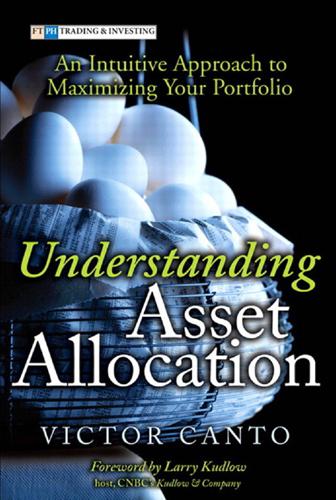
Understanding Asset Allocation: An Intuitive Approach to Maximizing Your Portfolio
by
Victor A. Canto
Published 2 Jan 2005
See empirical method Reagan, Ronald, 55, 73-74, 76-77, 83, 90, 95 real GDP growth rate, 95-100 real interest rates, equity/fixed-income cycles and, 53-54 real rates-of-return, 190-192 regional companies, 190 regional factor, 191 regional stock indices, location effect and, 198-202 regulatory fixed costs, 184-185 residual risk, 3 Resolution Trust Corporation, 76 retirement planning, asset allocation and, 3-4 return-delivery vehicles, tax-rate changes and, 69-70 capital gains, 76-79 debt financing, 73-76 incentive structure effects, 70-73, 80-84 reward-to-risk ratio (hedge funds), 228-230 risk, systematic risk, 113 risk measurement, 2-3, 19-21. See also Sharpe ratio market allocations, 113 reward-to-risk ratio (hedge funds), 228-230 S S&L (Savings and Loan) crisis, 76 S&P (Standards and Poor), 77 S&P 500 index cap-weighted index, 176, 242-245 constraints of, 165 equal-weighted index, 176, 242-245 S&P/BARRA indices, 21 SAA. See strategic asset allocation sample period length of, 285n reasons for choosing, 284n sample-selection bias, 27, 30, 40 Samuelson, Paul, 211 Savings and Loan (S&L) crisis, 76 self-reporting bias, 228 Sharpe ratio, 2-3, 21 for benchmark portfolio, 114 for equal- and cap-weighted portfolios, 179 location portfolios, 61-63 location-based asset allocation, 35 size-based asset allocation, 32, 123 style-based asset allocation, 28, 121 T-bond/equity portfolios, 38, 119 Sharpe, William, 57 Siegel, Jeremy (Stocks for the Long Run), 25 single asset buy-and-hold, 12-13 Sinquefield, Rex A., 164-165, 169 size cycles, 54-55 active versus passive management during, 170-172, 175, 271-272 combining active and passive management, 180-182 equal-weighted versus cap-weighted indexes, 175-180 hedge funds and, 235-239 market breadth and, 168-170, 237-238 in value-timing strategy, 243-250 size-based asset allocation cyclical asset allocation and, 31-32, 123 optimal mixes, 23-24 small-cap stocks active management tested against passive management, 166-168 annual returns, 19 elasticity, 184, 187-189 location effect and, 193-198, 202-204, 213, 273-274 optimal mix with large-cap stocks, 23-24, 31-32, 123 performance of, 16, 41 regulatory fixed costs, 184-185 risk measurement, 20 size cycles, 54-55 active versus passive management during, 170-172, 175, 271-272 Index 313 equal-weighted versus cap-weighted indexes, 175-180 and market breadth, 168-170, 237-238 in value-timing strategy, 243-250 Smith, Adam, 169 stagflation, 99 Standards and Poor (S&P), 77 stock indices, constructing, xx-xxi, 272-273 Stocks for the Long Run (Siegel), 25 strategic asset allocation (SAA), xx, 13 active versus passive management, 252-255 as benchmark, 104 historical allocations, 104-108, 113-115 lifecycle allocations, 115-116 market allocations, 108-115, 266-269 cyclical asset allocation (CAA) versus, 59-65, 141-142 optimal mixes, 21-26 style cycles, 55-57 style differences, value versus growth stocks, 272-273 style-based asset allocation, 18 cyclical asset allocation and, 26-30, 121 optimal mixes, 22-23 supply shifts, 217-224 supply-and-demand analysis.
…
Milken went to jail, and his firm (Drexel Burnham Lambert) went under. Yet, the tax code in the scandal’s wake left the debtadvantage unchanged. So, the debt slowdown during this period was not because the demand subsided. Rather, it was because the financing dried out with the advent of the Savings and Loan (S&L) crisis and Congress’s creation of the Resolution Trust Corporation, which was charged with cleaning up the S&L mess. During the Resolution Trust years, the net debt flow became negative. In stylized fashion, the S&L insurance and regulations created a one-sided bet that was a recipe for disaster. The depositors did not worry too much as long as their deposits were insured.
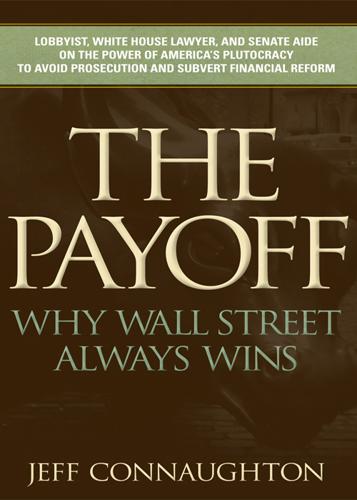
The Payoff
by
Jeff Connaughton
She assured the committee that the department understood, as the attorney general had said, that it “must reinvigorate” its capacity to investigate financial fraud. Leahy elicited an important comparison from Deputy Director Pistole. After the S&L crisis, the FBI had had 1,000 agents and analysts working on twenty-seven strike forces to target criminal activity. At the time of this hearing, Pistole said, the FBI had only 240 agents targeting financial fraud. And the fraud potentially involved in the current financial crisis, Pistole said, “dwarfs” that of the S&L crisis. Pistole also reminded the committee that the FBI had warned Congress several years ago about the increase in mortgage fraud. Pistole quoted the testimony in 2004 of former FBI Assistant Director Chris Swecker before the House Financial Services Sub-Committee: If fraudulent practices become systemic within the mortgage industry and mortgage fraud is allowed to become unrestrained, it will ultimately place financial institutions at risk and have adverse effects on the stock market.
…
Leahy motioned for Ted to sit next to him, so I walked over and grabbed the nameplate and brought it over before taking my seat along the wall, just behind my new boss. Chairman Leahy, as a courtesy, let Senator Grassley speak first. Leahy, a former prosecutor himself, went next. He recalled the Savings and Loan crisis of the 1980s and early 1990s and how the Judiciary Committee had helped to “rebuild the Department of Justice’s ability to enforce fraud laws” after that national fiasco. As for the current financial crisis, Leahy believed that lax supervision in the mortgage industry had created an atmosphere of “Hey, come on in, fraud is welcome,” and that “Wall Street financiers” had contributed to the disaster.
…
Pistole quoted the testimony in 2004 of former FBI Assistant Director Chris Swecker before the House Financial Services Sub-Committee: If fraudulent practices become systemic within the mortgage industry and mortgage fraud is allowed to become unrestrained, it will ultimately place financial institutions at risk and have adverse effects on the stock market. What’s transpired since then, Pistole said, has been far worse than Swecker had predicted. What had happened in fraud law enforcement since the S&L crisis and since Swecker’s prediction in 2004? Not only did the FBI have far fewer agents working on financial fraud, but, in the run-up to the disaster, the law enforcement and regulatory system had failed to heed clear FBI warnings that mortgage fraud could become epidemic. When it was his turn to question, Kaufman stated the obvious: “Clearly there are not enough agents.”
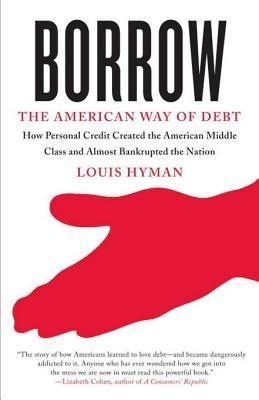
Borrow: The American Way of Debt
by
Louis Hyman
Published 24 Jan 2012
S&Ls could get the capital they needed from small-time savers—but only through the bond markets. To compete with other investments, S&Ls had to either sell off their mortgages or, in the case of the many hucksters, engage in such absurdly risky lending that they became more Las Vegas than Wall Street, which eventually led to the S&L crisis. The narrative of the S&L crisis that most Americans who lived through it remember is one of outrageous fraud by bank managers. It crushed many small depositors’ savings. Though I was a child in Baltimore in the 1980s, I can still clearly remember seeing family friends lined up in the parking lot outside the Old Court Savings and Loan—one of the most notorious examples of bank managers run amok.
…
If S&Ls bought mortgages, they were just like any other anonymous bondholder—nothing special. The real S&L crisis was not a few deregulated hucksters but the complete shift of Americans’ savings from banks to markets. Mortgage and finance companies could just as easily originate mortgages—and many did. In 1984, the same Salomon Brothers that had packaged mortgages for S&Ls and commercial banks sold $100 million in mortgage-backed securities from American Southwest Finance Company. The same secondary mortgage market that saved S&Ls also killed them—at least as they were traditionally run. The S&L crisis showed, ultimately, that S&Ls might no longer be needed.
…
Like many other banks, it lent low during the prosperity—and felt the sting as interest rates rose. By 1981, on average, it had to pay 11.4 percent to its depositors while only getting 10 percent from its mortgages—losing 1.4 percent! It hadn’t lost money since 1893, yet now it was bleeding dry. The resolution of this defect would bring about the savings and loan crisis of the 1980s and solidify securitization as the true foundation of American borrowing. According to the president of Freddie Mac, Kenneth Thygerson, the S&Ls’ share of new mortgages fell from 60 percent in 1976 to 42 percent in 1982.60 Without access to cheap capital to lend, S&Ls were collapsing, and Freddie Mac was the only way to save them.

A Generation of Sociopaths: How the Baby Boomers Betrayed America
by
Bruce Cannon Gibney
Published 7 Mar 2017
The private sector, as its proponents trumpet (and in a different context, I’m a fan of the private sector), is an engine for innovation, though under the Boomers inventiveness slid quickly into fraud, helped in substantial part by a sustained deregulatory push. Again, warnings abounded. The first wave of financial deregulation in the late 1970s helped precipitate the savings and loan crisis in the succeeding years. The S&L crisis was not primarily the fault of the Boomers, though some Boomers were involved, like Neil Bush, the red dwarf in the ever-dimming Bush galaxy.* The S&Ls, which had just a few years earlier begged for relief from government oppression, were forced to go back to DC and plead for bailouts.
…
Briefly a presidential candidate, Fiorina glossed over the price shareholders paid for her bad decisions, perhaps remembering only the handsome payout she received on being fired. That was not Fiorina’s only scandal at HP; there were also the iffy sales of equipment to an embargoed Iran during her tenure, though perhaps that counts as a “foreign policy credential.”12 Irregular Regulation The S&L crisis had been created, in part, by the loosening of regulatory strictures. Even as the hangover from the S&L crisis lingered until the mid-1990s, the Boomer neoliberal machine and its selective memory were busily forgetting the follies of the past while remembering the lessons that mattered. By the 1990s, Congress was firmly in the hands of the Boomers and could be counted on for two things: (1) watering down regulations, and (2) providing bailouts should anything go wrong.
…
It would be convenient, perhaps even comforting, to dismiss financial impropriety under the Boomers as just the product of a few bad actors in a perpetually disreputable industry. The evidence does not fully admit such consolations. For decades after World War II, personal probity and a new regulatory framework produced a calmer and more honest system. With the exception of the Savings and Loan crisis (in which some Boomers participated), bubbles and scandals were comparatively few and small. As the Boomers took greater control of both the public and private sectors, financial scandals grew to a scale never before seen and we now live in an era of permanent financial emergency. It was not just the work of isolated bankers or sloppy regulators.
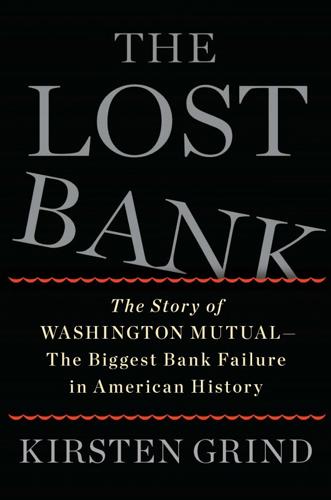
The Lost Bank: The Story of Washington Mutual-The Biggest Bank Failure in American History
by
Kirsten Grind
Published 11 Jun 2012
While the FDIC suffered from feelings of inadequacy in comparison with other agencies, the OTS’s ranking was even more diminutive. The agency was relatively new, formed as a result of the Savings and Loan Crisis in 1989. Before the crisis, a three-person Federal Home Loan Bank Board oversaw savings and loan banks and the country’s home loan bank system. “That was a very powerful agency when it was set up that way,” said the former regulator. New financial reform, passed as a result of the Savings and Loan Crisis, created the OTS. It was the smallest of the four regulatory agencies, overseeing about 850 banks, and was always considered the weaker of the banking regulators.
…
Over the preceding weeks, Ada and Luis, himself a former banker, had followed the news about WaMu. Much of the time it was hard to piece together what was going on. It seemed like a lot of bad news—the stock price kept falling, and now the company was up for sale?—but the Osorios continued to have faith. WaMu had survived both the Savings and Loan Crisis and the Great Depression, after all. Less than six months earlier, the bank had landed $7.2 billion in private equity from TPG, a group of seasoned investors. WaMu would pull through. Ada stood in front of the TV, pictures of her family hanging on the walls. On CNBC, anchor David Faber, speaking with urgency, updated an earlier story: “JPMorgan is going to be buying more than just the deposit base of Washington Mutual.
…
This time banks were failing by the hundreds because of an energy downturn in oil states like Texas and Oklahoma, a commercial real estate bust in California and the Northeast, and an agricultural recession rippling through the midwestern states. In each region, banks had made loans that soured because of their region’s respective downturn. Bank failures would surge to more than 1,000 during the Savings and Loan Crisis, the highest number since Pepper’s sister saw her college funds evaporate. One of the banks that failed early on was Continental Illinois National Bank and Trust Co., the largest financial institution in Chicago and one of the ten largest nationwide. “The Continental” had grown in the 1970s after its management team set an ambitious goal: to become one of the largest commercial real estate lenders in the United States.

In FED We Trust: Ben Bernanke's War on the Great Panic
by
David Wessel
Published 3 Aug 2009
Ben Bernanke soon would discover what happens when the music stops, but he had good reason to believe that his team had the experience, smarts, and tools to manage the situation. Chapter 6 THE FOUR MUSKETEERS: BERNANKE’S BRAIN TRUST By the summer of 2007, the Fed was stocked with veterans of market crises: the stock market crash of 1987, the savings and loan scandal of the late 1980s and early 1990s, the commercial banking and real estate woes of the early 1990s, the Asian financial crisis of the late 1990s, the bursting of the tech-stock bubble in 2000, and the September 11 terrorist attacks. The conventional wisdom was that crises were unavoidable despite all the best efforts at prevention.
…
COMPARES IT TO TWEED DAYS Cites Architects’ and Engineers’ Fees of $1,106,000 — Suggests Gov. Strong’s Resignation” New York Times, December 17, 1921, 25. http://query.nytimes.com/gst/abstract.html?res=9C02E2DA113EEE3ABC4F52DFB467838A639EDE 10 “Everyone out there knew” Interview, Henry Paulson. 13 Between 1986 and 1995: Timothy Curry and Lynn Shibut, “The Cost of the Savings and Loan Crisis: Truth and Consequences,” FDIC Banking Review, December 2000. http://www.fdic.gov/bank/analytical/banking/2000dec/ brv13n2_2.pdf and http://www.fdic.gov/bank/analytical/ banking/2000dec/brv13n2_2.pdf 15 “U.S. Helps Lehman” David Cho, Heather Landy, and Neil Irwin, “U.S. Helps Lehman Go Up for Sale; Regulators Are Seeking a Weekend Deal Not Involving Public Money,” Washington Post, September 12, 2008, A1. 15 “For market discipline” Henry Paulson, “Remarks on the U.S., the World Economy and Markets before the Chatham House,” London, July 2, 2008. http://treas.gov/press/releases/hp1064.htm 18 “If we’re going to do” Susanne Craig, Jeffrey McCracken, Aaron Lucchetti, and Kate Kelly, “The Weekend That Wall Street Died — Ties That Long United Strongest Firms Unraveled as Lehman Sank Toward Failure,” Wall Street Journal, December 29, 2008, A1. 18 Thain tried: Bank of America Corp, Form DEFM14A, November 3, 2008. 19 “We are not going” Interviews, Treasury staff. 20 Barclays later bought: http://www.barcap.com/ static/BarCap/Press%20office/Attached%20Document/ Lehman_Press_Release_170908.pdf _acquisition.pdf 22 “I never once considered” Transcript at http://georgewbush-whitehouse.archives.gov/ news/releases/2008/09/20080915-8.html 23 Paulson said months later: Interview, Henry Paulson. 23 “In the case of Lehman Brothers” House Financial Services Committee, hearing, September 24, 2008. 23 “Everything fell apart” Alan Blinder, “Six Errors on the Path to the Financial Crisis,” New York Times, January 25, 2009. http://www.nytimes.com/2009/01/25/business/ economy/25view.html?
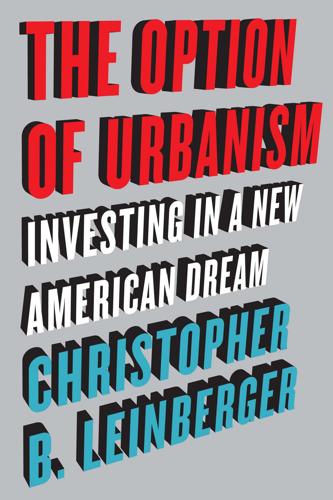
The Option of Urbanism: Investing in a New American Dream
by
Christopher B. Leinberger
Published 15 Nov 2008
The result was the collapse of 1,043 S&Ls (one-third of the total), many commercial banks, and a financial hit taken by many real estate institutional investors, including many insurance companies. The entire U.S. banking system was put in jeopardy, so much so that the federal government was forced to take drastic action. As a retrospective Federal Deposit Insurance Corporation (FDIC)–issued study stated, the S&L crisis was “the greatest collapse of US financial institutions since the 1930s.”2 The S&L financial crisis was the defining moment of the past half century for the U.S. real estate industry. This crisis affected the financing of this huge segment of the economy, the budget stability of the federal government, and the overall economic performance of the nation.
…
This was in spite of a Presidential Executive Order by Carter, which was later reissued by Clinton, that encouraged agencies to locate downtown. CHAPTER 3 1. The Hoyt Group, “Real Estate Capital Flows Research Program,” http:// www.hoyt.org/capital_flows/index.html. 2. Timothy Curry and Lynn Shibut, “The Cost of the Savings and Loan Crisis,” FDIC Banking Review, 2002 http://www.fdic.gov/bank/analytical/ banking/2000dec/brv13n2_2.pdf. 3. Ibid. 4. See the U.S. Department of Transportation, Federal Highway Administration, “TEA-21—Transportation Equity Act for the 21st Century,” http://www.fhwa.dot.gov/tea21/suminves.htm#fl. 5.
…
HT384.U5L45 2008 307.760973—dc22 2007026186 Printed on recycled, acid-free paper Manufactured in the United States of America 10 9 8 7 6 5 4 3 2 1 Search terms: urban, suburban, sprawl, auto-dependent, real estate product development types, transportation, Futurama, affordable housing, inclusionary zoning, impact fees, New Urbanism, transit-oriented development, American Dream, S&L crisis, walkable urbanism, drivable sub-urbanism, global warming, carbon load, obesity, asthma, favored quarter, metropolitan, regionalism, urbanization, population growth, REIT For Helen, Lisa, and Tom Also for Bob, Gadi, Joe, Pat, and Robert C ONTENTS Preface | ix INTRODUCTION 1 FUTU RAMA | AND THE 1 2 0 TH- C E N T U RY AMERICAN DREAM | 12 2 TH E R I S E 3 T H E S TA N D A R D R E A L E S TAT E OF D R I VA B L E S U B - U R B I A | P R O D U C T TY P E S : W H Y E V E R Y P L A C E LO O K S L I K E EV E RY PL AC E EL S E 4 CONSEQUENCES OF D R I VA B L E SUB - URBAN GROW TH 5 63 TH E M A R K E T R E D I S C OV E R S WA L K A B L E U R B A N I S M 6 | | 86 D E F I N I N G WA L K A B L E U R B A N I S M : WH Y M O R E IS BETTER | 113 vii | 45 31 viii | CONTENTS 7 UNINTENDED CONSEQUENCES WA L K A B L E U R B A N I S M 8 ACH I EVI NG LEVELING THE THE | OF 13 8 NEX T AMERICAN DREAM : P L AY I N G F I E L D AND I M P L E M E N T I N G WA L K A B L E U R B A N I S M N OT ES INDEX | | 177 2 01 | 15 0 P REFACE When I was a young child my mother took me to Center City, Philadelphia from our inner-suburban home to visit my father in his office and to go shopping.
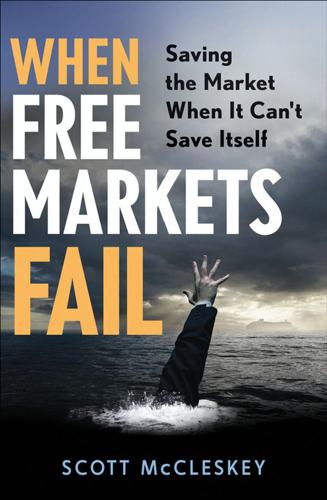
When Free Markets Fail: Saving the Market When It Can't Save Itself (Wiley Corporate F&A)
by
Scott McCleskey
Published 10 Mar 2011
The prudent thing for a company treasurer to do in such a situation is to start pulling the company’s money out of money market funds at least until the situation becomes clear. Indeed, by the end of the week more than $200 billion had been withdrawn from money market C01 06/16/2010 11:13:51 Page 9 The Case for Government Intervention & 9 funds—some $40 billion more than the estimated cost of the entire savings and loan crisis.4 If enough companies pull out of a fund, it has to sell its holdings in order to pay cash to the customers pulling their funds out, and this could create a downward spiral on the assets of that fund (causing it to break the buck). This can also cause a run on the assets being sold by the failing fund into the market, and this in turn could cause the panic to spread to other funds holding the assets being dumped into the market at ever lower prices.
…
It used to be said that no actor was more than six degrees of separation from Kevin Bacon, but in the markets today it is likely that no firm is more than two or three degrees of separation away from any other firm. As a result, failure does not move linearly like a set of dominoes, but in all directions like a flu epidemic in a crowded city. This is a fundamental reason why the last financial crisis was different from the Savings and Loan crisis of the 1980s and 1990s. That crisis shut down nearly 750 savings and loan institutions, but the sector was not as intimately entangled with the rest of the financial system as were the investment banks of the recent crisis. This opacity resulting from the complexity of the system means that uncertainty, fear, and rumor are part of the market.
…
Within a year, the Securities and Exchange Commission had been established to oversee securities and derivatives. The New Deal also established new supervisory agencies for credit unions (the National Credit Union Administration), and to insure savings and loan deposits (the Federal Savings and Loan Insurance Corporation, which went bust in the 1980s as a result of the Savings and Loan crisis). In the 1970s, additional agencies were added, such as the Commodities Futures Trading Commission, the Municipal Securities Rulemaking Board, and the Office of Thrift Supervision. The insurance industry, having been comparatively blameless in the Great Crash and the even-greater Depression, managed to escape federal regulation and instead was regulated by the state insurance commissions.
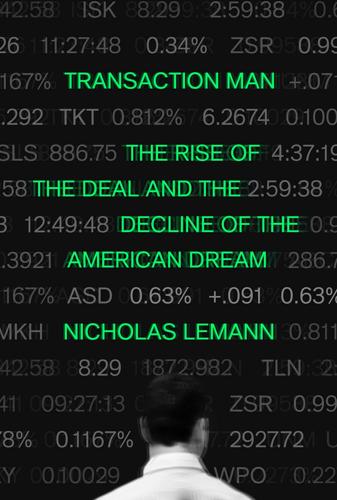
Transaction Man: The Rise of the Deal and the Decline of the American Dream
by
Nicholas Lemann
Published 9 Sep 2019
This gave the Clinton administration an opportunity to go into moral battle against Gramm: their variety of defending liberal principles would be to protect the Community Reinvestment Act rather than traditional bank regulation. The administration let it be known that Gramm-style provisions were absolutely unacceptable. Leach had earned the dislike of the Clinton White House by holding lengthy hearings on the Whitewater affair, which he regarded as a way to reexamine the savings and loan scandal via Bill and Hillary Clinton’s investment in a busted financial institution. He was also skeptical about the rapidly growing derivatives markets. During the first year of the Clinton administration he had the Banking Committee’s staff produce a nine-hundred-page report on the dangers derivatives posed to the stability of the financial system—which the administration ignored—and proposed legislation to create a new board to supervise derivatives, which went nowhere.
…
During the 2016 presidential campaign, both major party nominees, Hillary Clinton and Donald Trump, made stops at the plant, promising to keep the remaining jobs in Chicago; after that the company kept producing cookies there at a modest level. Talman Savings, the rock on which rested Chicago Lawn’s status as a stable residential working-class neighborhood for first-time homeowners, was a casualty of the savings and loan crisis. It went through a forced merger with two other savings and loan companies. Then one of the big downtown Chicago banks bought the resulting combination, and finally one of the largest banks in the country, Bank of America, bought the Chicago bank. Beginning in the mid-1990s, mortgage loans for residents of Chicago Lawn came not from savings and loans or even from banks, but from dozens of unregulated storefront mortgage brokers who appeared in the neighborhood.
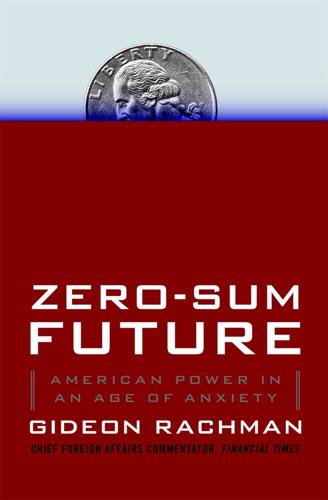
Zero-Sum Future: American Power in an Age of Anxiety
by
Gideon Rachman
Published 1 Feb 2011
Sean Wilentz, The Age of Reagan: A History, 1974–2008 (New York: HarperCollins, 2008), 144. For details on the Tax Reform Act, see 205. 7. Christopher DeMuth, “Reviving Economic Conservatism,” lecture at the Legatum Institute, London, May 14, 2009. 8. D’Souza, Reagan, 89. 9. Some see the roots of the savings and loan scandal of a decade later in the early deregulation of the Reagan years. Niall Ferguson calls it a “hugely expensive lesson in the perils of ill-considered deregulation.” Niall Ferguson, The Ascent of Money: A Financial History of the World (London: Allen Lane, 2008), 253. Wilentz makes the same case in Age of Reagan, 177. 10.
…
China as interest of, 25 Thatcher compared with, 25, 31, 36, 38, 39–43, 45 recession, 16, 32, 34, 40, 77, 149 see also Great Recession regulation, financial, 111–12, 113, 200–201, 220 Reid, Michael, 73, 78, 299n Republicans, 103, 108, 126, 157, 161, 242–43 resource shortages, 204–7, 262, 263, 272 “responsibility to protect” (R2P), 131, 230, 231 Rice, Susan, 197–98, 289 Rise and Fall of the Great Powers, The (Kennedy), 88 Road to Serfdom, The (Hayek), 118 Rogers, Mike, 266 Rohatyn, Felix, 111 Romania, 67, 68 Roosevelt, Franklin, 38, 282 Rubin, Robert, 112, 117–18 Rudd, Kevin, 218 Rumsfeld, Donald, 104, 125, 209 rupee, Indian, 83 Russia, 35, 59, 60, 96, 117, 165, 199, 240, 243, 255, 273, 274, 275, 290 antiglobalization in, 160 authoritarianism of, 174, 175, 176, 234–38, 240–41, 248, 249 in BRICs, 76–77, 196 democracy in, 130, 146, 168, 237–38, 283 financial crisis in (1998), 107–8, 159, 237 global government and, 217, 218, 223 global problems and, 205, 206, 280 NATO and, 235, 236, 312n–13n as nuclear power, 224, 287, 288 UN and, 225–26, 245 win-win world and, 129–30 Rwanda, 131, 132, 208, 231 Saakashvili, Mikheil (Misha), 233–35 Sachs, Jeffrey, 209, 213, 217 Sakharov, Andrei, 58 Salinas de Gortari, Carlos, 74, 116 Sarkozy, Nicolas, 2, 8, 191, 194, 219, 269–70 Saudi Arabia, 204, 217, 221, 241, 272 savings and loan scandal, 296n Schlesinger, James, 204 Schroeder, Gerhard, 115 Schuman Declaration (1950), 219 Scowcroft, Brent, 180–81, 305n Seattle, Wash., antiglobalization in, 155–56 Senate, U.S., 90, 222 Siberia, 240, 274 Sinatra Doctrine, 64–65 Singapore, 60, 137–40, 143, 213 Singh, Manmohan, 15, 54, 79–83, 102–3, 116, 225, 243 Single European Act (1986), 49–51 Smith, Adam, 2, 17, 82, 113, 192 Smoot-Hawley tariffs, 267 socialism, 15–16, 30, 64, 81 British, 35, 36, 38, 49 in France, 46–49 Solana, Javier, 151 Solidarity, 66, 67 Somalia, 132, 209, 210, 256–57, 273 South Africa, 69–70, 176, 193, 244–45, 246, 262 South Korea, 6, 18, 60, 82, 142, 143, 159, 186, 187, 195, 273 sovereign wealth funds (SWFs), 193, 247 Soviet bloc, 6, 102 collapse of, 17, 18, 35–36, 58–59, 63–71, 76, 128 Soviet Union, 7, 34, 41, 87, 88, 167, 183, 233, 279, 285 Brezhnev Doctrine and, 64, 67 China compared with, 59–61 collapse of, 4, 11, 15, 19, 21, 43, 54, 69–70, 84, 85, 88, 90, 93, 100, 102, 105, 164, 261, 282 Fukuyama’s study of, 99–100 Gorbachev’s reforms in, 15, 16, 25, 27, 42, 53–61, 68, 100, 297n Nehru’s visit to, 81 Soviet bloc collapse and, 58–59, 61, 65–66 U.S. competition with, 131, 282, 284, 291 Spain, Spanish, 8, 72, 147, 165, 188, 235, 270 global government and, 219, 221, 226, 228 Spence, Jonathan, 23–24 Sri Lanka, 223, 231, 274 Stalin, Joseph, 27, 236, 237 Starbucks, 155, 261 State Department, U.S., 99, 100, 117, 188 State of Emergency (Buchanan), 260 Steinberg, James, 5, 129 Stiglitz, Joseph, 157, 159, 160, 314n stock market, 83, 218 in Japan, 18–19, 88–89 U.S., 2–3, 4, 40, 96–97, 107, 110, 165 Strauss-Kahn, Dominique, 152, 219 Sudan, 195, 205, 223, 226, 227, 231, 246, 247, 248, 275, 289 Sullivan, Andrew, 280 Summers, Larry, 7, 117–18, 156, 184 Suskind, Ron, 168 Sweden, 150, 156 Switzerland, 96, 101, 269 Taiwan, 60, 82, 136–37, 143, 186, 237, 249 Talbott, Strobe, 126, 217, 304n Taliban, 167, 239, 252 tariffs, 74, 75, 77, 83, 265, 266, 267 taxes, 49, 94, 109, 115, 216, 236, 267 cuts in, 17, 32, 35, 38, 39, 74, 75, 83, 116 Tax Reform Act (1986), 38 Tbilisi, 233, 234 Tea Party movement, 268 technology, 27, 56, 87, 111, 118–28, 131, 174, 203, 271 climate change and, 203, 204, 286–87 global warming and, 125–26 gloomy predictions and, 125, 204, 206 India and, 6, 81, 84–85, 141 peace and, 5–6, 126 U.S., 93, 95, 118–26, 165, 167, 184, 187, 261 see also information technology television, 119, 124, 135, 234–37, 285 Tennyson, Alfred, Lord, 225 Tequila crisis (1994), 77 terror, war on, 96, 165, 198, 199, 211, 212, 244, 245 terrorism, 36, 161–62, 166, 174, 198, 199, 210, 220, 257, 258, 259, 280 nuclear proliferation and, 211–12 in Pakistan, 211, 212, 251, 252, 256, 313n see also 9/11 Tett, Gillian, 123 Texas A&M, 179–81 Thailand, 6, 60, 142, 143, 159–60 Thatcher, Margaret, 16–17, 29–36, 39–52, 54, 69, 74, 89, 114, 136, 191, 279 Falklands War and, 34, 43, 76 France and, 45–46, 48, 49 Hayek and, 118 as “iron lady,” 34, 42, 45 M.
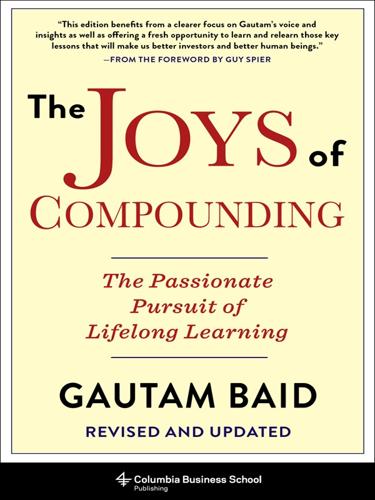
The Joys of Compounding: The Passionate Pursuit of Lifelong Learning, Revised and Updated
by
Gautam Baid
Published 1 Jun 2020
E., 40 Shleifer, Andrei, 348 short-term thinking, Keynes on, 108 sidecar investing, 313–315 Siegel, Jeremy, 171; on fear, 274 signal and noise, 295–296 Simon, Herbert, 14–15, 26, 328 simplicity, 68, 152; Buffett on, 72; Einstein on, 73; focus and, 74; Munger on, 72–73; Prabai on, 70; steps for, 73–76; as way of life, 76–77 Sinclair, Upton, 78 Sinegal, Jim, 124 Singleton, Henry, 287 Singularity Is Near, The (Kurzweil), 318 six sigma, 261 Skinner, B. F., 146 SKS Microfinance, 342 S&L crisis. See savings and loan crisis “Slow Dance” (Weatherford), 375–376 Smith, Adam, 10, 13, 93, 278 Smith, Edgar Lawrence, 215 Smith, Terry, 175 Snowball, The, 5–6 social media, 14, 105 Socrates, 38 software as a service (SaaS), 311 Solin, Dan, 271 “Solitude and Leadership” (Deresiewicz), 30 Son, Masayoshi, 314 Soros, George, 190, 247, 285, 319 South Sea Bubble, 282, 339 S&P 500, 167, 255, 270, 279–280; constituents of, 336; largest companies in, 231 specialists, Munger on, 27 special situations, Graham on, 199–200 Spier, Guy, 46, 48, 87, 137, 370 spinoffs: Greenblatt on, 202–203; Klarman on, 201; long-term potential of, 205; Lynch on, 204; performance of, 202, 204; returns from, 200; in United States, 204; Wall Street on, 204–205 Srivastava, Anup, 312–313 stalwarts, Lynch on, 231–232 Stanley, Thomas, 79 status quo bias, 135 staying power, 266 stereotyping, 240; Kahneman on, 238–239 stock market: luck in, 331; as pari-mutuel system, 297 stocks: anchoring and, 337–338; blue-chip, 230–231; bonds and, 121–122; Buffett on, 121; certainty and, 212; commodity, 191–192; comparison of returns, 220; Graphite India, 188; HEG, 188, 195; high-quality, 234; Loeb on, 216; Lynch on, 236; maturity of, 121; par value of, 121; penny, 313; performance of, 299; time frame and, 185; total real returns on, 274 strangers, kindness of, 264–265 stress-influence tendency, 342–343 Subex, 334–335 subtractive epistemology, Taleb on, 21 success: Buffett on, 209, 327; core test of, 209 sum of parts valuation, 311 Sunstein, Cass, 345 Sun Tzu, 142 super-cat insurance, 313 Superforecasting (Tetlock & Gardner), 292 supply deficits, 194 Surat Diamond Bourse, 198 surfing, Munger on, 315 Surowiecki, James, 241 Swensen, David, 247 switching costs: in business models, 211; ROIC and, 223 syntopical reading, 17 Tagore, Rabindranath, 76 Taleb, Nassim Nicholas, 15, 145, 253, 259, 261, 266, 319; on life, 321; on Lindy effect, 16; on subtractive epistemology, 21 Talent is Overrated (Colvin), 42 tangible equity, pretax return on, 132 target prices, 122 taxes, 130; profit before, 132 tax-free municipal bonds, 88–89 tech bubble, 282 Techno-Funda, 185–186 technology: Munger on, 289; proprietary, 211 Templeton, John, 236; on bull markets, 233; on investment, 299 Teresa (Mother), 66, 370 Tetlock, Philip, 294–295; on Bayesian methods, 292–293 Thailand, 326 Thaler, Richard, 345 Theory of Moral Sentiments, The (Smith, A.), 93 Thiel, Peter, 319 thinking: calculation and, 309–313; Darwin on, 296; fine-tuning, 305–306; first principles, 19–21; flexibility of, 300; Franklin on, 297; golden rule of, 296; Griffin on, 29–30; happiness and, 352; about market conditions, 232–240; mental models and, 29–30; Munger on, 158–159; opportunity costs and, 305–306; positive, 351–356; second-level, 306; time management and, 11–13 Thinking, Fast and Slow (Kahneman), 292 Thorndike, William, 227 Thorp, Ed, 249, 259 three-bucket framework, 28 thumb-sucking, Munger on, 300 Tide, 222 time: Buffett on, 216; nonrenewability of, 11–12; stocks and, 185; wealth and, 78–79 timelessness, of wisdom, 16 time management, 6; learning and, 11–13; reading and, 11–13; thinking and, 11–13 Toffler, Alvin, 284 Tolle, Eckhart, 351 Tolstoy, Leo, 12 Torrent Pharmaceuticals, 197–198 total debt, 131 total real returns, 274 trade-offs, 40–41 Treasury bonds, 255 Treasury rate, 58 Truman, Harry, 281 trust: building, 49; earning, 49–50; Munger on, 49; Welch on, 49 truths, absolute, 55–56 turnarounds, Buffett on, 294 Tversky, Amos, 141, 344 twaddle tendency, 335 Twain, Mark, 16, 39, 187, 264, 346 Twitter, market conditions and, 236 Tzu, Lao, 285 Uber, 225, 286 uncertainty: certainty and, 54–55; Feynman on, 55; risk and, 240, 314 underspending, 79 understanding, 31 Undervalued Corporation, 217 unforced errors, 219 United States (US): equity markets in, 280; GDP of, 278; spinoffs in, 204 United Technologies, 39–40 Upanishads, 33 US.
…
League of Savings Institutions, in a letter in which he likened the trade association to metastasizing cancer cells and called its lobbying practices “flawed, indeed disgraceful.”10 It was a step that only a person who was willing to be detested by an entire industry could take. The move paid off when the S&L crisis erupted and Wesco’s reputation was left completely unscathed. It was Munger’s action of high integrity during the 1980s’ S&L crisis that set Berkshire on its path to being held up as the moral exemplar of corporate America. What Buffett, Munger, and a lot of other people who have been successful in life (true success, not measured by money) have in common is that they strive for a happy and fulfilling life.
…
Harold, 241 Multi Commodity Exchange of India, 309 multidisciplinary thinking, 25 Munger, Charles, 69, 78, 96, 102, 269, 307, 325; attention span of, 30; Buffett and, 4–6, 167, 289; on business models, 214–215; on change of mind, 297–300; on competence, 59; on compounding, 28–29; on delayed gratification, 97–98, 110; on diversification, 244; on emerging markets, 301–302; on experience, 193; financial independence of, 81–82; on Fisher, 245; Gates on, 29; on Graham, 176; on human misjudgment, 133–138; on incentives, 145–147; on information, 287; on intelligence, 257, 295, 325; on inversion, 57–58; as investor, 107, 155, 245; on karma, 67; on knowledge, 335; on learning, 1, 6; on mental models, 11, 25–26; on military service, 94; on mistakes, 333, 352; on pari-mutuel systems, 248; on preparation, 193; on pricing power, 307; psychological checklist of, 133–138; on reading, 10, 359; on ROIC, 210; on simplicity, 72–73; in S&L crisis, 92–93; on specialists and generalists, 27; on surfing, 315; on technology, 289; on thinking, 158–159; on thumb-sucking, 300; on trust, 49; on vicarious learning, 349; on victimhood, 354; on volatility, 106–107; wealth of, 81–82; on wisdom, 19, 51, 128 Musk, Elon, on knowledge, 21 Nadella, Satya, 14 Napier, Russell, 183 National Company Law Tribunal, 201 Nebraska Furniture Mart, 99, 225 negative feedback loops, 264 negative working capital, 210 Neill, Humphrey, on bull markets, 250 Nepal, 119 net fixed assets, turnover ratio, 132 net present value, 290 net profit margin, 131 network effects: of Airbnb, 224; ROIC and, 223–224 news, 14 Newton, Isaac, 22 Newton’s first law, 315 niche, 224 Nifty Fifty, 171, 172, 237, 279 Nirma, 197–198 Niveshak, Safal, 188 North American Insurance, 60 North Star, 38 Novy-Marx, Robert, 179 numeric probabilities, 293 Occam’s razor, 70–71 octopus model, 224 Odean, Terrance, 348 Ogilvy, David, 13–14 Old School Value, 205 omission, 136; mistakes of, 302–304 One Small Step Can Change Your Life (Maurer), 111 ONE Thing, The (Keller & Papasan), 74 One Up on Wall Street (Lynch), 204 open-mindedness, 52–53 operating efficiency analysis, 132 operating goals, 125 Ophuls, William, 146 Oppong, Thomas, 34 opportunity cost: applicability of, 304–305; Buffett on, 302; mental model, 303 opportunity costs, 23; P&L and, 303; thinking and, 305–306 optimism, 272; market conditions and, 238 Oracle, 223 Origin of Species, The (Darwin), 296 Outliers (Gladwell), 41 outperformance, 36 Outsiders, The (Thorndike), 227 outside view, Kahneman on, 294–295 overdiversification, 244 overinfluence: of authority, 333–335; biases from, 136 overvaluation, 298 owner earnings, Buffett on, 162 Pabrai, Mohnish, 200, 370 Page Industries, 309 Papasan, Jay, 74 Parikh, Parag, 189 pari-mutuel systems: Munger on, 248; stock market as, 297 Parker, Adam, 315 Parrish, Shane, 12, 93, 96; on mental models, 25 par value, of stocks, 121–122 Pascal, Blaise, 299 passion, Buffett on, 36 Pasteur, Louis, 320 Patel, Prahaladbhai Shivrambhai, 197 pattern recognition, Buffett on, 307 Pebbles of Perception (Endersen), 50, 146 Peltzman effect, 146 penny stocks, 313 P/E ratio.

The Crisis of Crowding: Quant Copycats, Ugly Models, and the New Crash Normal
by
Ludwig B. Chincarini
Published 29 Jul 2012
Since the financial crisis began in 2008 until June 2011, a total of 380 banks have failed with an estimated cost to the FDIC of $83.07 billion.20 As a matter of comparison, 642 banks failed in the Savings & Loan crisis over a similar period from 1988 to 1991 costing a total of $67.53 billion (or $110.147 billion in today’s dollars),21 and 9,755 banks failed in the Great Depression from 1929 to 1933 costing a total of $1.33 billion (or $22.77 billion in today’s dollars). Figure K.11 Bank Failures and Losses during Two Debacles Source: FDIC. Of course, both the effects of the Great Depression and the Savings & Loan crisis lingered on past the dates described above. Eventually, the Resolution Trust Corporation22 estimated that the total cost to it for the Savings and Loan crisis was a total of $87.9 billion from 747 failed Savings & Loan banks.
…
It was a little higher in 2002, and very high at the end of the 1980s during the savings and loan crisis. During the financial crisis, the quarterly average was 35%, then 39% in 2009, and dropped down to around 13% in 2011. Its highest value was in the 2nd quarter of 2009 at 40.2% and it was also as high as 19% in the 4th quarter of 2010.24 Net charge-offs are how much the banks are charging for lost value of investments or bad loans. This number has also been well above its historical average in recent years. In 2010, it was as high as 2.56% of operating revenue. In the period that includes the savings and loan crisis, this number only got as high as 0.82%.
…
Mullins had already enjoyed an impressive public career. Secretary of the Treasury Nicholas Brady asked him to run the Brady Commission, which investigated the causes of the 1987 U.S. stock market crash. (They found that derivatives and dynamic hedging of portfolio insurance may have been to blame.)9 Mullins helped resolve the savings and loan crisis with the Financial Institutions Reform, Recovery, and Enforcement Act (FIRREA) and the formation of the Resolution Trust Corporation (RTC). In 1990, President Bush nominated Mullins to a four-year term as vice chairman on the Federal Reserve Board of Governors. He left for LTCM in 1994. His presence brought greater credibility to LTCM’s capital raising campaign and also opened many doors, including those of some central banks.

The Blockchain Alternative: Rethinking Macroeconomic Policy and Economic Theory
by
Kariappa Bheemaiah
Published 26 Feb 2017
From a more ideological outlook, it could also be argued that markets should be allowed to make mistakes as part of the innovative process . This is a seemingly logical rationale, especially when taking into consideration the way the innovation mantra is being chanted across every sector and industry today. Indeed, this has even happened in the past. In the 1980s during the savings and loans crisis (S&L crisis), 1,043 out of the 3,234 savings and loan associations ( FDIC, 2000) failed and affected millions of everyday investors. In 2000, the bursting of the technology bubble did affect investors and technology in general. Yet none of these failures posed systemic risks and came at the cost of a financial meltdown.
…
Although Nikolai Kondratiev was the first to study the economic effects of technology on prices, wages, interest rates, industrial production and consumption in 1925, Joseph Schumpeter was responsible for their entry into academia. 7In this paper, the model is driven by technological change that arises from intentional investment decisions made by profit-maximizing agents. 8See “A Failed Philosopher Tries Again.” 9(i) LatAm sovereign debt crisis - 1982, (ii) Savings and loans crisis - 1980s, (iii) Stock market crash - 1987, (iv) Junk bond crash - 1989, (v) Tequila crisis - 1994, (vi) Asia crisis - 1997 to 1998, (vii) Dotcom bubble - 1999 to 2000, (viii) Global financial crisis - 2007 to 2008. 10LHC: The Large Hadron Collider is the world’s largest and most powerful particle accelerator located at the CERN, the European Organization for Nuclear Research (Conseil Européen pour la Recherche Nucléaire).
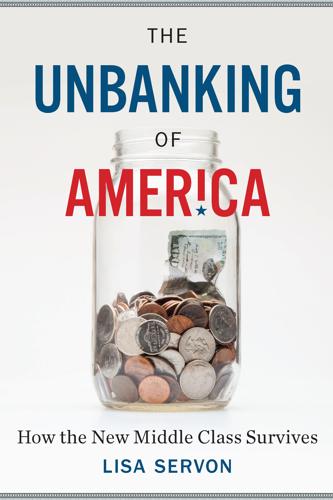
The Unbanking of America: How the New Middle Class Survives
by
Lisa Servon
Published 10 Jan 2017
I learned that as banks grew and became more removed from the day-to-day needs of their customers, their business models also changed. Over time, they made more and more of their money from fees instead of interest. The larger banks also became more complex. Historically, banks made their money by borrowing and lending, which generated interest income. But events like the savings and loan crisis in the late 1980s and early 1990s, when so many banks failed, illustrated how disastrous that model could be. In order to make banks less vulnerable to volatile interest rates, bank examiners encouraged them to find other ways to make a profit. That’s when banks discovered fees—the fees that anger and frustrate nearly everyone I’ve spoken with.
…
See Electronic Benefits Transfer cards ECOA. See Equal Credit Opportunity Act economic security. See financial security economy. See also financial crisis (2008) bank success and, 36 financial sector and, 34–36 free market and, 34–35, 170 human capital and, 167–68 productivity vs. wages, 51–52 savings and loan crisis (1980s and 1990s), 28 shared, 139–41 underground, 127–28 education, xiv, 48–50, 54–56, 60, 107–9, 167–68, 177–78 Edwards, John, 40 Ehrenreich, Barbara, 156 Electronic Benefits Transfer (EBT) cards, 3, 11–12, 18 emergency funds, 48, 59, 80–81, 88, 132, 213–15n88 emerging adults.
…
See also policy recommendations; specific laws of banks, 25–27, 32, 37–42, 67–68, 146–48, 170, 210n70 CFPB and, 39–40, 147, 198–99n40, 215–16n91 of check-cashing stores, 13 of credit cards, 72, 74–75, 157 of debt collection, 92–93, 99 deregulation period (1970s), 67–68 innovation and, 175–76 of payday lenders, 77, 85, 89–91, 147, 215–16n91 Responsible Banking Act (2012), 43 retail industry, 40–41, 209n68 retirement, 55, 57, 106, 169 Ripple, 145–46, 152–54, 175 RiteCheck employment at, 8–12 fees, 15, 18, 20–21 history of, 12–14 loan sharks and, 134–35 overview of, 4–6 research approach to, 180–83 rollover payday loans, 80–83, 95 Roosevelt, Franklin, 51 rotating savings and credit associations (ROSCAs), 124–34, 138–42, 161 S Santucci, Larry, 212n75 savings, xiv–xv, 82, 106–7, 114–15, 126, 137. See also informal savings and loans savings and loan crisis (1980s and 1990s), 28 scams, 100 scarcity mindset, 54 Schumpeter, Joseph, 143 Seidman, Ellen, 28, 30, 37, 40–41 self-employment. See entrepreneurs Shafir, Eldar, 54 sharing economy, 139–41 Shiller, Robert, 34, 45, 172 short-term loans, 83, 87. See also payday lending small banks, 27–28, 37, 172 small business owners.
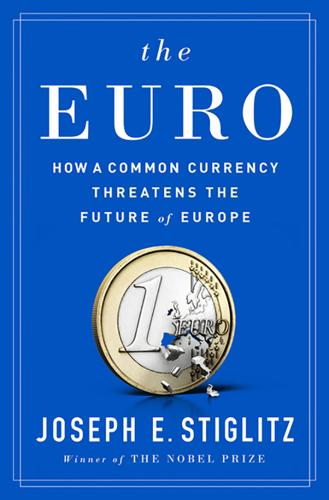
The Euro: How a Common Currency Threatens the Future of Europe
by
Joseph E. Stiglitz
and
Alex Hyde-White
Published 24 Oct 2016
The lower interest rates that such banks can obtain acts as a hidden subsidy. Quantitative easing itself represented in part a hidden recapitalization of the banks, much as the policies pursued in the Clinton administration had done after the savings and loan (S&L) crisis. Long-term bonds went up in value, and banks that held these were in effect given a major transfer of wealth. In the case of the United States in the S&L crisis, banks had been encouraged to hold these bonds through regulatory accounting that treated these bonds as zero risk, though it was obvious that there was considerable variability in their price, and the returns they received reflected this volatility.
…
Africa, 10, 95, 381 globalization and, 51 aggregate demand, 98, 107, 111, 118–19, 189, 367 deflation and, 290 lowered by inequality, 212 surpluses and, 187, 253 tech bubble slump in, 250 as weakened by imports, 111 aggregate supply, 99, 104, 189 agricultural subsidies, 45, 197 agriculture, 89, 224, 346 airlines, 259 Akerlof, George, 132 American Express, 287 Apple, 81, 376 Argentina, 18, 100, 110, 117, 371 bailout of, 113 debt restructuring by, 205–6, 266, 267 Arrow-Debreu competitive equilibrium theory, 303 Asia, globalization and, 51 asset price bubbles, 172 Athens airport, 191, 367–68 austerity, xvi–xvii, 9, 18–19, 20, 21, 28–29, 54, 69–70, 95, 96, 98, 97, 103, 106, 140, 150, 178, 185–88, 206, 211, 235, 316–17 academics for, 208–13 debt restructuring and, 203–6 design of programs of, 188–90 Germany’s push for, 186, 232 government investment curtailed by, 217 opposition to, 59–62, 69–70, 207–8, 315, 332, 392 private, 126–27, 241–42 reform of, 263–65 Austria, 331, 343 automatic destabilizers, see built-in destabilizers automatic stabilizers, 142, 244, 247–48, 357 flexible exchange rate as, 248 bail-ins, 113 bailouts, 91–92, 111, 112–13, 201–3, 354, 362–63, 370 of banks, 127–28, 196, 279, 362–63 of East Asia, 202 of Latin America, 202 of Mexico, 202 of Portugal, 178–79 of Spanish banks, 179, 199–200, 206 see also programs balanced-budget multiplier, 188–90, 265 Balkans, 320 bank capital, 284–85 banking system, in US, 91 banking union, 129–30, 241–42, 248, 263 and common regulations, 241 and deposit insurance, 241, 242, 246 Bank of England, 359 inflation target of, 157 Bank of Italy, 158 bankruptcies, 77, 94, 102, 104, 346, 390 super–chapter 11 for, 259–60 banks, 198–201 bailouts of, 127–28, 196, 279, 362–63 capital requirements of, 152, 249 closing of, 378 credit creation by, 280–82 development, 137–38 evolution of, 386–87 forbearance of regulations on, 130–31 Greek, 200–201, 228–29, 231, 270, 276, 367, 368 lending contracted by, 126–27, 246, 282–84 money supply increased by, 277 restructuring of, 113 small, 171 in Spain, 23, 186, 199, 200, 242, 270, 354 too-big-to-fail, 360 bank transfers, 49 Barclays, 131 behavioral economics, 335 Belgium, 6, 331, 343 belief systems, 53 Berlin Wall, 6 Bernanke, Ben, 251, 351, 363, 381 bilateral investment agreement, 369 Bill of Rights, 319 bimetallic standard, 275, 277 Blanchard, Olivier, 211 bonds, 4, 114, 150, 363 confidence in, 127, 145 Draghi’s promise to support, 127, 200, 201 GDP-indexed, 267 inflation and, 161 long-term, 94 restructuring of, 159 bonds, corporate, ECB’s purchase of, 141 borrowing, excessive, 243 Brazil, 138, 370 bailout of, 113 bread, 218, 230 Bretton Woods monetary system, 32, 325 Brunnermeier, Markus K., 361 Bryan, William Jennings, xii bubbles, 249, 381 credit, 122–123 real estate, see real estate bubble stability threatened by, 264 stock market, 200–201 tech, 250 tools for controlling, 250 budget, capital, 245 Buffett, Warren, 287, 290 built-in destabilizers, 96, 142, 188, 244, 248, 357–58 common regulatory framework as, 241 Bulgaria, 46, 331 Bundesbank, 42 Bush, George W., 266 Camdessus, Michel, 314 campaign contributions, 195, 355 Canada, 96 early 1990s expansion of, 209 in NAFTA, xiv railroad privatization in, 55 tax system in, 191 US’s free trade with, 45–46, 47 capital, 76–77 bank, 284–85 human, 78, 137 return to, 388 societal vs. physical, 77–78 tax on, 356 unemployment increased by, 264 capital adequacy standards, 152 capital budget, 245 capital controls, 389–90 capital flight, 126–34, 217, 354, 359 austerity and, 140 and labor flows, 135 capital flows, 14, 15, 25, 26, 27–28, 40, 116, 125, 128, 131, 351 economic volatility exacerbated by, 28, 274 and foreign ownership, 195 and technology, 139 capital inflows, 110–11 capitalism: crises in, xviii, 148–49 inclusive, 317 capital requirements, 152, 249, 378 Caprio, Gerry, 387 capture, 158–60 carbon price, 230, 260, 265, 368 cash, 39 cash flow, 194 Catalonia, xi CDU party, 314 central banks, 59, 354, 387–88 balance sheets of, 386 capture of, 158–59 credit auctions by, 282–84 credit creation by, 277–78 expertise of, 363 independence of, 157–63 inequality created by, 154 inflation and, 153, 166–67 as lender of last resort, 85, 362 as political institutions, 160–62 regulations and, 153 stability and, 8 unemployment and, 8, 94, 97, 106, 147, 153 CEO compensation, 383 Chapter 11, 259–60, 291 childhood poverty, 72 Chile, 55, 152–53 China, 81, 98, 164, 319, 352 exchange-rate policy of, 251, 254, 350–51 global integration of, 49–50 low prices of, 251 rise of, 75 savings in, 257 trade surplus of, 118, 121, 350–52 wages controlled in, 254 as world’s largest economy, 318, 327 chits, 287–88, 290, 299–300, 387, 388–389 Citigroup, 355 climate change, 229–30, 251, 282, 319 Clinton, Bill, xiv, xv, 187 closing hours, 220 cloves, 230 cognitive capture, 159 Cohesion Fund, 243 Cold War, 6 collateral, 364 collective action, 41–44, 51–52 and inequality, 338 and stabilization, 246 collective bargaining, 221 collective goods, 40 Common Agricultural Policy, 338 common regulatory framework, 241 communism, 10 Community Reinvestment Act (CRA), 360, 382 comparative advantage, 12, 171 competition, 12 competitive devaluation, 104–6, 254 compromise, 22–23 confidence, 95, 200–201, 384 in banks, 127 in bonds, 145 and structural reforms, 232 and 2008 crisis, 280 confirmation bias, 309, 335 Congress, US, 319, 355 connected lending, 280 connectedness, 68–69 Connecticut, GDP of, 92 Constitutional Court, Greek, 198 consumption, 94, 278 consumption tax, 193–94 contract enforcement, 24 convergence, 13, 92–93, 124, 125, 139, 254, 300–301 convergence criteria, 15, 87, 89, 96–97, 99, 123, 244 copper mines, 55 corporate income tax, 189–90, 227 corporate taxes, 189–90, 227, 251 corporations, 323 regulations opposed by, xvi and shutdown of Greek banks, 229 corruption, 74, 112 privatization and, 194–95 Costa, António, 332 Council of Economic Advisers, 358 Council of State, Greek, 198 countercyclical fiscal policy, 244 counterfactuals, 80 Countrywide Financial, 91 credit, 276–85 “divorce”’s effect on, 278–79 excessive, 250, 274 credit auctions, 282–84 credit bubbles, 122–123 credit cards, 39, 49, 153 credit creation, 248–50, 277–78, 386 by banks, 280–82 domestic control over, 279–82 regulation of, 277–78 credit default swaps (CDSs), 159–60 crisis policy reforms, 262–67 austerity to growth, 263–65 debt restructuring and, 265–67 Croatia, 46, 331, 338 currency crises, 349 currency pegs, xii current account, 333–34 current account deficits, 19, 88, 108, 110, 120–121, 221, 294 and exit from euro, 273, 285–89 see also trade deficit Cyprus, 16, 30, 140, 177, 331, 386 capital controls in, 390 debt-to-GDP ratio of, 231 “haircut” of, 350, 367 Czech Republic, 46, 331 debit cards, 39, 49 debtors’ prison, 204 debt restructuring, 201, 203–6, 265–67, 290–92, 372, 390 of private debt, 291 debts, xx, 15, 93, 96, 183 corporate, 93–94 crisis in, 110–18 in deflation, xii and exit from eurozone, 273 with foreign currency, 115–18 household, 93–94 increase in, 18 inherited, 134 limits of, 42, 87, 122, 141, 346, 367 monetization of, 42 mutualization of, 242–43, 263 place-based, 134, 242 reprofiling of, 32 restructuring of, 259 debt-to-GDP ratio, 202, 210–11, 231, 266, 324 Declaration of Independence, 319 defaults, 102, 241, 338, 348 and debt mutualization, 243 deficit fetishism, 96 deficits, fiscal, xx, 15, 20, 93, 96, 106, 107–8, 122, 182, 384 and balanced-budget multiplier, 188–90, 265 constitutional amendment on, 339 and exit from euro, 273, 289–90 in Greece, 16, 186, 215, 233, 285–86, 289 limit of, 42, 87, 94–95, 122, 138, 141, 186, 243, 244, 265, 346, 367 primary, 188 problems financing, 110–12 structural, 245 deficits, trade, see trade deficits deflation, xii, 147, 148, 151, 166, 169, 277, 290 Delors, Jacques, 7, 332 democracy, lack of faith in, 312–14 Democracy in America (Tocqueville), xiii democratic deficit, 26–27, 35, 57–62, 145 democratic participation, xix Denmark, 45, 307, 313, 331 euro referendum of, 58 deposit insurance, 31, 44, 129, 199, 301, 354–55, 386–87 common in eurozone, 241, 242, 246, 248 derivatives, 131, 355 Deutsche Bank, 283, 355 devaluation, 98, 104–6, 254, 344 see also internal devaluation developing countries, and Washington Consensus, xvi discretion, 262–63 discriminatory lending practices, 283 disintermediation, 258 divergence, 15, 123, 124–44, 255–56, 300, 321 in absence of crisis, 128–31 capital flight and, 126–34 crisis policies’ exacerbation of, 140–43 free mobility of labor and, 134–36, 142–44, 242 in public investment, 136–38 reforms to prevent, 243 single-market principle and, 125–26 in technology, 138–39 in wealth, 139–40 see also capital flows; labor movement diversification, of production, 47 Dodd-Frank Wall Street Reform and Consumer Protection Act, 355 dollar peg, 50 downsizing, 133 Draghi, Mario, 127, 145, 156, 158, 165, 269, 363 bond market supported by, 127, 200, 201 Drago, Luis María, 371 drug prices, 219 Duisenberg, Willem Frederik “Wim,” 251 Dynamic Stochastic Equilibrium model, 331 East Asia, 18, 25, 95, 102–3, 112, 123, 202, 364, 381 convergence in, 138 Eastern Europe, 10 Economic Adjustment Programme, 178 economic distortions, 191 economic growth, xii, 34 confidence and, 232 in Europe, 63–64, 69, 73–74, 74, 75, 163 lowered by inequality, 212–13 reform of, 263–65 and structural reforms, 232–35 economic integration, xiv–xx, 23, 39–50 euro and, 46–47 political integration vs., 51–57 single currency and, 45–46 economic rents, 226, 280 economics, politics and, 308–18 economic security, 68 economies of scale, 12, 39, 55, 138 economists, poor forecasting by, 307 education, 20, 76, 344 investment in, 40, 69, 137, 186, 211, 217, 251, 255, 300 electricity, 217 electronic currency, 298–99, 389 electronics payment mechanism, 274–76, 283–84 emigration, 4, 68–69 see also migration employment: central banks and, 8, 94, 97 structural reforms and, 257–60 see also unemployment Employment Act (1946), 148 energy subsidies, 197 Enlightenment, 3, 318–19 environment, 41, 257, 260, 323 equality, 225–26 equilibrium, xviii–xix Erasmus program, 45 Estonia, 90, 331, 346 euro, xiv, 325 adjustments impeded by, 13–14 case for, 35–39 creation of, xii, 5–6, 7, 10, 333 creation of institutions required by, 10–11 divergence and, see divergence divorce of, 272–95, 307 economic integration and, 46–47, 268 as entailing fixed exchange rate, 8, 42–43, 46–47, 86–87, 92, 93, 94, 102, 105, 143, 193, 215–16, 240, 244, 249, 252, 254, 286, 297 as entailing single interest rate, 8, 85–88, 92, 93, 94, 105, 129, 152, 240, 244, 249 and European identification, 38–39 financial instability caused by, 131–32 growth promised by, 235 growth slowed by, 73 hopes for, 34 inequality increased by, xviii interest rates lowered by, 235 internal devaluation of, see internal devaluation literature on, 327–28 as means to end, xix peace and, 38 proponents of, 13 referenda on, 58, 339–40 reforms needed for, xii–xiii, 28–31 risk of, 49–50 weakness of, 224 see also flexible euro Eurobond, 356 euro crisis, xiii, 3, 4, 9 catastrophic consequences of, 11–12 euro-euphoria, 116–17 Europe, 151 free trade area in, 44–45 growth rates in, 63–64, 69, 73–74, 74, 75, 163 military conflicts in, 196 social models of, 21 European Central Bank (ECB), 7, 17, 80, 112–13, 117, 144, 145–73, 274, 313, 362, 368, 380 capture of, 158–59 confidence in, 200–201 corporate bonds bought by, 141 creation of, 8, 85 democratic deficit and, 26, 27 excessive expansion controlled by, 250 flexibility of, 269 funds to Greece cut off by, 59 German challenges to, 117, 164 governance and, 157–63 inequality created by, 154–55 inflation controlled by, 8, 25, 97, 106, 115, 145, 146–50, 151, 163, 165, 169–70, 172, 250, 256, 266 interest rates set by, 85–86, 152, 249, 302, 348 Ireland forced to socialize losses by, 134, 156, 165 new mandate needed by, 256 as political institution, 160–62 political nature of, 153–56 quantitative easing opposed by, 151 quantitative easing undertaken by, 164, 165–66, 170, 171 regulations by, 249, 250 unemployment and, 163 as unrepresentative, 163 European Commission, 17, 58, 161, 313, 332 European Court of Human Rights, 45 European Economic Community (EEC), 6 European Exchange Rate Mechanism (ERM), 30, 335 European Exchange Rate Mechanism II (ERM II), 336 European Free Trade Association, 44 European Free Trade Association Court, 44 European Investment Bank (EIB), 137, 247, 255, 301 European Regional Development Fund, 243 European Stability Mechanism, 23, 246, 357 European Union: budget of, 8, 45, 91 creation of, 4 debt and deficit limits in, 87–88 democratic deficit in, 26–27 economic growth in, 215 GDP of, xiii and lower rates of war, 196 migration in, 90 proposed exit of UK from, 4 stereotypes in, 12 subsidiarity in, 8, 41–42, 263 taxes in, 8, 261 Euro Summit Statement, 373 eurozone: austerity in, see austerity banking union in, see banking union counterfactual in, 235–36 double-dip recessions in, 234–35 Draghi’s speech and, 145 economic integration and, xiv–xx, 23, 39–50, 51–57 as flawed at birth, 7–9 framework for stability of, 244–52 German departure from, 32, 292–93 Greece’s possible exit from, 124 hours worked in, 71–72 lack of fiscal policy in, 152 and move to political integration, xvi, 34, 35, 51–57 Mundell’s work on dangers of, 87 policies of, 15–17 possible breakup of, 29–30 privatization avoided in, 194 saving, 323–26 stagnant GDP in, 12, 65–68, 66, 67 structure of, 8–9 surpluses in, 120–22 theory of, 95–97 unemployment in, 71, 135, 163, 177–78, 181, 331 working-age population of, 70 eurozone, proposed structural reforms for, 239–71 common financial system, see banking union excessive fiscal responsibility, 163 exchange-rate risks, 13, 47, 48, 49–50, 125, 235 exchange rates, 80, 85, 288, 300, 338, 382, 389 of China, 251, 254, 350–51 and competitive devaluation, 105–6 after departure of northern countries, 292–93 of euro, 8, 42–43, 46–47, 86–87, 92, 93, 94, 102, 105, 215–16, 240, 244, 249, 252, 254, 286, 297 flexible, 50, 248, 349 and full employment, 94 of Germany, 254–55, 351 gold and, 344–45 imports and, 86 interest rates and, 86 quantitative easing’s lowering of, 151 real, 105–6 and single currencies, 8, 42–43, 46–47, 86–87, 92, 93, 94, 97–98 stabilizing, 299–301 and trade deficits, 107, 118 expansionary contractions, 95–96, 208–9 exports, 86, 88, 97–99, 98 disappointing performance of, 103–5 external imbalances, 97–98, 101, 109 externalities, 42–43, 121, 153, 301–2 surpluses as, 253 extremism, xx, 4 Fannie Mae, 91 farmers, US, in deflation, xii Federal Deposit Insurance Corporation (FDIC), 91 Federal Reserve, US, 349 alleged independence of, 157 interest rates lowered by, 150 mandate of, 8, 147, 172 money pumped into economy by, 278 quantitative easing used by, 151, 170 reform of, 146 fiat currency, 148, 275 and taxes, 284 financial markets: lobbyists from, 132 reform of, 214, 228–29 short-sighted, 112–13 financial systems: necessity of, xix real economy of, 149 reform of, 257–58 regulations needed by, xix financial transaction system, 275–76 Finland, 16, 81, 122, 126, 292, 296, 331, 343 growth in, 296–97 growth rate of, 75, 76, 234–35 fire departments, 41 firms, 138, 186–87, 245, 248 fiscal balance: and cutting spending, 196–98 tax revenue and, 190–96 Fiscal Compact, 141, 357 fiscal consolidation, 310 fiscal deficits, see deficits, fiscal fiscal policy, 148, 245, 264 in center of macro-stabilization, 251 countercyclical, 244 in EU, 8 expansionary, 254–55 stabilization of, 250–52 fiscal prudence, 15 fiscal responsibility, 163 flexibility, 262–63, 269 flexible euro, 30–31, 272, 296–305, 307 cooperation needed for, 304–5 food prices, 169 forbearance, 130–31 forecasts, 307 foreclosure proposal, 180 foreign ownership, privatization and, 195 forestry, 81 France, 6, 14, 16, 114, 120, 141, 181–82, 331, 339–40, 343 banks of, 202, 203, 231, 373 corporate income tax in, 189–90 euro creation regretted in, 340 European Constitution referendum of, 58 extreme right in, xi growth in, 247 Freddie Mac, 91 Freefall (Stiglitz), 264, 335 free mobility of labor, xiv, 26, 40, 125, 134–36, 142–44, 242 Friedman, Milton, 151, 152–53, 167, 339 full employment, 94–97, 379 G-20, 121 gas: import of, 230 from Russia, 37, 81, 93 Gates Foundation, 276 GDP-indexed bonds, 267 German bonds, 114, 323 German Council of Economic Experts, 179, 365 Germany, xxi, 14, 30, 65, 108, 114, 141, 181–82, 207, 220, 286, 307, 331, 343, 346, 374 austerity pushed by, 186, 232 banks of, 202, 203, 231–32, 373 costs to taxpayers of, 184 as creditor, 140, 187, 267 debt collection by, 117 debt in, 105 and debt restructuring, 205, 311 in departure from eurozone, 32, 292–93 as dependent on Russian gas, 37 desire to leave eurozone, 314 ECB criticized by, 164 EU economic practices controlled by, 17 euro creation regretted in, 340 exchange rate of, 254–55, 351 failure of, 13, 78–79 flexible exchange of, 304 GDP of, xviii, 92 in Great Depression, 187 growing poverty in, 79 growth of, 78, 106, 247 hours worked per worker in, 72 inequality in, 79, 333 inflation in, 42, 338, 358 internal solidarity of, 334 lack of alternative to euro seen by, 11 migrants to, 320–21, 334–35, 393 minimum wage in, 42, 120, 254 neoliberalism in, 10 and place-based debt, 136 productivity in, 71 programs designed by, 53, 60, 61, 202, 336, 338 reparations paid by, 187 reunification of, 6 rules as important to, 57, 241–42, 262 share of global employment in, 224 shrinking working-age population of, 70, 78–79 and Stability and Growth Pact, 245 and structural reforms, 19–20 “there is no alternative” and, 306, 311–12 trade surplus of, 117, 118–19, 120, 139, 253, 293, 299, 350–52, 381–82, 391 “transfer union” rejected by, 22 US loans to, 187 victims blamed by, 9, 15–17, 177–78, 309 wages constrained by, 41, 42–43 wages lowered in, 105, 333 global financial crisis, xi, xiii–xiv, 3, 12, 17, 24, 67, 73, 75, 114, 124, 146, 148, 274, 364, 387 and central bank independence, 157–58 and confidence, 280 and cost of failure of financial institutions, 131 lessons of, 249 monetary policy in, 151 and need for structural reform, 214 originating in US, 65, 68, 79–80, 112, 128, 296, 302 globalization, 51, 321–23 and diminishing share of employment in advanced countries, 224 economic vs. political, xvii failures of, xvii Globalization and Its Discontents (Stig-litz), 234, 335, 369 global savings glut, 257 global secular stagnation, 120 global warming, 229–30, 251, 282, 319 gold, 257, 275, 277, 345 Goldman Sachs, 158, 366 gold standard, 148, 291, 347, 358 in Great Depression, xii, 100 goods: free movement of, 40, 143, 260–61 nontraded, 102, 103, 169, 213, 217, 359 traded, 102, 103, 216 Gordon, Robert, 251 governance, 157–63, 258–59 government spending, trade deficits and, 107–8 gravity principle, 124, 127–28 Great Depression, 42, 67, 105, 148, 149, 168, 313 Friedman on causes of, 151 gold standard in, xii, 100 Great Malaise, 264 Greece, 14, 30, 41, 64, 81, 100, 117, 123, 142, 160, 177, 265–66, 278, 307, 331, 343, 366, 367–68, 374–75, 386 austerity opposed by, 59, 60–62, 69–70, 207–8, 392 balance of payments, 219 banks in, 200–201, 228–29, 231, 270, 276, 367, 368 blaming of, 16, 17 bread in, 218, 230 capital controls in, 390 consumption tax and, 193–94 counterfactual scenario of, 80 current account surplus of, 287–88 and debt restructuring, 205–7 debt-to-GDP ratio of, 231 debt write-offs in, 291 decline in labor costs in, 56, 103 ECB’s cutting of funds to, 59 economic growth in, 215, 247 emigration from, 68–69 fiscal deficits in, 16, 186, 215, 233, 285–86, 289 GDP of, xviii, 183, 309 hours worked per worker in, 72 inequality in, 72 inherited debt in, 134 lack of faith in democracy in, 312–13 living standards in, 216 loans in, 127 loans to, 310 migrants and, 320–21 milk in, 218, 223, 230 new currency in, 291, 300 oligarchs in, 16, 227 output per working-age person in, 70–71 past downturns in, 235–36 pensions in, 16, 78, 188, 197–98, 226 pharmacies in, 218–20 population decline in, 69, 89 possible exit from eurozone of, 124, 197, 273, 274, 275 poverty in, 226, 261, 376 primary surplus of, 187–88, 312 privatization in, 55, 195–96 productivity in, 71, 342 programs imposed on, xv, 21, 27, 60–62, 140, 155–56, 179–80, 181, 182–83, 184–85, 187–88, 190–93, 195–96, 197–98, 202–3, 205, 206, 214–16, 218–23, 225–28, 229, 230, 231, 233–34, 273, 278, 308, 309–11, 312, 315–16, 336, 338 renewable energy in, 193, 229 social capital destroyed in, 78 sovereign spread of, 200 spread in, 332 and structural reforms, 20, 70, 188, 191 tax revenue in, 16, 142, 192, 227, 367–368 tools lacking for recovery of, 246 tourism in, 192, 286 trade deficits in, 81, 194, 216–17, 222, 285–86 unemployment in, xi, 71, 236, 267, 332, 338, 342 urgency in, 214–15 victim-blaming of, 309–11 wages in, 216–17 youth unemployment in, xi, 332 Greek bonds, 116, 126 interest rates on, 4, 114, 181–82, 201–2, 323 restructuring of, 206–7 green investments, 260 Greenspan, Alan, 251, 359, 363 Grexit, see Greece, possible exit from eurozone of grocery stores, 219 gross domestic product (GDP), xvii decline in, 3 measurement of, 341 Growth and Stability Pact, 87 hedge funds, 282, 363 highways, 41 Hitler, Adolf, 338, 358 Hochtief, 367–68 Hoover, Herbert, 18, 95 human capital, 78, 137 human rights, 44–45, 319 Hungary, 46, 331, 338 hysteresis, 270 Iceland, 44, 111, 307, 354–55 banks in, 91 capital controls in, 390 ideology, 308–9, 315–18 imports, 86, 88, 97–99, 98, 107 incentives, 158–59 inclusive capitalism, 317 income, unemployment and, 77 income tax, 45 Independent Commission for the Reform of International Corporate Taxation, 376–377 Indonesia, 113, 230–31, 314, 350, 364, 378 industrial policies, 138–39, 301 and restructuring, 217, 221, 223–25 Industrial Revolution, 3, 224 industry, 89 inequality, 45, 72–73, 333 aggregate demand lowered by, 212 created by central banks, 154 ECB’s creation of, 154–55 economic performance affected by, xvii euro’s increasing of, xviii growth’s lowering of, 212 hurt by collective action, 338 increased by neoliberalism, xviii increase in, 64, 154–55 inequality in, 72, 212 as moral issue, xviii in Spain, 72, 212, 225–26 and tax harmonization, 260–61 and tax system, 191 inflation, 277, 290, 314, 388 in aftermath of tech bubble, 251 bonds and, 161 central banks and, 153, 166–67 consequences of fixation on, 149–50, 151 costs of, 270 and debt monetization, 42 ECB and, 8, 25, 97, 106, 115, 145, 146–50, 151, 163, 165, 169–70, 172, 255, 256, 266 and food prices, 169 in Germany, 42, 338, 358 interest rates and, 43–44 in late 1970s, 168 and natural rate hypothesis, 172–73 political decisions and, 146 inflation targeting, 157, 168–70, 364 information, 335 informational capital, 77 infrastructure, xvi–xvii, 47, 137, 186, 211, 255, 258, 265, 268, 300 inheritance tax, 368 inherited debt, 134 innovation, 138 innovation economy, 317–18 inputs, 217 instability, xix institutions, 93, 247 poorly designed, 163–64 insurance, 355–356 deposit, see deposit insurance mutual, 247 unemployment, 91, 186, 246, 247–48 integration, 322 interest rates, 43–44, 86, 282, 345, 354 in aftermath of tech bubble, 251 ECB’s determination of, 85–86, 152, 249, 302, 348 and employment, 94 euro’s lowering of, 235 Fed’s lowering of, 150 on German bonds, 114 on Greek bonds, 4, 114, 181–82 on Italian bonds, 114 in late 1970s, 168 long-term, 151, 200 negative, 316, 348–49 quantitative easing and, 151, 170 short-term, 249 single, eurozone’s entailing of, 8, 85–88, 92, 93, 94, 105, 129, 152, 240, 244, 249 on Spanish bonds, 114, 199 spread in, 332 stock prices increased by, 264 at zero lower bound, 106 intermediation, 258 internal devaluation, 98–109, 122, 126, 220, 255, 388 supply-side effects of, 99, 103–4 International Commission on the Measurement of Economic Performance and Social Progress, 79, 341 International Labor Organization, 56 International Monetary Fund (IMF), xv, xvii, 10, 17, 18, 55, 61, 65–66, 96, 111, 112–13, 115–16, 119, 154, 234, 289, 309, 316, 337, 349, 350, 370, 371, 381 and Argentine debt, 206 conditions of, 201 creation of, 105 danger of high taxation warnings of, 190 debt reduction pushed by, 95 and debt restructuring, 205, 311 and failure to restore credit, 201 global imbalances discussed by, 252 and Greek debts, 205, 206, 310–11 on Greek surplus, 188 and Indonesian crisis, 230–31, 364 on inequality’s lowering of growth, 212–13 Ireland’s socialization of losses opposed by, 156–57 mistakes admitted by, 262, 312 on New Mediocre, 264 Portuguese bailout of, 178–79 tax measures of, 185 investment, 76–77, 111, 189, 217, 251, 264, 278, 367 confidence and, 94 divergence in, 136–38 in education, 137, 186, 211, 217, 251, 255, 300 infrastructure in, xvi–xvii, 47, 137, 186, 211, 255, 258, 265, 268, 300 lowered by disintermediation, 258 public, 99 real estate, 199 in renewable energy, 229–30 return on, 186, 245 stimulation of, 94 in technology, 137, 138–39, 186, 211, 217, 251, 258, 265, 300 investor state dispute settlement (ISDS), 393–94 invisible hand, xviii Iraq, refugees from, 320 Iraq War, 36, 37 Ireland, 14, 16, 44, 113, 114–15, 122, 178, 234, 296, 312, 331, 339–40, 343, 362 austerity opposed in, 207 debt of, 196 emigrants from, 68–69 GDP of, 18, 231 growth in, 64, 231, 247, 340 inherited debt in, 134 losses socialized in, 134, 156–57, 165 low debt in, 88 real estate bubble in, 108, 114–15, 126 surplus in, 17, 88 taxes in, 142–43, 376 trade deficits in, 119 unemployment in, 178 irrational exuberance, 14, 114, 116–17, 149, 334, 359 ISIS, 319 Italian bonds, 114, 165, 323 Italy, 6, 14, 16, 120, 125, 331, 343 austerity opposed in, 59 GDP per capita in, 352 growth in, 247 sovereign spread of, 200 Japan, 151, 333, 342 bubble in, 359 debt of, 202 growth in, 78 quantitative easing used by, 151, 359 shrinking working-age population of, 70 Java, unemployment on, 230 jobs gap, 120 Juncker, Jean-Claude, 228 Keynes, John Maynard, 118, 120, 172, 187, 351 convergence policy suggested by, 254 Keynesian economics, 64, 95, 108, 153, 253 King, Mervyn, 390 knowledge, 137, 138–39, 337–38 Kohl, Helmut, 6–7, 337 krona, 287 labor, marginal product of, 356 labor laws, 75 labor markets, 9, 74 friction in, 336 reforms of, 214, 221 labor movement, 26, 40, 125, 134–36, 320 austerity and, 140 capital flows and, 135 see also migration labor rights, 56 Lamers, Karl, 314 Lancaster, Kelvin, 27 land tax, 191 Latin America, 10, 55, 95, 112, 202 lost decade in, 168 Latvia, 331, 346 GDP of, 92 law of diminishing returns, 40 learning by doing, 77 Lehman Brothers, 182 lender of last resort, 85, 362, 368 lending, 280, 380 discriminatory, 283 predatory, 274, 310 lending rates, 278 leverage, 102 Lichtenstein, 44 Lipsey, Richard, 27 liquidity, 201, 264, 278, 354 ECB’s expansion of, 256 lira, 14 Lithuania, 331 living standards, 68–70 loans: contraction of, 126–27, 246 nonperforming, 241 for small and medium-size businesses, 246–47 lobbyists, from financial sector, 132 location, 76 London interbank lending rate (LIBOR), 131, 355 Long-Term Refinancing Operation, 360–361 Lucas, Robert, xi Luxembourg, 6, 94, 142–43, 331, 343 as tax avoidance center, 228, 261 luxury cars, 265 Maastricht Treaty, xiii, 6, 87, 115, 146, 244, 298, 339, 340 macro-prudential regulations, 249 Malta, 331, 340 manufacturing, 89, 223–24 market failures, 48–49, 86, 148, 149, 335 rigidities, 101 tax policy’s correction of, 193 market fundamentalism, see neoliberalism market irrationality, 110, 125–26, 149 markets, limitations of, 10 Meade, James, 27 Medicaid, 91 medical care, 196 Medicare, 90, 91 Mellon, Andrew, 95 Memorandum of Agreement, 233–34 Merkel, Angela, 186 Mexico, 202, 369 bailout of, 113 in NAFTA, xiv Middle East, 321 migrant crisis, 44 migration, 26, 40, 68–69, 90, 125, 320–21, 334–35, 342, 356, 393 unemployment and, 69, 90, 135, 140 see also labor movement military power, 36–37 milk, 218, 223, 230 minimum wage, 42, 120, 254, 255, 351 mining, 257 Mississippi, GDP of, 92 Mitsotakis, Constantine, 377–78 Mitsotakis, Kyriakos, 377–78 Mitterrand, François, 6–7 monetarism, 167–68, 169, 364 monetary policy, 24, 85–86, 148, 264, 325, 345, 364 as allegedly technocratic, 146, 161–62 conservative theory of, 151, 153 in early 1980s US, 168, 210 flexibility of, 244 in global financial crisis, 151 political nature of, 146, 153–54 recent developments in theory of, 166–73 see also interest rates monetary union, see single currencies money laundering, 354 monopolists, privatization and, 194 moral hazard, 202, 203 mortgage rates, 170 mortgages, 302 multinational chains, 219 multinational development banks, 137 multinationals, 127, 223, 376 multipliers, 211–12, 248 balanced-budget, 188–90, 265 Mundell, Robert, 87 mutual insurance, 247 mutualization of debt, 242–43, 263 national development banks, 137–38 natural monopolies, 55 natural rate hypothesis, 172 negative shocks, 248 neoliberalism, xvi, 24–26, 33, 34, 98–99, 109, 257, 265, 332–33, 335, 354 on bubbles, 381 and capital flows, 28 and central bank independence, 162–63 in Germany, 10 inequality increased by, xviii low inflation desired by, 147 recent scholarship against, 24 Netherlands, 6, 44, 292, 331, 339–40, 343 European Constitution referendum of, 58 New Democracy Party, Greek, 61, 185, 377–78 New Mediocre, 264 New World, 148 New Zealand, 364 Nokia, 81, 234, 297 nonaccelerating inflation rate of unemployment (NAIRU), 379–80 nonaccelerating wage rate of unemployment (NAWRU), 379–80 nongovernmental organizations (NGOs), 276 nonperforming loans, 241 nontraded goods sector, 102, 103, 169, 213, 217, 359 North American Free Trade Agreement (NAFTA), xiv North Atlantic Treaty Organization (NATO), 196 Norway, 12, 44, 307 referendum on joining EU, 58 nuclear deterrence, 38 Obama, Barack, 319 oil, import of, 230 oil firms, 36 oil prices, 89, 168, 259, 359 oligarchs: in Greece, 16, 227 in Russia, 280 optimal currency area, 345 output, 70–71, 111 after recessions, 76 Outright Monetary Transactions program, 361 overregulate, 132 Oxfam, 72 panic of 1907, 147 Papandreou, Andreas, 366 Papandreou, George, xiv, 60–61, 184, 185, 220, 221, 226–27, 309, 312, 366, 373 reform of banks suggested by, 229 paradox of thrift, 120 peace, 34 pensions, 9, 16, 78, 177, 188, 197–98, 226, 276, 370 People’s Party, Portugal, 392 periphery, 14, 32, 171, 200, 296, 301, 318 see also specific countries peseta, 14 pharmacies, 218–20 Phishing for Phools (Akerlof and Shiller), 132 physical capital, 77–78 Pinochet, Augusto, 152–53 place-based debt, 134, 242 Pleios, George, 377 Poland, 46, 333, 339 assistance to, 243 in Iraq War, 37 police, 41 political integration, xvi, 34, 35 economic integration vs., 51–57 politics, economics and, 308–18 pollution, 260 populism, xx Portugal, 14, 16, 64, 177, 178, 331, 343, 346 austerity opposed by, 59, 207–8, 315, 332, 392 GDP of, 92 IMF bailout of, 178–79 loans in, 127 poverty in, 261 sovereign spread of, 200 Portuguese bonds, 179 POSCO, 55 pound, 287, 335, 346 poverty, 72 in Greece, 226, 261 in Portugal, 261 in Spain, 261 predatory lending, 274, 310 present discount value, 343 Price of Inequality, The (Stiglitz), 154 prices, 19, 24 adjustment of, 48, 338, 361 price stability, 161 primary deficit, 188, 389 primary surpluses, 187–88 private austerity, 126–27, 241–42 private sector involvement, 113 privatization, 55, 194–96, 369 production costs, 39, 43, 50 production function, 343 productivity, 71, 332, 348 in manufacturing, 223–24 after recessions, 76–77 programs, 17–18 Germany’s design of, 53, 60, 61, 187–88, 205, 336, 338 imposed on Greece, xv, 21, 27, 60–62, 140, 155–56, 179–80, 181, 182–83, 184–85, 187–88, 190–93, 195–96, 197–98, 202–3, 205, 206, 214–16, 218–23, 225–28, 229, 230, 231, 233–34, 273, 278, 308, 309–11, 312, 315–16, 336, 338 of Troika, 17–18, 21, 155–57, 179–80, 181, 182–83, 184–85, 187–93, 196, 202, 205, 207, 208, 214–16, 217, 218–23, 225–28, 229, 231, 233–34, 273, 278, 308, 309–11, 312, 313, 314, 315–16, 323–24, 346, 366, 379, 392 progressive automatic stabilizers, 244 progressive taxes, 248 property rights, 24 property taxes, 192–93, 227 public entities, 195 public goods, 40, 337–38 quantitative easing (QE), 151, 164, 165–66, 170–72, 264, 359, 361, 386 railroads, 55 Reagan, Ronald, 168, 209 real estate bubble, 25, 108, 109, 111, 114–15, 126, 148, 172, 250, 301, 302 cause of, 198 real estate investment, 199 real exchange rate, 105–6, 215–16 recessions, recovery from, 94–95 recovery, 76 reform, 75 theories of, 27–28 regulations, 24, 149, 152, 162, 250, 354, 355–356, 378 and Bush administration, 250–51 common, 241 corporate opposition to, xvi difficulties in, 132–33 of finance, xix forbearance on, 130–31 importance of, 152–53 macro-prudential, 249 in race to bottom, 131–34 Reinhardt, Carmen, 210 renewable energy, 193, 229–30 Republican Party, US, 319 research and development (R&D), 77, 138, 217, 251, 317–18 Ricardo, David, 40, 41 risk, 104, 153, 285 excessive, 250 risk markets, 27 Rogoff, Kenneth, 210 Romania, 46, 331, 338 Royal Bank of Scotland, 355 rules, 57, 241–42, 262, 296 Russia, 36, 264, 296 containment of, 318 economic rents in, 280 gas from, 37, 81, 93, 378 safety nets, 99, 141, 223 Samaras, Antonis, 61, 309, 377 savings, 120 global, 257 savings and loan crisis, 360 Schäuble, Wolfgang, 57, 220, 314, 317 Schengen area, 44 schools, 41, 196 Schröeder, Gerhard, 254 self-regulation, 131, 159 service sector, 224 shadow banking system, 133 shareholder capitalism, 21 Shiller, Rob, 132, 359 shipping taxes, 227, 228 short-termism, 77, 258–59 Silicon Valley, 224 silver, 275, 277 single currencies: conflicts and, 38 as entailing fixed exchange rates, 8, 42–43, 46–47, 86–87, 92, 93, 94, 97–98 external imbalances and, 97–98 and financial crises, 110–18 integration and, 45–46, 50 interest rates and, 8, 86, 87–88, 92, 93, 94 Mundell’s work on, 87 requirements for, 5, 52–53, 88–89, 92–94, 97–98 and similarities among countries, 15 trade integration vs., 393 in US, 35, 36, 88, 89–92 see also euro single-market principle, 125–26, 231 skilled workers, 134–35 skills, 77 Slovakia, 331 Slovenia, 331 small and medium-sized enterprises (SMEs), 127, 138, 171, 229 small and medium-size lending facility, 246–47, 300, 301, 382 Small Business Administration, 246 small businesses, 153 Smith, Adam, xviii, 24, 39–40, 41 social cohesion, 22 Social Democratic Party, Portugal, 392 social program, 196 Social Security, 90, 91 social solidarity, xix societal capital, 77–78 solar energy, 193, 229 solidarity fund, 373 solidarity fund for stabilization, 244, 254, 264, 301 Soros, George, 390 South Dakota, 90, 346 South Korea, 55 bailout of, 113 sovereign risk, 14, 353 sovereign spreads, 200 sovereign wealth funds, 258 Soviet Union, 10 Spain, 14, 16, 114, 177, 178, 278, 331, 335, 343 austerity opposed by, 59, 207–8, 315 bank bailout of, 179, 199–200, 206 banks in, 23, 186, 199, 200, 242, 270, 354 debt of, 196 debt-to-GDP ratio of, 231 deficits of, 109 economic growth in, 215, 231, 247 gold supply in, 277 independence movement in, xi inequality in, 72, 212, 225–26 inherited debt in, 134 labor reforms proposed for, 155 loans in, 127 low debt in, 87 poverty in, 261 real estate bubble in, 25, 108, 109, 114–15, 126, 198, 301, 302 regional independence demanded in, 307 renewable energy in, 229 sovereign spread of, 200 spread in, 332 structural reform in, 70 surplus in, 17, 88 threat of breakup of, 270 trade deficits in, 81, 119 unemployment in, 63, 161, 231, 235, 332, 338 Spanish bonds, 114, 199, 200 spending, cutting, 196–98 spread, 332 stability, 147, 172, 261, 301, 364 automatic, 244 bubble and, 264 central banks and, 8 as collective action problem, 246 solidarity fund for, 54, 244, 264 Stability and Growth Pact, 245 standard models, 211–13 state development banks, 138 steel companies, 55 stock market, 151 stock market bubble, 200–201 stock market crash (1929), 18, 95 stock options, 259, 359 structural deficit, 245 Structural Funds, 243 structural impediments, 215 structural realignment, 252–56 structural reforms, 9, 18, 19–20, 26–27, 214–36, 239–71, 307 from austerity to growth, 263–65 banking union, 241–44 and climate change, 229–30 common framework for stability, 244–52 counterproductive, 222–23 debt restructuring and, 265–67 of finance, 228–29 full employment and growth, 256–57 in Greece, 20, 70, 188, 191, 214–36 growth and, 232–35 shared prosperity and, 260–61 and structural realignment, 252–56 of trade deficits, 216–17 trauma of, 224 as trivial, 214–15, 217–20, 233 subsidiarity, 8, 41–42, 263 subsidies: agricultural, 45, 197 energy, 197 sudden stops, 111 Suharto, 314 suicide, 82, 344 Supplemental Nutrition Assistance Program (SNAP), 91 supply-side effects: in Greece, 191, 215–16 of investments, 367 surpluses, fiscal, 17, 96, 312, 379 primary, 187–88 surpluses, trade, see trade surpluses “Swabian housewife,” 186, 245 Sweden, 12, 46, 307, 313, 331, 335, 339 euro referendum of, 58 refugees into, 320 Switzerland, 44, 307 Syria, 321, 342 Syriza party, 309, 311, 312–13, 315, 377 Taiwan, 55 tariffs, 40 tax avoiders, 74, 142–43, 227–28, 261 taxes, 142, 290, 315 in Canada, 191 on capital, 356 on carbon, 230, 260, 265, 368 consumption, 193–94 corporate, 189–90, 227, 251 cross-border, 319, 384 and distortions, 191 in EU, 8, 261 and fiat currency, 284 and free mobility of goods and capital, 260–61 in Greece, 16, 142, 192, 193–94, 227, 367–68 ideal system for, 191 IMF’s warning about high, 190 income, 45 increase in, 190–94 inequality and, 191 inheritance, 368 land, 191 on luxury cars, 265 progressive, 248 property, 192–93, 227 Reagan cuts to, 168, 210 shipping, 227, 228 as stimulative, 368 on trade surpluses, 254 value-added, 190, 192 tax evasion, in Greece, 190–91 tax laws, 75 tax revenue, 190–96 Taylor, John, 169 Taylor rule, 169 tech bubble, 250 technology, 137, 138–39, 186, 211, 217, 251, 258, 265, 300 and new financial system, 274–76, 283–84 telecoms, 55 Telmex, 369 terrorism, 319 Thailand, 113 theory of the second best, 27–28, 48 “there is no alternative” (TINA), 306, 311–12 Tocqueville, Alexis de, xiii too-big-to-fail banks, 360 tourism, 192, 286 trade: and contractionary expansion, 209 US push for, 323 trade agreements, xiv–xvi, 357 trade balance, 81, 93, 100, 109 as allegedly self-correcting, 98–99, 101–3 and wage flexibility, 104–5 trade barriers, 40 trade deficits, 89, 139 aggregate demand weakened by, 111 chit solution to, 287–88, 290, 299–300, 387, 388–89 control of, 109–10, 122 with currency pegs, 110 and fixed exchange rates, 107–8, 118 and government spending, 107–8, 108 of Greece, 81, 194, 215–16, 222, 285–86 structural reform of, 216–17 traded goods, 102, 103, 216 trade integration, 393 trade surpluses, 88, 118–21, 139–40, 350–52 discouragement of, 282–84, 299–300 of Germany, 118–19, 120, 139, 253, 293, 299, 350–52, 381–82, 391 tax on, 254, 351, 381–82 Transatlantic Trade and Investment Partnership, xv, 323 transfer price system, 376 Trans-Pacific Partnership, xv, 323 Treasury bills, US, 204 Trichet, Jean-Claude, 100–101, 155, 156, 164–65, 251 trickle-down economics, 362 Troika, 19, 20, 26, 55, 56, 58, 60, 69, 99, 101–3, 117, 119, 135, 140–42, 178, 179, 184, 195, 274, 294, 317, 362, 370–71, 373, 376, 377, 386 banks weakened by, 229 conditions of, 201 discretion of, 262 failure to learn, 312 Greek incomes lowered by, 80 Greek loan set up by, 202 inequality created by, 225–26 poor forecasting of, 307 predictions by, 249 primary surpluses and, 187–88 privatization avoided by, 194 programs of, 17–18, 21, 155–57, 179–80, 181, 182–83, 184–85, 187–93, 196, 197–98, 202, 204, 205, 207, 208, 214–16, 217, 218–23, 225–28, 229, 231, 233–34, 273, 278, 308, 309–11, 312, 313, 314, 315–16, 323–24, 348, 366, 379, 392 social contract torn up by, 78 structural reforms imposed by, 214–16, 217, 218–23, 225–38 tax demand of, 192 and tax evasion, 367 see also European Central Bank (ECB); European Commission; International Monetary Fund (IMF) trust, xix, 280 Tsipras, Alexis, 61–62, 221, 273, 314 Turkey, 321 UBS, 355 Ukraine, 36 unemployment, 3, 64, 68, 71–72, 110, 111, 122, 323, 336, 342 as allegedly self-correcting, 98–101 in Argentina, 267 austerity and, 209 central banks and, 8, 94, 97, 106, 147 ECB and, 163 in eurozone, 71, 135, 163, 177–78, 181, 331 and financing investments, 186 in Finland, 296 and future income, 77 in Greece, xi, 71, 236, 267, 331, 338, 342 increased by capital, 264 interest rates and, 43–44 and internal devaluation, 98–101, 104–6 migration and, 69, 90, 135, 140 natural rate of, 172–73 present-day, in Europe, 210 and rise of Hitler, 338, 358 and single currency, 88 in Spain, 63, 161, 231, 235, 332, 338 and structural reforms, 19 and trade deficits, 108 in US, 3 youth, 3, 64, 71 unemployment insurance, 91, 186, 246, 247–48 UNICEF, 72–73 unions, 101, 254, 335 United Kingdom, 14, 44, 46, 131, 307, 331, 332, 340 colonies of, 36 debt of, 202 inflation target set in, 157 in Iraq War, 37 light regulations in, 131 proposed exit from EU by, 4, 270 United Nations, 337, 350, 384–85 creation of, 38 and lower rates of war, 196 United States: banking system in, 91 budget of, 8, 45 and Canada’s 1990 expansion, 209 Canada’s free trade with, 45–46, 47 central bank governance in, 161 debt-to-GDP of, 202, 210–11 financial crisis originating in, 65, 68, 79–80, 128, 296, 302 financial system in, 228 founding of, 319 GDP of, xiii Germany’s borrowing from, 187 growing working-age population of, 70 growth in, 68 housing bubble in, 108 immigration into, 320 migration in, 90, 136, 346 monetary policy in financial crisis of, 151 in NAFTA, xiv 1980–1981 recessions in, 76 predatory lending in, 310 productivity in, 71 recovery of, xiii, 12 rising inequality in, xvii, 333 shareholder capitalism of, 21 Small Business Administration in, 246 structural reforms needed in, 20 surpluses in, 96, 187 trade agenda of, 323 unemployment in, 3, 178 united currency in, 35, 36, 88, 89–92 United States bonds, 350 unskilled workers, 134–35 value-added tax, 190, 192 values, 57–58 Varoufakis, Yanis, 61, 221, 309 velocity of circulation, 167 Venezuela, 371 Versaille, Treaty of, 187 victim blaming, 9, 15–17, 177–78, 309–11 volatility: and capital market integration, 28 in exchange rates, 48–49 Volcker, Paul, 157, 168 wage adjustments, 100–101, 103, 104–5, 155, 216–17, 220–22, 338, 361 wages, 19, 348 expansionary policies on, 284–85 Germany’s constraining of, 41, 42–43 lowered in Germany, 105, 333 wage stagnation, in Germany, 13 war, change in attitude to, 38, 196 Washington Consensus, xvi Washington Mutual, 91 wealth, divergence in, 139–40 Weil, Jonathan, 360 welfare, 196 West Germany, 6 Whitney, Meredith, 360 wind energy, 193, 229 Wolf, Martin, 385 worker protection, 56 workers’ bargaining rights, 19, 221, 255 World Bank, xv, xvii, 10, 61, 337, 357, 371 World Trade Organization, xiv youth: future of, xx–xxi unemployment of, 3, 64, 71 Zapatero, José Luis Rodríguez, xiv, 155, 362 zero lower bound, 106 ALSO BY JOSEPH E.
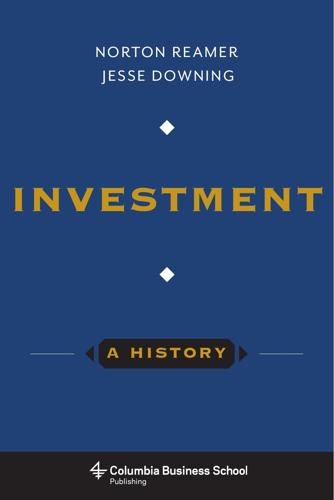
Investment: A History
by
Norton Reamer
and
Jesse Downing
Published 19 Feb 2016
FDIC, Examination of the Banking Crises, 230; Congressional Budget Office (CBO), The Economic Effects of the Savings and Loan Crisis (Washington, DC: Congressional Budget Office, 1992), 7. FDIC, Examination of the Banking Crises, 221–222. 356 45. 46. 47. 48. 49. 50. 51. 52. 53. 54. 55. 56. 57. 58. 59. 60. 61. 62. 4. New Clients and New Investments CBO, Effects of the Crisis, 7–8. FDIC, Examination of the Banking Crises, 231. Ibid., 225–227. Ibid., 232. Timothy Curry and Lynn Shibut, “The Cost of the Savings and Loan Crisis: Truth and Consequences,” FDIC Banking Review 13, no. 2 (2000): 30–33. Board of Governors of the Federal Reserve System, “Money Stock Measures—H.6,” July 3, 2014, http://www.federalreserve.gov/RELEASES /h6/20140703; R.
…
During the years leading up to the Great Recession of 2007–2009, there were widespread attitudes in various administrations and Congresses that led to relaxation of some of the more restrictive prohibitions that were the legacy of the Great Depression and subsequent financial crises such as the savings and loan crisis of the late 1980s, various international crises of the 1990s, and the collapse of Long-Term Capital Management in 1998. One notable example was the repeal of Glass-Steagall in the late 1990s. The Glass-Steagall Act passed by Congress in the 1930s prevented commercial banks from owning investment banks in a post-Depression attempt to prevent deposit-taking institutions from engaging in high-risk financial transactions.33 Throughout the period, competitive regulatory agencies were allowed to develop, gaps in regulatory coverage occurred and were not corrected, clarity in regulatory responsibilities was not established, and lapses in regulatory enforcement occurred.
…
“Wrestling with Reform: Financial Scandals and the Legislation They Inspired.” Securities and Exchange Commission Historical Society. May 1, 2013. http://www.sechistorical.org/museum /galleries/wwr/index.php. Collins, Michael. Monday and Banking in the UK: A History. New York: Routledge, 1988. Congressional Budget Office. The Economic Effects of the Savings and Loan Crisis. Washington, DC: Congressional Budget Office, 1992. ——. “Report on the Troubled Asset Relief Program—October 2012.” October 11, 2012. http://www.cbo.gov/sites/default/files/TARP10 -2012_0.pdf. Cooke, Colin Arthur. Corporation, Trust and Company: An Essay in Legal History. Cambridge, MA: Harvard University Press, 1951.
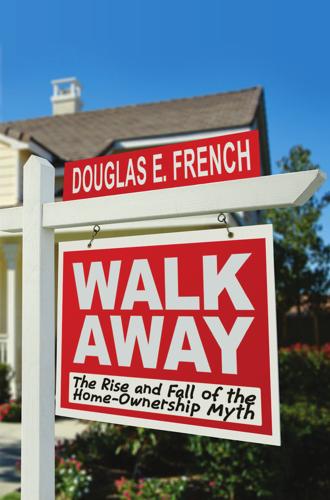
Walk Away
by
Douglas E. French
Published 1 Mar 2011
Whether it would really make a difference for home values or not, President Reagan wasn’t going to mess with the mortgage interest deduction, telling the National Association of Realtors in 1984, “I want you to know that we will preserve the part of the American dream which the home-mortgage-interest deduction symbolizes.” Two years later, Congress ended the deductibility of interest on credit-card and other consumer loans in the tax-reform act of 1986, but left the mortgage deduction in place. After the Savings & Loan crisis, the 1989 Congress passed the Financial Institutions Reform, Recovery and Enforcement Act (FIREA) which did away with the FHLBB with Freddie Mac’s board becoming shareholder controlled. Three years later, in 1992, Congress created the Office of Federal Housing Enterprise Oversight (OFHEO) to regulate Fannie and Freddie’s safety and soundness, a job OFHEO either didn’t do or wasn’t allowed to do due to interference from the GSE’s friends on Capitol Hill.
…
Index A | B | C | D | E F | G | H | I | J K | L | M | N | O P | R | S | T | U V | W | Z 13 Bankers, 51 60 Minutes, 1 A Acorn, 33 Advances In Behavioral Economics, 69 American Individualism, 20 Architect’s Small House Service Bureau, 20 Are Home Prices The Next Bubble, 36 Ariely, Dan, 72 Aristotle, 46 Assets and the Poor, 32 Atlantic, The, 50 Austrian Business Cycle Theory, 66 Austrian Economics: An Anthology, 6 B Babcock, Fredrick, 26 George Babbitt, 26 Bank of America, 11, 16, 17, 49, 56 Barnes, Alyson, 8 Barron’s, 42 Bernanke, Ben, 36, 39 Better Homes in America Movement, 20 Beyond Greed and Fear, 71 Blackstone Group, 8 Bloomberg News, 8 Bourgeois Utopias, 298 Building for Babbitt, 20 Building Suburbia, 11 Building the Dream, 21 Bureaucracy, 75 Bush, George W., 36 C Caldwell, Phyllis, 50 Carmon, Ziv, 72 Casey, Doug, 60 CBS, 1 Cisneros, Henry, 33 CNBC, 3, 16 congressional loan conduit, 31 chart Conquer the Crash, 60 Courson, John, 10 Cutaia, Susan and Anthony, 39, 41 D De Coster, Karen, 5 Discriminating Risk, 31, 54 Duebel, Achim, 22 E Edelman, Ric, 42 Einhorn, David, 56 Elliott Wave Theorist, 60 Empowerment Network, The, 32 Ethics of liberty, The, 46, 54 Ethics of Money Production, The, 61 Exotic Preferences, 70 Expanding the Opportunities, 32 Equity Office Properties, 8 F Fannie Mae Bank of America, 16–17 CEO James Johnson, 37 conventional mortgages, 31 expanded government role, 52 FDR created, 28 HUD, 30 industry centralization, 34 locking out borrowers, 59 loosened loan criteria, 33 losses, 13 no incentive to negotiate, 49 Rothbard view, 48 underwater houses, 76–77 Fair Housing Act, 30 FDIC, 35, 39, 48 Federal Home Loan Banking System, 22 Federal Housing Administration, 22, 23, 29 Federal Reserve, 4, 5, 35, 36, 39, 42 Financial Times, 53 FIREA, 32 First American Core Logic, 3 Fishman, Robert, 28, 29 For a New Liberty, 54 Freddie Mac bond losses, 17 congressional authorization, 31 entrepreneurial risk, 56 expanded government role, 52 industry centralization, 34 loosened loan criteria, 33 Mortgage Electronic Registration System, 13 mortgages back to tenders, 16 Rothbard view, 48 G Geithner, Tim, 53, 57 Genesove, David, 69 Ginnie Mae, 30–31 Goodman, Laurie, 49 Goodman, Peter S., 36, 37, 39 Government National Mortgage Asssociation, 3, 52 Grant’s Interest Rate Observer, 46 Great Depression, 4, 26, 52 Greenspan, Alan, 35 Gross, Bill, 52 Guiso, Luigi, 45 H Hagerty, James R., 49 Hayden, Dolores, 22, 28 history of home values, 2 chart Home Depot, 5 Home Modernization Bureau, 20 Hoover, Herbert, 4, 20, 21, 36 HOPE, 32 Housing Advisory Council, 26 Hudson, Kris, 9 Hülsmann, Jörg Guido, 61, 62 Hutchinson, Janet, 20, 27–28 I Indiviglio, Daniel, 50 J Johnson, James, 37 Johnston, Joseph F., 8 journal, Association for Financial Counseling, 41 journal of Financial Planning, 41, 42 journal of Markets & Morality, 8 K Kemp, Jack, 32–33 Kudlow, Larry, 16 Kwak, James, 52 L La Valle, Nye, 14 Langone, Ken, 5 Las Vegas, 3, 49, 50, 57, 71, 79 Las Vegas Review journal, 50 Legal Studies Discussion Paper, 1 Levitin, Adam, 12 Levitt, William, 20 Lewis, Sinclair, 26 LewRockwell.com, 5 Lira, Gonzalo, 12–14 Lowenstein, George, 70 Lowenstein, Roger, 11, 62 Luth, Don, 62 M Macerich Co., 9 Market For Liberty, The, 56 Marketing and Financing Home Ownership, 19 Mauldin, John, 14 Mayer, Christopher, 69 McCarthy, Jonathan, 36 Miami Beach, 3 Mind of the Market, The, 71 Mises, Ludwig von, 6, 75 Moffett, James, 26 Morgan Stanley, 8, 9 Morgenson, Gretchen, 16 MSNBC, 16 Murin, Joseph, 3, 5 Murphy, Larry, 50 N Naked Capitalism, 14 National Association of Real Estate Boards, 20 National Association of Realtors, 31 National Homeownership Strategy, 33–34 Natural law and the fiduciary duties, 8 New Deal, 23 New York Times, iv, 16, 51 O Obama, Barack Hussein, 14 OFHEO, 32 Otis, James, iii Own Your Own Home, 4, 19, 20 P Past Due, 36 Paulson Jr., Henry M., 10 Peach, Richard W., 36 Phoenix, 3, 51 PIMCO, 52, 53 Pines, Michael, 16 Pinto, Edward, 33 Powell, Michael, 51 Power and Market, 57 Prechter, Robert, 60 Predictably Irrational, 72 Prelec, Dražen, 70 private property, iii, 24–25, 27–28, 47 Pruitt, A. D., 9 R Ranieri, Lewis, 49 Ratigan, Dylan, 16 Reagan, Ronald, 31 Reynolds, Anna and Charlie, 48 Rise of the Community Builders, The, 20 Rothbard, Murray, 46–48, 54–55, 57, 60 S Sanders, Anthony, 37 San Francisco, 8, 9 Sapienza, Paola, 45 Savings & Loan crisis, 32 Schakett, Jack, 50 Sennholz, Hans, 61 Sharga, Rick, 50 Shefrin, Hersh, 71 Shermer, Michael, 71 Sherraden, Michael, 32 Shiller, Robert J., 2 Simon Property Group, 9 Slater, Robert, 39 Smith, Alfred E., 21 Smith, Yves, 14 Snow, Marian, 40, 41 strategic default default moralists, 58 defined, 1 divided opinion, 5 Emotional Drivers, 69 Moral and Social Constraints, 45 Morgan Stanley, 8 what is the downside, v Stop Sitting on Your Assets, 40 Stuart, Guy, 31, 34, 54 Sugrue, Thomas J., 19, 23 T Tannehill, Linda and Morris, 56 Task, Aaron, 11 Taubman, Robert, 9 Thaler, Richard, 71 Thompson, Diane E., 51 Tilson, Whitney, 49, 63 U Underwriting Manual, 24–26 under water, 3, 4, 10 University of Chicago, 1, 45 Untapped Riches, 39 V VA loan program, 29–30 Vornado Realty Trust, 9 W Wall Street Journal, iv, 9–11, 33, 49 Weiss, Marc, 19, 20 Whalen, Chris, 16, 56 White, Brent T., 1, 2, 7, 46, 75 Wikipedia, 31 Wright, Gwendolyn, 21, 27 Z Zell, Sam, 8 Zingales, Luigi, 1, 45 About the Author Douglas E.
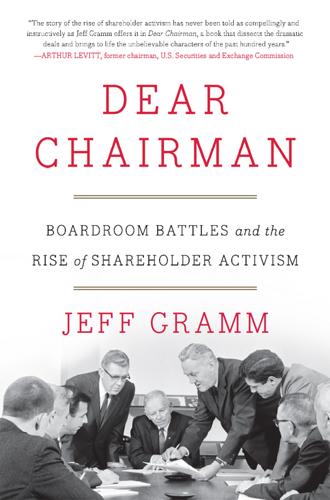
Dear Chairman: Boardroom Battles and the Rise of Shareholder Activism
by
Jeff Gramm
Published 23 Feb 2016
See also Scherer, Robert Pauli acquisitions of, 125–28, 268–69n20 after buyout by Shearson Lehman Hutton, 144 board decision to not sell, 130, 133 board problems, 139–41 hardshell capsule manufacturing and, 127, 129, 144 Karla Scherer’s joining of board, 122–23, 128–29 Karla Scherer’s letters to shareholders, 134–35, 136, 227–28 Karla Scherer’s pitch to sell, 129–30, 133, 227–28 letters to shareholders, 134–36 loss of market share, 126 Manufacturers National Bank and, 136–37 under Robert’s leadership, 125 sale of, 138 softgel business of, 122, 125–26, 127, 129, 144, 145 staggered board of, 195 Ruane, Bill, 4 Russell, Stephen, 231 Sanborn Map, 49 Sarbanes-Oxley Act, 140, 143 Sass, Martin D., 149 Saturday Evening Post, 21, 123, 124, 128 Saturn (GM), 266n36 savings and loan crisis, 87, 90, 264n65 Saxon Industries, 79 Schacht, Kurt, 177 Schedule 13D. See 13D filings; 13D letters Scherer, John, 129, 130, 133–37, 227–28, 269n26 Scherer, Karla, xii as asset to R. P. Scherer board, 143 director independence and, 141 disillusionment with Scherer management, 122–23 early life of, 128–29, 269nn25–26 letters to R.
…
That was twenty-five years ago. Within a year of Milken’s sentencing, the U.S. economy sprang back to life. As it turned out, the 1990–91 recession was a mild affair that stood between the deal decade and the longest expansion in American history—1991 until the bursting of the Internet bubble. The S&L crisis, which spanned a decade, lasted until 1995. At the end it was clear that the industry’s collapse into widespread fraud was not caused by the handful of doomed S&Ls loaded up with Milken’s bonds.76 And rather than disappear with Milken, the junk bond market thrived. In the late 1990s, U.S. junk bond issuance skyrocketed to levels many times higher than the peak years of the 1980s.
…
Stevens, King Icahn, 187. 61. Ibid., 304. 62. Brill, “The Roaring Eighties.” 63. Robert A. G. Monks and Nell Minow, Corporate Governance, 5th ed. (Hoboken, NJ: Wiley, 2011), 288. 64. T. Boone Pickens, Boone (Boston: Houghton Mifflin, 1987), xii–xiii. 65. The 1990–91 recession ran from July 1990 to March 1991. The S&L crisis went from 1986 to 1995. 66. “The Milken Sentence; Excerpts from Judge Wood’s Explanation of the Milken Sentencing,” New York Times, November 22, 1990. 67. Kurt Eichenwald, “Wages Even Wall Street Can’t Stomach” New York Times, April 3, 1989. 68. Robert Sobel, Dangerous Dreamers: The Financial Innovators from Charles Merrill to Michael Milken (New York: Wiley, 1993), 94. 69.
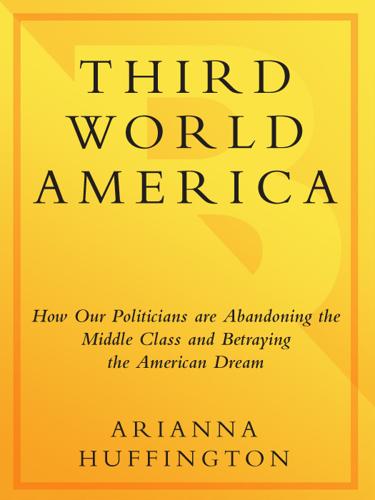
Third World America: How Our Politicians Are Abandoning the Middle Class and Betraying the American Dream
by
Arianna Huffington
Published 7 Sep 2010
The investment paid off in spades with the rollback of the financial regulations that had kept the worst excesses of corporate greed in check since the Great Depression, leaving in their place a shaky edifice of self-policing and cowed regulators powerless to rein in the galloping bulls of Wall Street. The results for corporate America: record profits, record pay packages, and record bonuses. The results for the rest of us: the savings and loan crisis, the corporate scandals of the Enron era, and the economic collapse we are still struggling to dig our way out of. That collapse, by the way, has only caused the banking lobbyists to redouble their efforts in an all-hands-on-deck effort to thwart financial reform. Over the course of the debate about reforming Wall Street, the finance industry—which has been bailed out with trillions of taxpayer dollars and cheap loans from the Fed—has spent an estimated $1.4 million a day to convince our lawmakers to kill real reform.11 For instance, when the Senate was crafting its financial reform bill, it included absolutely no reform of Fannie Mae and Freddie Mac.12 This despite the fact that in just the first quarter of 2010 Freddie—one-half of what the New York Times’s Gretchen Morgenson calls “the elephant in the bailout”—reported a loss of $6.7 billion.13 As of May 2010, according to Morgenson, “serious delinquencies in Freddie’s single-family conventional loan portfolio—those more than 90 days late—came in at 4.13 percent, up from 2.41 percent for the period a year earlier.”14 And the number of foreclosed units Freddie controlled stood at nearly 54,000, up from 29,145 at the end of March 2009.
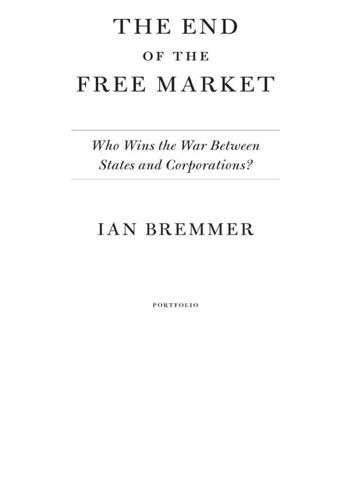
The End of the Free Market: Who Wins the War Between States and Corporations?
by
Ian Bremmer
Published 12 May 2010
In any case, pure capitalism has never existed in the real world, and only the most ideologically committed of economic anarchists believe that it should. Markets can’t meet every human need, fear and greed ensure that markets will never work perfectly, and no market participant enjoys perfect information. Market failure didn’t begin with the global recession of 2009, the bank failures of 2008, the credit crunch of 2007, the savings-and-loan crisis of the 1980s,3 or even the stock market crash of 1929. Those investing heavily in the South Sea Company in 1720, the victims of irrational exuberance over the firm’s monopoly on trade in the South Seas, might have saved themselves some heartache had they learned the lessons of the Dutch tulip mania of 1637.4 Each successive market meltdown creates a temporary surge of momentum behind government efforts to ensure that it never happens again.
…
Drucker, “Trading Places,” National Interest, Spring 2005. 14 Antoine van Agtmael, The Emerging Markets Century: How a New Breed of World-Class Companies Is Overtaking the World (New York: Free Press, 2007). 15 From Bill Clinton’s 1996 State of the Union Address, http://clinton4.nara.gov/WH/New/other/sotu.html. 16 Forbes magazine’s Global 2000 list of companies for 2008. CHAPTER TWO : A Brief History of Capitalism 1 Adam Smith, The Wealth of Nations (1776; New York: Modern Library, 1994), book 4, ch. 2, pp. 484-85. 2 Adam Smith, The Theory of Moral Sentiments (1759; Cambridge, UK: Cambridge University Press, 2002), Introduction. 3 During the savings-and-loan crisis of the 1980s (and early 1990s) more than a thousand savings-and-loan associates failed at a cost of at least $125 billion to the U.S. federal government. 4 The South Sea Company, founded in 1711, enjoyed a monopoly over British trade with Spanish South America and the Pacific region. Its share price rose 800 percent in little more than six months in 1720 when holders of government bonds were offered swap shares in the company at discounted rates.
…
Rousseff, Dilma Royal Dutch Shell Rozanov, Andrew Rudd, Kevin Russia banks of budget deficit of economic crisis in economic reform in Georgia’s war with IPR violations by liberalization of mercantilism in and national security of democracies oligarchs in resource exporting and resource nationalism by sovereign wealth funds in state-owned enterprises in trade by Ukraine and see also Gazprom; Soviet Union Russia Petroleum Sadat, Anwar Sakhalin 2 project Samsung Sanabil Al Saudia Sarkozy, Nicolas Saud, Abdullah bin Abdul Aziz al- Saudi Arabia Saudi Arabia Investment Authority Saudi Arabian Monetary Agency (SAMA) Saudi Aramco Saudi Basic Industries Corporation (SABIC) savings-and-loan crisis Scandinavia Schengen agreement Schumpeter, Joseph Sechin, Igor September 11, 2001, terrorist attacks of Serra, José shadow banking system Shanghai Automotive Industry Corporation Shaw, George Bernard Shell Sichuan, China Singapore Singapore Government Investment Corporation (GIC) Singh, Manmohan Sinopec (China Petroleum and Chemical Corporation) slavery Smith, Adam Smoot-Hawley Tariff Act (1930) Sonatrach Sony Sourcefire South Africa South African Trade Unions South Korea South Sea Company Sovereign Wealth Fund Institute sovereign wealth funds (SWFs) Soviet Union collapse of creation of see also Russia Spain Stalin, Joseph State Administration of Foreign Exchange (SAFE) state capitalism and fast-emerging markets free-market vs.
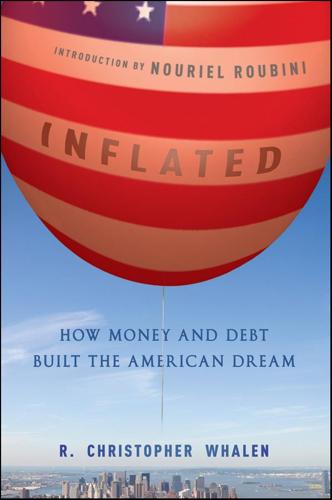
Inflated: How Money and Debt Built the American Dream
by
R. Christopher Whalen
Published 7 Dec 2010
The combination of direct government support for affordable housing, active advocacy, and credit availability by government-sponsored enterprises such as Fannie Mae and Freddie Mac and intense lobbying and marketing efforts by the real estate, home building, banking, and mortgage lending industries, created the circumstances for the subprime bust of 2007–2010. That bust had its roots in the savings and loan crisis of the late 1980s and the end of the first modern real estate recession in the United States. During a 2008 interview at the height of the financial crisis, Robert Feinberg, a veteran Washington consultant and observer of Capitol Hill, put the growth of the real estate lobby in historical context: When I first started working on the Hill in the early 1970s, there was a conservative Democrat on the Education and Labor Committee named Edith Green who coined the term “Education and Labor Industrial Complex” to describe what she was up against regarding education policy.
…
While Chase officials vociferously denied that any bailout had occurred, the pattern of discount window loans during the period and off-the-record statements by officials at the Fed and several private banks suggest very strongly that Corrigan’s personal intervention prevented a major banking crisis at the end of 1990 and the peak of the S&L crisis. Rational observers would agree that the collapse of a major banking institution is not a desirable outcome, but the larger, more fundamental issue is whether any private bank, large or small, should be subject to the discipline of the marketplace. The same issues of moral hazard and “too big to fail” that have been the subject of fierce debate and reform legislation in the Congress during 2009 and 2010 have their roots in crises two decades earlier.
…
People in Washington say that nobody saw this crisis coming, but there were clear signs of trouble for anyone looking.40 The respected housing finance expert Josh Rosner told the story of the real estate bust in September 2007: The reasons for the boom in housing in the past decade come from the structural changes in the housing industry over a decade before. Most of these changes were a result of the 1980s recession. We came out of the economic slump and a lot of the industry players had lost their shirts in the S&L crisis. We saw Fannie Mae insolvent on a mark-to-market basis in 1986 and that was largely because of the portfolio of foreclosed real estate. We saw housing in 1993 and 1994 with home ownership rates stagnant, in fact exactly where they were at the beginning of the 1980s. Home ownership rates have consistently ranged in this country between 62 and 64 percent during the post-WWII period, and yet affordability had actually locked people out.41 Rosner argues that the “problem” of home affordability saw the creation of the largest public–private partnership to date, started as the National Partners in Home Ownership in 1994.
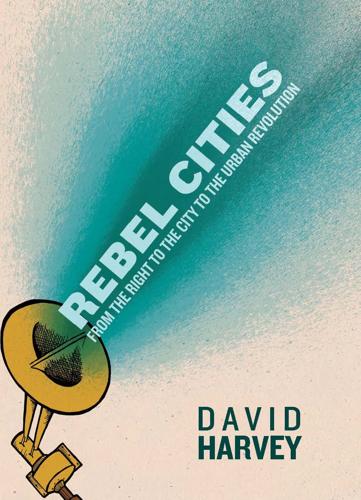
Rebel Cities: From the Right to the City to the Urban Revolution
by
David Harvey
Published 3 Apr 2012
But since they cite innumerable "prudentially chosen" h istorical exam ples to bolster their neolibcral nostrums, how come they m issed that the crisis of 1 973 originated in a global property m arket crash that brought down several banks? D id they not no tice that the comm ercial property led Savings and Loan crisis of the late 1 9 80s in the United States saw several hundred financial institutions go belly- up at the cost of some US$200 billion to US t axpayers (a situation that so exercised William Isaacs, then chairman of the Federal D eposit Insurance Corporation, that in 1 98 7 he threatened the American B anke rs Association with nation alization unless they mended their ways ) ?
…
But there were no serious problems in the property m arkets in France, G ermany, the Netherlands, or Poland, or at that time throughout Asia. A regional crisis centered in the United States went glob al, to be sure, in ways that did not happen in the cases of, say, Japan or Sweden in the early 1 990s. But the S&L crisis centered on 1 987 (the year of a serious stock crash that is typically and erroneously viewed as a totally separate incident) had global ramifications. Th e same was true of the much neglected global property market crash of early 1 9 73 . Conventional w isdom has it that only the oil price hike in the fall of 1 9 73 mattered.

MegaThreats: Ten Dangerous Trends That Imperil Our Future, and How to Survive Them
by
Nouriel Roubini
Published 17 Oct 2022
The gold-exchange standard had been designed after World War II to safeguard global monetary stability. Nixon’s decision had short-term benefits, but longer-term risks. The five decades since then have seen paralyzing vicissitudes in advanced economies (let alone emerging markets): stagflation in the seventies; a US real estate bust leading to a savings and loan banking crisis in the eighties; a Scandinavian banking crisis in the early nineties; a European Exchange-Rate Mechanism currency crisis in 1992; the Japanese great stagnation and deflation since the nineties after the collapse of its real estate bubble; the collapse of Long-Term Capital Management (LTCM) despite two Nobel laureates at its helm in 1998; the internet boom and subsequent bust and corporate defaults of the early 2000s; the housing and credit boom-and-bust leading to the Global Financial Crisis beginning in 2007; the eurozone crisis of the early 2010s; and of course the COVID-19 crisis of 2020.
…
Economists single out “moral hazard”—shorthand for economic bailouts that induce borrowers and investors to throw caution to the wind. Why worry about risk if someone else will shoulder your losses? Policy decisions have many unintended consequences, not least the subprime mortgage imbroglio that turned into the Global Financial Crisis of 2008. During the savings and loan crisis of the 1980s, when speculative real estate loans caused innumerable small financial institutions to go belly-up, regulators formed the Resolution Trust Corporation, which bundled risky assets for sale to investors with sturdy risk appetites. Savvy buyers saw high returns on risky real lending and snapped up fire-sale bargains.
…
A firm whose only asset was a delicatessen in New Jersey with slim revenues rocketed to $100 million in market value.8 Home prices followed suit as apartment dwellers raced to trade urban ambience for suburbs and backyards. Flawed human judgment—like “irrational exuberance” and excessive risk taking—connects the Great Depression, the savings and loan crisis, the dot-com bubble, and the financial crisis of 2008. It’s a weakness we cannot correct. Investors should have learned three times over to rein in suicidal tendencies. But as the saying goes, success on Wall Street requires two components: a rising market and a short memory. Instead of real steps to promote stability, we were hurtling yet again toward a self-inflicted boom-and-bust cycle, this one more punishing than its predecessors.
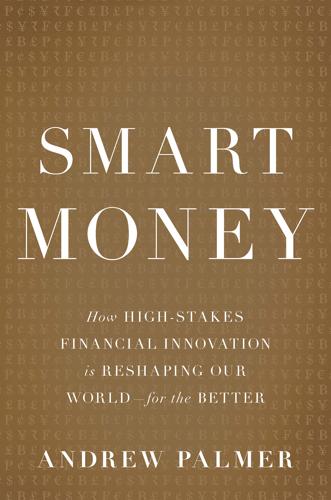
Smart Money: How High-Stakes Financial Innovation Is Reshaping Our WorldÑFor the Better
by
Andrew Palmer
Published 13 Apr 2015
Globalization increased the complexity of multinational companies’ operations, and the Asian debt crisis in the late 1990s drove home the risks of operating in emerging markets. Credit-default swaps promised a way for banks to reduce the impact of defaults, in the aftermath of a wave of bank failures experienced during America’s savings-and-loan crisis in the 1980s, because the sellers of a swap promised a payout if the borrower in question was unable to pay. Needs are not always so noble, of course. By making their lending seem less risky, credit-default swaps also meant that regulators were happy to allow banks to fund themselves with less equity capital.
…
Flowers, 69, 81 Japan, banking crisis in, 75 Japan, financial innovation in, 27, 29, 39–40 Jha, Saumitra, 27 Jiménez-Martín, Sergi, 73 Job creation, young small firms and, 147–148 Joint-stock firms, 23 JPMorgan, 77, 169 Jump-to-default risk, 238 Käärmann, Kristo, 190 Kabbage, 218 Kahneman, Daniel, 47, 137 Kanjorski, Paul, 145 Kauffman Foundation, 158 Kennedy, John F., 32 Keys, Benjamin, 48 Kharroubi, Enisse, 79 Kickstarter, 172 King, Stephen, 99 Klein, David, 182 Krugman, Paul, xv Lahoud, Sal, 166 Lang, Luke, 153, 161–162 Laplanche, Renaud, 179, 184, 188, 190, 193–194, 196–197 Latency, 53 Law of large numbers, 17 Layering, 57 Left-digit bias, 46 Lehman Brothers, x, 44, 65 Lending direct, 84 marketplace, 184 payday, 200 relationship-based, 11, 151, 206–208 secured, xiv, 76 unsecured, 206 See also Loans; Peer-to-peer lending Lending Club, 172, 179–180, 182–184, 187, 189, 194–195, 197 Leonardo of Pisa (Fibonacci), 19 Lerner, Josh, 59 Lethal pandemic, risk-modeling for demographic profile, 230 exceedance-probability curve, 231–232, 232 figure 3 historical data, 228–229 infectiousness and virulence, 229–230 location of outbreak, 230–231 Leverage, 51, 70–71, 80, 186, 188 Leverage ratio, 76–77 Lewis, Michael, 57 Liber Abaci or Book of Calculation (Fibonacci), 19 LIBOR (London Interbank Offered Rate), 41 Liebman, Jeffrey, 98 Life expectancy government reaction to, 128–129 projections of, 124–127, 126 figure 2 ratio of young to older people, 127–128 Life-insurance policies, 142 Life-settlements industry, 142–143 Life table, 20 Limited liability, 212 Liquidity, 12–14, 39, 185–186 List, John, 109 The Little Book of Behavioral Investing (Montier), 156 Lo, Andrew, 113–115, 117–123 Loans low-documentation, 48–49 secured, 76 small business, 181, 216 student, 164, 166–167, 169–171, 182 syndicated, 41 Victory Loans, 28 See also Lending; Peer-to-Peer lending Logistic regression, 201 London, early fire insurance in, 16–17 London, Great Fire of, 16 London Interbank Offered Rate (LIBOR), 41 Long-Term Capital Management, 123 Longevity, betting on, 143–144 Loss aversion, 136 Lotteries, 212, 213 Low-documentation loans, 48–49 Lumni, 165, 168, 175 Lustgarten, Anders, 111 Lynn, Jeff, 160–161 Mack, John, 180 Mahwah, New Jersey, 52, 53 Marginal borrowers assessment of, 216–217 behavioral finance and, 208–214 industrialization of credit, 206 microfinance and, 203 savings schemes, 209–214 small businesses, 215–219 unsecured lending to, 206 Wonga, 203, 205, 208 Marginal borrowers (continued) ZestFinance, 199, 202, 205–206 Maritime piracy, solutions to, 151–152 Maritime trade, role of in history of finance, 3, 7–8, 14, 17, 23 Market makers, 15–16, 55 MarketInvoice, 195, 207, 217–218 Marketplace lending, 184 Markowitz, Harry, 118 Massachusetts, use of inflation-protected bonds in, 26 Massachusetts, use of social-impact bonds in, 98 Matching engine, 52 Maturity transformation, 12–13, 187–188, 193 McKinsey & Company, ix, 42 Mercator Advisory Group, 203 Merrill, Charles, 28 Merrill, Douglas, 199, 201 Merrill Lynch, 28 Merton, Robert, 31, 113–114, 123–124, 129–132, 142, 145 Mian, Atif, 204 Michigan, University of, financial survey by, 134–135 Microfinance, 203 Micropayment model, 217 Microwave technology, 53 The Million Adventure, 213–214 Minsky, Hyman, 42 Minsky moment, 42 Mississippi scheme, 36 Mitchell, Justin, 166–167 Momentum Ignition, 57 Monaco, modeling risk of earthquake in, 227 Money, history of, 4–5 Money illusion, 73–74 Money laundering, 192 Money-market funds, 43, 44 Monkeys, Yale University study of loss aversion with, 136 Montier, James, 156–157 Moody, John, 24 Moody’s, 24, 235 Moore’s law, 114 Morgan Stanley, 188 Mortgage-backed securities, 49, 233 Mortgage credit by ZIP code, study of, 204 Mortgage debt, role of in 2007–2008 crisis, 69–70 Mortgage products, unsound, 36–37 Mortgage securitization, 47 Multisystemic therapy, 96 Munnell, Alicia, 129 Naked credit-default swaps, 143 Nature Biotechnology, on drug-development megafunds, 118 “Neglected Risks, Financial Innovation and Financial Fragility” (Gennaioli, Shleifer, and Vishny), 42 Network effects, 181 New York, skyscraper craze in, 74–75 New York City, prisoner-rehabilitation program in, 108 New York Stock Exchange (NYSE), 31, 52, 53, 61, 64 New York Times, Merrill Lynch ad in, 28 Noncorrelated assets, 122 Nonprofits, growth of in United States, 105–106 Northern Rock, x NYMEX, 60 NYSE Euronext, 52 NYSE (New York Stock Exchange), 31, 52, 53, 61, 64 OECD (Organization for Economic Co-operation and Development), 128, 147 Oldfield, Sean, 67–68, 80–84 OnDeck, 216–218 One Service, 94–95, 105, 112 Operating expense ratio, 188–189 Options, 15, 124 Order-to-trade ratios, 63 Oregon, interest in income-share agreements, 172, 176 Organization for Economic Co-operation and Development (OECD), 128, 147 Overtrading, 24 Packard, Norman, 60 Pandit, Vikram, 184 Park, Sun Young, 233 Partnership mortgage, 81 Pasion, 11 Pave, 166–168, 173, 175, 182 Payday lending Consumer Financial Protection Bureau, survey on, 200 information on applicants, acquisition of, 202 underwriting of, 201 PayPal, 219 Peak child, 127 Peak risk, 228 Peer-to-peer lending advantages of, 187–189 auction system, 195 big investors in, 183 borrowers, assessment of, 197 in Britain, 181 commercial mortgages, 181 CommonBond, 182, 184, 197 consumer credit, 181 diversification, 196 explained, 180 Funding Circle, 181–182, 189, 197 investors in, 195 Lending Club, 179–180, 182–184, 187, 189, 194–195, 197 network effects, 181 ordinary savers and, 184 Prosper, 181, 187, 195 RateSetter, 181, 187, 196 Relendex, 181 risk management, 195–197 securitization, 183–184, 196 Peer-to-peer lending (continued) small business loans, 181 SoFi, 184 student loans, 182 Zopa, 181, 187, 188, 195 Pensions, cost of, 125–126 Perry, Rick, 142–143 Peterborough, England, social-impact bond pilot in, 90–92, 94–95, 104–105, 112 Petri, Tom, 172 Pharmaceuticals, decline of investment in, 114–115 Piracy Reporting Centre, International Maritime Bureau, 151 Polese, Kim, 210 Poor, Henry Varnum, 24 “Portfolio Selection” (Markowitz), 118 Prediction Company, 60–61 Preferred shares, 25 Prepaid cards, 203 Present value of cash flows, 19 Prime borrowers, 197 Prince, Chuck, 50–51, 62 Principal-agent problem, 8 Prisoner rehabilitation programs, 90–91, 94–95, 98, 108, 112 Private-equity firms, 69, 85, 91, 105, 107 Projection bias, 72–73 Property banking crises and, xiv, 69 banking mistakes involving, 75–80 behavioral biases and, 72–75 dangerous characteristics of, 70–72 fresh thinking, need for, xvii, 80 investors’ systematic errors in, 74–75 perception of as safe investment, 76, 80 Prosper, 181, 187, 195 Provisioning funds, 187 Put options, 9, 82 Quants, 19, 63, 113 QuickBooks, 218 Quote stuffing, 57 Raffray, André-François, 144 Railways, affect of on finance, 23–25 Randomized control trials (RCTs), 101 Raphoen, Christoffel, 15–16 Raphoen, Jan, 15–16 RateSetter, 181, 187, 196 RCTs (randomized control trials), 101 Ready for Zero, 210–211 Rectangularization, 125, 126 figure 2 Regulation NMS, 61 Reinhart, Carmen, 35 Reinsurance, 224 Relendex, 181 Rentes viagères, 20 Repurchase “repo” transactions, 15, 185 Research-backed obligations, 119 Reserve Primary Fund, 44 Retirement, funding for anchoring effect, 137–138 annuities, 139 auto-enrollment in pension schemes, 135 auto-escalation, 135–136 conventional funding, 127–128 decumulation, 138–139 government reaction to increased longevity, 128–129 home equity, 139–140 life expectancy, projections of, 124–127, 126 figure 2 life insurance policies, cash-surrender value of, 142 personal retirement savings, 128–129, 132–133 replacement rate, 125 reverse mortgage, 140–142 savings cues, experiment with, 137 SmartNest, 129–131 Reverse mortgages, 140–142 Risk-adjusted returns, 118 Risk appetite, 116 Risk assessment, 24, 45, 77–78, 208 Risk aversion, 116, 215 Risk-based capital, 77 Risk-based pricing model, 176 Risk management, 55, 117–118, 123, 195–197 Risk Management Solutions, 222 Risk sharing, 8, 82 Risk-transfer instrument, 226 Risk weights, 77–78 Rogoff, Kenneth, 35 “The Role of Government in Education” (Friedman), 165 Roman Empire business corporation in, 7 financial crisis in, 36 forerunners of banks in, 11 maritime insurance in, 8 Rotating Savings and Credit Associations (ROSCAs), 209–210 Roulette wheel, use of in experiment on anchoring, 138 Royal Bank of Scotland, 186 Rubio, Marco, 172 Russia, mortgage market in, 67 S-curve, in diffusion of innovations, 45 Salmon, Felix, 155 Samurai bonds, 27 Satsuma Rebellion (1877), 27 Sauter, George, 58 Save to Win, 214 Savings-and-loan crisis in US (1990s), 30 Savings cues, experiment with, 137 Scared Straight social program, 101 Scholes, Myron, 31, 123–124 Science, Technology, and Industry Scoreboard of OECD, 147 Securities and Exchange Commission (SEC), 54, 56, 57, 58, 64 Securities markets, 14 Securitization, xi, 20, 37–38, 117–122, 183–184, 196, 236 Seedrs, 160–161 Sellaband, 159 Shared equity, 80–84 Shared-equity mortgage, 84 Shepard, Chris, xii–xiii Shiller, Robert, xv–xvi, 242 Shleifer, Andrei, 42, 44 Short termism, 58 SIBs.
…
Mungo’s, 96 Standard & Poor’s (S&P), 24, 49, 157, 184, 234 Standardization, 39–41, 45, 47 Stevens, David, 151–152 Stevens, Teresa, 151–153 Stock exchanges, 14–16 Stocker, Anil, 207, 217 Stop-loss orders, 56 Straw, Jack, 94 Structured Bioequity, xii–xiii Structured finance, 237–238 Structured investment vehicle, 37 Stub quotes, 56 Student loans, 164, 166–167, 169–171 Stumpf, John, 192 Subprime mortgage tranches, loss amounts on, 233 Subprime mortgages, x, 79, 197–198, 233 Sufi, Amir, 204 Summers, Larry, 180 Suppa, Enrico, 9 Sutherland, Martinez, 89–90, 95, 105, 112 Svenska Handelsbanken, 206–207 Swaps, credit-default, 29–30 Swaps, interest-rate, 29 Swaziland, social-impact bonds (SIBs) in Sweden, banking crisis in, 75 Syndicated loans, 41 Tail risks, 221, 237 Tanzania, financial liberalization and, 34 Testosterone and cortisol, effect of on risk appetite and aversion, 116 Thailand, insurance claims for flooding, 225 Thaler, Richard, 137 Thales of Miletus, 10 Thayer, Ignacio, 210–211 Thiel, Peter, 163 This Time is Different (Reinhart and Rogoff), 35 Titmuss, Richard, 110 TransferWise, 190–192 Trente demoiselles de Genève, 22 True Link Financial, 144 Tufano, Peter, 59, 213–214 Tulipmania, 33, 36 Tversky, Amos, 137 UBS, 60 Uganda, social-impact bonds (SIBs) in, 103 Unbanked households, 200 United States aggregate value of property, 69 consumer debt, 183, 204 corporate debt, 120 cost of diagnosed diabetes, 102 cost of entitlements, 100 credit card debt, 183 general solicitation by private firms, 153–154 government interest in alternatives to student debt, 168 government spending, 99 home-ownership rates, 28, 85, 170 household debt, 205 leverage ratio, 2007, 77 life expectancy, 125 median house price, 70 monetary charitable gifts, 109 money raised through IPOs, 120 mortgage debt, 69 nonprofits in, 105–106 prepaid cards, 203 property bubbles, 74–75 real estate cycles, 237 savings-and-loan crisis (1990s), 30 social-impact bonds (SIBs), 98 student debt, 169 Unsecured lending, 206 Upstart, 166–168, 173, 175, 182 Used-car market, use of heuristics in, 46 Vega, Joseph de la, 24 Venture capital (VC), 150–151 Veterans, SIB program for, 102 Veterans Support Organization, 102 Viatical settlements, 142 Victory Loans, 28 Vishny, Robert, 42, 44 Volcker, Paul, xv, 30 Wachovia, xiv Wadhwa, Vivek, xv Warren, Elizabeth, xiv Washington Mutual, xiv Westlake, Darren, 153–154, 158, 161–162 “What Everybody Ought to Know About This Stock and Bond Business” Merrill Lynch ad, 28 When the Money Runs Out (King), 99 Wonga, 203, 205, 208 Woo, Gordon, 221–222, 227–229, 231, 233, 238 World Bank, 169 Wren, Christopher, 16 Wyman, Oliver, 204 Yale University, income-contingent financing program of, 165 Yale University, study of loss aversion, 136 Yunus, Muhammad, 203 Zaccaria, Benedetto, 9 ZestFinance, 199, 201, 205–206 Zombanakis, Minos, 41 Zopa, 181, 187, 188, 195 Zuckerberg, Mark, 174

The Making of Global Capitalism
by
Leo Panitch
and
Sam Gindin
Published 8 Oct 2012
Geithner’s “Financial Stability Plan,” introduced in March 2009, followed what had gone before. The Treasury would purchase more bank stock, while emphasizing that the long-term objective was to keep the banks in private hands. The new asset-management funds the Treasury would set up to unblock financial markets (along the lines of the Resolution Trust Corporation during the Savings and Loan crisis) were accurately described by the Financial Times’s Martin Wolf: “Under the scheme, the government provides virtually all the finance and bears almost all the risk, but it uses the private sector to price the assets. In return, private investors obtain rewards—perhaps generous rewards—based on their performance via equity participation, alongside the Treasury.
…
These agencies’ examination, supervision and enforcement powers were always weaker than those of federal banking regulators like the Fed and OCC, since they were supposed to be regulating an industry with limited financial scope and relatively few failures that “performed a type of public service.” Now that they found themselves so “understaffed, [and] poorly trained for the new environment,” they came to be called “the doormats of financial regulation.” See FDIC, History of the 1980s: Lessons for the Future, vol. 1, Chapter 4: “The Savings and Loan Crisis and Its Relationship to Banking,” Washington, DC: FDIC, Division of Research and Statistics, 1992, esp. pp. 171–5. 55 Alan Greenspan, “Remarks Before a Conference on Mortgage Markets and Economic Activity Sponsored by America’s Community Bankers,” Washington, DC, 1999, pp. 1–2. Available at federalreserve.gov. 56 Berger et al., Transformation, pp. 66–7. 57 See White, The Comptroller and the Transformation of American Banking, pp. 54, 61; and Meltzer, History of the Federal Reserve, p. 1,200; as well as Dean F.
…
But the creation of “freer markets” necessarily involved “the reformulation of old rules and the creation of new ones.”52 The systemic risk inherent in the more competitive, integrated, and volatile financial markets of the 1980s quickly proved that reliance on “market discipline” produced its own severe contradictions, and actually required more, not less, state intervention. Perhaps the most dramatic instance of the contradictions of market discipline was seen in the fate of the savings and loan industry after the Volcker shock; the S&L crisis had only been temporarily postponed by the 1980 DIDMCA legislation. And despite the “spirit of deregulation” that imbued the subsequent 1982 Garn–St. Germain Act, which was designed to aid the S&L industry by loosening the rules on what thrifts could invest in, it simultaneously allowed the FDIC to provide direct assistance to a failed bank if “severe financial conditions exist which threaten the stability of a significant number of insured banks possessing significant financial resources.”53 While it would have been much cheaper to have closed out the industry in 1980 (the delay only “increased the eventual costs of the crisis,” as the FDIC later put it), the impact that this would have had on the housing market would have made it politically impossible to sustain the Volcker shock.

Listen, Liberal: Or, What Ever Happened to the Party of the People?
by
Thomas Frank
Published 15 Mar 2016
See also specific elections and individuals Bill Clinton and blue-collar voters and Congress and containing crash of 2008 and creative class and culture wars and deindustrialization and elections and Hillary Clinton and inequality and mass incarceration and meritocracy and NAFTA and Obama and professionals and rich and Social Security and Wall Street and Reuters revolving door Rhode Island Rise of the Creative Class, The (Florida) Roaring Nineties, The (Stiglitz) Rockefeller, Jay Rolling Stone Romney, Mitt Roosevelt, Eleanor Roosevelt, Franklin Roosevelt, Theodore Rothschild, Lynn Forester de Rubin, Robert Russert, Tim Ryan, Paul Salinas, Carlos San Francisco savings and loans crisis Schmidt, Eric Schmidt, Jeff Schulte, David Seattle Secret Service Securities and Exchange Commission Sentencing Commission Shafer, Byron sharing or gig economy Sheehy, Gail Silicon Valley. See also technocracy Sister Souljah 60 Minutes (TV show) Snoop Dogg Snowden, Edward social class Democrats and political parties and social question and two-class system Social Innovation Compact Social Security privatization of Social Security Commissions Solomon, Larry South by Southwest (SXSW) Sperling, Gene Sperling, John Stanford University Stanislaw, Joseph startups State Department State New Economy Index STEM skills Stenholm, Charles Stiglitz, Joseph stimulus of 2009 stimulus spending, Bill Clinton and stock market.
…
Norton, 2004), his account of the Clinton years. Here is my understanding of the peculiar chain of events that Stiglitz describes: By signaling his intention to balance the budget (and then actually balancing it), Clinton encouraged long-term interest rates to drop. Meanwhile, in the aftermath of the S&L crisis, American banks were holding lots of long-term government bonds. The drop in interest rates handed the banks a windfall but made long-term bonds a less attractive investment going forward. This prompted the banks, as Stiglitz puts it, to go “back to their real business, which is lending.” And this, in turn, got the economy going again.

An Empire of Wealth: Rise of American Economy Power 1607-2000
by
John Steele Gordon
Published 12 Oct 2009
The Birth of Empire: DeWitt Clinton and the American Experience, 1769–1828. New York: Oxford University Press, 1998. Croffut, William A. An American Procession 1855–1914: A Personal Chronicle of Famous Men. Freeport, N.Y.: Books for Libraries Press, 1968. Reprint of the 1931 ed. Davis, L. J. “Chronicle of a Debacle Foretold, How Deregulation Begat the S&L Scandal.” Harper’s Magazine, September 1990. Drucker, Peter. Adventures of a Bystander. New York: HarperCollins, 1991. Dulles, Foster Rhea. Labor in America: A History. Arlington Heights, Ill.: Harlan Davidson, 1984. Ferguson, Eugene S. Oliver Evans, Inventive Genius of the American Industrial Revolution.
…
C., 45 Canada, 50, 99, 117, 288 Canal Act (New York), 106 canals, 101–3 see also Erie Canal capital gains taxes, 394–95 Carnegie, Andrew, 222, 250, 251, 253, 254, 255, 257, 260, 261, 262 background of, 242–45 philanthropy of, 247–48 Carolina colony, 22–27, 61 Carrier, Willis H., 373 Carroll, Charles, 148 Carter, Jimmy, 391, 395, 396 Cartwright, Edmund, 88 cash flow, 230 Cather, Willa, 270 central heating, 163–64 Central Pacific Railroad, 217, 237 Cerf, Vinton, 411 Cermak, Anton, 330 certified public accountant, 232 Chappe, Claude, 153–54 Charles I, king of England, 21 Charles II, king of England, 22, 38, 52–53 Charles V, Holy Roman Emperor, 69 Chase, Salmon B., 192–94, 196–97, 204 chemicals industry, 169, 289 Chesapeake and Ohio Railroad, 235 Cheves, Langdon, 126 Child, Robert, 35 Christmas, as secular holiday, 162 Christmas Carol, A (Dickens), 131 Churchill, Winston, 187, 350–51, 352, 375 Cincinnati Western Spy, 138 Civil Aeronautics Board (CAB), 392 Civilian Conservation Corps Reforestation Relief Act, 334 Civil Rights Act of 1964, 374 civil rights movement, 374–75 Civil War, U.S., 141, 187, 191–204, 224, 228 income tax in, 194–95, 272–73, 274 industrialization and, 200–202 national debt in, 192–93, 194, 199 North’s economy in, 191–94 printing of money in, 195–97 slavery and, 202–3 South’s economy in, 194–96 U.S. nationhood and, 203–4 Clay, Henry, 116, 121, 127 Clermont, 136–37 Cleveland, Grover, 239, 268, 274 Clews, Henry, 231 Clinton, DeWitt, 104–6, 108 clipper ships, 183 closed shop, 372 coal industry, 163, 164, 167, 184, 245–46 cod fishery, 29–30 coins and currency, xviii, 43–44, 47 first U.S., 70–71 gold, 180, 184, 277, 334 coins and currency international market in, 405 panic of 1907 in, 277–78 silver, 266–67, 277 state banks and, 121 supply and production of, 277–78 uniform, 224 see also banking industry; money Colden, Cadwallader, 104 cold war, 375–76, 403–5, 413–15 Colfax, Schuyler, 219 Columbus, Christopher, 8, 9, 14 Commercial and Financial Chronicle, 215, 231 communications, 153–58 electricity and, 154–55 Internet and, 410–11 newspapers and, 158–59, 160 Pony Express and, 183 satellites and, 404–5 telegraph and, 155–58, 166 transatlantic cable and, 156–57 communism, collapse of, 414–16 computers, 308, 405–13 Internet and, 410–13 microprocessors and, 408–9 warfare and, 413–14 Congressional Budget Office, 390 Congress, U.S., 72, 73, 77, 79, 86, 95, 97, 127, 129–30, 156, 160, 217, 274, 292, 325–26, 327, 340, 342, 363, 394, 416, 417 assumption debate in, 74–75 chartered banks and, 196–97 civil rights legislation in, 374 Crédit Mobilier scandal and, 219 dollar unit adopted by, 70 gold standard and, 266–68 Great Depression legislation of, 325–27, 332–36 Great Society legislation of, 382–83 ICC created by, 238 impoundment power and, 389–90 income tax and, 194 pork barrel spending and, 388–89 pre–World War II legislation of, 349, 351, 352, 353, 360 railroad regulation and, 237–38 S&L scandal and, 399–400 Smoot-Hawley Act passed by, 320–22 and War of 1812, 117–19 see also House of Representatives, U.S; Senate, U.S. Congress of Industrial Organizations (CIO), 345 Connecticut, 142 conspicuous consumption, 260–61 Constitution, U.S., 65–66, 73, 78, 102 and doctrine of implied powers, 78–79 income tax and, 274, 276 interstate commerce and, 143–44 Sixteenth Amendment of, 276 Twenty-fourth Amendment of, 374 Constitutional Convention, 65, 72, 87, 274 Continental Congress, 60, 61, 63, 68, 76–77 continentals (bills of credit), 60 Cooke, Jay, 193–94, 227, 292 Coolidge, Calvin, 311 Cooper, James Fenimore, 6 Cooper, Peter, 150–51, 261, 266 Copley, Lionel, 34 corporations, 9–10, 205, 232, 257 accounting practices and, 9, 230–32 as business trusts, 258–59 income tax on, 276–77 partnership form and, 229 railroads and, 228–30 corruption, 207–8, 215–16 Crédit Mobilier and, 216–20 Tweed ring and, 220–21 see also Erie Railway Corsair agreement, 234 Cortelyou, George B., 278–79 cotton trade, 83–92, 185 Great Britain and, 88–90 mechanization of, 84–85, 88–89, 91–92 slavery and, 86–87 South’s economy and, 89–90, 97 Council of Economic Advisors, 378, 380 Counterblaste to Tobacco, A (James I), 15 Crack in the Picture Window, The (Keats), 366 Cramer, Stuart, 373 credit, 308–9, 366–67 Credit Ansalt, 322 Crédit Mobilier, 218–20, 222 Cuban missile crisis, 403 currency, see coins and currency Dana, Charles A., 219 Danat Bank, 323 Deere, John, 174 Defense Department, U.S., 410 deflation, 266 deforestation, 171–72 Delaware, 259 Delaware, Lackawana, and Western Railroad, 230 Democratic Party, 122, 220, 270–71, 276, 342, 390–91, 395 Demonstration Cities and Metropolitan Development Act, 382–83 department stores, 161–62 depression, economic, 227–28, 346, 379 of 1819, 126 of 1837–1843, 179 of 1873, 227 of 1907, 275, 278–80, 368 of 1914, 286–87 of 1920–1921, 296, 311–12 see also Great Depression Derby, Elias, 94 Description of Virginia (Smith), 13 Dey, Peter, 218 Dickens, Charles, 131, 152, 162 dollar, Spanish, 44, 47, 69, 70, 71 dollar, U.S., 68–70, 267, 323, 334, 384, 401 Bretton Woods Agreement and, 362, 384 domestic service, 164–65 Douglas, William O., 341, 342 Dow-Jones Industrial Average, 270–71, 289, 312, 313, 316, 328, 336, 368, 370, 381, 383–84, 397, 417 Drake, Edwin, 170–71, 254 Drew, Daniel, 209–10, 212–13, 215, 225 Drudge Report, The, 413 Duer, William, 80 Durant, Thomas C., 218 Dutch East India Company, 10 Dutch West India Company, 37–38 Eckert, Presper, 407 Economic Consequences of the Peace, The (Keynes), 379 Economist, The, 89 economy, U.S., postwar boom in, 363–81 air-conditioning in, 373–74 credit in, 366–67 G.I.
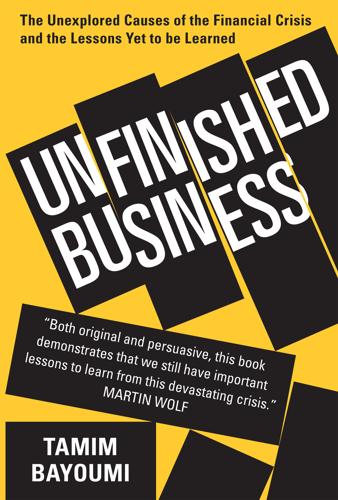
Unfinished Business
by
Tamim Bayoumi
Controversially, after Continental Illinois filed for bankruptcy regulators decided to fully recompense deposits above the federal insurance cap (including the 179 banks that had deposits worth more than half of their equity capital) and also bondholders, rather than let them absorb the losses. The bailout of these uninsured lenders caused outrage and popularized the phrase “too big to fail”. The outrage was compounded by the even larger and costlier Savings and Loans crisis.6 Savings and Loans were a specialized sector that lent for home mortgages using savings deposits. Their deposits were popular with investors because under Regulation Q they could offer slightly higher deposit rates than regulated banks. Savings and Loans failures rose rapidly during the 1970s and early 1980s, however, because their business model was particularly susceptible to rising inflation.
…
The result was a prolonged crisis across the industry. Between 1986 and 1995 almost one-third of the Savings and Loans had to be closed, at the cost of some $160 billion (2 percent of 1995 GDP) including $120 billion in taxpayer money. The political furor over the cost to taxpayers of the failure of Continental Illinois and the Savings and Loans crisis led to a major tightening of US rules on capital buffers for regulated banks that went over and above existing Basel Committee rules.7 To reduce the potential for costly regulatory forbearance of the type seen in the case of Continental Illinois, a “prompt corrective action” framework was introduced by the Federal Deposit Insurance Corporation Improvement Act of 1991 that required automatic interventions if a bank’s capital fell below certain ratios.8 To be well capitalized and avoid intervention, a regulated bank needed to have core capital that was at least 6 percent of risk-weighted assets (2 percent above the minimum defined by the Basel Committee in 1988) and total capital that was at least a 10 percent of risk-weighted assets (again 2 percent above the Basel minimum).
…
Fagan and Gaspar (2008): Gabriel Fagan and Vitor Gaspar, “Macroeconomic Adjustment to a Monetary Union”, European Central Bank Working Paper No. 946, October 2008. Faruqee and Srinivasan (2012): Hamid Faruqee and Krishna Srinivasan, “The G-20 Mutual Assessment Process—A Perspective from IMF Staff”, Oxford Review of Economic Policy, Vol. 28, No. 3, pp. 493–511. Federal Deposit Insurance Corporation (1997a): “The Savings and Loan Crisis and Its Relationship to Banking”, Chapter 4 in A History of the Eighties – Lessons for the Future, Vol. 1: An Examination of the Banking Crises of the 1980s and Early 1990s, December 1997. Federal Deposit Insurance Corporation (1997b): “The LDC Debt Crisis”, Chapter 5 in A History of the Eighties – Lessons for the Future, Vol. 1: An Examination of the Banking Crises of the 1980s and Early 1990s, December 1997.
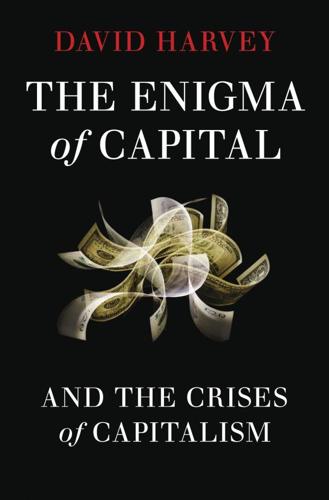
The Enigma of Capital: And the Crises of Capitalism
by
David Harvey
Published 1 Jan 2010
The Swedish banking system had to be nationalised in 1992 in the midst of a Nordic crisis that also affected Norway and Finland, caused by excesses in the property markets. One of the triggers for the collapse in east and south-east Asia in 1997–8 was excessive urban development, fuelled by an inflow of foreign speculative capital, in Thailand, Hong Kong, Indonesia, South Korea and the Philippines. And the long-drawn-out commercial-property-led savings and loan crisis of 1984–92 in the United States saw more than 1,400 savings and loans companies and 1,860 banks go belly up at the cost of some $200 billion to US taxpayers (a situation that so exercised William Isaacs, then chairman of the Federal Deposit Insurance Corporation, that in 1987 he threatened the American Bankers Association with nationalisation unless they mended their ways).
…
Index Numbers in italics indicate Figures; those in bold indicate a Table. 11 September 2001 attacks 38, 41–2 subject to perpetual renewal and transformation 128 A Abu Dhabi 222 Académie Française 91 accumulation by dispossession 48–9, 244 acid deposition 75, 187 activity spheres 121–4, 128, 130 deindustrialised working-class area 151 and ‘green revolution’ 185–6 institutional and administrative arrangements 123 ‘mental conceptions of the world’ 123 patterns of relations between 196 production and labour processes 123 relations to nature 123 the reproduction of daily life and of the species 123 slums 152 social relations 123 subject to perpetual renewal and transformation 128 suburbs 150 technologies and organisational forms 123 uneven development between and among them 128–9 Adelphia 100 advertising industry 106 affective bonds 194 Afghanistan: US interventionism 210 Africa civil wars 148 land bought up in 220 neocolonialism 208 population growth 146 agribusiness 50 agriculture collectivisation of 250 diminishing returns in 72 ‘green revolution’ 185–6 ‘high farming’ 82 itinerant labourers 147 subsidies 79 AIG 5 alcoholism 151 Allen, Paul 98 Allende, Salvador 203 Amazonia 161, 188 American Bankers Association 8 American Revolution 61 anarchists 253, 254 anti-capitalist revolutionary movement 228 anti-racism 258 anti-Semitism 62 après moi le déluge 64, 71 Argentina Debt Crisis (2000–2002) 6, 243, 246, 261 Arizona, foreclosure wave in 1 Arrighi, Giovanni: The Long Twentieth Century 35, 204 asbestos 74 Asia Asian Currency Crisis (1997–98) 141, 261 collapse of export markets 141 growth 218 population growth 146 asset stripping 49, 50, 245 asset traders 40 asset values 1, 6, 21, 23, 26, 29, 46, 223, 261 Association of South East Asian Nations (ASEAN) 200 Athabaska tar sands, Canada 83 austerity programmes 246, 251 automobile industry 14, 15, 23, 56, 67, 68, 77, 121, 160–61 Detroit 5, 15, 16, 91, 108, 195, 216 autonomista movement 233, 234, 254 B Baader-Meinhof Gang 254 Bakunin, Michael 225 Balzac, Honoré 156 Bangalore, software development in 195 Bangkok 243 Bank of England 53, 54 massive liquidity injections in stock markets 261 Bank of International Settlements, Basel 51, 55, 200 Bank of New England 261 Bankers Trust 25 banking bail-outs 5, 218 bank shares become almost worthless 5 bankers’ pay and bonuses 12, 56, 218 ‘boutique investment banks’ 12 de-leveraging 30 debt-deposit ratio 30 deposit banks 20 French banks nationalised 198 international networks of finance houses 163 investment banks 2, 19, 20, 28, 219 irresponsible behaviour 10–11 lending 51 liquidity injections by central banks vii, 261 mysterious workings of central banks 54 ‘national bail-out’ 30–31 property market-led Nordic and Japanese bank crises 261 regional European banks 4 regular banks stash away cash 12, 220 rising tide of ‘moral hazard’ in international bank lending practices 19 ‘shadow banking’ system 8, 21, 24 sympathy with ‘Bonnie and Clyde’ bank robbers 56 Baran, Paul and Sweezey, Paul: Monopoly Capital 52, 113 Barings Bank 37, 100, 190 Baucus, Max 220 Bavaria, automotive engineering in 195 Beijing declaration (1995) 258 Berlin: cross-border leasing 14 Bernanke, Ben 236 ‘Big Bang’ (1986) 20, 37 Big Bang unification of global stock, options and currency trading markets 262 billionaire class 29, 110, 223 biodiversity 74, 251 biomass 78 biomedical engineering 98 biopiracy 245, 251 Birmingham 27 Bismarck, Prince Otto von 168 Black, Fischer 100 Blackstone 50 Blair, Tony 255 Blair government 197 blockbusting neighbourhoods 248 Bloomberg, Mayor Michael 20, 98, 174 Bolivarian movement 226, 256 bonuses, Wall Street 2, 12 Borlaug, Norman 186 bourgeoisie 48, 89, 95, 167, 176 ‘boutique investment banks’ 12 Brazil automobile industry 16 capital flight crisis (1999) 261 containerisation 16 an export-dominated economy 6 follows Japanese model 92 landless movement 257 lending to 19 the right to the city movement 257 workers’ party 256 Bretton Woods Agreement (1944) 31, 32, 51, 55, 171 British Academy 235 British empire 14 Brown, Gordon 27, 45 Budd, Alan 15 Buenos Aires 243 Buffett, Warren 173 building booms 173–4 Bush, George W. 5, 42, 45 business associations 195 C California, foreclosure wave in 1, 2 Canada, tightly regulated banks in 141 ‘cap and trade’ markets in pollution rights 221 capital bank 30 centralisation of 95, 110, 113 circulation of 90, 93, 108, 114, 116, 122, 124, 128, 158, 159, 182, 183, 191 cultural 21 devalued 46 embedded in the land 191 expansion of 58, 67, 68 exploitations of 102 export 19, 158 fixed 191, 213 industrial 40–41, 56 insufficient initial money capital 47 investment 93, 203 and labour 56, 88, 169–70 liquid money 20 mobility 59, 63, 64, 161–2, 191, 213 and nature 88 as a process 40 reproduction of 58 scarcity 50 surplus 16, 28, 29, 50–51, 84, 88, 100, 158, 166, 167, 172, 173, 174, 206, 215, 216, 217 capital accumulation 107, 108, 123, 182, 183, 191, 211 and the activity spheres 128 barriers to 12, 16, 47, 65–6, 69–70, 159 compound rate 28, 74, 75, 97, 126, 135, 215 continuity of endless 74 at the core of human evolutionary dynamics 121 dynamics of 188, 197 geographic landscape of 185 geographical dynamics of 67, 143 and governance 201 lagging 130 laws of 113, 154, 160 main centres of 192 market-based 180 Mumbai redevelopment 178 ‘nature’ affected by 122 and population growth 144–7 and social struggles 105 start of 159 capital circulation barriers to 45 continuity of 68 industrial/production capital 40–41 inherently risky 52 interruption in the process 41–2, 50 spatial movement 42 speculative 52, 53 capital controls 198 capital flow continuity 41, 47, 67, 117 defined vi global 20 importance of understanding vi, vii-viii interrupted, slowed down or suspended vi systematic misallocation of 70 taxation of vi wealth creation vi capital gains 112 capital strike 60 capital surplus absorption 31–2, 94, 97, 98, 101, 163 capital-labour relation 77 capitalism and communism 224–5 corporate 1691 ‘creative-destructive’ tendencies in 46 crisis of vi, 40, 42, 117, 130 end of 72 evolution of 117, 118, 120 expansion at a compound rate 45 first contradiction of 77 geographical development of 143 geographical mobility 161 global 36, 110 historical geography of 76, 117, 118, 121, 174, 180, 200, 202, 204 industrial 58, 109, 242 internal contradictions 115 irrationality of 11, 215, 246 market-led 203 positive and negative aspects 120 and poverty 72 relies on the beneficence of nature 71 removal of 260 rise of 135, 192, 194, 204, 228, 248–9, 258 ‘second contradiction of’ 77, 78 social relations in 101 and socialism 224 speculative 160 survival of 46, 57, 66, 86, 107, 112, 113, 116, 130, 144, 229, 246 uneven geographical development of 211, 213 volatile 145 Capitalism, Nature, Socialism journal 77 capitalist creed 103 capitalist development considered over time 121–4 ‘eras’ of 97 capitalist exploitation 104 capitalist logic 205 capitalist reinvestment 110–11 capitalists, types of 40 Carnegie, Andrew 98 Carnegie foundation 44 Carnegie Mellon University, Pittsburgh, Pennsylvania 195 Carson, Rachel: Silent Spring 187 Case Shiller Composite Indices SA 3 Catholic Church 194, 254 cell phones 131, 150, 152 Central American Free Trade Association (CAFTA) 200 centralisation 10, 11, 165, 201 Certificates of Deposit 262 chambers of commerce 195, 203 Channel Tunnel 50 Chiapas, Mexico 207, 226 Chicago Board Options Exchange 262 Chicago Currency Futures Market 262 ‘Chicago School’ 246 Chile, lending to 19 China ‘barefoot doctors’ 137 bilateral trade with Latin America 173 capital accumulation issue 70 cheap retail goods 64 collapse of communism 16 collapse of export markets 141 Cultural Revolution 137 Deng’s announcement 159 falling exports 6 follows Japanese model 92 ‘Great Leap Forward’ 137, 138 growth 35, 59, 137, 144–5, 213, 218, 222 health care 137 huge foreign exchange reserves 141, 206 infant mortality 59 infrastructural investment 222 labour income and household consumption (1980–2005) 14 market closed after communists took power (1949) 108 market forcibly opened 108 and oil market 83 one child per family policy 137, 146 one-party rule 199 opening-up of 58 plundering of wealth from 109, 113 proletarianisation 60 protests in 38 and rare earth metals 188 recession (1997) 172 ‘silk road’ 163 trading networks 163 unemployment 6 unrest in 66 urbanisation 172–3 and US consumerism 109 Chinese Central Bank 4, 173 Chinese Communist Party 180, 200, 256 chlorofluoral carbons (CFCs) 74, 76, 187 chronometer 91, 156 Church, the 249 CIA (Central Intelligence Agency) 169 circular and cumulative causation 196 Citibank 19 City Bank 261 city centres, Disneyfication of 131 City of London 20, 35, 45, 162, 219 class consciousness 232, 242, 244 class inequalities 240–41 class organisation 62 class politics 62 class power 10, 11, 12, 61, 130, 180 class relations, radical reconstitution of 98 class struggle 56, 63, 65, 96, 102, 127, 134, 193, 242, 258 Clausewitz, Carl von 213 Cleveland, foreclosure crisis in 2 Cleveland, foreclosures on housing in 1 Clinton, Bill 11, 12, 17, 44, 45 co-evolution 132, 136, 138, 168, 185, 186, 195, 197, 228, 232 in three cases 149–53 coal reserves 79, 188 coercive laws of competition see under competition Cold War 31, 34, 92 Collateralised Bond Obligations (CBOs) 262 Collateralised Debt Obligations (CDOs) 36, 142, 261, 262 Collateralised Mortgage Obligations (CMOs) 262 colonialism 212 communications, innovations in 42, 93 communism 228, 233, 242, 249 collapse of 16, 58, 63 compared with socialism 224 as a loaded term 259–60 orthodox communists 253 revolutionary 136 traditional institutionalised 259 companies joint stock 49 limited 49 comparative advantage 92 competition 15, 26, 43, 70 between financial centres 20 coercive laws of 43, 71, 90, 95, 158, 159, 161 and expansion of production 113 and falling prices 29, 116 fostering 52 global economic 92, 131 and innovation 90, 91 inter-capitalist 31 inter-state 209, 256 internalised 210 interterritorial 202 spatial 164 and the workforce 61 competitive advantage 109 computerised trading 262 computers 41, 99, 158–9 consortia 50, 220 consumerism 95, 109, 168, 175, 240 consumerist excess 176 credit-fuelled 118 niche 131 suburban 171 containerisation 16 Continental Illinois Bank 261 cooperatives 234, 242 corporate fraud 245 corruption 43, 69 cotton industry 67, 144, 162 credit cards fees vii, 245 rise of the industry 17 credit crunch 140 Credit Default swaps 262 Crédit Immobilièr 54 Crédit Mobilier 54 Crédit Mobilier and Immobilier 168 credit swaps 21 credit system and austerity programmes 246 crisis within 52 and the current crisis 118 and effective demand problem 112 an inadequate configuration of 52 predatory practices 245 role of 115 social and economic power in 115 crises crises of disproportionality 70 crisis of underconsumption 107, 111 east Asia (1997–8) 6, 8, 35, 49, 246 financial crisis of 1997–8 198, 206 financial crisis of 2008 34, 108, 114, 115 general 45–6 inevitable 71 language of crisis 27 legitimation 217 necessary 71 property market 8 role of 246–7 savings and loan crisis (US, 1984–92) 8 short sharp 8, 10 south-east Asia (1997–8) 6, 8, 35, 49, 246 cross-border leasing 142–3 cultural choice 238 ‘cultural industries’ 21 cultural preferences 73–4 Cultural Revolution 137 currency currency swaps 262 futures market 24, 32 global 32–3, 34 options markets on 262 customs barriers 42, 43 cyberspace 190 D Darwin, Charles 120 DDT 74, 187 de-leveraging 30 debt-financing 17, 131, 141, 169 decentralisation 165, 201 decolonisation 31, 208, 212 deficit financing 35, 111 deforestation 74, 143 deindustrialisation 33, 43, 88, 131, 150, 157, 243 Deleuze, Gilles 128 demand consumer 107, 109 effective 107, 110–14, 116, 118, 221, 222 lack of 47 worker 108 Democratic Party (US) 11 Deng Xiaoping 159 deregulation 11, 16, 54, 131 derivatives 8 currency 21 heavy losses in (US) 261 derivatives markets creation of 29, 85 unregulated 99, 100, 219 Descartes, René 156 desertification 74 Detroit auto industry 5, 15, 16, 91, 108, 195, 216 foreclosures on housing in 1 Deutsches Bank 20 devaluation 32, 47, 116 of bank capital 30 of prior investments 93 developing countries: transformation of daily lives 94–5 Developing Countries Debt Crisis 19, 261 development path building alliances 230 common objectives 230–31 development not the same as growth 229–30 impacts and feedbacks from other spaces in the global economy 230 Diamond, Jared: Guns, Germs and Steel 132–3, 154 diasporas 147, 155, 163 Dickens, Charles: Bleak House 90 disease 75, 85 dispossession anti-communist insurgent movements against 250–51 of arbitrary feudal institutions 249 of the capital class 260 China 179–80 first category 242–4 India 178–9, 180 movements against 247–52 second category 242, 244–5 Seoul 179 types of 247 under socialism and communism 250 Domar, Evsey 71 Dongguan, China 36 dot-com bubble 29, 261 Dow 35,000 prediction 21 drug trade 45, 49 Dubai: over-investment 10 Dubai World 174, 222 Durban conference on anti-racism (2009) 258 E ‘earth days’ 72, 171 east Asia crash of 1997–8 6, 8, 35, 49, 246 labour reserves 64 movement of production to 43 proletarianisation 62 state-centric economies 226 wage rates 62 eastern European countries 37 eBay 190 economic crisis (1848) 167 economists, and the current financial crisis 235–6 ecosystems 74, 75, 76 Ecuador, and remittances 38 education 59, 63, 127, 128, 221, 224, 257 electronics industry 68 Elizabeth II, Queen vi-vii, 235, 236, 238–9 employment casual part-time low-paid female 150 chronic job insecurity 93 culture of the workplace 104 deskilling 93 reskilling 93 services 149 Engels, Friedrich 89, 98, 115, 157, 237 The Housing Question 176–7, 178 Enron 8, 24, 52, 53, 100, 261 entertainment industries 41 environment: modified by human action 84–5 environmental movement 78 environmental sciences 186–7 equipment 58, 66–7 equity futures 262 equity index swaps 262 equity values 262 ethanol plants 80 ethnic cleansings 247 ethnicity issues 104 Eurodollars 262 Europe negative population growth in western Europe 146 reconstruction of economy after Second World War 202 rsouevolutions of 1848 243 European Union 200, 226 eastern European countries 37 elections (June 2009) 143 unemployment 140 evolution punctuated equilibrium theory of natural evolution 130 social 133 theory of 120, 129 exchange rates 24, 32, 198 exports, falling 141 external economies 162 F Factory Act (1848) 127 factory inspectors 127 ‘failed states’ 69 Fannie Mae (US government-chartered mortgage institution) 4, 17, 173, 223 fascism 169, 203, 233 Federal Deposit Insurance Corporation (FDIC) 8 rescue of Continental Illinois Bank 261 Federal Reserve System (the Fed) 2, 17, 54, 116, 219, 236, 248 and asset values 6 cuts interest rates 5, 261 massive liquidity injections in stock markets 261 rescue of Continental Illinois Bank 261 feminists, and colonisation of urban neighbourhoods 248 fertilisers 186 feudalism 135, 138, 228 finance capitalists 40 financial institutions awash with credit 17 bankruptcies 261 control of supply and demand for housing 17 nationalisations 261 financial services 99 Financial Times 12 financialisation 30, 35, 98, 245 Finland: Nordic cris (1992) 8 Flint strike, Michigan (1936–7) 243 Florida, foreclosure wave in 1, 2 Forbes magazine 29, 223 Ford, Henry 64, 98, 160, 161, 188, 189 Ford foundation 44, 186 Fordism 136 Fordlandia 188, 189 foreclosed businesses 245 foreclosed properties 220 fossil fuels 78 Foucault, Michel 134 Fourierists 168 France acceptance of state interventions 200 financial crisis (1868) 168 French banks nationalised 198 immigration 14 Paris Commune 168 pro-natal policies 59 strikes in 38 train network 28 Franco-Prussian War (1870) 168 fraud 43, 49 Freddie Mac (US government-chartered mortgage institution) 4, 17, 173, 223 free trade 10, 33, 90, 131 agreements 42 French Communist Party 52 French Revolution 61 Friedman, Thomas L.: The World is Flat 132 futures, energy 24 futures markets 21 Certificates of Deposit 262 currency 24 Eurodollars 262 Treasury instruments 262 G G7/G8/G20 51, 200 Galileo Galilei 89 Gates, Bill 98, 173, 221 Gates foundation 44 gays, and colonisation of urban neighbourhoods 247, 248 GDP growth (1950–2030) 27 Gehry, Frank 203 Geithner, Tim 11 gender issues 104, 151 General Motors 5 General Motors Acceptance Corporation 23 genetic engineering 84, 98 genetic modification 186 genetically modified organisms (GMOs) 186 gentrification 131, 256, 257 geographical determinism 210 geopolitics 209, 210, 213, 256 Germany acceptance of state interventions 199–200 cross-border leasing 142–3 an export-dominated economy 6 falling exports 141 invasion of US auto market 15 Nazi expansionism 209 neoliberal orthodoxies 141 Turkish immigrants 14 Weimar inflation 141 Glass-Steagall act (1933) 20 Global Crossing 100 global warming 73, 77, 121, 122, 187 globalisation 157 Glyn, Andrew et al: ‘British Capitalism, Workers and the Profits Squeeze’ 65 Goethe, Johann Wolfgang von 156 gold reserves 108, 112, 116 Goldman Sachs 5, 11, 20, 163, 173, 219 Google Earth 156 Gould, Stephen Jay 98, 130 governance 151, 197, 198, 199, 201, 208, 220 governmentality 134 GPS systems 156 Gramsci, Antonio 257 Grandin, Greg: Fordlandia 188, 189 grassroots organisations (GROS) 254 Great Depression (1920s) 46, 170 ‘Great Leap Forward’ 137, 138, 250 ‘Great Society’ anti-poverty programmes 32 Greater London Council 197 Greece sovereign debt 222 student unrest in 38 ‘green communes’ 130 Green Party (Germany) 256 ‘green revolution’ 185–6 Greenspan, Alan 44 Greider, William: Secrets of the Temple 54 growth balanced 71 compound 27, 28, 48, 50, 54, 70, 75, 78, 86 economic 70–71, 83, 138 negative 6 stop in 45 Guggenheim Museu, Bilbao 203 Gulf States collapse of oil-revenue based building boom 38 oil production 6 surplus petrodollars 19, 28 Gulf wars 210 gun trade 44 H habitat loss 74, 251 Haiti, and remittances 38 Hanseatic League 163 Harrison, John 91 Harrod, Roy 70–71 Harvey, David: A Brief History of Neoliberalism 130 Harvey, William vii Haushofer, Karl 209 Haussmann, Baron 49, 167–8, 169, 171, 176 Hawken, Paul: Blessed Unrest 133 Hayek, Friedrich 233 health care 28–9, 59, 63, 220, 221, 224 reneging on obligations 49 Health Care Bill 220 hedge funds 8, 21, 49, 261 managers 44 hedging 24, 36 Hegel, Georg Wilhelm Friedrich 133 hegemony 35–6, 212, 213, 216 Heidegger, Martin 234 Helú, Carlos Slim 29 heterogeneity 214 Hitler, Adolf 141 HIV/AIDS pandemic 1 Holloway, John: Change the World without Taking Power 133 homogeneity 214 Hong Kong excessive urban development 8 rise of (1970s) 35 sweatshops 16 horizontal networking 254 household debt 17 housing 146–7, 149, 150, 221, 224 asset value crisis 1, 174 foreclosure crises 1–2, 166 mortgage finance 170 values 1–2 HSBC 20, 163 Hubbert, M.
…
.: Limits to Growth 72 meat-based diets 73, 74 Medicare 28–9, 224 Mellon, Andrew 11, 98 mercantilism 206 merchant capitalists 40 mergers 49, 50 forced 261 Merrill Lynch 12 Merton, Robert 100 methane gas 73 Mexico debt crisis (1982) 10, 19 northern Miexico’s proximity to the US market 36 peso rescue 261 privatisation of telecommunications 29 and remittances 38 standard of living 10 Mexico City 243 microcredit schemes 145–6 microeconomics 237 microenterprises 145–6 microfinance schemes 145–6 Middle East, and oil issue 77, 170, 210 militarisation 170 ‘military-industrial complex’ 91 minorities: colonisation of urban neighbourhoods 247, 248 Mitterrand, François 198 modelling of markets 262 modernism 171 monarchy 249 monetarism 237 monetisation 244 money centralised money power 49–50, 52 a form of social power 43, 44 limitlessness of 43, 47 loss of confidence in the symbols/quality of money 114 universality of 106 monoculture 186 Monopolies Commission 52 monopolisation 43, 68, 95, 113, 116, 221 Monsanto 186 Montreal Protocol (1989) 76, 187 Morgan Stanley 19 Morishima, Michio 70 Morris, William 160 mortgages annual rate of change in US mortgage debt 7 mortgage finance for housing 170 mortgage-backed bonds futures 262 mortgage-backed securities 4, 262 secondary mortgage market 173, 174 securitisation of local 42 securitisation of mortgage debt 85 subprime 49, 174 Moses, Robert 169, 171, 177 MST (Brazil) 257 multiculturalism 131, 176, 231, 238, 258 Mumbai, India anti-Muslim riots (early 1990s) 247 redevelopment 178–9 municipal budgets 5 Museum of Modern Art, New York 21 Myrdal, Gunnar 196 N Nandigram, West Bengal 180 Napoleon III, Emperor 167, 168 national debt 48 National Economic Council (US) 11, 236 national-origin quotas 14 nationalisation 2, 4, 8, 224 nationalism 55–6, 143, 194, 204 NATO 203 natural gas 188 ‘natural limits’ 47 natural resources 30, 71 natural scarcity 72, 73, 78, 80, 83, 84, 121 nature and capital 88 ‘first nature’ 184 relation to 121, 122 ‘the revenge of nature’ 185 ‘second nature’ 184, 185, 187 as a social product 188 neocolonialism 208, 212 neoliberal counter-revolution 113 neoliberalism 10, 11, 19, 66, 131, 132, 141, 172, 175, 197, 208, 218, 224, 225, 233, 237, 243, 255 Nepal: communist rule in 226 Nevada, foreclosure wave in 1 New Deal 71 ‘new economy’ (1990s) 97 New Labour 45, 255 ‘new urbanism’ movement 175 New York City 11 September 2001 attacks 41 fiscal crisis (1975) 10, 172, 261 investment banks 19, 28 New York metropolitan region 169, 196 Nicaragua 189 Niger delta 251 non-governmental organisations (NGOs) 35, 253–4 non-interventionism 10 North Africa, French import of labour from 14 North America, settlement in 145 North American Free Trade Association (NAFTA) 200 Northern Ireland emergency 247 Northern Rock 2 Norway: Nordic cris (1992) 8 nuclear power 188 O Obama, Barack 11, 27, 34, 210 Obama administration 78, 121 O’Connor, Jim 77, 78 offshoring 131 Ogoni people 251 oil cheap 76–7 differential rent on oil wells 83 futures 83, 84 a non-renewable resource 82 ‘peak oil’ 38, 73, 78, 79, 80 prices 77–8, 80, 82–3, 261 and raw materials prices 6 rents 83 United States and 76–7, 79, 121, 170, 210, 261 OPEC (Organisation of Oil-Producing Countries) 83, 84 options markets currency 262 equity values 262 unregulated 99, 100 Orange County, California bankruptcy 100, 261 Organisation for Economic Cooperation and Development (OECD) 51 organisational change 98, 101 organisational forms 47, 101, 121, 127, 134, 238 Ottoman Empire 194 ‘over the counter’ trading 24, 25 overaccumulation crises 45 ozone hole 74 ozone layer 187 P Pakistan: US involvement 210 Palley, Thomas 236 Paris ‘the city of light’ 168 epicentre of 1968 confrontations 177, 243 Haussmann’s rebuilding of 49, 167–8, 169, 171, 176 municipal budget crashes (1868) 54 Paris Commune (1871) 168, 171, 176, 225, 243, 244 Partnoy, Frank: Ubfectious Greed 25 patents 221 patent laws 95 patriarchy 104 pensions pension funds 4, 5, 245 reneging on obligations 49 Péreire brothers 49, 54, 98, 174 pesticides 185, 186, 187 petty bourgeois 56 pharmaceutical sector 129, 245 philanthropy 44 Philippines: excessive urban development 8 Phillips, Kevin 206 Pinochet, General Augusto 15, 64 plant 58 Poland, lending to 19 political parties, radical 255–6 politics capitalist 76 class 62 co-revolutionary 241 commodified 219 depoliticised 219 energy 77 identity 131 labour organizing 255 left 255 transformative 207 pollution air 77 oceanic 74 rights 21 ‘Ponts et Chaussées’ organisation 92 Ponzi schemes 21, 114, 245, 246 pop music 245–6 Pope, Alexander 156 population growth 59, 72, 74, 121, 167 and capital accumulation 144–7 populism 55–6 portfolio insurance 262 poverty and capitalism 72 criminalisation and incarceration of the poor 15 feminisation of 15, 258 ‘Great Society’ anti-poverty programmes 32 Prague 243 prices commodity 37, 73 energy 78 food grain 79–80 land 8, 9, 182–3 oil 8, 28, 37–8, 77–8, 80, 82–3, 261 property 4, 182–3 raw material 37 reserve price 81–2 rising 73 share 7 primitive accumulation 58, 63–4, 108, 249 private consortia 50 private equity groups 50 private property and radical egalitarianism 233, 234 see also property markets; property rights; property values privatisation 10, 28, 29, 49, 251, 256, 257 pro-natal policies 59 production expansion of 112, 113 inadequate means of 47 investment in 114 liberating the concept 87 low-profit 29 offshore 16 production of urbanisation 87 reorganisation and relocation of 33 revolutionising of 89 surplus 45 technologies 101 productivity agreements 14, 60, 96 agricultural 119 cotton industry 67 gains 88, 89 Japan and West Germany 33 rising 96, 186 products development 95 innovation 95 new lines 94, 95 niches 94 profit squeeze 65, 66, 116 profitability constrains 30 falling 94, 131 of the financial sector 51 and wages 60 profits easy 15 excess 81, 90 falling 29, 72, 94, 116, 117 privatising 10 rates 70, 94, 101 realisation of 108 proletarianisation 60, 62 property markets crash in US and UK (1973–75) 8, 171–2, 261 overextension in 85 property market-led Nordic and Japanese bank crises 261 property-led crises (2007–10) 10, 261 real estate bubble 261 recession in UK (after 1987) 261 property rights 69, 81–2, 90, 122, 179, 198, 233, 244, 245 Property Share Price Index (UK) 7 property values 171, 181, 197, 248 prostitution 15 protectionism 31, 33, 43, 211 punctuated equilibrium theory of natural evolution 130 Putin, Vladimir 29, 80 Q Q’ing dynasty 194 quotas 16 R R&D (research and development) 92, 95–6 race issues 104 racism 61, 258 radical egalitarianism 230–34 railroads 42, 49, 191 Railwan, rise of (1970s) 35 rare earth metals 188 raw materials 6, 16, 37, 58, 77, 101, 113, 140, 144, 234 RBS 20 Reagan, Ronald 15, 64, 131, 141 Reagan-Thatcher counter revolution (early 1980s) 71 Reagan administration 1, 19 Reagan recession (1980–82) 60, 261 Real Estate Investment Trusts (US) 7 recession 1970s 171–2 language of 27 Reagan (1980–82) 60, 261 Red Brigade 254 reforestation 184 refrigeration 74 reinvestment 43, 45, 66–7, 110–12, 116 religious fundamentalism 203 religious issues 104 remittances 38, 140, 147 rentiers 40 rents differential rent 81, 82, 83 on intellectual property rights 221 land 182 monetisation of 48, 109 monopoly 51, 81–2, 83 oil 83 on patents 221 rising 181 reproduction schemas 70 Republican Party (US) 11, 141 reserve price 81 resource values 234 Ricardo, David 72, 94 risks, socialising 10 robbery 44 Robinson, Joan 238 robotisation 14, 136 Rockefeller, John D. 98 Rockefeller brothers 131 Rockefeller foundation 44, 186 Roman Empire 194 Roosevelt, Franklin D. 71 Rothschild family 98, 163 Royal Society 91, 156 royalties 40 Rubin, Robert 98 ‘rule of experts’ 99, 100–101 Russia bankruptcy (1998) 246, 261 capital flight crisis 261 defaults on its debt (1998) 6 oil and natural gas flow to Ukraine 68 oil production 6 oligarchs 29 see also Soviet Union S Saddam Hussein 210 Saint-Simon, Claude Henri de Rouvroy, Comte de 49 Saint-Simonians 87, 168 Salomon Brothers 24 Samuelson, Robert 235, 239 Sandino, Augusto 189 Sanford, Charles 98 satellites 156 savings 140 Scholes, Myron 100 Schumer, Charles 11 Schumpeter, Joseph 46 Seattle battle of (1999) 38, 227 general strike (1918) 243 software development in 195 Second World War 32, 168–70, 214 sectarianism 252 securitisation 17, 36, 42 Sejong, South Korea 124–6 service industries 41 sexism 61 sexual preferences issues 104, 131, 176 Shanghai Commune (1967) 243 shark hunting 73, 76 Shell Oil 79, 251 Shenzhen, China 36 shop floor organisers (shop stewards) 103 Silicon Valley 162, 195, 216 Singapore follows Japanese model 92 industrialisation 68 rise of (1970s) 35 slavery 144 domestic 15 slums 16, 151–2, 176, 178–9 small operators, dispossession of 50 Smith, Adam 90, 164 The Wealth of Nations 35 social democracy 255 ‘social democratic’ consensus (1960s) 64 social inequality 224 social relations 101, 102, 104, 105, 119, 121, 122, 123, 126, 127, 135–9, 152, 240 loss of 246 social security 224 social services 256 social struggles 193 social welfarism 255 socialism 136, 223, 228, 242, 249 compared with communism 224 solidarity economy 151, 254 Soros, George 44, 98, 221 Soros foundation 44 South Korea Asian Currency Crisis 261 excessive urban development 8 falling exports 6 follows Japanese model 92 rise of (1970s) 35 south-east Asia: crash of 1997–8 6, 8, 49, 246 Soviet Union in alliance with US against fascism 169 break-up of 208, 217, 227 collapse of communism 16 collectivisation of agriculture 250 ‘space race’ (1960s and 1970s) 156 see also Russia space domination of 156–8, 207 fixed spaces 190 ‘space race’ (1960s and 1970s) 156 Spain property-led crisis (2007–10) 5–6, 261 unemployment 6 spatial monopoly 164–5 special drawing rights 32, 34 special economic zones 36 special investment vehicles 36, 262 special purpose entities 262 speculation 52–3 speculative binges 52 speed-up 41, 42 stagflation 113 stagnation 116 Stalin, Joseph 136, 250 Standard Oil 98 state formation 196, 197, 202 state-corporate nexus 204 ‘space race’ (1960s and 1970s) 156 state-finance nexus 204, 205, 237, 256 blind belief in its corrective powers 55 ‘central nervous system’ for capital accumulation 54 characteristics of a feudal institution 55 and the current crisis 118 defined 48 failure of 56–7 forms of 55 fusion of state and financial powers 115 innovation in 85 international version of 51 overwhelmed by centralised credit power 52 pressure on 54 radical reconstruction of 131 role of 51 and state-corporate research nexus 97 suburbanisation 171 tilts to favour particular interests 56 statistical arbitrage strategies 262 steam engine, invention of 78, 89 Stiglitz, Joseph 45 stimulus packages 261 stock markets crash (1929) 211, 217 crashes (2001–02) 261 massive liquidity injections (1987) 236, 261 Stockton, California 2 ’structural adjustment’ programmes vii, 19, 261 subcontracting 131 subprime loans 1 subprime mortgage crisis 2 substance abuse 151 suburbanisation 73, 74, 76–7, 106–7, 169, 170, 171, 181 Summers, Larry 11, 44–5, 236 supermarket chains 50 supply-side theory 237 surveillance 92, 204 swaps credit 21 Credit Default 24, 262 currency 262 equity index 262 interest rate 24, 262 Sweden banking system crash (1992) 8, 45 Nordic crisis 8 Yugoslav immigrants 14 Sweezey, Paul 52, 113 ‘switching crises’ 93 systematic ‘moral hazard’ 10 systemic risks vii T Taipei: computer chips and household technologies in 195 Taiwan falling exports 6 follows Japanese model 92 takeovers 49 Taliban 226 tariffs 16 taxation 244 favouring the rich 45 inheritance 44 progressive 44 and the state 48, 145 strong tax base 149 tax rebates 107 tax revenues 40 weak tax base 150 ‘Teamsters for Turtles’ logo 55 technological dynamism 134 technologies change/innovation/new 33, 34, 63, 67, 70, 96–7, 98, 101, 103, 121, 127, 134, 188, 193, 221, 249 electronic 131–2 ‘green’ 188, 221 inappropriate 47 labour fights new technologies 60 labour-saving 14–15, 60, 116 ‘rule of experts’ 99, 100–101 technological comparative edge 95 transport 62 tectonic movements 75 territorial associations 193–4, 195, 196 territorial logic 204–5 Thailand Asian Currency Crisis 261 excessive urban development 8 Thatcher, Margaret, Baroness 15, 38, 64, 131, 197, 255 Thatcherites 224 ‘Third Italy’, Bologna 162, 195 time-space compression 158 time-space configurations 190 Toys ‘R’ Us 17 trade barriers to 16 collapses in foreign trade (2007–10) 261 fall in global international trade 6 increase in volume of trading 262 trade wars 211 trade unions 63 productivity agreements 60 and US auto industry 56 trafficking human 44 illegal 43 training 59 transport costs 164 innovations 42, 93 systems 16, 67 technology 62 Treasury Bill futures 262 Treasury bond futures 262 Treasury instruments 262 TRIPS agreement 245 Tronti, Mario 102 Trotskyists 253, 255 Tucuman uprising (1969) 243 Turin: communal ‘houses of the people’ 243 Turin Workers Councils 243 U UBS 20 Ukraine, Russian oil and natural gas flow to 68 ultraviolet radiation 187 UN Declaration of Human Rights 234 UN development report (1996) 110 Un-American Activities Committee hearings 169 underconsumptionist traditions 116 unemployment 131, 150 benefits 60 creation of 15 in the European Union 140 job losses 93 lay-offs 60 mass 6, 66, 261 rising 15, 37, 113 and technological change 14, 60, 93 in US 5, 6, 60, 168, 215, 261 unionisation 103, 107 United Fruit Company 189 United Kingdom economy in serious difficulty 5 forced to nationalise Northern Rock 2 property market crash 261 real average earnings 13 train network 28 United Nations 31, 208 United States agricultural subsidies 79 in alliance with Soviet Union against fascism 169 anti-trust legislation 52 auto industry 56 blockbusting neighbourhoods 248 booming but debt-filled consumer markets 141 and capital surplus absorption 31–2 competition in labour markets 61 constraints to excessive concentration of money power 44–5 consumerism 109 conumer debt service ratio 18 cross-border leasing with Germany 142–3 debt 158, 206 debt bubble 18 fiscal crises of federal, state and local governments 261 health care 28–9 heavy losses in derivatives 261 home ownership 3 housing foreclosure crises 1–2, 4, 38, 166 industries dependent on trade seriously hit 141 interventionism in Iraq and Afghanistan 210 investment bankers rescued 261 investment failures in real estate 261 lack of belief in theory of evolution 129 land speculation scheme 187–8 oil issue 76–7, 79, 80, 121, 170, 210, 261 population growth 146 proletarianisation 60 property-led crisis (2007–10) 261 pursuit of science and technology 129 radical anti-authoritarianism 199 Reagan Recession 261 rescue of financial institutions 261 research universities 95 the reversing origins of US corporate profits (1950–2004) 22 the right to the city movement 257 ‘right to work’ states 65 savings and loan crisis (1984–92) 8 secondary mortgage market 173 ‘space race’ (1960s and 1970s) 156 suburbs 106–7, 149–50, 170 train network 28 unemployment 5, 6, 60, 168, 215, 261 unrestricted capitalist development 113 value of US stocks and homes, as a percentage of GDP 22 and Vietnam War 171 wages 13, 62 welfare provision 141 ‘urban crisis’ (1960s) 170 urban ‘heat islands’ 77 urban imagineering 193 urban social movements 180 urbanisation 74, 85, 87, 119, 131, 137, 166, 167, 172–3, 174, 240, 243 US Congress 5, 169, 187–8 US Declaration of Independence 199 US National Intelligence Council 34–5 US Senate 79 US Supreme Court 179 US Treasury and Goldman Sachs 11 rescue of Continental Illinois Bank 261 V Vanderbilt family 98 Vatican 44 Veblen, Thorstein 181–2 Venezuela 256 oil production 6 Vietnam War 32, 171 Volcker, Paul 2, 236 Volcker interest rate shock 261 W wage goods 70, 107, 112, 162 wages and living standards 89 a living wage 63 national minimum wage 63 rates 13, 14, 59–64, 66, 109 real 107 repression 12, 16, 21, 107, 110, 118, 131, 172 stagnation 15 wage bargaining 63 Wal-Mart 17, 29, 64, 89 Wall Street, New York 35, 162, 200, 219, 220 banking institutions 11 bonuses 2 ‘Party of Wall Street’ 11, 20, 200 ‘War on Terror’ 34, 92 warfare 202, 204 Wasserstein, Bruce 98 waste disposal 143 Watt, James 89 wealth accumulation by capitalist class interests 12 centralisation of 10 declining 131 flow of 35 wealth transfer 109–10 weather systems 153–4 Weather Underground 254 Weill, Sandy 98 Welch, Jack 98 Westphalia, Treaty of (1648) 91 Whitehead, Alfred North 75 Wilson, Harold 56 wind turbines 188 women domestic slavery 15 mobilisation of 59, 60 prostitution 15 rights 176, 251, 258 wages 62 workers’ collectives 234 working hours 59 World Bank 36, 51, 69, 192, 200, 251 ‘Fifty Years is Enough’ campaign 55 predicts negative growth in the global economy 6 World Bank Development Report (2009) 26 World Trade Organisation (WTO) 200, 227 agreements 69 street protests against (Seattle, 1999) 55 TRIPS agreement 245 and US agricultural subsidies 79 WorldCom 8, 100, 261 worldwide web 42 Wriston, Walter 19 X X-rays 99 Y Yugoslavia dissolution of 208 ethnic cleansings 247 Z Zapatista revolutionary movement 207, 226, 252 Zola, Émile 53 The Belly of Paris 168 The Ladies’ Paradise 168
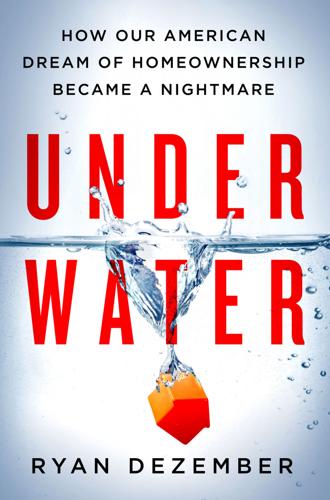
Underwater: How Our American Dream of Homeownership Became a Nightmare
by
Ryan Dezember
Published 13 Jul 2020
Condo prices had pushed comfortably into the six-figure range and builders had moved on from stucco-and-wood structures to concrete, which they poured into broad surfside towers. The prospect of vanishing tax breaks and high interest rates were faint memories. Borrowing costs had been lowered in response to the savings-and-loan crisis and the 1987 stock market crash. Shallow was enlisted to sell condos in a huge high-rise resort that developers were planning out on the Fort Morgan peninsula, a finger of land that juts out thirty miles across the mouth of Mobile Bay. The Beach Club was the first development of its kind on Alabama’s beaches, combining luxury condominiums, restaurants, and a spa.
…
But because of government policies intended to spur homeownership among Americans and Wall Street’s hunger for home loans that could be bundled into securities and sold to investors, banks happily facilitate speculative real estate bets. The fountain of easy money alarmed some around town. Occasionally someone would invoke the empty buildings and bankruptcies during the savings-and-loan crisis. The condo game relied on there being someone—a retired chemical engineer from Louisiana, say, or a Birmingham banker—who wanted the keys to the condos once they were built and had the wherewithal to pay for them at their inflated postflip prices. Yet the instant riches to be made flipping condos were seductive.
…
Geoff Jacobs, who launched an early rental operation in Phoenix, partnered with Progress Residential, a multibillion-dollar endeavor started by Donald Mullen, a former Goldman Sachs mortgage chief who had overseen the firm’s lucrative “big short” of mortgage-backed securities. Hotelier Barry Sternlicht, who became a real estate tycoon buying repossessed apartment buildings from the government after the savings and loan crisis, and Donald Trump confidant Tom Barrack, who followed a similar path to moguldom, each built up national home-rental operations. Blackstone’s Invitation Homes was buying as much as $150 million worth of houses a week. These bulk buyers competed for properties mainly with one another. Typical home buyers were sidelined.
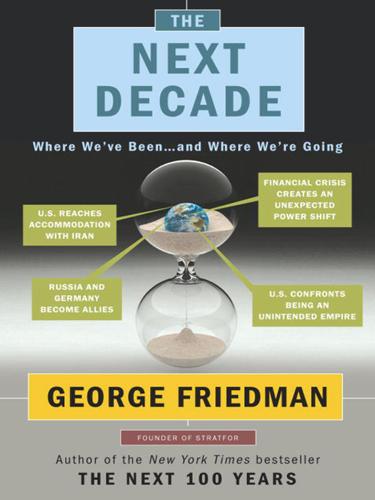
The Next Decade: Where We've Been . . . And Where We're Going
by
George Friedman
Published 25 Jan 2011
Third World countries, forced to choose between defaulting and raising taxes (which would further impoverish their citizens and trigger uprisings), opted to default, which threatened to swamp the global financial system. This prompted a U.S.-led multinational bailout of Third World debt. Under George Bush, Sr., Secretary of the Treasury Nicholas Brady created a system of guarantees, issuing what were called “Brady bonds” to create stability. And then came the savings-and-loan crisis. Savings-and-loan institutions, which had been created to take consumer deposits and generate home loans—think Jimmy Stewart in It’s a Wonderful Life—were given the right to invest in other assets, which led them into the commercial real estate market. This appeared to be only a small step beyond their traditional residential market, and the expansion carried the same “conventional wisdom” guarantee that prices would never fall.
…
Mortgages in default were foreclosed, and the underlying property was taken over by a newly created institution called the Resolution Trust Corporation. Rather than try to sell all this real estate at once, thereby destroying the market for the next decade, the RTC, backed by federal guarantees that potentially could have risen to about $650 billion, took control of the real estate of failed savings-and-loans. The crisis of 2008 was based on the same desire for low risk, and on the same assumption that a certain class of assets was indeed low-risk because its price couldn’t fall. It was met with a similar federal government intervention to bail out the system, and, just as before, everyone thought it was the end of capitalism.

You Are Not a Gadget
by
Jaron Lanier
Published 12 Jan 2010
The admittedly flimsy reasons are that a) we’ve done it before, so they’re used to us, and b) the alternatives are potentially less appealing to many global players, so there might be widespread grudging acceptance of at least some kinds of long-term American centrality as a least-bad option. Computationally Enhanced Corruption Corruption has always been possible without computers, but computers have made it easier for criminals to pretend even to themselves that they are not aware of their own schemes. The savings and loan scandals of the 1980s were possible without extensive computer network services. All that was required was a misuse of a government safety net. More recent examples of cataclysmic financial mismanagement, starting with Enron and Long-Term Capital Management, could have been possible only with the use of big computer networks.
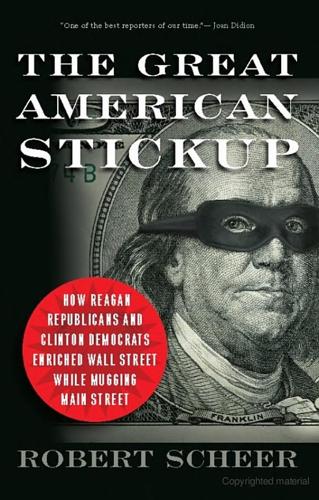
The Great American Stickup: How Reagan Republicans and Clinton Democrats Enriched Wall Street While Mugging Main Street
by
Robert Scheer
Published 14 Apr 2010
Still, Paulson wrote that the president did seem genuinely perplexed when his new Treasury secretary gave his depressing presentation on the state of the economy at a Camp David retreat in August 2006, five weeks after Paulson had been appointed to his government post. Outlining his view that in “recent history, there is a disturbance in the capital markets every four to eight years,” Paulson told Bush, referring to the savings and loan scandal, the blowup of the bond market, the Asia crisis, and the Russia debt default: “I was convinced we were due for another disruption. I detailed the big increase in the size of unregulated pools of capital such as hedge funds and private-equity funds, as well as the exponential growth of unregulated over-the-counter (OTC) derivatives like credit default swaps.
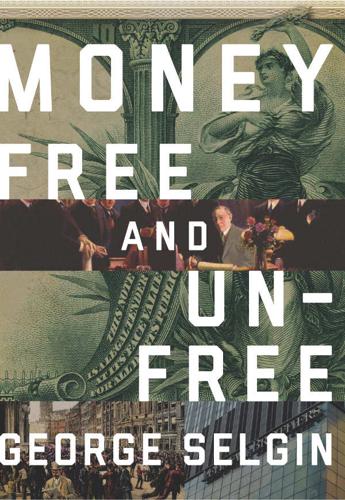
Money Free and Unfree
by
George A. Selgin
Published 14 Jun 2017
And though panics did disappear for a while after 1933, credit for that belongs, not to the Fed, but to the Reconstruction Finance Corporation and, after it, the Federal Deposit Insurance Corporation (FDIC) and the Federal Savings and Loan Insurance Corporation. That deposit insurance was itself no panacea was made clear both by the savings and loan crisis of the 1980s, to which the Federal Savings and Loan Insurance Corporation succumbed, and by the more recent subprime crisis. The Fed, therefore, continues to bear some responsibility for avoiding or containing panics. According to various official Fed sources, the responsible way for it to do so is by heeding the advice Walter Bagehot (1873) gives in Lombard Street.
…
A lender of last resort is then needed to bail out the funds directly or to bail out and subsidize mergers of insolvent banks. Not to do so could lead to panic, as many depositors have no reason to trust their banks apart from the guarantees that insurance provides. The 1985 Ohio and Maryland savings and loan (S&L) crisis bears this out quite clearly. The Lender of Last Resort Itself. By the same token, though, the Fed is also one of its own worst enemies (I am tempted to say one of its own best excuses), because it also encourages banks to take on excessive risks, leading to trouble. That lenders of last resort can also be a source of moral hazard is, of course, recognized even by their most ardent supporters (e.g., Kindleberger 1984: 280).
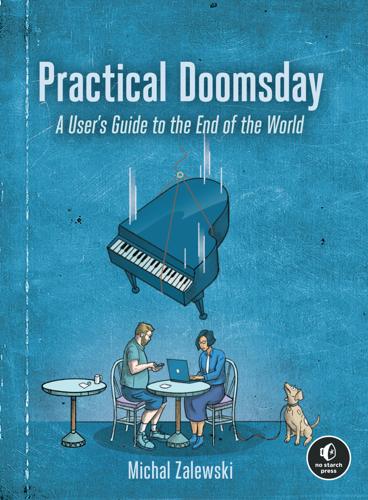
Practical Doomsday: A User's Guide to the End of the World
by
Michal Zalewski
Published 11 Jan 2022
The story is equally hazy on how the mortgage situation in North America could’ve led to severe banking crises in, of all places, Greece and Iceland. What’s similarly less known is that many other economic crises happened in the United States between these two big recessions, usually not more than 10 years apart. Take the Savings and Loan Crisis of the 1980s—a profound panic culminating in the collapse of more than 1,000 financial institutions and punctuated by government-imposed “bank holidays,” a transparent ruse to prevent people from emptying their accounts.12 Or look at the year 1979, when poor domestic policy making, coupled with an Islamic revolution in Iran, plunged the United States into a disaster of another sort, causing widespread fuel shortages that stranded motorists across the nation and disrupted the economy for many months.13 History teaches us that these up and downs occur in a fairly regular cycle.
…
“France Sees Fall in New Year’s Eve Car-Burnings,” BBC News, January 1, 2015, https://www.bbc.com/news/world-europe-30653784/. 11. “European Court Dismisses Compensation Claim in Cyprus 2013 Deposit-Grab,” Reuters, July 13, 2018, https://www.reuters.com/article/us-cyprus-banks/european-court-dismisses-compensation-claim-in-cyprus-2013-deposit-grab-idUSKBN1K3242/. 12. Will Kenton, “Savings and Loan Crisis,” Investopedia, May 16, 2019, https://www.investopedia.com/terms/s/sl-crisis.asp. 13. Kai Ryssdal, “How an Oil Shortage in the 1970s Shaped Today’s Economic Policy,” Marketplace, May 31, 2016, https://www.marketplace.org/2016/05/31/how-oil-shortage-1970s-shaped-todays-economic-policy/. 14.
…
Heater, 157 MREs (meals ready to eat), 144 muggings, 112–113 Multi-Use Radio Service (MURS), 188 municipal sewers, 145–147 Mylar, 149 MyLife.com, 110 N N95 respirators, 174 N-acetylcysteine (NAC), 179 Nagasaki, 31 Nakamoto, Satoshi (pseudonym), 66–67 nasal glucocorticoids, 150 National Center for Injury Prevention and Control, 14 National Security Agency (NSA), 109 natural disasters, 18–19, 34–35 neonicotinoids, 176 neurotoxins, 176 New Deal, 22 New York Times, 37 Niebuhr, Reinhold, 43 9-11 attacks, 26–27 9mm Luger, 214 nitrates storage accidents, 20 non-fungible tokens (NFTs), 87 NRC ADM-300, 179 NSA (National Security Agency), 109 nuclear disasters and nuclear fallout, 20, 31, 39–40, 178–180 nuclear electromagnetic pulse, 40–41 Nuclear War Survival Skills (Kearny), 39 nuclear winter, 30 nutrition, 139–140 O obesity, 115–118 OFD Foods, 141 Oklahoma City bombing, 26–27 Olympic Park bombing, 26 One Child Nation, 8 OneRep, 110 online fraud, 106–108 online privacy, 109–111 optimism, 44 opting out, 110 oral antibiotics, 151 outages, 12 oximeters, pulse, 150 P pain medications, 99–100 pandemics, 25–26, 32, 174–177 pantries, 140–144 paperclip maximizer parable, 42 paperwork, 166–167 passive infrared (PIR) motion sensors, 201 passwords, 108 pathogens, 32–33 “peak oil” hypothesis, 35 pepper spray, 205, 207 Perhach, Paulette, 49–50 perimeter security devices, 201 Permian extinction, 34 personal hygiene, 149 pessimism, 44 pests, 177 phishing, 107 phones, 155–156, 181 physical cash, 75–76 physical fitness, 115–118 physical violence, 13 pickpocketing, 113–114 PIG Sock, 147 Piketty, Thomas, 72 PIR (passive infrared) motion sensors, 201 pistols, 212–213 pit latrines, 147 planetary catastrophe, 34 planning documents, 121–125 plumbing, 145–148 poisons, 177 pollinating insects, declines of, 35 poor countries, 33–34 Population Bomb, 7–8, 30 porch piracy, 111 portable generators, 155–156 portfolio design strategies, 88–90 power outages, 152–159 power puller, 162–163 power tools, 101–103 precious metals, 83–85 predictions of apocalypse, 30–31 prepping community, 119–120 prescription drugs, 99–100, 150 PRI-G, 156 Primatene, 150 prion diseases, 32 privacy online, 109–111 propane, 157–158 property crime, 13–14, 199–202 prophecies, 30–31 proportionality of self-defense, 204–205 pry bars, 112, 163 pulse oximeters, 150 pyrethrin, 176 pyriproxyfen, 176 pyrroloquinoline quinone (PQQ), 179 Q Quick Dam, 147 R Radaris, 110 radiation, 30, 39–40, 178–180 radios, 182–190 rainy-day savings, 49–55 rats on Christmas Island, 33 Raven Rock (Graff), 40 Reagan, Ronald, shooting of, 26 real estate, 85–86 recessions, 22 recreational drugs, 100–101 recreational shooting, 219 Reddit, 52, 109 refrigerators, 152–153 regimes, totalitarian, 36–39 rehydration salts, 150 REITs (real estate investment trusts), 86 renter insurance, 11, 201 repairs, 162–163 repeaters, 185 representative currency, 63 respiratory diseases, 150 revolvers, 213–214 revolving loans, 53–54 rifles, 215–216 riots, 21 risk mitigating, 74–88 mitigation costs, 5–6 quantifying, 5–6 risk-rank formula, 6 risk-taking, 95–96 statistics on, 3 robberies, 112–113 rodents, 176–177 Romero, George A., 30 Rothbard, Murray, 61–62 Ruby Ridge siege, 26 Ruger LCP, 214 S Sabin, Paul, 8 sanitization, 175–176 SARS, 26 satellite communications, 182–183 savings, 10, 49–55 Savings and Loan Crisis, 22 saws, 162 scams, 106–108 Scepter brand cans, 133 Schneier, Bruce, 3 science, 30 science fiction, 29–30 security devices, 201 self-defense firearms, 211–219 legalities of, 204–206 property crime, 199–202 robberies, 113 semiautomatic pistols, 212–213 September 11 attacks, 26–27 Serenity Prayer, 43 sewers, 145–147 shelter, loss of, 11–12 shotguns, 216–217 (S)-hydroprene, 176 sieverts (Sv), 178 Sig Sauer P229, 214 Simler, Kevin, 7 situational awareness, 13, 112 skin conditions, 150 skin staplers, 150 sleeping bags and pads, 167–168 sleeping sickness, 25 slugs, 217 smallpox, 32 smoke, 177 snow chains, 163 social media, 109, 110 social unrest, 20–21 sodium dichloroisocyanurate (NaDCC) tablets, 134 soft-point ammunition, 217 SOG Seal Pup Elite, 170 solar storms, 36 SOS, 143 space weather events, 35–36 speeding, 96–97 spinosad, 176 Spokeo, 110 Springfield EMP, 214 STA-BIL, 156 stalking, 14 The Stand (King), 32 stock market, 79–81 stock options, 81–83 stockpiled foods, 140–144 stockpiling, 73–74 Stop the Bleed program, 151 storm cleanup equipment, 162–163 “A Story of a Fuck Off Fund” (Perhach), 49–50 street violence, 112–113 student loans, 50 stun guns, 205, 207 submersible pumps, 148 subscription services, 51 suffocation, 104 suicides, 196–197 supervolcanoes, 34 supply issues, 137 Svenson, Ola, 96 swine flu, 26 System Fusion, 188 system of prices, 59 T Taser pistols, 207 tech upgrades, 52 technician class license, 189 tents, 167 terrorism domestic, 26–27 fear of, 26–27 industrial accidents and, 20 statistics on, 3 Texas City Disaster, 20 thermal underwear, 156 thermonuclear war, 39–40 .38 Special, 214 3M gasmaks, 177 3M respirators, 175 3M Vetrap, 150 TIPS (Treasury Inflation-Protected Securities), 77 tires, 163 toilets, 145–147 Tomcat, 177 tools, 161–164 topical lidocaine cream, 150 totalitarian regimes, 36–39 transfer-on-death directives, 125 transportation disruptions, 12, 158–159 TransUnion, 110 travel expenses, 76 Treasury Inflation-Protected Securities (TIPS), 77 triamcinolone acetonide, 150 A True Story (Lucian of Samosata), 29 TruePeopleSearch.com, 110 28 Days Later, 32 Twitter, 109, 155 two-factor authentication (2FA), 108 two-way radios, 183–190 U umbrella policies, 88 unemployment, 10–11 unintentional injury, 12–13 unrest, 20–21 US Centers for Disease Control and Prevention (CDC), 13 US Geological Survey (USGS), 19 usury, 63 utility outages, 12 V valuables, 201 vandalism, 111 Vanguard Group, 80–81 vehicle accidents, 96–98 vehicle repairs, 163–164 vertigo, 150 vinegar, 148 violence, 13 Virex II 256, 176 virtual private network (VPN) software, 106 visa requirements, 11 vitamin C, 179 volcanoes, 34–35 vomiting, 150 Vox Magazine, 25 W Waco siege, 26 wages, 50 war, 20–21, 39–40 waste disposal, 145–147 water and water outages, 12, 131–135, 145–148, 169 WaterBrick, 133 wealth taxes, 73 weather, 18, 156–158, 168 Weathermen, 27 weight loss, 115–118 West Nile, 26 Westinghouse generators, 156 wet wipes, 149 “What Has Government Done to Our Money?”
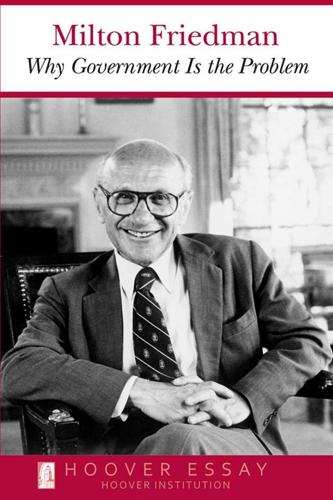
Why Government Is the Problem
by
Milton Friedman
Published 1 Feb 1993
Those seven times as many people per hospital bed are clearly not people who are attending to patients; they are mostly people who are filling in forms to satisfy government requirements. Financial System You are all fully aware of the weakness of our financial system. Is there any doubt that that weakness owes much to Washington? The savings and loans crisis was produced by government, first by the accelerating inflation of the 1970s, which destroyed the net worth of many savings and loan institutions, then by poor regulation in the 1980s, by the increase in the amount covered by deposit insurance to $100,000, and, more recently, by the heavy-handed handling of the crisis.
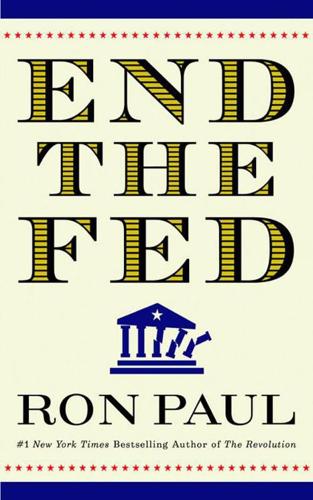
End the Fed
by
Ron Paul
Published 5 Feb 2011
He was more personable and smarter than the others, including the more recent board chairmen Alan Greenspan and Ben Bernanke. In my second tour of congressional duty starting in 1997, I had the opportunity to quiz them. In 1980, a major piece of banking legislation, the Monetary Control Act, was passed; many considered it a prelude to the savings and loan crisis in that decade. I expressed my concern to Chairman Volcker at a hearing that reserve requirements could be lowered to zero and the Federal Reserve could buy any asset, including foreign debt. Volcker invited me to a private breakfast to dissuade me from my interpretation. Lew Rockwell, my chief of staff, went with me to the breakfast.
…
Dollar imbalances in the world economy kept being papered over. In 1989, the crash of the Japanese market showed that the international imbalances permitted some of our dollar inflation to be exported to Japan rather than do damage at home. More recently, our excessive purchases have come from China, exporting inflated dollars yet again. The savings and loan crisis of the 1980s was another effort of the marketplace to rectify the mistakes inherent in the system. Debt, to some degree, was liquidated, but as there were no significant changes in policy the country and the Federal Reserve went back to their old ways, with even more inflation than before.
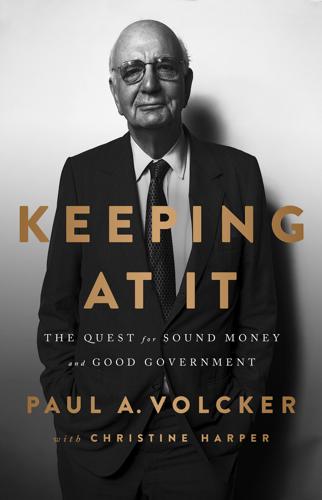
Keeping at It: The Quest for Sound Money and Good Government
by
Paul Volcker
and
Christine Harper
Published 30 Oct 2018
Woolley, American Presidency Project, http://www.presidency.ucsb.edu/ws/?pid=40941. got caught up in an attempt to browbeat Gray: Dan Fesperman, “Former Regulator Blames S&L Crisis on Congress,” Baltimore Sun, November 27, 1990, http://articles.baltimoresun.com/1990-11-27/news/1990331046_1_loan-crisis-ethics-committee-gray. The ultimate cost to the federal government: “U.S. taxpayer losses amounted to $123.8 billion, or 81 percent of the total costs.” Timothy Curry and Lynn Shibut, “The Cost of the Savings and Loan Crisis: Truth and Consequences,” FDIC Banking Review, December 2000, https://www.fdic.gov/bank/analytical/banking/br2000v13n2.pdf.

Nerds on Wall Street: Math, Machines and Wired Markets
by
David J. Leinweber
Published 31 Dec 2008
Other Large Government Projects $ Price (Adjusted for Inflation - Nov. 2008) Marshall Plan Louisiana Purchase Moonshot S&L Crisis Korean War The New Deal Iraq War Vietnam NASA (All time budget.) TOTAL $115,000,000,000 $217,000,000,000 $237,000,000,000 $256,000,000,000 $454,000,000,000 $500,000,000,000 $597,000,000,000 $698,000,000,000 $851,000,000,000 $3,925,000,000,000 2008 BAILOUT 2008 BAILOUT (Nov. 2008) $4,616,000,000,000 Figure 13.5 Visualizing the bailout. Source: Courtesy of VoltageCreative.com. Copyright 2008. Marshall Plan Louisiana Purchase Moonshot S&L Crisis Korean War The New Deal Iraq War Vietnam NASA (All time budget.) Structural Ideas for the Economic Rescue 325 show that there is no deficit there.
…
The single best way that we can help the average American (including renters) is to provide capital to real-world investments with the highest return for their given level of risk (since they arguably add the most value to the economy), which is exactly what these new banks will do. A quick housing price correction will be less painful than one drawn out by government intervention. The Resolution Trust Corporation after the savings and loan (S&L) crisis was successful. Isn’t the TARP a similar idea? The original TARP proposal has been marketed as a plan similar to the seemingly successful Resolution Trust Corporation (RTC) that handled the assets of the failed savings and loans in the early 1990s. There is, however, one glaring difference: The RTC took over assets after the S&Ls failed, whereas the TARP proposes to take over assets before the banks fail in an attempt to “inject confidence” and prop them up.
…
One estimate,9 including the 324 Nerds on Wall Str eet hidden tax breaks for banks and the Citigroup rescue, totals $4.62 trillion through November 2008, and compares this figure to total inflationadjusted dollar equivalents for virtually every major federal project in the history of the country, which add up to less than $4 trillion: Cost Inflation-Adjusted Cost Marshall Plan $12.7 billion $115.3 billion Louisiana Purchase $15 million $217 billion Race to the moon $36.4 billion $237 billion S&L crisis $153 billion $256 billion Korean War $54 billion $454 billion New Deal $32 billion (est.) $500 billion Invasion of Iraq $551 billion $597 billion Vietnam War $111 billion $698 billion NASA $416.7 billion $851.2 billion Total $3.92 trillion This is an amazing number, roughly 40 percent of the national debt and 30 percent of gross domestic product (GDP).
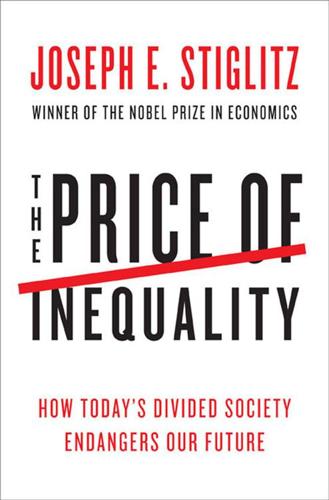
The Price of Inequality: How Today's Divided Society Endangers Our Future
by
Joseph E. Stiglitz
Published 10 Jun 2012
Even before the crisis, there was an awareness of widespread predatory lending practices. It was in the interests of most Americans to curb those as well as the abusive credit card practices. But that didn’t happen. The federal government has done little to prosecute banks that violated the law—as we will see in chapter 7, much less than it did in the much less serious Savings and Loan crisis two decades ago. The New York Times has described how the Securities and Exchange Commission, which is supposed to protect investors from fraud, “has repeatedly allowed the biggest firms to avoid punishments specifically meant to apply to fraud cases.”2 Why hasn’t the middle had the political influence that standard theory predicts it should have, and why does our current system seem to operate on “one dollar” one vote instead of one person one vote?
…
If corporations had been people31 in a state that enforced a “three strikes” rule (three instances of shoplifting, and one faces a mandatory life sentence), these repeat offenders would have been sentenced to multiple life sentences, without parole. In fact, no bank officer has gone to jail for these offenses. Indeed, as this book goes to press, neither Attorney General Eric Holder nor any of the other U.S. district attorneys have brought suits for foreclosure fraud. By contrast, following the savings and loan crisis, by 1990, the Department of Justice had been sent 7,000 criminal referrals, resulting in 1,100 charges by 1992, and 839 convictions (of which around 650 led to a prison sentence).32 Today the banks are simply negotiating what their fines should be—and in some cases the fines may be less than the profits that they have garnered from their illicit activity.33 What the banks did was not just a matter of failing to comply with a few technicalities.
…
As the Supreme Court seems to have claimed in the Citizens United case. 32. Phil Angelides, who headed the Financial Crisis Inquiry Commission into the causes of the crisis, noted that “today the rate of federal prosecutions for financial fraud is less than half of what it was” during the savings and loan crisis. He also noted that his budget for investigating the crisis, including the misdeeds of the banks, was $9.8 million—roughly one-seventh of the budget of Oliver Stone’s Wall Street: Money Never Sleeps. See “Will Wall Street Ever Face Justice,” New York Times, March 2, 2012, available at http://www.nytimes.com/2012/03/02/opinion/will-wall-street-ever-face-justice.html (accessed March 6, 2012).
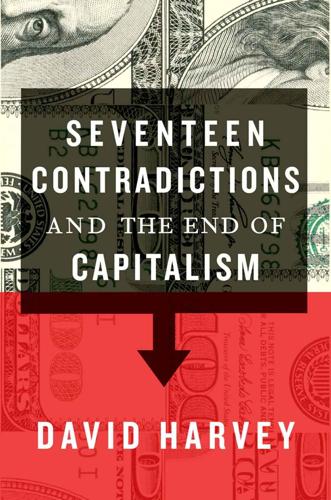
Seventeen Contradictions and the End of Capitalism
by
David Harvey
Published 3 Apr 2014
There have been, then, a variety of ways in which the tension between use values and exchange values in housing production has been managed. But there have also been phases when the system has broken down to produce a crisis of the sort that occurred in the housing markets of the United States, Ireland and Spain in 2007–9. This crisis was not unprecedented. The Savings and Loan Crisis in the USA from 1986 on, the collapse of the Scandinavian property market in 1992 and the end of the Japanese economic boom of the 1980s in the land market crash of 1990 are other examples.1 In the private market system that now dominates in much of the capitalist world, there are additional issues that need to be addressed.
…
283 Maddison, Angus 227 Maghreb 174 Malcolm X 291 Maldives 260 Malthus, Thomas 229–30, 232–3, 244, 246, 251 Manchester 149, 159 Manhattan Institute 143 Mansion House, London 201 manufacturing 104, 239 Mao Zedong 291 maquilas 129, 174 Marcuse, Herbert 204, 289 market cornering 53 market economy 198, 205, 276 marketisation 243 Marshall Plan 153 Martin, Randy 194 Marx, Karl 106, 118, 122, 142, 207, 211 and alienation 125, 126, 213 in the British Museum library 4 on capital 220 conception of wealth 214 on the credit system 239 and deskilling 119 on equal rights 64 and falling profits 107 and fetishism 4 on freedom 207, 208, 213 and greed 33 ‘industrial reserve army’ 79–80 and isolation of workers 125 labour theory of value 109 and monetary system reforms 36 monopoly power and competition 135 reality and appearance 4, 5 as a revolutionary humanist 221 and social reproduction 182 and socialist utopian literature 184 and technological innovation 103 and theorists of the political left 54 and the ‘totally developed individual’ 126–7 and world crises xiii; Capital 57, 79–80, 81, 82, 119, 129, 132, 269, 286, 291–2 The Economic and Philosophic Manuscripts of 1844 269, 286 Grundrisse 97, 212–13 Theories of Surplus Value 1 Marxism contradiction between productive forces and social relations 269 ‘death of Marxism’ xii; ecologically sensitive 263 and humanism 284, 286, 287 ‘profit squeeze’ theory of crisis formation 65 traditional Marxist conception of socialism/ communism 91 Marxists 65, 109 MasterCard Priceless 275 Mau Mau movement 291 Melbourne 141 merchants 67 and industrial capital 179 price-gouging customers 54 and producers 74–5 Mercosur 159 Mexican migrants 115, 175, 195–6 Mexico 123, 129, 174 Mexico City riots (1968) x microcredit 194, 198 microfinance 186, 194, 198, 211 Microsoft 131 Middle East 124, 230 Milanovic, Branko 170 military, the capacities and powers 4 dominance 110 and technology 93, 95 ‘military-industrial complex’ 157 mind-brain duality 70 mining 94, 113, 123, 148, 239, 257 MIT (Massachusetts Institute of Technology) 292 Mitchell, David: Cloud Atlas 264 Mitchell, Timothy 122 Modern Times (film) 103 Mondragon 180 monetarism xi monetary wealth and incomes, inequalities in (1920s) x 1071 monetisation 44, 55, 60, 61, 62, 115, 192–3, 198, 235, 243, 250, 253, 261, 262 money abandonment of metallic basis of global moneys 30, 37, 109 circulation of 15, 25, 30–31, 35 coinage 15, 27, 29, 30 commodification of 57 commodity moneys 27–31 creation of 30, 51, 173, 233, 238–9, 240 credit moneys 28, 30, 31, 152 cyber moneys 36, 109–10 electronic moneys 27, 29, 35, 36, 100 and exchange value 28, 35, 38 fiat 8, 27, 30, 40, 109, 233 gap between money and the value it represents 27 global monetary system 46–7 love of money as a possession 34 measures value 25, 28 a moneyless economy 36 oxidisation of 35 paper 15, 27, 29, 30, 31, 37, 40, 45 power of 25, 36, 59, 60, 62, 65–66, 131–6, 245, 266 quasi-money 35 relation between money and value 27, 35 represented as numbers 29–30 and social labour 25, 27, 31, 42, 55, 88, 243 and the state 45–6, 51, 173 storage of value 25, 26, 35 the US dollar 46–7 use value 28 money capital 28, 32, 59, 74, 142, 147, 158, 177, 178 money laundering 54, 109 ‘money of account’ 27–8, 30 monopolisation 53, 145 monopoly, monopolies 77 and competition 131–45, 218, 295 corporate 123 monetary system 45, 46, 48, 51 monopoly power 45, 46, 51, 93, 117, 120, 132, 133–4, 136, 137, 139, 141, 142–3 monopoly pricing 72, 132 natural 118, 132 of state over legitimate use of force and violence 42, 44, 45, 51, 88, 155, 173 see also prices, monopoly monopsony 131 Monsanto 123 Montreal Protocol 254, 259 ‘moral restraints’ 229, 233 mortgages 19, 21, 28, 32, 54, 67, 82, 239 multiculturalism 166 Mumbai 155, 159 Murdoch, Rupert xi Myrdal, Gunnar 150 N NAFTA 159 name branding 31, 139 nano-trading 243 Nation of Islam 291 national debt 45, 226, 227 National Health Service 115 National Labor Relations Board 120 National Security Administration 136 nationalisation 50 nationalism 7, 8, 44, 289 natural resources 58, 59, 123, 240, 241, 244, 246, 251 nature 56 alienation from 263 capital’s conception of 252 capital’s relation to 246–63 commodification of 59 domination of 247, 272 Heidegger on 59, 250 Polanyi on 58 power over 198 process-thing duality 73 and technology 92, 97, 99, 102 Nazis 151 neoclassical economists 109 neocolonialism 143, 201 neoliberal era 128 neoliberal ethic 277 neoliberalisation x, 48 neoliberalism xiii, 68, 72, 128, 134, 136, 176, 191, 234, 281 capitalism 266 consensus 23 counter-revolution 82, 129, 159, 165 political programme 199 politics 57 privatisation 235 remedies xi Nevada, housing in 77 ‘new economy’ (1990s) 144 New York City 141, 150 creativity 245 domestic labour in 196 income inequality 164 rental markets 22 social reproduction 195 Newton, Isaac 70 NGOs (non-governmental organisations) 189, 210, 284, 286, 287 Nike 31 Nkrumah, Kwame 291 ‘non-coincidence of interests’ 25 Nordic countries 165 North America deindustrialisation in 234 food grain exports 148 indigenous population and property rights 39 women in labour force 230 ‘not in my back yard’ politics 20 nuclear weapons 101 Nyere, Julius 291 O Obama, Barack 167 occupational safety and health 72 Occupy movement 280, 292 Ohlin Foundation 143 oil cartel 252 companies 77, 131 ‘Seven Sisters’ 131 embargo (1973) 124 ‘peak oil’ 251–2, 260 resources 123, 240, 257 oligarchy, oligarchs 34, 143, 165, 221, 223, 242, 245, 264, 286, 292 oligopoly 131, 136, 138 Olympic Games 237–8 oppositional movements 14, 162, 266–7 oppression 193, 266, 288, 297 Orwell, George 213 Nineteen Eighty-Four 202 overaccumulation 154 overheating 228 Owen, Robert 18, 184 Oxfam xi, 169–70 P Paine, Tom: Rights of Man 285 Paris 160 riots (1968) x patents 139, 245, 251 paternalism 165, 209 patriarchy 7 Paulson, Hank 47 pauperisation 104 Peabody, George 18 peasantry ix, 7, 107, 117, 174, 190, 193 revolts 202 pensions 134, 165, 230 rights 58, 67–8, 84, 134 people of colour: disposable populations 111 Pereire, Emile 239 pesticides 255, 258 pharmaceuticals 95, 121, 123, 136, 139 Philanthropic Colonialism 211 philanthropy 18, 128, 189, 190, 210–11, 245, 285 Philippines 115, 196 Picasso, Pablo 140–41, 187, 240 Pinochet, Augusto x Pittsburgh 150, 159, 258 planned obsolescence 74 plutocracy xi, xii, 91, 170, 173, 177, 180 Poland 152 Polanyi, Karl 56, 58, 60, 205–7, 210, 261 The Great Transformation 56–7 police 134 brutality 266 capacities and powers 43 powers xiii, 43, 52 repression 264, 280 surveillance and violence 264 violence 266, 280 police-state 203, 220 political economy xiv, 54, 58, 89, 97, 179–80, 182, 201, 206–9 liberal 204, 206, 209 political parties, incapable of mounting opposition to the power of capital xii political representation 183 pollutants 8, 246, 255 pollution 43, 57, 59, 60, 150, 250, 254, 255, 258 Pontecorvo, Gillo 288 Ponzi schemes 21, 53, 54, 243 population ageing 223, 230 disposable 108, 111, 231, 264 growth 107–8, 229, 230–31, 242, 246 Malthus’s principle 229–30 Portugal 161 post-structuralism xiii potlatch system 33 pounds sterling 46 poverty 229 anti-poverty organisations 286–7 and bourgeois reformism 167 and capital 176 chronic 286 eradication of 211 escape from 170 feminisation of 114 grants 107 and industrialisation 123 and population expansion 229 and unemployment 170, 176 US political movement denies assistance to the poor 292–3 and wealth 146, 168, 177, 218, 219, 243 world xi, 170 power accumulation of 33, 35 of capital xii, 36 class 55, 61, 88, 89, 97, 99, 110, 134, 135, 221, 279 computer 105 and currencies 46 economic 142, 143, 144 global 34, 170 the house as a sign of 15–16 of labour see under labour; of merchants 75 military 143 and money 25, 33, 36, 49, 59, 60, 62, 63, 65–6, 245, 266 monopoly see monopoly power; oligarchic 292 political 62, 143, 144, 162, 171, 219, 292 purchasing 105, 107 social 33, 35, 55, 62, 64, 294 state 42–5, 47–52, 72, 142, 155–9, 164, 209, 295 predation, predators 53, 54, 61, 67, 77, 84, 101, 109, 111, 133, 162, 198, 212, 254–5 price fixing 53, 118, 132 price gouging 132 Price, Richard 226, 227, 229 prices discount 133 equilibrium in 118 extortionate 84 food 244, 251 housing 21, 32, 77 land 77, 78, 150 low 132 market 31, 32 and marketplace anarchy 118 monopoly 31, 72, 139, 141 oil 251, 252 property 77, 78, 141, 150 supermarket 6 and value 31, 55–6 private equity firms 101, 162 private equity funds 22, 162 private property and the commons 41, 50, 57 and eradication of usufructuary rights 41 and individual appropriation 38 and monopoly power 134–5, 137 social bond between human rights and private property 39–40 and the state 47, 50, 58, 59, 146, 210 private property rights 38–42, 44, 58, 204, 252 and collective management 50 conferring the right to trade away that which is owned 39 decentralised 44 exclusionary permanent ownership rights 39 and externality effects 44 held in perpetuity 40 intellectual property rights 41 microenterprises endowed with 211 modification or abolition of the regime 14 and nature 250 over commodities and money 38 and state power 40–41, 42–3 underpinning home ownership 49 usufructuary rights 39 privatisation 23, 24, 48, 59, 60, 61, 84, 185, 235, 250, 253, 261, 262, 266 product lines 92, 107, 219, 236 production bourgeois 1 falling value of 107 immaterial 242 increase in volume and variety of 121 organised 2 and realisation 67, 79–85, 106, 107, 108, 173, 177, 179, 180, 221, 243 regional crises 151 workers’ dispossession of own means of 172 productivity 71, 91, 92, 93, 117, 118, 121, 125, 126, 132, 172, 173, 184, 185, 188, 220, 239 products, compared with commodities 25–6 profitability 92, 94, 98, 102, 103, 104, 106, 112, 116, 118, 125, 147, 184, 191–2, 240, 252, 253, 256, 257 profit(s) banking 54 as capital’s aim 92, 96, 232 and capital’s struggle against labour 64, 65 and competition 93 entrepreneurs 24, 104 falling 81, 107, 244 from commodity sales 71 and money capital 28 monopoly 93 rate of 79, 92 reinvestment in expansion 72 root of 63 spending of 15 and wage rates 172 proletarianisation 191 partial 175, 190, 191 ‘property bubble’ 21 property market boom (1920s) 239 growth of 50 property market crashes 1928 x, 21 1973 21 2008 21–2, 54, 241 property rights 39, 41, 93, 135 see also intellectual property rights; private property property values 78, 85, 234 ‘prosumers’ 237 Proudhon, Pierre-Joseph 183 Prozac 248 public goods 38 public utilities 23, 60, 118, 132 Q quantitative easing 30, 233 R R&D ix race 68, 116, 165, 166, 291 racial minorities 168 racialisation 7, 8, 62, 68 racism 8 Rand, Ayn 200 raw materials 16, 17, 148, 149, 154 Reagan, Ronald x, 72 Speech at Westminster 201 Reagan revolution 165–166 realisation, and production 67, 79–85, 106, 107, 108, 173, 177, 179, 180, 221, 243 reality contradiction between reality and appearance 4–6 social 27 Reclus, Elisée 140 regional development 151 regional volatility 154 Reich, Robert 123, 188 religion 7 religious affiliation 68 religious hatreds and discriminations 8 religious minorities 168 remittances 175 rent seeking 132–3, 142 rentiers 76, 77, 78, 89, 150, 179, 180, 241, 244, 251, 260, 261, 276 rents xii, 16–19, 22, 32, 54, 67, 77, 78, 84, 123, 179, 241 monopoly 93, 135, 141, 187, 251 repression 271, 280 autocratic 130 militarised 264 police-state 203 violent 269, 280, 297 wage 158, 274 Republican Party (US) 145, 280 Republicans (US) 167, 206 res nullius doctrine 40 research and development 94, 96, 187 ‘resource curse’ 123 resource scarcity 77 revolution, Fanon’s view of 288 revolutionary movements 202, 276 Ricardo, David 122, 244, 251 right, the ideological and political assault on the left xii; response to universal alienation 281 ‘rights of man’ 40, 59, 213 Rio de Janeiro 84 risk 17, 141, 162, 219, 240 robbery 53, 57, 60, 63, 72 robotisation 103, 119, 188, 295 Rodney, Walter 291 romantic movement 261 Roosevelt, Theodore 131, 135 Four Freedoms 201 Rousseau, Jean-Jacques 213, 214 Ruhr, Germany 150 rural landscapes 160–61 Russia 154 a BRIC country 170, 228 collapse of (1989) 165 financial crisis (1998) 154, 232 indebtedness 152 local famine 124 oligarchs take natural resource wealth 165 S ‘S’ curve 225, 230–31 Saint-Simon, Claude de Rouvroy, comte de 183 sales 28, 31, 187, 236 San Francisco 150 Santiago, Chile: street battles (2006–) 185 Sao Paulo, Brazil 129, 195 savings the house as a form of saving 19, 22, 58 loss of 20, 58 private 36 protecting the value of 20 Savings and Loan Crisis (USA from 1986) 18 savings accounts 5, 6 Scandinavia 18, 85, 165 scarcity 37, 77, 200, 208, 240, 246, 260, 273 Schumpeter, Joseph 98, 276 science, and technology 95 Seattle 196 Second Empire Paris 197 Second World War x, 161, 234 Securities and Exchange Commission 120, 195 security xiii, 16, 121, 122, 165, 205, 206 economic 36, 153 food 253, 294, 296 job 273 national 157 Sen, Amartya 208–11, 281 Development as Freedom 208–9 senior citizens 168 Seoul 84 serfdom 62, 209 sexual hatreds and discriminations 8 Shanghai 153, 160 share-cropping 62 Sheffield 148, 149, 159, 258 Shenzhen, China 77 Silicon Valley 16, 143, 144, 150 silver 27–31, 33, 37, 57, 233, 238 Simon, Julian 246 Singapore 48, 123, 150, 184, 187, 203 slavery 62, 202, 206, 209, 213, 268 slums ix, 16, 175 Smith, Adam 98, 125–6, 157, 185, 201, 204 ‘invisible hand’ 141–2 The Wealth of Nations 118, 132 Smith, Neil 248 social distinction 68, 166 social inequality 34, 110, 111, 130, 171, 177, 180, 220, 223, 266 social justice 200, 266, 268, 276 social labour 53, 73, 295 alienated 64, 66, 88 and common wealth 53 creation of use values through 36 expansion of total output 232 household and communal work 296 immateriality of 37, 233 and money 25, 27, 31, 42, 55, 88, 243 productivity 239 and profit 104 and value 26, 27, 29, 104, 106, 107, 109 weakening regulatory role of 109, 110 social media 99, 136, 236–7, 278–9 social movements 162–3 social reproduction 80, 127, 182–98, 218, 219, 220, 276 social security 36, 165 social services 68 social struggles 156, 159, 165, 168 social value 26, 27, 32, 33, 55, 172, 179, 241, 244, 268, 270 socialism 215 democratic xii; ‘gas and water’ 183 socialism/communism 91, 269 socialist revolution 67 socialist totalitarianism 205 society capitalist 15, 34, 81, 243, 259 civil 92, 122, 156, 185, 189, 252 civilised 161, 167 complex 26 demolition of 56 and freedom 205–6, 210, 212 hope for a better society 218 industrial 205 information 238 market 204 post-colonial 203 pre-capitalist 55 primitive 57 radical transformation of 290 status position in 186 theocratic 62 women in 113 work-based 273 world 204 soil erosion 257 South Africa 84–5, 152, 169 apartheid 169, 202, 203 South Asia labour 108 population growth 230 software programmers and developers 115, 116 South Korea 123, 148, 150, 153 South-East Asia 107–8 crisis (1997–8) 154, 232, 241 sovereign debt crises 37 Soviet Bloc, ex-, labour in 107 Soviet Union 196, 202 see also Russia Spain xi, 51, 161 housing market crash (2007–9) 82–3 spatio-temporal fixes 151–2, 153, 154, 162 spectacle 237–8, 242, 278 speculative bubbles and busts 178 stagnation xii, 136, 161–2, 169 Stalin, Joseph 70 standard of life 23, 175 starvation 56, 124, 246, 249, 260, 265 state, the aim of 156–7 brutality 266, 280 and capital accumulation 48 and civil society 156 curbing the powers of capital as private property 47 evolution of the capitalist state 42 and externality effects 44 guardian of private property and of individual rights 42 and home ownership 49–50 interstate system 156, 157 interventionism 193, 205 legitimate use of violence 42, 44, 45, 51, 88, 155, 173 loss of state sovereignty xii; and money 1, 45–6, 51, 173 ‘nightwatchman’ role 42, 50 powers of 42–5, 47–52, 57–8, 65, 72, 142, 155–9, 209, 295 and private property 47, 50, 58, 59, 146, 210 provision of collective and public goods 42–3 a security and surveillance state xiii; social democratic states 85 war aims 44 state benefits 165 state regulatory agencies 101 state-finance nexus 44–5, 46–7, 142–3, 156, 233 state-private property nexus 88–9 steam engine, invention of the 3 steel industry 120, 121, 148, 188 steel production 73–4 Stiglitz, Joseph 132–4 stock market crash (1929) x Stockholm, protests in (2013) 171, 243 strikes 65, 103, 124 sub-prime mortgage crisis 50 suburbanisation 253 supply and demand 31, 33, 56, 106 supply chain 124 supply-side remedies xi supply-side theories 82, 176 surplus value 28, 40, 63, 73, 79–83, 172, 239 surveillance xiii, 94, 121, 122, 201, 220, 264, 280, 292 Sweden 166, 167 protests in (2013) 129, 293 Sweezy, Paul 136 swindlers, swindling 45, 53, 57, 239 ‘symbolic analysts’ 188 Syntagma Square, Athens 266, 280 T Tahrir Square, Cairo 266 Taipei, Taiwan 153 Taiwan 123, 150, 153 Taksim Square, Istanbul 266, 280 Tanzania 291 tariffs 137 taxation 40, 43, 47, 67, 84, 93–4, 106, 133, 150, 155, 157, 167, 168, 172, 190 Taylor, Frederick 119, 126 Taylorism 103 Tea Party faction 205, 280, 281, 292 technological evolution 95–6, 97, 101–2, 109 technological imperatives 98–101 technological innovation 94–5 technology changes involving different branches of state apparatus 93–4 communicative technologies 278–9 and competition 92–3 constraints inhibiting deployment 101 culture of 227, 271 definition 92, 248 and devaluation of commodities 234 environmental 248 generic technologies 94 hardware 92, 101 humanising 271 information 100, 147, 158, 177 military 93, 95 monetary 109 and nature 92, 97, 99, 102 organisational forms 92, 99, 101 and productivity 71 relation to nature 92 research and development 94 and science 95 software 92, 99, 101 a specialist field of business 94 and unemployment 80, 103 work and labour control 102–11 telephone companies 54, 67, 84, 278 Tennessee 148 Teresa, Mother 284 Thatcher, Margaret (later Baroness) x, 72, 214, 259 Thatcherism 165 theft 53, 60, 61, 63 Thelluson, Peter 226, 227 think tanks 143 ‘Third Italy’ 143 Third World debt crisis 240 Toffler, Alvin 237 tolls 137 Tönnies, Ferdinand 122, 125 tourism ix, 16, 140, 141, 187, 236 medical 139 toxic waste disposal 249–50, 257 trade networks 24 trade unions xii, 116, 148, 168, 176, 184, 274, 280 trade wars 154 transportation 23, 99, 132, 147–8, 150, 296 Treasury Departments 46, 156 TRIPS agreement 242 tropical rainforest 253 ‘trust-busting’ 131 trusts 135 Turin, Italy 150 Turkey 107, 123, 174, 232, 280, 293 Tuscany, Italy 150 Tutu, Archbishop Desmond 284 Twitter 236 U unemployment 37, 104, 258, 273 benefits 176 deliberately created 65, 174 high xii, 10, 176 insurance 175 and labour reserves 175, 231 and labour-saving technologies 173 long-term 108, 129 permanent 111 echnologically induced 80, 103, 173, 274 uneven geographical developments 178, 296 advanced and underserved regional economies 149–50 and anti-capitalist movements 162 asset bubbles 243 and capital’s reinvention of itself 147, 161 macroeconomic processes of 159 masking the true nature of capital 159–60 and technological forms 219 volatility in 244 United Fruit 136 United Kingdom income inequality in 169; see also Britain United Nations (UN) 285 United States aim of Tea Party faction 280 banking 158 Bill of Rights 284 Britain lends to (nineteenth century) 153 capital in (1990s) 154 Constitution 284 consumption level 194 global reserve currency 45–6 growth 232 hostility towards state interventions 167 House of Representatives 206 human rights abuses 202 imperial power 46 indebtedness of students in 194 Indian reservations 249 interstate highway system 239 jobless recoveries after recession 172–3 liberty and freedom rhetoric 200–201, 202 Midwest ‘rust belt’ 151 military expenditures 46 property market crashes x, 21–2, 50, 54, 58, 82–3 racial issues 166 Savings and Loan Crisis (from 1986) 18 social mobility 196 social reproduction 196–7 solidly capitalist 166 steel industry 120 ‘symbolic analysts’ 188 ‘trust-busting’ 131 unemployment 108 wealth distribution 167 welfare system 176 universal suffrage 183 urbanisation 151, 189, 228, 232, 239, 247, 254, 255, 261 Ure, Andrew 119 US Congress 47 US dollar 15, 30, 45–6 US Executive Branch 47 US Federal Reserve xi, 6, 30, 37, 46, 47, 49, 132, 143, 233 monetary policy 170–71 US Housing Act (1949) 18 US Treasury 47, 142, 240 use values collectively managed pool of 36 commodification of 243 commodities 15, 26, 35 common wealth 53 creation through social labour 36 and entrepreneurs 23–4 and exchange values 15, 35, 42, 44, 50, 60, 65, 88 and housing 14–19, 21–2, 23, 67 and human labour 26 infinitely varied 15 of infrastructural provision 78 loss of 58 marketisation of 243 monetisation of 243 of money 28 privatised and commodified 23 provision of 111 and revolt of the mass of the people 60 social demand for 81 usufructuary rights 39, 41, 59 usury 49, 53, 186, 194 utopianism 18, 35, 42, 51, 66, 119, 132, 183, 184, 204, 206–10, 269, 281, 282 V value(s) commodity 24, 25 failure to produce 40 housing 19, 20, 22 net 19 production and realisation of 82 production of 239 property 21 relation between money and value 27, 35 savings 20 storing 25, 26, 35 see also asset values; exchange values; social value; use values value added 79, 83 Veblen, Thorstein: Theory of the Leisure Class 274 Venezuela 123, 201 Vietnam, labour in 108 Vietnam War 290 violence 53, 57, 72, 204–5, 286 against children 193 against social movements 266 against women 193 colonial 289–90, 291 and contemporary capitalism 8 culture of 271 of dispossession 58, 59 in a dystopian world 264 and humanism 286, 289, 291 of the liberation struggle 290 militarised 292 as the only option 290–91 political 280 in pursuit of liberty and freedom 201 racialised 291 state’s legitimate use of 42, 44, 45, 51, 88, 155, 173 of technology 271 and wage labour 207 virtual ecological transfer 256 Volcker, Paul 37 W wages 103 basic social wage 103 falling 80, 82 for housework 115, 192–3 low xii, 114, 116, 186, 188 lower bound to wage levels 175 non-payment of 72 and profits 172 reduction in 81, 103, 104, 135, 168, 172, 176, 178 rising 178 and unskilled labour 114 wage demands 150, 274 wage levels pushed up by labour 65 wage rates 103, 116, 172, 173 wage repression 158–9 weekly 71 see also income Wall Street criticised by a congressional committee 239–40 illegalities practised by 72, 77 and Lebed 195 new information-processing technologies 100 Wall Street Crash (1929) x, 47 Wall-E (film) 271 Walmart xii, 75, 84, 103, 131 war on terror 280 wars 8, 60, 229 currency 154 defined 44 monetisation of state war-making activities 44–5 privatisation of war making 235 resource 154, 260 and state aims 44 state financing of 32, 44, 48 and technology 93 trade 154 world 154 water privatisation 235 wave theory 70 wave-particle duality 70 wealth accumulation of 33, 34, 35, 157, 205 creation of 132–3, 142, 214 disparities of 164–81 distribution of 34, 167 extraction from non-productive activities 32 global 34 the house as a sign of 15–16 levelling up of per capita wealth 171 and poverty 146, 168, 177, 218, 219, 243 redistribution of 9, 234, 235 social 35, 53, 66, 157, 164, 210, 251, 265, 266, 268 taking it from others 132–3 see also common wealth weather futures 60 Weber, Max 122, 125 Weimar Republic 30 welfare state 165, 190, 191, 208 Wells Fargo 61 West Germany 153, 154, 161 Whitehead, Alfred North 97 Wilson, Woodrow 201 Wolf, Martin 304n2 Wollstonecraft, Mary: A Vindication of the Rights of Woman 285 women career versus family obligations 1–2 disposable populations 111 exploitation of 193 housework versus wage labour 114–15 oppression against 193 social struggle 168 trading of 62 violence against 193 in the workforce 108, 114, 115, 127, 174, 230 women’s rights 202, 218 workers’ rights 202 working classes and capital 80 consumer power 81 crushing organisation 81 education 183, 184 gentrified working-class neighbourhoods ix; housing 160 living conditions 292 wage repression and consumption 158–9 working hours 72, 104–5, 182, 272–5, 279 World Bank 16, 24, 100, 186, 245 World Trade Organization 138, 242 WPA programmes (1930s) 151 Wright, Frank Lloyd: Falling Water 16 Wriston, Walter 240 Y YouTube 236 Yugoslavia, former 174 Z Zola, Émile 7
…
283 Maddison, Angus 227 Maghreb 174 Malcolm X 291 Maldives 260 Malthus, Thomas 229–30, 232–3, 244, 246, 251 Manchester 149, 159 Manhattan Institute 143 Mansion House, London 201 manufacturing 104, 239 Mao Zedong 291 maquilas 129, 174 Marcuse, Herbert 204, 289 market cornering 53 market economy 198, 205, 276 marketisation 243 Marshall Plan 153 Martin, Randy 194 Marx, Karl 106, 118, 122, 142, 207, 211 and alienation 125, 126, 213 in the British Museum library 4 on capital 220 conception of wealth 214 on the credit system 239 and deskilling 119 on equal rights 64 and falling profits 107 and fetishism 4 on freedom 207, 208, 213 and greed 33 ‘industrial reserve army’ 79–80 and isolation of workers 125 labour theory of value 109 and monetary system reforms 36 monopoly power and competition 135 reality and appearance 4, 5 as a revolutionary humanist 221 and social reproduction 182 and socialist utopian literature 184 and technological innovation 103 and theorists of the political left 54 and the ‘totally developed individual’ 126–7 and world crises xiii; Capital 57, 79–80, 81, 82, 119, 129, 132, 269, 286, 291–2 The Economic and Philosophic Manuscripts of 1844 269, 286 Grundrisse 97, 212–13 Theories of Surplus Value 1 Marxism contradiction between productive forces and social relations 269 ‘death of Marxism’ xii; ecologically sensitive 263 and humanism 284, 286, 287 ‘profit squeeze’ theory of crisis formation 65 traditional Marxist conception of socialism/ communism 91 Marxists 65, 109 MasterCard Priceless 275 Mau Mau movement 291 Melbourne 141 merchants 67 and industrial capital 179 price-gouging customers 54 and producers 74–5 Mercosur 159 Mexican migrants 115, 175, 195–6 Mexico 123, 129, 174 Mexico City riots (1968) x microcredit 194, 198 microfinance 186, 194, 198, 211 Microsoft 131 Middle East 124, 230 Milanovic, Branko 170 military, the capacities and powers 4 dominance 110 and technology 93, 95 ‘military-industrial complex’ 157 mind-brain duality 70 mining 94, 113, 123, 148, 239, 257 MIT (Massachusetts Institute of Technology) 292 Mitchell, David: Cloud Atlas 264 Mitchell, Timothy 122 Modern Times (film) 103 Mondragon 180 monetarism xi monetary wealth and incomes, inequalities in (1920s) x 1071 monetisation 44, 55, 60, 61, 62, 115, 192–3, 198, 235, 243, 250, 253, 261, 262 money abandonment of metallic basis of global moneys 30, 37, 109 circulation of 15, 25, 30–31, 35 coinage 15, 27, 29, 30 commodification of 57 commodity moneys 27–31 creation of 30, 51, 173, 233, 238–9, 240 credit moneys 28, 30, 31, 152 cyber moneys 36, 109–10 electronic moneys 27, 29, 35, 36, 100 and exchange value 28, 35, 38 fiat 8, 27, 30, 40, 109, 233 gap between money and the value it represents 27 global monetary system 46–7 love of money as a possession 34 measures value 25, 28 a moneyless economy 36 oxidisation of 35 paper 15, 27, 29, 30, 31, 37, 40, 45 power of 25, 36, 59, 60, 62, 65–66, 131–6, 245, 266 quasi-money 35 relation between money and value 27, 35 represented as numbers 29–30 and social labour 25, 27, 31, 42, 55, 88, 243 and the state 45–6, 51, 173 storage of value 25, 26, 35 the US dollar 46–7 use value 28 money capital 28, 32, 59, 74, 142, 147, 158, 177, 178 money laundering 54, 109 ‘money of account’ 27–8, 30 monopolisation 53, 145 monopoly, monopolies 77 and competition 131–45, 218, 295 corporate 123 monetary system 45, 46, 48, 51 monopoly power 45, 46, 51, 93, 117, 120, 132, 133–4, 136, 137, 139, 141, 142–3 monopoly pricing 72, 132 natural 118, 132 of state over legitimate use of force and violence 42, 44, 45, 51, 88, 155, 173 see also prices, monopoly monopsony 131 Monsanto 123 Montreal Protocol 254, 259 ‘moral restraints’ 229, 233 mortgages 19, 21, 28, 32, 54, 67, 82, 239 multiculturalism 166 Mumbai 155, 159 Murdoch, Rupert xi Myrdal, Gunnar 150 N NAFTA 159 name branding 31, 139 nano-trading 243 Nation of Islam 291 national debt 45, 226, 227 National Health Service 115 National Labor Relations Board 120 National Security Administration 136 nationalisation 50 nationalism 7, 8, 44, 289 natural resources 58, 59, 123, 240, 241, 244, 246, 251 nature 56 alienation from 263 capital’s conception of 252 capital’s relation to 246–63 commodification of 59 domination of 247, 272 Heidegger on 59, 250 Polanyi on 58 power over 198 process-thing duality 73 and technology 92, 97, 99, 102 Nazis 151 neoclassical economists 109 neocolonialism 143, 201 neoliberal era 128 neoliberal ethic 277 neoliberalisation x, 48 neoliberalism xiii, 68, 72, 128, 134, 136, 176, 191, 234, 281 capitalism 266 consensus 23 counter-revolution 82, 129, 159, 165 political programme 199 politics 57 privatisation 235 remedies xi Nevada, housing in 77 ‘new economy’ (1990s) 144 New York City 141, 150 creativity 245 domestic labour in 196 income inequality 164 rental markets 22 social reproduction 195 Newton, Isaac 70 NGOs (non-governmental organisations) 189, 210, 284, 286, 287 Nike 31 Nkrumah, Kwame 291 ‘non-coincidence of interests’ 25 Nordic countries 165 North America deindustrialisation in 234 food grain exports 148 indigenous population and property rights 39 women in labour force 230 ‘not in my back yard’ politics 20 nuclear weapons 101 Nyere, Julius 291 O Obama, Barack 167 occupational safety and health 72 Occupy movement 280, 292 Ohlin Foundation 143 oil cartel 252 companies 77, 131 ‘Seven Sisters’ 131 embargo (1973) 124 ‘peak oil’ 251–2, 260 resources 123, 240, 257 oligarchy, oligarchs 34, 143, 165, 221, 223, 242, 245, 264, 286, 292 oligopoly 131, 136, 138 Olympic Games 237–8 oppositional movements 14, 162, 266–7 oppression 193, 266, 288, 297 Orwell, George 213 Nineteen Eighty-Four 202 overaccumulation 154 overheating 228 Owen, Robert 18, 184 Oxfam xi, 169–70 P Paine, Tom: Rights of Man 285 Paris 160 riots (1968) x patents 139, 245, 251 paternalism 165, 209 patriarchy 7 Paulson, Hank 47 pauperisation 104 Peabody, George 18 peasantry ix, 7, 107, 117, 174, 190, 193 revolts 202 pensions 134, 165, 230 rights 58, 67–8, 84, 134 people of colour: disposable populations 111 Pereire, Emile 239 pesticides 255, 258 pharmaceuticals 95, 121, 123, 136, 139 Philanthropic Colonialism 211 philanthropy 18, 128, 189, 190, 210–11, 245, 285 Philippines 115, 196 Picasso, Pablo 140–41, 187, 240 Pinochet, Augusto x Pittsburgh 150, 159, 258 planned obsolescence 74 plutocracy xi, xii, 91, 170, 173, 177, 180 Poland 152 Polanyi, Karl 56, 58, 60, 205–7, 210, 261 The Great Transformation 56–7 police 134 brutality 266 capacities and powers 43 powers xiii, 43, 52 repression 264, 280 surveillance and violence 264 violence 266, 280 police-state 203, 220 political economy xiv, 54, 58, 89, 97, 179–80, 182, 201, 206–9 liberal 204, 206, 209 political parties, incapable of mounting opposition to the power of capital xii political representation 183 pollutants 8, 246, 255 pollution 43, 57, 59, 60, 150, 250, 254, 255, 258 Pontecorvo, Gillo 288 Ponzi schemes 21, 53, 54, 243 population ageing 223, 230 disposable 108, 111, 231, 264 growth 107–8, 229, 230–31, 242, 246 Malthus’s principle 229–30 Portugal 161 post-structuralism xiii potlatch system 33 pounds sterling 46 poverty 229 anti-poverty organisations 286–7 and bourgeois reformism 167 and capital 176 chronic 286 eradication of 211 escape from 170 feminisation of 114 grants 107 and industrialisation 123 and population expansion 229 and unemployment 170, 176 US political movement denies assistance to the poor 292–3 and wealth 146, 168, 177, 218, 219, 243 world xi, 170 power accumulation of 33, 35 of capital xii, 36 class 55, 61, 88, 89, 97, 99, 110, 134, 135, 221, 279 computer 105 and currencies 46 economic 142, 143, 144 global 34, 170 the house as a sign of 15–16 of labour see under labour; of merchants 75 military 143 and money 25, 33, 36, 49, 59, 60, 62, 63, 65–6, 245, 266 monopoly see monopoly power; oligarchic 292 political 62, 143, 144, 162, 171, 219, 292 purchasing 105, 107 social 33, 35, 55, 62, 64, 294 state 42–5, 47–52, 72, 142, 155–9, 164, 209, 295 predation, predators 53, 54, 61, 67, 77, 84, 101, 109, 111, 133, 162, 198, 212, 254–5 price fixing 53, 118, 132 price gouging 132 Price, Richard 226, 227, 229 prices discount 133 equilibrium in 118 extortionate 84 food 244, 251 housing 21, 32, 77 land 77, 78, 150 low 132 market 31, 32 and marketplace anarchy 118 monopoly 31, 72, 139, 141 oil 251, 252 property 77, 78, 141, 150 supermarket 6 and value 31, 55–6 private equity firms 101, 162 private equity funds 22, 162 private property and the commons 41, 50, 57 and eradication of usufructuary rights 41 and individual appropriation 38 and monopoly power 134–5, 137 social bond between human rights and private property 39–40 and the state 47, 50, 58, 59, 146, 210 private property rights 38–42, 44, 58, 204, 252 and collective management 50 conferring the right to trade away that which is owned 39 decentralised 44 exclusionary permanent ownership rights 39 and externality effects 44 held in perpetuity 40 intellectual property rights 41 microenterprises endowed with 211 modification or abolition of the regime 14 and nature 250 over commodities and money 38 and state power 40–41, 42–3 underpinning home ownership 49 usufructuary rights 39 privatisation 23, 24, 48, 59, 60, 61, 84, 185, 235, 250, 253, 261, 262, 266 product lines 92, 107, 219, 236 production bourgeois 1 falling value of 107 immaterial 242 increase in volume and variety of 121 organised 2 and realisation 67, 79–85, 106, 107, 108, 173, 177, 179, 180, 221, 243 regional crises 151 workers’ dispossession of own means of 172 productivity 71, 91, 92, 93, 117, 118, 121, 125, 126, 132, 172, 173, 184, 185, 188, 220, 239 products, compared with commodities 25–6 profitability 92, 94, 98, 102, 103, 104, 106, 112, 116, 118, 125, 147, 184, 191–2, 240, 252, 253, 256, 257 profit(s) banking 54 as capital’s aim 92, 96, 232 and capital’s struggle against labour 64, 65 and competition 93 entrepreneurs 24, 104 falling 81, 107, 244 from commodity sales 71 and money capital 28 monopoly 93 rate of 79, 92 reinvestment in expansion 72 root of 63 spending of 15 and wage rates 172 proletarianisation 191 partial 175, 190, 191 ‘property bubble’ 21 property market boom (1920s) 239 growth of 50 property market crashes 1928 x, 21 1973 21 2008 21–2, 54, 241 property rights 39, 41, 93, 135 see also intellectual property rights; private property property values 78, 85, 234 ‘prosumers’ 237 Proudhon, Pierre-Joseph 183 Prozac 248 public goods 38 public utilities 23, 60, 118, 132 Q quantitative easing 30, 233 R R&D ix race 68, 116, 165, 166, 291 racial minorities 168 racialisation 7, 8, 62, 68 racism 8 Rand, Ayn 200 raw materials 16, 17, 148, 149, 154 Reagan, Ronald x, 72 Speech at Westminster 201 Reagan revolution 165–166 realisation, and production 67, 79–85, 106, 107, 108, 173, 177, 179, 180, 221, 243 reality contradiction between reality and appearance 4–6 social 27 Reclus, Elisée 140 regional development 151 regional volatility 154 Reich, Robert 123, 188 religion 7 religious affiliation 68 religious hatreds and discriminations 8 religious minorities 168 remittances 175 rent seeking 132–3, 142 rentiers 76, 77, 78, 89, 150, 179, 180, 241, 244, 251, 260, 261, 276 rents xii, 16–19, 22, 32, 54, 67, 77, 78, 84, 123, 179, 241 monopoly 93, 135, 141, 187, 251 repression 271, 280 autocratic 130 militarised 264 police-state 203 violent 269, 280, 297 wage 158, 274 Republican Party (US) 145, 280 Republicans (US) 167, 206 res nullius doctrine 40 research and development 94, 96, 187 ‘resource curse’ 123 resource scarcity 77 revolution, Fanon’s view of 288 revolutionary movements 202, 276 Ricardo, David 122, 244, 251 right, the ideological and political assault on the left xii; response to universal alienation 281 ‘rights of man’ 40, 59, 213 Rio de Janeiro 84 risk 17, 141, 162, 219, 240 robbery 53, 57, 60, 63, 72 robotisation 103, 119, 188, 295 Rodney, Walter 291 romantic movement 261 Roosevelt, Theodore 131, 135 Four Freedoms 201 Rousseau, Jean-Jacques 213, 214 Ruhr, Germany 150 rural landscapes 160–61 Russia 154 a BRIC country 170, 228 collapse of (1989) 165 financial crisis (1998) 154, 232 indebtedness 152 local famine 124 oligarchs take natural resource wealth 165 S ‘S’ curve 225, 230–31 Saint-Simon, Claude de Rouvroy, comte de 183 sales 28, 31, 187, 236 San Francisco 150 Santiago, Chile: street battles (2006–) 185 Sao Paulo, Brazil 129, 195 savings the house as a form of saving 19, 22, 58 loss of 20, 58 private 36 protecting the value of 20 Savings and Loan Crisis (USA from 1986) 18 savings accounts 5, 6 Scandinavia 18, 85, 165 scarcity 37, 77, 200, 208, 240, 246, 260, 273 Schumpeter, Joseph 98, 276 science, and technology 95 Seattle 196 Second Empire Paris 197 Second World War x, 161, 234 Securities and Exchange Commission 120, 195 security xiii, 16, 121, 122, 165, 205, 206 economic 36, 153 food 253, 294, 296 job 273 national 157 Sen, Amartya 208–11, 281 Development as Freedom 208–9 senior citizens 168 Seoul 84 serfdom 62, 209 sexual hatreds and discriminations 8 Shanghai 153, 160 share-cropping 62 Sheffield 148, 149, 159, 258 Shenzhen, China 77 Silicon Valley 16, 143, 144, 150 silver 27–31, 33, 37, 57, 233, 238 Simon, Julian 246 Singapore 48, 123, 150, 184, 187, 203 slavery 62, 202, 206, 209, 213, 268 slums ix, 16, 175 Smith, Adam 98, 125–6, 157, 185, 201, 204 ‘invisible hand’ 141–2 The Wealth of Nations 118, 132 Smith, Neil 248 social distinction 68, 166 social inequality 34, 110, 111, 130, 171, 177, 180, 220, 223, 266 social justice 200, 266, 268, 276 social labour 53, 73, 295 alienated 64, 66, 88 and common wealth 53 creation of use values through 36 expansion of total output 232 household and communal work 296 immateriality of 37, 233 and money 25, 27, 31, 42, 55, 88, 243 productivity 239 and profit 104 and value 26, 27, 29, 104, 106, 107, 109 weakening regulatory role of 109, 110 social media 99, 136, 236–7, 278–9 social movements 162–3 social reproduction 80, 127, 182–98, 218, 219, 220, 276 social security 36, 165 social services 68 social struggles 156, 159, 165, 168 social value 26, 27, 32, 33, 55, 172, 179, 241, 244, 268, 270 socialism 215 democratic xii; ‘gas and water’ 183 socialism/communism 91, 269 socialist revolution 67 socialist totalitarianism 205 society capitalist 15, 34, 81, 243, 259 civil 92, 122, 156, 185, 189, 252 civilised 161, 167 complex 26 demolition of 56 and freedom 205–6, 210, 212 hope for a better society 218 industrial 205 information 238 market 204 post-colonial 203 pre-capitalist 55 primitive 57 radical transformation of 290 status position in 186 theocratic 62 women in 113 work-based 273 world 204 soil erosion 257 South Africa 84–5, 152, 169 apartheid 169, 202, 203 South Asia labour 108 population growth 230 software programmers and developers 115, 116 South Korea 123, 148, 150, 153 South-East Asia 107–8 crisis (1997–8) 154, 232, 241 sovereign debt crises 37 Soviet Bloc, ex-, labour in 107 Soviet Union 196, 202 see also Russia Spain xi, 51, 161 housing market crash (2007–9) 82–3 spatio-temporal fixes 151–2, 153, 154, 162 spectacle 237–8, 242, 278 speculative bubbles and busts 178 stagnation xii, 136, 161–2, 169 Stalin, Joseph 70 standard of life 23, 175 starvation 56, 124, 246, 249, 260, 265 state, the aim of 156–7 brutality 266, 280 and capital accumulation 48 and civil society 156 curbing the powers of capital as private property 47 evolution of the capitalist state 42 and externality effects 44 guardian of private property and of individual rights 42 and home ownership 49–50 interstate system 156, 157 interventionism 193, 205 legitimate use of violence 42, 44, 45, 51, 88, 155, 173 loss of state sovereignty xii; and money 1, 45–6, 51, 173 ‘nightwatchman’ role 42, 50 powers of 42–5, 47–52, 57–8, 65, 72, 142, 155–9, 209, 295 and private property 47, 50, 58, 59, 146, 210 provision of collective and public goods 42–3 a security and surveillance state xiii; social democratic states 85 war aims 44 state benefits 165 state regulatory agencies 101 state-finance nexus 44–5, 46–7, 142–3, 156, 233 state-private property nexus 88–9 steam engine, invention of the 3 steel industry 120, 121, 148, 188 steel production 73–4 Stiglitz, Joseph 132–4 stock market crash (1929) x Stockholm, protests in (2013) 171, 243 strikes 65, 103, 124 sub-prime mortgage crisis 50 suburbanisation 253 supply and demand 31, 33, 56, 106 supply chain 124 supply-side remedies xi supply-side theories 82, 176 surplus value 28, 40, 63, 73, 79–83, 172, 239 surveillance xiii, 94, 121, 122, 201, 220, 264, 280, 292 Sweden 166, 167 protests in (2013) 129, 293 Sweezy, Paul 136 swindlers, swindling 45, 53, 57, 239 ‘symbolic analysts’ 188 Syntagma Square, Athens 266, 280 T Tahrir Square, Cairo 266 Taipei, Taiwan 153 Taiwan 123, 150, 153 Taksim Square, Istanbul 266, 280 Tanzania 291 tariffs 137 taxation 40, 43, 47, 67, 84, 93–4, 106, 133, 150, 155, 157, 167, 168, 172, 190 Taylor, Frederick 119, 126 Taylorism 103 Tea Party faction 205, 280, 281, 292 technological evolution 95–6, 97, 101–2, 109 technological imperatives 98–101 technological innovation 94–5 technology changes involving different branches of state apparatus 93–4 communicative technologies 278–9 and competition 92–3 constraints inhibiting deployment 101 culture of 227, 271 definition 92, 248 and devaluation of commodities 234 environmental 248 generic technologies 94 hardware 92, 101 humanising 271 information 100, 147, 158, 177 military 93, 95 monetary 109 and nature 92, 97, 99, 102 organisational forms 92, 99, 101 and productivity 71 relation to nature 92 research and development 94 and science 95 software 92, 99, 101 a specialist field of business 94 and unemployment 80, 103 work and labour control 102–11 telephone companies 54, 67, 84, 278 Tennessee 148 Teresa, Mother 284 Thatcher, Margaret (later Baroness) x, 72, 214, 259 Thatcherism 165 theft 53, 60, 61, 63 Thelluson, Peter 226, 227 think tanks 143 ‘Third Italy’ 143 Third World debt crisis 240 Toffler, Alvin 237 tolls 137 Tönnies, Ferdinand 122, 125 tourism ix, 16, 140, 141, 187, 236 medical 139 toxic waste disposal 249–50, 257 trade networks 24 trade unions xii, 116, 148, 168, 176, 184, 274, 280 trade wars 154 transportation 23, 99, 132, 147–8, 150, 296 Treasury Departments 46, 156 TRIPS agreement 242 tropical rainforest 253 ‘trust-busting’ 131 trusts 135 Turin, Italy 150 Turkey 107, 123, 174, 232, 280, 293 Tuscany, Italy 150 Tutu, Archbishop Desmond 284 Twitter 236 U unemployment 37, 104, 258, 273 benefits 176 deliberately created 65, 174 high xii, 10, 176 insurance 175 and labour reserves 175, 231 and labour-saving technologies 173 long-term 108, 129 permanent 111 echnologically induced 80, 103, 173, 274 uneven geographical developments 178, 296 advanced and underserved regional economies 149–50 and anti-capitalist movements 162 asset bubbles 243 and capital’s reinvention of itself 147, 161 macroeconomic processes of 159 masking the true nature of capital 159–60 and technological forms 219 volatility in 244 United Fruit 136 United Kingdom income inequality in 169; see also Britain United Nations (UN) 285 United States aim of Tea Party faction 280 banking 158 Bill of Rights 284 Britain lends to (nineteenth century) 153 capital in (1990s) 154 Constitution 284 consumption level 194 global reserve currency 45–6 growth 232 hostility towards state interventions 167 House of Representatives 206 human rights abuses 202 imperial power 46 indebtedness of students in 194 Indian reservations 249 interstate highway system 239 jobless recoveries after recession 172–3 liberty and freedom rhetoric 200–201, 202 Midwest ‘rust belt’ 151 military expenditures 46 property market crashes x, 21–2, 50, 54, 58, 82–3 racial issues 166 Savings and Loan Crisis (from 1986) 18 social mobility 196 social reproduction 196–7 solidly capitalist 166 steel industry 120 ‘symbolic analysts’ 188 ‘trust-busting’ 131 unemployment 108 wealth distribution 167 welfare system 176 universal suffrage 183 urbanisation 151, 189, 228, 232, 239, 247, 254, 255, 261 Ure, Andrew 119 US Congress 47 US dollar 15, 30, 45–6 US Executive Branch 47 US Federal Reserve xi, 6, 30, 37, 46, 47, 49, 132, 143, 233 monetary policy 170–71 US Housing Act (1949) 18 US Treasury 47, 142, 240 use values collectively managed pool of 36 commodification of 243 commodities 15, 26, 35 common wealth 53 creation through social labour 36 and entrepreneurs 23–4 and exchange values 15, 35, 42, 44, 50, 60, 65, 88 and housing 14–19, 21–2, 23, 67 and human labour 26 infinitely varied 15 of infrastructural provision 78 loss of 58 marketisation of 243 monetisation of 243 of money 28 privatised and commodified 23 provision of 111 and revolt of the mass of the people 60 social demand for 81 usufructuary rights 39, 41, 59 usury 49, 53, 186, 194 utopianism 18, 35, 42, 51, 66, 119, 132, 183, 184, 204, 206–10, 269, 281, 282 V value(s) commodity 24, 25 failure to produce 40 housing 19, 20, 22 net 19 production and realisation of 82 production of 239 property 21 relation between money and value 27, 35 savings 20 storing 25, 26, 35 see also asset values; exchange values; social value; use values value added 79, 83 Veblen, Thorstein: Theory of the Leisure Class 274 Venezuela 123, 201 Vietnam, labour in 108 Vietnam War 290 violence 53, 57, 72, 204–5, 286 against children 193 against social movements 266 against women 193 colonial 289–90, 291 and contemporary capitalism 8 culture of 271 of dispossession 58, 59 in a dystopian world 264 and humanism 286, 289, 291 of the liberation struggle 290 militarised 292 as the only option 290–91 political 280 in pursuit of liberty and freedom 201 racialised 291 state’s legitimate use of 42, 44, 45, 51, 88, 155, 173 of technology 271 and wage labour 207 virtual ecological transfer 256 Volcker, Paul 37 W wages 103 basic social wage 103 falling 80, 82 for housework 115, 192–3 low xii, 114, 116, 186, 188 lower bound to wage levels 175 non-payment of 72 and profits 172 reduction in 81, 103, 104, 135, 168, 172, 176, 178 rising 178 and unskilled labour 114 wage demands 150, 274 wage levels pushed up by labour 65 wage rates 103, 116, 172, 173 wage repression 158–9 weekly 71 see also income Wall Street criticised by a congressional committee 239–40 illegalities practised by 72, 77 and Lebed 195 new information-processing technologies 100 Wall Street Crash (1929) x, 47 Wall-E (film) 271 Walmart xii, 75, 84, 103, 131 war on terror 280 wars 8, 60, 229 currency 154 defined 44 monetisation of state war-making activities 44–5 privatisation of war making 235 resource 154, 260 and state aims 44 state financing of 32, 44, 48 and technology 93 trade 154 world 154 water privatisation 235 wave theory 70 wave-particle duality 70 wealth accumulation of 33, 34, 35, 157, 205 creation of 132–3, 142, 214 disparities of 164–81 distribution of 34, 167 extraction from non-productive activities 32 global 34 the house as a sign of 15–16 levelling up of per capita wealth 171 and poverty 146, 168, 177, 218, 219, 243 redistribution of 9, 234, 235 social 35, 53, 66, 157, 164, 210, 251, 265, 266, 268 taking it from others 132–3 see also common wealth weather futures 60 Weber, Max 122, 125 Weimar Republic 30 welfare state 165, 190, 191, 208 Wells Fargo 61 West Germany 153, 154, 161 Whitehead, Alfred North 97 Wilson, Woodrow 201 Wolf, Martin 304n2 Wollstonecraft, Mary: A Vindication of the Rights of Woman 285 women career versus family obligations 1–2 disposable populations 111 exploitation of 193 housework versus wage labour 114–15 oppression against 193 social struggle 168 trading of 62 violence against 193 in the workforce 108, 114, 115, 127, 174, 230 women’s rights 202, 218 workers’ rights 202 working classes and capital 80 consumer power 81 crushing organisation 81 education 183, 184 gentrified working-class neighbourhoods ix; housing 160 living conditions 292 wage repression and consumption 158–9 working hours 72, 104–5, 182, 272–5, 279 World Bank 16, 24, 100, 186, 245 World Trade Organization 138, 242 WPA programmes (1930s) 151 Wright, Frank Lloyd: Falling Water 16 Wriston, Walter 240 Y YouTube 236 Yugoslavia, former 174 Z Zola, Émile 7
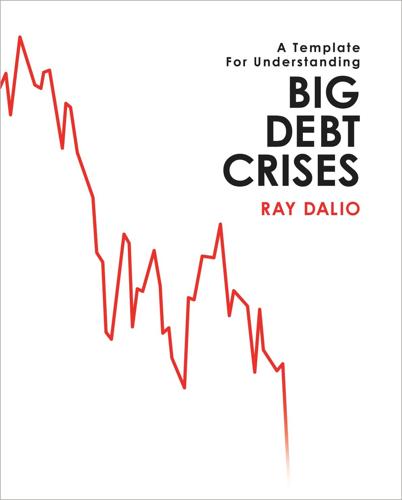
Big Debt Crises
by
Ray Dalio
Published 9 Sep 2018
The largest ones, like UBS and Deutsche Bank, owned stakes in securitizations as a corollary to their role in producing the securitizations themselves. Many smaller banks had simply wanted a piece of the action. After all, many slices of subprime securitizations had been rated AAA, meaning that rating agencies had stamped them as having extremely low risk. During previous periods of stress, such as the savings and loan crisis of the 1980s and the dot-com bubble of the early 2000s, corporate bonds rated AAA had a default rate of 0 percent, according to Standard & Poor’s, one of the big three rating agencies.17 Plus, the subprime securitizations rated AAA offered a premium (though in hindsight, one that was far too small, given the level of risk) relative to corporate bonds of the same rating.
…
Regulation Q, which put caps on interest rates for deposits, was implemented during the Great Depression to give smaller banks a leg up. By the 1950s, it started to create substantial distortions, driving deposits into shadow banking systems.5 Savings & Loan Associates (S&L, a small type of bank) were deregulated in the early 1980s, in part to help those institutions cope with tight monetary policy, contributed to the S&L crisis that began in the mid-1980s.6 How will you ensure policy coordination between legislators, the executive branch, and the central bank? How will you empower regulators to make changes? The most successful US cases represented broad coordination between different government agencies. The Second World War effort was a good example—Congress revised several laws to give the Federal Reserve the authority it needed, Roosevelt used executive orders to supplement the Fed’s efforts, etc.7 In the most successful cases (Volcker’s time at the Fed, for instance), policy makers were given the ability to shift policy nimbly as circumstances changed.
…
The statement said that banks “should curtail all loans either to individuals or business for speculation in real estate, commodities or securities.”55 Supervisors again released several statements detailing a deterioration in lending standards in the 1990s and 2000s.56 Specifically, in 1995 the Fed warned that examiners should watch for excessive easing in credit underwriting standards. The Fed was also concerned about the risks of a cyclical downturn in regional real estate markets. This was due to previous experiences with the S&L crisis in the 1980s. In 1999, supervisors issued a statement that detailed the risks of subprime lending. They also suggested raising the capital standards for those institutions engaged in the practice. This came after several banks failed the year before, due to subprime lending losses. Two years later, the agencies quantified the new capital standards.

What's the Matter with White People
by
Joan Walsh
Published 19 Jul 2012
He could only get away with slashing Great Society programs that benefited the poor. Reagan began a destructive spiral of concentrating wealth in the hands of fewer people and deregulating business that culminated in the economic crash we’re still digging out of today. He even heralded it, by signing the banking deregulation act that waved the “Go” flag on the savings and loan scandal and foreshadowed the repeal of Depression-era Glass-Steagall banking regulations a decade later. Family savings rates began to decline in the Reagan years, while borrowing rates climbed. This is the period when it began to seem as though Big Capital, instead of paying workers higher wages, figured out how to make more money by lending them that cash to stay in the middle class.
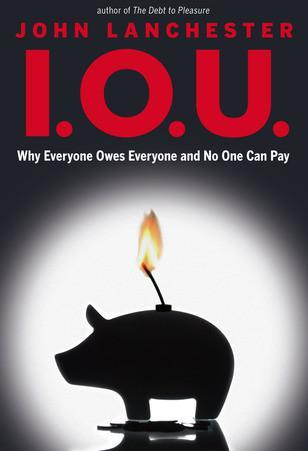
I.O.U.: Why Everyone Owes Everyone and No One Can Pay
by
John Lanchester
Published 14 Dec 2009
As for the bailouts, there are various ways of calculating their cost so far, with Neil Barofsky, the special inspector general in charge of administering the program, putting the cost as of March 31, 2009, at $2.98 trillion.2 By adding to that the imminent bailout of the gigantic financial corporation Citigroup, the market commentator Barry Ritholtz came up with a total cost of the bailout as $4.6165 trillion.3 (He also makes the point that some estimates of the cost are even higher, quoting a Bloomberg figure of $7.76 trillion.) He then put the figure into historical perspective. That number is bigger than the Marshall Plan, the Louisiana Purchase, the Apollo moon landings, the 1980s savings and loan crisis, the Korean War, the New Deal, the invasion of Iraq, the Vietnam War, and the total cost of NASA’s space flights, all added together—repeat, added together (and yes, the old figures are adjusted upward for inflation). Not that we in the United Kingdom are any better off. The 30 percent decline in the value of the pound is unlikely to go away as quickly as it arrived.
…
Morgan, 152 derivatives and, 64–71, 116, 120–21, 183 Exxon deal and, 67–68, 70, 121 Glass-Steagall Act and, 64–65 JPMorgan Chase, 190, 227 Julian, Harriette, 130–31 Kahneman, Daniel, 136–42, 193 Kerviel, Jérôme, 51 Keynes, John Maynard, 49n, 136 predictions of, 213–15 risk and, 55, 145 Kindleberger, Charles P., 104 King, Mervyn, 167, 178, 206 King’s Cross station, 88–90 Kreuger, Ivar, 105 Kynaston, David, 21, 23 leaderless group challenge, 139–40 Leeson, Nick, 51–52, 54 Lehman Brothers, 190, 204, 225 collapse of, 39, 75, 78 Leland, Hayne, 151 leverage: of banks, 35–36, 41–42, 70, 190 debt and, 60–61, 181, 190 deleveraging and, 41–42, 83 derivatives and, 51, 54–55 housing and, 60–61, 83, 95, 97 regulation and, 181, 186, 188, 190 risk and, 35–36 Li, David X., 115–17, 157–58 liabilities, 31–35 in balance sheets, 25–28, 31–34, 37 of banks, 25, 32–35, 37, 41, 204 of individuals, 27–28, 35 leverage and, 35, 41, 60 libel law, 93 life expectancies, 17, 213 liquidity, 212 housing and, 28–29, 90, 96–97 investments and, 60–61 Lloyds TSB, 36, 38–40 loans, lending, 74–76, 108–9 in balance sheets, 27, 30, 34 of banks, 22, 24, 27, 33–36, 41–42, 58–60, 67, 69–70, 74, 83–84, 91–94, 102, 117, 127, 129–30, 143, 146, 165, 187, 216–17, 229 credit and, 209, 216–17 derivatives and, 50–51, 55, 66–75, 80, 121–22 Exxon deal and, 67–68 interest rates and, 59–60, 66, 74, 102, 108, 145, 172–73 paying the bill and, 220–21 predatory, 122, 127–32 risk and, 66–67, 69–72, 74–75, 80, 95, 117, 145, 174 securitization in, 69, 74 see also mortgages London, 53, 84 housing in, 88–90 see also City of London Long-Term Capital Management (LTCM): collapse of, 142, 162, 164–65, 230–31 derivatives and, 54–56, 80 loss aversion, 137 Lovelock, James, 231 Lowenstein, Roger, 161 Macmillan, Harold, 216 Madoff, Bernard, 105, 171, 191–92, 195 Mailer, Norman, 172 Manias, Panics, and Crashes (Kindleberger), 104 manufacturing, 4, 13, 58, 109, 229 and financial vs. industrial interests, 197, 199 Marxist analysis of, 15–16 stocks and, 148–49 market discipline, 183–84 Markopolos, Harry, 192 Markowitz, Harry, 147–49, 158 mark to market, 42, 105–6 Marx, Karl, 15–16 Maryland, housing in, 125–31 Masters, Blythe, 68, 121 mathematics, 5, 231 derivatives and, 47–48, 52–54, 115–17, 166 risk and, 46, 55–56, 74, 133, 136, 146–50, 154, 158, 160–67, 202 of share pricing, 147–48 Meriwether, John, 54 Merrill Lynch, 39, 77, 120, 190, 227 Merton, Robert, 54–55 microeconomics, 137 Minsky, Hyman, 104 Monetary Policy Committee, 178–79 money: assumptions based on primacy of, 202–4 cost of, 102–3 flows of, 7–9, 26 inconceivable amounts of, 8 Money Machine, The (Coggan), 25 Moody’s Investors Service, 62, 70, 114, 119, 208, 210 Morgan, John Pierpont, 20, 64 Morgan Stanley, 40, 64, 227 Morris, Charles, 42 mortgages, 38–40, 83–87, 89–95, 97–102, 110–32 in balance sheets, 27–28 balloon payments on, 100 and buy-to-let properties, 177 conforming, 112, 124 credit ratings and, 123–24, 126 of Cutter family, 126–27 defaults on, 159–60, 163, 165, 229 derivatives and, 38, 57–58, 75–76, 112–22, 132, 157–60, 172, 210–12 discriminatory practices and, 99–101, 127 durations of, 95 endowment, 86–87, 89–90, 146 Iceland’s economic crisis and, 10–11 interest and, 8, 58, 86, 89, 91–92, 95, 100, 102, 108, 110, 112–14, 122, 128, 145–46, 174, 176, 212 “liar,” 126, 132 “no doc,” 132 No Income, No Job or Assets (NINJA), 126 piggyback, 132 predatory lending and, 122, 127–32 regulation and, 99–100, 185 risk and, 145, 158–60, 163–65 sizes of, 92–94 subprime, 38, 75, 83, 100, 113–19, 122–25, 127, 132, 157–59, 165, 202, 210 see also houses, housing, home ownership Nasdaq, 104 nationalization, 24, 39–40, 228–30 New York Times, The, 77, 98, 208 “Night in Tunisia, A,” 45 Nikkei 225, 51–52, 54 9/11 terrorist attacks, 2, 107 Northern Rock, 5, 39, 94, 194, 206 Obama, Barack, 77, 205 regulation and, 188, 190, 223–24 Objectivism, 142–43, 173 oil, 3–4, 107–8, 148–49 “On Default Correlation” (Li), 116 options, 50–52, 151, 174, 184 how they work, 46–47, 50–51 Osaka exchange, 54 Pacioli, Luca, 26 panic of 1893, 64 panic of 1907, 20, 64 Parker, Charlie, 45 Paulos, John Allen, 8 pensions, 76–77, 165, 204 in balance sheets, 27–28, 31 Phillips, Julia, 199 politics, politicians, 5–6, 19–21, 23–25, 81, 118–19, 169–70, 176–78, 217–26, 228–32 AIG bailout and, 76–78 banks and, 25, 33, 43, 182, 186, 195, 202, 207, 211, 217, 228–31 bonds and, 29–30, 61–62, 103, 109, 118, 144, 176–77, 208–9 derivatives and, 57, 183–86 financial industry’s ascent and, 19–20 free-market capitalism and, 14–15, 19, 21, 23–24 housing and, 87–89, 91, 96–101, 177–78 Iceland’s economic crisis and, 9–10, 12, 24, 223 interest rates and, 102–3, 107–8, 172–80, 221 paying the bill and, 219–23 regulation and, 15, 19–21, 24, 169, 180–92, 195, 199, 201, 223–26 risk and, 142–43, 164–66, 174, 184 Ponzi, Charles, 105 Ponzi schemes, 191–92 poor, poverty, 3–4, 13, 21, 82, 179, 196 housing and, 100, 113, 118, 121–23, 126–27, 130–31, 163 pork bellies, 48–49 portfolio insurance, 151–52, 162 “Portfolio Selection” (Markowitz), 147 Posner, Richard A., 120, 174, 182, 193 Powell, Anthony, 62 price, prices, 105–11, 203 and banking-and-credit crisis, 216–18, 220 bonds and, 61, 63, 102–3, 108–10, 144 derivatives and, 38, 46–52, 54, 56, 75, 158–59, 166 of houses, 5, 28–29, 37–38, 61, 71, 86–91, 101, 109–11, 113, 115, 125, 157, 160, 164–66, 173–76, 194, 208 of oil, 3–4, 107–8, 148–49 risk and, 145–50, 158–59, 164–66 of stocks, 102, 105–6, 109–10, 147–51, 158, 174 of toxic assets, 37–38, 42 volatility of, 47–48, 148–50 “Pricing of Options and Corporate Liabilities, The” (Black and Scholes), 45, 47–48, 147 probabilities, 46, 55, 74, 115, 141, 145, 153–55, 160–63 profits, 20, 28, 104–6, 110, 192, 226–28, 230 banks and, 33, 35, 67, 78, 227–28 and benefits of debt, 59–60 derivatives and, 50, 54, 57, 63, 65, 106, 114, 121–22 Enron and, 105–6 regulation and, 204, 226 risk and, 150, 226 Protection of Homeowners in Foreclosure Act, 131 “Quiet Coup, The” (Johnson), 19–20, 185–86 Ragtime (Doctorow), 64 Rand, Ayn, 142–43, 173 Reagan, Ronald, 14, 19–20, 24, 142, 185 recessions, 42, 89, 94, 142, 171, 175, 219 regulation, deregulation, 15, 19–22, 24, 169, 180–202 banking and, 21, 33, 180–91, 194–96, 199–200, 202, 204–5, 208, 211, 223–27 bond ratings and, 208–9 derivatives and, 68, 70, 73, 153, 183–86, 200–201 framework and regime of, 189–92 market discipline and, 183–84 mortgages and, 99–100, 185 proposals for, 223–26 risk and, 143, 153, 164, 187–88, 191, 195, 202, 204–5, 212, 224, 226 in U.K., 21–22, 105n, 180–82, 194–96, 199–201, 218 in U.S., 181, 184–92, 195, 199–200, 223–24, 227 Reykjavík, 10, 12, 170 risk, risks, 49–58, 66–76, 133–36, 141–67, 211–12, 219 AIG and, 75–76 assessment of, 46, 55–56, 74, 133, 135–36, 141–43, 145–67, 187–88, 191, 202, 205, 212, 216, 226 banks and, 19, 34–37, 41, 133, 135–36, 143, 150–54, 156–57, 160, 165–66, 174, 187–88, 191–95, 202, 204–7, 216, 224, 226, 228, 230 bonds and, 61–63, 103, 118, 144, 154, 208 derivatives and, 46–47, 49–52, 54–55, 57–58, 66–75, 78–80, 114–15, 117–22, 151, 153, 158–60, 163, 166–67, 184–85, 205, 212 desirability of, 144, 146, 150, 206–7 diversification and, 146–48 Greenspan and, 142–43, 164–66, 174, 184 hedging of, 49–50, 52, 58, 115, 205 historical data and, 163, 166 housing and, 88, 94–97, 112–13, 125, 129, 145, 158–60, 163–65 investing and, 5, 68, 70, 88, 103, 144, 146–53, 158, 165, 184, 190 leverage and, 35–36 LTCM and, 55–56 overconcentration of, 72–73 regulation and, 143, 153, 164, 187–88, 191, 195, 202, 204–5, 212, 224, 226 securitization and, 69–70, 163, 165 of stairs, 134–35 VAR and, 151–57, 162–63 risk-adjusted return on capital (RAROC), 150–51 Ritholtz, Barry, 219–20 Robinson, Phillip, 128–31 Rogers, Jim, 221 Royal Bank of Scotland (RBS), 34–36, 120, 227 bailout of, 32, 40, 204 Russia, 3, 15–16, 18, 53 bond default of, 55–56, 162, 164–65 Salomon Brothers, 63 Sanford, Charles, 150 Santander, 40 savings, 28, 86, 107, 177, 179, 187 savings and loan crisis, 73, 185, 220 Scholes, Myron, 45, 47–48, 54–55, 147 Securities and Exchange Commission (SEC), 195 credit ratings and, 209–10 regulation and, 153, 186, 189–92 securitization, 20, 22, 200 derivatives and, 69–70, 74, 113–14, 117–19, 122, 212 risk and, 69–70, 125, 163, 165, 212, 224 selling, sales, 34, 42, 104, 174, 203 of bonds, 59, 61–63, 144 derivatives and, 46–50, 52, 56, 65, 67–68, 73–74, 120 of equity, 58–59 of houses, 28–29, 71, 89–90 risk and, 151–52, 165, 224 Shiller, Robert, 106, 145n, 194 Simon, David, 83–84 Singapore exchange, 54 Skilling, Jeffrey, 106 small numbers, law of, 137 Sociét Générale, 51, 77 solvency, insolvency, 28–29 of banks, 36–38, 40–43, 64, 74–75, 120 Spain, 15, 40, 177, 214 contracting economy of, 222–23 housing in, 92, 110 special purpose vehicles (SPVs), 70, 120 stairs, deaths caused by, 134–35 Standard & Poor’s (S&P), 62, 114, 151, 209 statistics, 160–62 Stefánsdóttir, Rakel, 9–10, 12 stock market, stocks, 22, 54–55, 61, 76, 80, 101–11, 115, 226 bubbles and implosions in, 3, 42, 103–9, 142, 175–76 derivatives and, 50–52, 54 investing in, 59, 73, 101–7, 111, 146–52, 158, 175, 192 new-economy, 103 1929 crash of, 152, 199, 213 October 1987 crash of, 142, 151–52, 161–62, 164–65 prices of, 102, 105–6, 109–10, 147–51, 158, 174 structured investment vehicles (SIVs), 120 Summa de Arithmetica (Pacioli), 26 Summers, Lawrence, 43, 74, 188 Taleb, Nassim, 53, 155–56 Tax Reform Act of 1986 (TRA), 100 technology, 42, 104, 149, 155, 166 terrorism, 2, 12, 18, 107 Tett, Gillian, 121, 193 Thatcher, Margaret, 199, 217, 222 free-market capitalism and, 14, 21, 24 on housing, 87, 91, 98 regulation and, 21, 195–96 torture, end of ban on, 18 tranching, 117–18, 122 Treasury, British, 181–82 Treasury, U.S., 43, 54, 64, 74, 76–78 AIG bailout and, 76, 78 regulation and, 188–90 Treasury bills (T-bills), 29–30, 62, 103, 118, 144, 208 China’s investment in, 109, 176–77 Trichet, Jean-Claude, 92 Trillion Dollar Meltdown, The (Morris), 42 Troubled Assets Relief Program (TARP), 37, 189 Turner, Adair, 181 Tversky, Amos, 136–38, 141 UBS, 36, 120 uncertainty, 96 fair value theory and, 147–48 risk and, 55–56, 153, 163 United Kingdom, 9, 11–12, 18, 28–29, 61, 122–24, 134, 139, 194–202, 216–18 banking in, 5, 11, 32–36, 38–40, 51–54, 76–77, 89, 94, 120, 146, 180, 194–96, 199, 202, 204–6, 211–12, 217, 227–28 bill of, 220–22, 224 and City of London, 21–22, 32, 195–97, 200, 217–18 credit ratings and, 123–24, 209 derivatives and, 72, 200–201 financial vs. industrial interests in, 196–99 free-market capitalism in, 14–15, 21, 230 GDP of, 32, 214, 220 Goodwin’s pension and, 76–77 housing in, 38, 87–98, 110, 122, 177–78 interest rates in, 102, 177–80 personal debt in, 221–22 prosperity of, 214, 216 regulation in, 21–22, 105n, 180–82, 194–96, 199–201, 218 United Nations, 4 United States, 17–22, 34, 62–71, 120–31, 134n, 165, 199–201 AIG bailout and, 76–78 banks of, 36–37, 39–40, 43, 63–71, 73, 75, 77–78, 84, 116, 120–21, 127, 150, 152, 163, 183, 185, 190, 195, 204, 211–12, 219–20, 225, 227–28 bill of, 219–20 China’s investment in, 109, 176–77 credit and, 109, 123–24, 195, 208–9, 211 free-market capitalism in, 14–15, 230 housing in, 37, 82–86, 95, 97–101, 109–10, 114–15, 122, 125–31, 157–58, 163 interest rates in, 102, 107–8, 173–77 regulation in, 181, 184–92, 195, 199–200, 223–24, 227 urban desolation in, 81–86 value, values, 42, 74–75, 78–80, 103–4, 179, 181, 217–18, 220, 227 bonds and, 61, 103 derivatives and, 38, 48–49, 185, 201 housing and, 28–29, 71, 90, 92–95, 111, 176 investing and, 60–61, 104, 198 LTCM and, 55–56 notional, 38, 48–49, 80 value at risk (VAR), 151–57, 162–63 Vietnam War, 18, 220 Viniar, David, 163 volatility, 20, 158 risk and, 47–48, 148–50, 161 Volcker, Paul, 20 Waldrow, Mary, 127 Wall Street, 22, 53, 64, 129, 188 Washington Post, The, 18 wealth, 4, 10, 19–21, 64, 204, 206 financial industry’s ascent and, 20–21 in free-market capitalism, 15, 19, 230 housing and, 87, 90, 121 Keynes’s predictions on, 214–15 in West, 218–19 Weatherstone, Dennis, 152 Wells Fargo, 84, 127 Wessex Water, 105n West, 14–18, 43, 213, 231 conflict between Communist bloc and, 16–18 free-market capitalism in, 14–15, 17, 21, 23 wealth in, 218–19 wheat, 49n, 52 When Genius Failed (Lowenstein), 161 Williams, John Burr, 147 Wilson, Lashawn, 130–31 Wire, The, 83–84 World Bank, 58, 65, 69 * GDP, which will be mentioned quite a few times in this story, sounds complicated but isn’t: it’s nothing more than the value of all the goods and services produced in an economy.
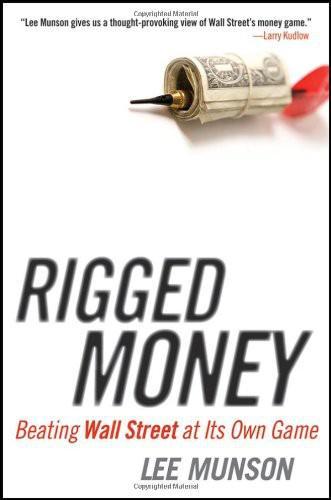
Rigged Money: Beating Wall Street at Its Own Game
by
Lee Munson
Published 6 Dec 2011
It began with the Depository Institutions Deregulation and Monetary Control Act that allowed banks to merge, among other things. Two years later the Garn-St. Germain Depository Institutions Act deregulated savings and loans and gave birth to bank-sponsored adjustable rate mortgages. Remember that all of this was supposed to help people in an environment with double-digit inflation. Fast forward through the savings and loan crisis, a hot stock market, and years of profitable (for Wall Street) mergers of small banks across America and you had the perfect environment for yet more deregulation. Since the early 1980s banks have been on a non-stop whine-a-thon about unfair limitations and the need to diversify into riskier securities.
…
In May 2000, Greenspan said, “So long as we recognize the risks and insist on good risk-management systems . . . economic growth is, I suggest, enhanced by the kinds of financial innovation that technology and deregulation are now producing.”1 Plus, with the government backing banks, it didn’t matter if things blew up like they did in the 1920s or late 1980s with the savings and loan crisis. Banks were important and would have to be bailed out. “History teaches us that a sound banking system, willing and able to take deposits and extend credit, is a prerequisite for the long-term health of the national economy. Securities markets alone will never be able to substitute for the extensive and detailed knowledge that bankers—especially community bankers—bring to the intermediation process.”2 Part of the financial crisis was attributed to the local banker sending loans to Wall Street with no further responsibility.
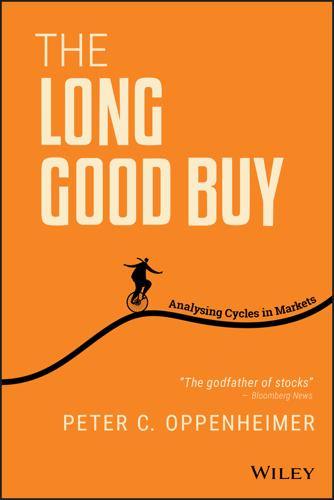
The Long Good Buy: Analysing Cycles in Markets
by
Peter Oppenheimer
Published 3 May 2020
The most powerful supercomputer (the Cray-2) in 1985 had a similar processing ability to an iPhone 4.2 The scale of the digital revolution and the quantity of available data since then would have been unimaginable at the time, and this seems to be accelerating. Microsoft's president Brad Smith recently signalled that ‘this decade will end with almost 25 times as much digital data as when it began’.3 Over the same period, there have been three major recessions (in most economies) and several financial crises, including the US Savings & Loan crisis of 1986, the Black Monday stock market crash of 1987, the Japanese asset bubble and collapse between 1986 and 1992, the Mexican crisis of 1984, the Emerging Market crises of the 1990s (Asia in 1997, Russia in 1998 and Argentina in 1998–2002), the ERM currency crisis of 1992, the technology collapse in 2000 and, of course, the most recent global financial crisis, starting with the subprime mortgage and US housing declines of 2007, and the European sovereign debt crisis of 2010/2011.
…
For simplicity, it can be argued that there have been three long ‘super cycles’, or secular bull markets, since the Second World War. Each of these has been punctuated by occasional sharp drawdowns and ‘mini’ bear markets (often quite sharp). For example, the secular bull market of 1982–2000 was interrupted by the Savings and Loan crisis in the early 1980s, the crash of 1987, the bond crisis in 1994 (when 30-year US treasury yields rose about 200bp in just 9 months) and the Asia crisis of 1998. But one can still consider these periods ‘super cycles’ because the powerful returns were driven by some very specific structural factors, which remained uninterrupted over long periods of time, even during the corrections.
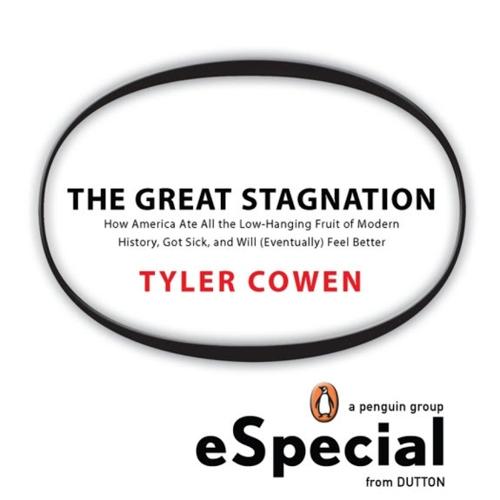
The Great Stagnation
by
Tyler Cowen
Published 24 Jan 2011
At the same time, we didn’t see headlines like NOT SO MANY STRIKING NEW INNOVATIONS THIS YEAR. No, and so our expectations remained out of synch. We felt invulnerable. In the early 1980s, we had a lot of apparently bad events that actually didn’t work out so tragically, at least not for most Americans. Let me list a few:• The savings and loan crisis of the early 1980s • The failure of Continental Illinois (then a major U.S. bank) in 1984 • The stock market crash of 1987—Black Monday, a 22.5 percent drop in one day • The bursting of the real estate bubble in the late 1980s • The Mexican financial crisis of 1994 • The Asian financial crisis of 1997-1998 • The Long-Term Capital Management (a hedge fund) crisis of 1998 • The bursting of the dot.com bubble in 2001 In each case, it seemed initially that something really terrible was happening to the economy.
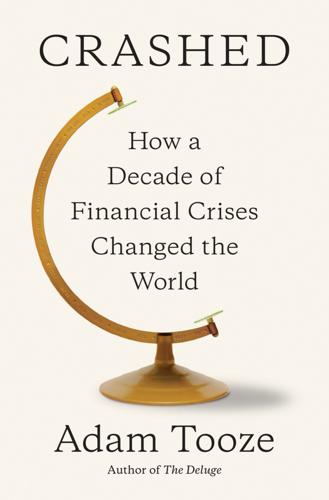
Crashed: How a Decade of Financial Crises Changed the World
by
Adam Tooze
Published 31 Jul 2018
Simplifying a more complicated story analyzed in W. H. Starbuck and P. N. Pant, “Trying to Help S&Ls: How Organizations with Good Intentions Jointly Enacted Disaster,” in Organizational Decision Making, ed. Z. Shapira (Cambridge: Cambridge University Press, 1996), 35–60. 12. T. Curry and L. Shibut, “The Costs of the Savings and Loan Crisis: Truth and Consequences,” FDIC Banking Review, https://www.fdic.gov/bank/analytical/banking/2000dec/brv13n2_2.pdf. 13. Schwartz, Subprime Nation, 96–101. 14. R. K. Green and A. B. Schnare, “The Rise and Fall of Fannie Mae and Freddie Mac: Lessons Learned and Options for Reform,” No. 8521, USC Lusk Center for Real Estate, 2009. 15.
…
See private sector involvement (PSI) bailouts, 12, 166–201 of AIG, 178–79 of European banks, 184–95 of Fannie Mae/Freddie Mac, 172–75 of French banks, 193, 194 G7/G20 meeting of finance ministers at US Treasury, 189, 192–93 of German banks, 188–89, 193, 194–95 of Irish banks, 185–86, 193 mechanisms for, 167 private bad bank plan and, 170 under section 13(3) emergency powers, 171, 178 state-brokered takeover deals, 170–71 of UK banks, 189–91 warfare model for economic policy in, 169–70 Bair, Sheila, 87, 196, 295, 302, 303, 305, 307, 313, 314, 405 balance of financial terror scenario, 35, 40, 41, 75 Banca Intesa, 234 Bankers Trust, 83 Bankia/BFA, 431–32 Banking Reform Act of 2013 (United Kingdom), 541 Bank of America, 48–49, 54, 59–60, 69, 170, 292, 316 exits TARP program, 300 liquidity provided to, 208, 209, 217 Merrill Lynch purchased by, 175–76, 199–200 stress test of, 299 Bank of China, 249 Bank of England, 146 banking supervision reincorporated into, 541 emergency stimulus package following Brexit, 555 Federal Reserve liquidity swap lines and, 211, 212, 213 financial integration of Eastern Europe and, 126 liquidity provided by, 203 QE1 bond purchases of, 285–86 renmimbi internationalization and, 542–43 Bank of Ireland, 185–86 Bank of Japan, 212, 483 Bank of Korea, 260 Bank of Scotland, 208 Bank of Thailand, 258 bankruptcies of American cities and counties, 450–51 Bankruptcy Abuse Prevention and Consumer Protection Act of 2005, 69 banks bonuses paid by, 292–93, 306 capital requirements, 84–88 central banks (See central banks) default insurance premiums on bank debt, 292 European (See European banks) funding mechanisms for holding mortgage holdings, 60–62 investment (See investment banks) MBS held on balance sheets of, 59–60 nationalization/breakups considered for US banks, 293–98 recapitalization of, 315–17 regulatory repeal efforts, under Trump, 587–91 savings and loan crisis, 44–45 stress tests, of European banks, 315, 357–58 stress tests, of US banks, 298–301, 309–10 See also specific banks Bannon, Steve, 468, 573–74, 592 Barclays, 191, 541 leverage of, 88 liquidity provided to, 208, 210, 218 Barroso, José Manuel, 410, 433, 435, 490 Basel I accord, 85, 311 Basel II accord, 85–87, 311 Basel III accord, 311–14 capital requirements, 313–14 global systemically important financial institutions (G-SIFI), regulation of, 311–13 leverage, measurement of, 314 Bayerische Landesbank, 124 Bear Stearns, 53, 55, 59–60 bailout of, 171 bilateral repo market losses of, 147–48 fund bailouts by, 144 Beck, Glenn, 346–47, 368 Belarus, 232, 506 Belgium, 105, 167, 193 Benedict XVI, Pope, 397 Berlusconi, Silvio, 94, 187, 264, 269, 326, 342, 386, 399, 410, 411 Bernanke, Ben, 10, 13, 38–40, 144, 162, 163–64, 196, 442, 444, 460 cautions against austerity efforts, 352, 366–67 Dodd-Frank Act and, 304, 305 on dollar funding needs of European banks, 206 Lehman collapse and, 176, 177 liquidity swap lines and, 212, 215 QE2 and, 367 reappointment of, 304 taper and, 475, 476 TARP proposal and, 180–81 big short, 70–71 Big Short, The (Lewis), 74 bilateral repo market, 61–62, 147–49 Blair, Tony, 3, 81 Blanchard, Olivier, 529 Blankfein, Lloyd, 559 Bloomberg, 217 Bloomberg, Michael, 88 Blue Dog Coalition, 278 BNP Paribas, 110, 144, 194, 210, 326 Boediono, 258–59 Boehner, John, 174–75, 182, 390–91, 467, 568 Bofinger, Peter, 288 bond vigilantes, 29–30, 284–85, 291, 348, 350, 481, 525, 585 bonuses, Wall Street, 292–93, 306 Bosnia and Herzegovina, 232 Bowles, Erskine, 583 Bradford & Bingley, 184 Brazil, 32, 475, 477, 601 Breitbart, 459 Bretton Woods agreement of 1944, 11 Bretton Woods system, 80 dollar pegged to gold in, 11 euro and, 92 mortgage loan stability and, 45 Brexit, 544–61 Bank of England stimulus package, 555 big business and, 549, 556 Cameron’s attempt to renegotiate EU treaties, 545–48 City of London and, 549, 550, 556 EU and British negotiating positions, 558–61 IMF warns against leaving EU, 550 immigration issue and, 552, 553 May’s agenda for and negotiating positions, 557–60 Obama’s effort to persuade UK to remain in EU, 551 post-2008 crisis break in UK relations with EU, 544–45 Remain campaign message and, 549 sterling plunge following, 554–55 trade and investment at stake for Britain, 548–49 trade union support of Remain, 549–50 US investment bank support of Remain, 550–51 vote for, 553–54 Brookings Institution, 25 Brown, Gordon, 81, 460 bank bailouts and, 184, 187, 189, 190, 193 London G20 summit and, 265–66, 268, 271, 272–73 refuses to allow Barclays takeover of Lehman, 176 Buchanan, Pat, 572 Bucharest, 232 budget, US crisis of 2011, 390–93 sequester cuts, 464, 465–66 of 2013, 464–66 of 2014, 466–67 of 2017, 581–82 budget deficits automatic stabilizers and, 283–86 Bush administration and, 27–29, 30, 36, 282–83 Clinton administration and, 27, 29 concerns raised over, 29, 35 Democrats and, 36–37 in eurozone countries, 100–2 scale of, and vulnerability to bond market pressure, 29–30 Buffett, Warren, 40, 458 Buiter, Willem, 182, 389 Bulgaria, 121, 126, 227, 229 Bündchen, Gisele, 40 Bundesbank, 92 Bunning, Jim, 181 Bush, George H.
…
See United Kingdom “great moderation”, 10, 11, 44 Greece, 15 austerity in, 330–31, 340, 376–77, 384–85, 409 cross-border financial flows in, 106–7 debt crisis in, 14, 322, 323–45, 357–59, 376–78, 381–89, 408–10, 422–29 debt restructuring and, 384–85, 388–89, 423–28 deficits in, 101, 324, 338 demonstrations in, 340, 375, 409 elections of 2012, 428 Eurogroup-Syriza debt restructuring confrontation, 517–35 extend-and-pretend in, 325, 328, 331, 336, 358–59, 376, 382–83, 401, 425, 529, 532 Fitch downgrade of debt of, 339 Papandreou replaced as prime minister, 409–10 real estate boom in, 107 rescue fund for, 342–44 social crisis in, 515–16 #Thisisacoup, 533 troika’s rescue plan for, 336–37, 339–40 unemployment in, 358–59, 374, 408, 428, 515 vote against troika proposal, 530 Greenspan, Alan, 29, 32, 37, 293, 574, 575 Gref, Herman, 503 Gross, Bill, 40, 349, 379, 481 “Growth in a Time of Debt” (Reinhart & Rogoff), 347 Habermas, Jürgen, 116, 122, 534 Hamilton Project, 25–27, 29, 36, 42, 182, 281, 451, 456, 458 Hammond, Philip, 560, 592 Hartz IV, 95 HBOS, 154, 171, 189–90 Hellwig, Martin, 313 Hensarling, Jeb, 182, 588 Hessel, Stéphane, 374 Hitachi, 158 Hollande, François, 429, 434, 518, 532 Honohan, Patrick, 363 housing market, 7 as collateral for banking, 43 bubble in American, 42–43 bubble in European, 105–6 collapse in, 143–44, 156–57 consumption, impact of rising prices on, 43 savings and loan crisis, 44–45 as single largest form of wealth, 42–43 speculation in, 65–66 See also mortgages/mortgage system HSBC, 75, 143–44, 145, 191, 541, 542 Hu Jintao, 244 Hungary, 121, 123, 126, 127, 227, 229, 230–32, 491–92 Hurricane Harvey, 582 Hypo Real Estate, 84, 154, 185, 188, 198, 286, 358, 378 Hyundai Motors, 256–57, 260 Iceland, 167, 232 Iglesias, Pablo, 376 IKB, 144 IMF.
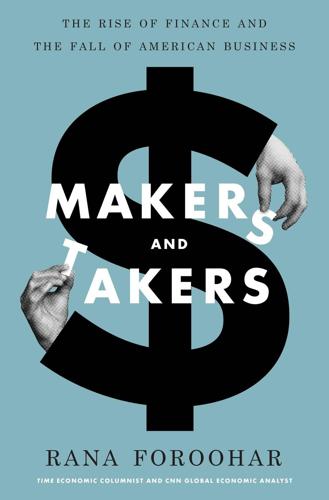
Makers and Takers: The Rise of Finance and the Fall of American Business
by
Rana Foroohar
Published 16 May 2016
(He is just one of many experts who worry about the market-distorting effects of the Fed’s unprecedented program of asset buying and low interest rates, which reached an apex in the wake of the 2008 crisis.) “Easy money monetary policy is the best reward in the world for Wall Street. After all, it’s mainly the rich who benefit from a rising stock market.”58 Although markets boomed under Greenspan, they also went bust more than ever before. The crash of 1987, the S&L crisis of 1989, the Mexican peso collapse of 1994, the Asian financial crisis of 1997, the larger emerging-market crisis of 1998, and the dot-com boom and bust all happened on his watch. Each time the economy faltered as a result, Greenspan would lower rates to boost lending. (He used this tactic so reliably, in fact, that Wall Street bankers began calling it the “Greenspan put”—a caustic term that encapsulated their belief that the Fed would bail them out no matter what.)
…
“If we had been able to put some people in prison, many fewer would have wanted to join in the bad behavior the next time around,” says economist Joseph Stiglitz.38 Yet far fewer people went to jail during the 2008 financial crisis and its aftermath than did after such recent events as the 1980s savings and loan (S&L) crisis, when more than 1,000 bankers were jailed for making bad loans. Sadly, one reason for that contrast is that some of the things that happened in the latest meltdown, despicable though they might be, were actually legal. But that’s not true in all cases. People like Stiglitz and many others believe that existing laws (under bits of legislation like the 2002 Sarbanes-Oxley Act, which was enacted after the Enron debacle to hold corporate leaders more accountable for their actions) could have been better leveraged to prosecute finance executives responsible for the crisis.
…
The length of Dodd-Frank reflects the efforts of lobbyists outlined in chapter 10. It also creates ample new loopholes for clever lawyers to jump through. Critics who argue that reinstating Glass-Steagall wouldn’t be a silver bullet to avoiding financial crises are correct. Bad things can certainly happen in stand-alone commercial banks (remember the S&L crisis?). There would be costs as well as benefits to redrawing the red line between lending and trading, and legislation would also need to be retooled for the modern era. That’s a process that should happen based on forensic study not only of the crisis of 2008 but also of the many that preceded it, with consideration of where future risks might lie.
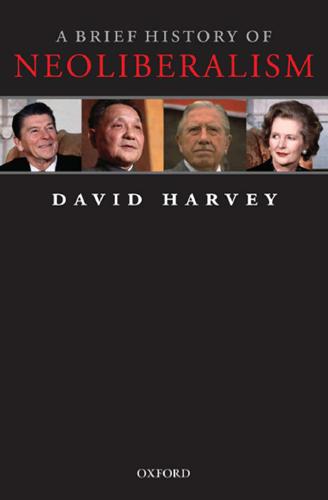
A Brief History of Neoliberalism
by
David Harvey
Published 2 Jan 1995
But this paradoxically means that the neoliberal state cannot tolerate any massive financial defaults even when it is the financial institutions that have made the bad decisions. The state has to step in and replace ‘bad’ money with its own supposedly ‘good’ money—which explains the pressure on central bankers to maintain confidence in the soundness of state money. State power has often been used to bail out companies or avert financial failures, such as the US savings and loans crisis of 1987–8, which cost US taxpayers an estimated $150 billion, or the collapse of the hedge fund Long Term Capital Management in 1997–8, which cost $3.5 billion. Internationally, the core neoliberal states gave the IMF and the World Bank full authority in 1982 to negotiate debt relief, which meant in effect to protect the world’s main financial institutions from the threat of default.
…
If the debt problems of the federal government and of financial institutions are to be resolved without threatening the wealth of elite classes, then ‘confiscatory deflation’ (deeply inconsistent with neoliberalism) of the sort Argentina experienced (hints of which could be found in the US savings and loan crisis of the late 1980s when many depositors could not get access to their moneys) will be the only option. The substantial public programmes that still exist (Social Security and Medicare), pension rights, and asset values (property and savings in particular) will likely be the first victims, and under such conditions popular consent will almost certainly begin to fray at the seams.
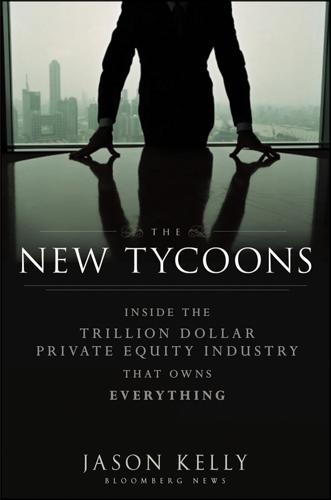
The New Tycoons: Inside the Trillion Dollar Private Equity Industry That Owns Everything
by
Jason Kelly
Published 10 Sep 2012
Another Bass investor, John Grayken, went on to create Lone Star Funds, a Texas-based investment firm focused mostly on distressed real estate. Others included hedge fund manager Marc Lasry, the founder of Avenue Capital. A main area of focus during the Bass years was sifting through the detritus of the savings and loan crisis during the late 1980s, when more than 740 thrifts failed. Bass’s boys deftly parlayed cash, debt, and government assistance into huge gains. For Bonderman and Coulter, the Bass milieu was what they constantly sought to create at what became TPG. “Our formative years were with family money, where we could walk down the hall and make the case for an investment,” Bonderman told me during a chat in TPG’s partners’ conference room, where the couch and coffee table serve as his office when he stops by TPG San Francisco.
…
as fund raiser on IPO as keynote speaker at Columbia conference on leaving Carlyle Mathias and mien and role in Carlyle Group on One Carlisle program personal disclosure and as philanthropist purchase of Fresh Fields and SEIU and on speeches of staff recruitment on Super Return Middle East Safeway Salon (online magazine) Samson Investment Co. Samsonite Savings and loan crisis Schloss, Lawrence Schoar, Antoinette Schorr, Chip Schreiber, John Schwarzman, Steve. See also Blackstone Group; Blackstone Group acquisitions at The Alfred E. Smith Foundation Dinner appointing Blitzer background and wealth Blackstone shares and deal with China declaration of end of credit crisis earning before Blackstone IPO on hedge fund business on IPO James as successor of M & A advice division op-ed headline in Financial Times participation in public calls philanthropy of process of Oregon and Salon magazine about SEIU.
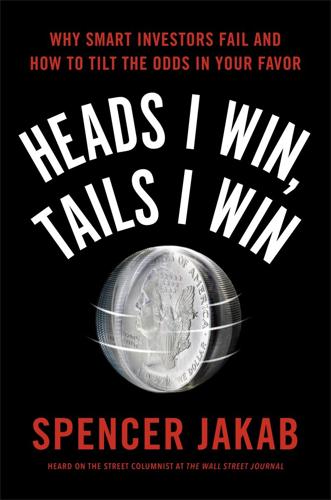
Heads I Win, Tails I Win
by
Spencer Jakab
Published 21 Jun 2016
That theory had proved convenient during most of Miller’s streak, with energy companies in the doldrums, but had begun to hamper his performance by the time we met. Meanwhile, despite rumblings that there was an unsustainable housing bubble under way—in hindsight, it was just peaking when we had our first conversation—his past experience told him those fears were overblown. He had bet big on banks after the savings and loan crisis and eventually profited handsomely. And he had made a massive wager on tottering mortgage guarantor Freddie Mac in the 1980s with great success. What his firm failed to highlight was that he also had gambled and lost on Enron and WorldCom, two of the biggest bankruptcies in history, narrowly escaping with his famous streak intact.
…
Scott, 118–19, 127–28, 147 Arnott, Robert, 106–7, 112, 221–25 Asia, 34, 45, 169, 186–87 Asset Builder, 82–83 Atlantic, 70 Babson, Roger, 123–24 Back to the Future II, 48–50 bailout bill, 32–33 Bank of America, 109 bankruptcies, 39, 66, 101, 109, 214 banks, 135, 181, 203, 207 failed in Depression, 52–53 and hedge funds, 166–67, 169 loans of, 109, 143, 175, 198–99, 235 and savings and loan crisis, 101 Barber, Brad, 209 Barclays Aggregate, 14 Barnum, P. T., 29–30 Baron Rothschild card game, 35–36, 38 Barron’s, 144, 231–32, 240 Bartiromo, Maria, 248 bear market, 22, 32, 35, 38, 46–47, 54–56, 61, 63, 93, 117, 120, 184–85, 237–38, 242, 245, 250 Bear Stearns, 40, 126, 199 Beardstown Ladies, 18–19, 31 behavioral finance, 21–22, 41–42, 70–72, 245 Berkshire Hathaway, 3, 157, 170–71, 235 Berman, Ken, 213 Bernstein, Richard, 145 Bespoke Investment Group, 46, 135 beta (market return), 105, 172, 193, 224 Betterment, 83 Black, Fischer, 240 Black Monday, 39, 240–41 Black Tuesday, 51, 240–41 Blodget, Henry, 88 Bloomberg, 138, 144 Bogle, John, 23, 156–58, 222, 224 bonds, 3, 14–15, 26, 35–36, 58, 62–63, 72–77, 82–83, 95, 145, 153, 158, 165, 175, 189, 205–8, 248 books All I Really Need to Know I Learned in Kindergarten (Fulghum), 150 The Beardstown Ladies’ Common-Sense Investment Guide, 18–19 Confusión de Confusiones (Vega), 234 Conquer the Crash: You Can Survive and Prosper in a Deflationary Depression (Prechter), 125, 238 Contrarian Investment Strategies: The Psychological Edge (Dreman), 129 Dow 100,000: Fact or Fiction, 70, 238 Dow 36,000 (Hassett and Glassman), 69–74, 84, 238 Dow 40,000, 70, 238 The Education of a Speculator (Niederhoffer), 169 Extraordinary Popular Delusions and the Madness of Crowds (Mackay), 241 Financial Reckoning Day, 238 The Great Depression Ahead, 238 The Half-Life of Facts (Arbesman), 102 The Intelligent Investor (Graham), 235–36 Liar’s Poker (Lewis), 165 Manias, Panics, and Crashes (Kindleberger), 245 Market Wizards (Schwager), 108 Money Masters of Our Time (Train), 108 The Next Great Bubble Boom, 238 One Up on Wall Street (Lynch), 148–50, 192–93 Proofiness: How You’re Being Fooled by the Numbers (Seife), 125 A Random Walk Down Wall Street (Malkiel), 106, 146–47, 158, 193–94 Reminiscences of a Stock Operator (Lefèvre), 212 Security Analysis (Graham and Dodd), 158, 194, 218–19, 232 The Stock Trader’s Almanac, 42 Unconventional Success: A Fundamental Approach to Personal Investment (Swensen), 81–82 Where Are the Customers’ Yachts?
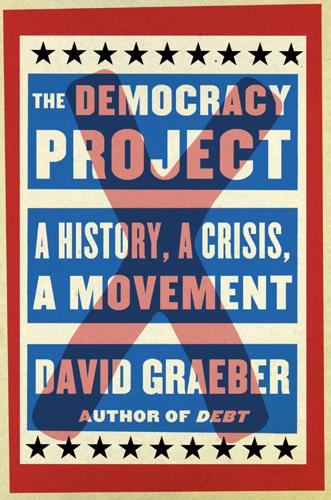
The Democracy Project: A History, a Crisis, a Movement
by
David Graeber
Published 13 Aug 2012
What particularly struck me in Stiglitz’s argument was the connection between wealth and power: the 1 percent were the ones creating the rules for how the political system works, and had turned it into one based on legalized bribery: Wealth begets power, which begets more wealth. During the savings-and-loan scandal of the 1980s—a scandal whose dimensions, by today’s standards, seem almost quaint—the banker Charles Keating was asked by a congressional committee whether the 1.5 million he had spread among a few key elected officials could actually buy influence. “I certainly hope so,” he replied.… The personal and the political are today in perfect alignment.
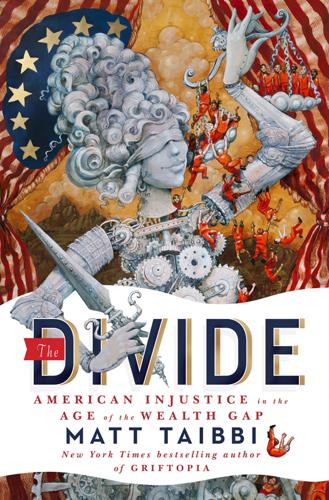
The Divide: American Injustice in the Age of the Wealth Gap
by
Matt Taibbi
Published 8 Apr 2014
Federal prosecutors would sometimes achieve the same end by filing a complaint as soon as they had evidence, instead of rushing into an agreement with the target firm, essentially telling a story to the public that had a kind of jurisprudential value all its own—it put the truth out. In another approach, if the state wanted to fully clean house, it could work corporate crime cases just like narcotics or racketeering cases, starting by charging small players and working their way up the chain. This had been the government’s approach in the savings and loan crisis, when the state started with the littlest of fish and worked its way up to criminally charging whales like Charles Keating of Lincoln Savings and David Paul of CenTrust Savings Bank. “That’s how they did it back then,” says a New York City police investigator who has worked on major bank cases.
…
Staffs were cut at all the major regulatory agencies, and banking watchdogs like the Office of the Comptroller of the Currency and the Office of Thrift Supervision simply stopped pursuing criminal investigations; groups that had referred thousands of cases a year to the Justice Department for prosecution during the S&L crisis completely stopped that activity by the turn of the millennium. In 2009 the OCC referred zero cases for prosecution. On the other hand, welfare fraud was prosecuted like never before, and welfare fraud investigators multiplied like rats in every state of the country, forming unions and lobbying agencies.

Tightrope: Americans Reaching for Hope
by
Nicholas D. Kristof
and
Sheryl Wudunn
Published 14 Jan 2020
America rarely prosecutes white-collar criminals. Even after the 2008 financial crisis, despite widespread illegal conduct that destroyed lives around the country, just one banker went to jail; in contrast, back in the 1980s, almost nine hundred bankers were jailed in the aftermath of the savings and loan scandal. Without much discussion, we have created a two-tier justice system. If you shoplift at the grocery store, you can be carted off to jail. But if you steal tens of millions of dollars from the tax authorities or fraudulently peddle dangerous drugs from a corporate suite, you’ll be hailed for your business savvy
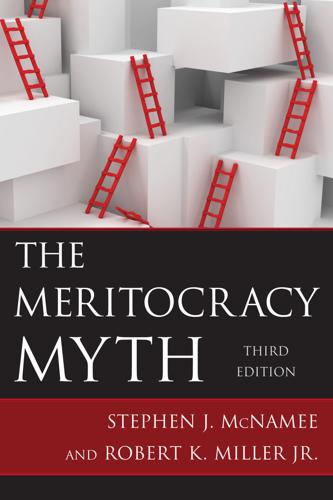
The Meritocracy Myth
by
Stephen J. McNamee
Published 17 Jul 2013
The Ponzi scheme stock fraud perpetrated by Bernard Madoff (an ironic surname for a white-collar criminal) totaling $65 billion is one particularly noteworthy example. Other examples include the notorious and illegal stock manipulations of Ivan Boesky (deal stocks), Michael Milken (junk bonds), and Charles Keating (the savings-and-loan scandal); corporate wrongdoing, including ethics scandals at Enron, WorldCom, Arthur Andersen, Adelphia, Global Crossing, Tyco, and many others; and suspected misconduct in the vast mutual funds and mortgage industries that led to the near collapse of credit markets and the debilitating Great Recession that followed.
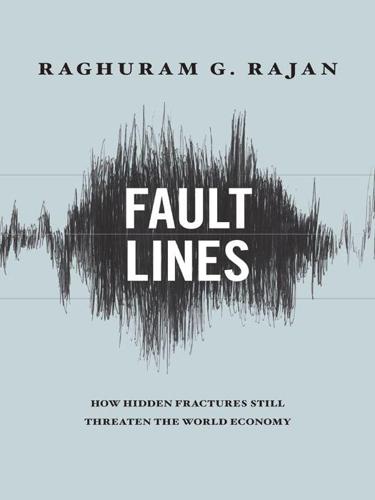
Fault Lines: How Hidden Fractures Still Threaten the World Economy
by
Raghuram Rajan
Published 24 May 2010
The problem with using the might of the government is rarely one of intent; rather, it is that the gap between intent and outcome is often large, typically because the organizations and people the government uses to achieve its aims do not share them. This lesson from recent history, including the savings and loans crisis, should have been clear to the politicians: the consequences of the government’s pressing an agile financial sector to act in certain ways are often unintended and extremely costly. Yet the political demand for action, any action, to satisfy the multitudes who believe the government has all the answers, is often impossible for even the sensible politician to deny.
…
(NBER Working Paper 7793, National Bureau of Economic Research, Cambridge, MA, 2000) that changes in inequality in either direction tend to be associated with reduced growth. 27 See R. Green and S. Wachter, “The American Mortgage Market in Historical and International Context,” Journal of Economic Perspectives 19, no. 4 (2005): 93–114. 28 See, for example, James R. Barth, S. Trimbath, and Glenn Yago, The Savings and Loan Crisis: Lessons from a Regulatory Failure (Los Angeles: Milken Institute, 2004). 29 Bethany McLean, “Fannie Mae’s Last Stand,” Vanity Fair, February 2009. 30 Steven Holmes, “Fannie Mae Eases Credit to Aid Mortgage Lending,” New York Times, September 30, 1999. 31 Wayne Barrett, “Andrew Cuomo and Fannie and Freddie: How the Youngest Housing and Urban Development Secretary in History Gave Birth to the Mortgage Crisis,” Village Voice, August 5, 2008. 32 National Home Ownership Strategy (Washington, DC: Department of Housing and Urban Development, 1995), chapter 4.
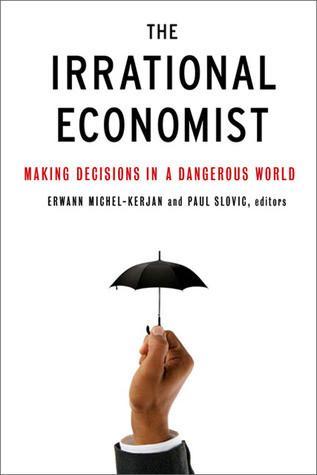
The Irrational Economist: Making Decisions in a Dangerous World
by
Erwann Michel-Kerjan
and
Paul Slovic
Published 5 Jan 2010
The subprime mortgage crisis has elicited strong calls for government aid, and it is fair to say that the government response so far has been disorganized, ineffective, and remarkably opaque in terms of its goals and strategies. This is all the more disturbing given the dollar costs of the subprime crisis, which far exceed those of past natural disasters or the terrorist attacks of 9/11. Due to regulatory “forbearance,” the response to the savings-and-loan crisis of the 1980s was also inefficient. One implication is that a greater role could be assigned to well-designed government insurance programs as “automatic stabilizers” to counter future financial crises. Lesson 3: Government Catastrophe Insurance Responds to Private Market Failures Over the last forty years, private insurance firms have withdrawn from providing primary coverage over the entire range of natural disaster and terrorism risks in the United States.3 The federal government started providing primary coverage against floods in 1968, following a decade of extremely heavy flooding.
…
In a way, his involvement with the creation of game theory meant that a perfect foresight equilibrium could be shown, by the use of fixed-point theorems, to be a consistent concept, and so represents a step away from his earlier work. I now think his original position had important merits. 4 For a general survey, see Laffont and Martimort (2002). 5 Arguments of this type had already been raised in connection with the savings and loan crisis of the 1980s (see Kane [1989], though he was also concerned with government guarantees and regulation). Chapter 22 Heal: Environmental Politics 1 This chapter is an extract from Whole Earth Economics, forthcoming. 2 He also won the Nobel Peace Prize in 1906, but for his role in mediating in the Russo-Japanese War rather than for his environmental work. 3 Quoted from the section titled “Lyndon B.
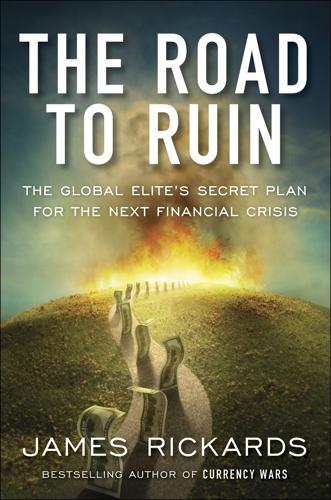
The Road to Ruin: The Global Elites' Secret Plan for the Next Financial Crisis
by
James Rickards
Published 15 Nov 2016
Bankers promptly separated themselves into commercial banks that took deposits and made loans, and investment banks that underwrote and sold securities. Separation worked well for sixty-six years and saved the United States from major banking crises. Individual banks such as Continental Illinois in 1984 might fail, and there were still conflicts and loan losses such as the 1980s savings and loan crisis. Still, after Glass-Steagall there was no general banking crisis of the kind seen from 1929 to 1933. Glass-Steagall worked for exactly the reason complexity theory suggests. By breaking the banking system into two parts, Glass-Steagall made each part stronger by shrinking systemic scale, diminishing dense connections, and truncating channels through which failure of one institution jeopardizes all.
…
Policy blunders began immediately with the use of the newly approved TARP funds. Paulson and Bernanke sold this to the Congress as a fund to buy bad assets from banks and then sell them gradually to recoup costs for taxpayers’ benefit. This tactic made sense; a version of this was used effectively to clean up the 1980s savings and loan crisis. Another benefit was that bad assets were removed from the banks. With clean balance sheets banks could resume lending to small-and-medium-size enterprises that are the most dynamic and create the most jobs. Instead of implementing his promises to Congress, Paulson gave the money to the banks and allowed them to keep the bad assets in the hope that they recouped their losses.
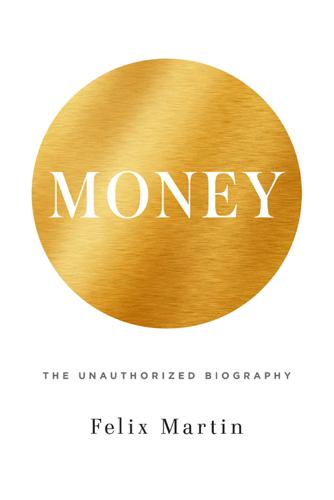
Money: The Unauthorized Biography
by
Felix Martin
Published 5 Jun 2013
But the global financial crisis that began in 2007 is just the last of a long list within recent memory—from international sovereign debt crises like the Argentinian default of 2002 and the Russian default of 1998, to domestic financial crises such as the collapse of the boom in U.S. technology stocks in March 2000, the U.S. Savings and Loans crisis of the early 1990s, or the October 1987 stock-market crash in the U.K. But the unusual persistence of the current crisis has provoked a deeper interest amongst economists in the longer-term incidence of debt crises. Readers rushed to consult the great financial historian, Charles Kindleberger.1 To learn of his discovery that “financial crises have tended to appear at roughly ten-year intervals for the last 400 years or so” was either disturbing or comforting, depending on one’s perspective.2 Within a couple of years, however, the economists Carmen Reinhart and Kenneth Rogoff had published an even more comprehensive investigation into the history of financial crises.
…
The shift was most pronounced in the U.S., where securities-based finance had always held a stronger position than in Europe. In the early 1980s, around half of debt capital to U.S. companies was still provided by banks.23 From the middle of that decade, however, the share of finance arranged instead on the credit markets began to rise. The Savings and Loan crisis of the late 1980s and early 1990s gave this shift a major boost. With a large part of the commercial banking sector in repair mode, the credit markets took up the slack. By the end of 1993, they accounted for more than 60 per cent of U.S. corporate debt finance. A decade later, their share reached 70 per cent.
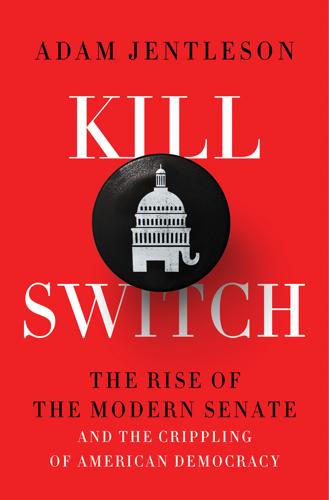
Kill Switch: The Rise of the Modern Senate and the Crippling of American Democracy
by
Adam Jentleson
Published 12 Jan 2021
In 1989, a businessman named Charles Keating bankrupted twenty-three thousand seniors and cost taxpayers $3 billion when his company, Lincoln Savings and Loan, imploded after Keating engaged in fraud, spending its capital on risky investments that went south. Thousands of investors lost their life savings. The event was a major contributor to the savings and loan crisis, one of the costliest financial crises in history. Before his company went under, Keating had spread political donations widely among the senators representing states where he had business interests, five of whom pressured federal regulators to back off investigations into Keating.42 One of them, Senator Alan Cranston, was reprimanded and accused of “improper and repugnant” behavior.
…
Board of Education, 95 and Rule 22, 79–80 and rules reform battles, 79–84, 165 and shifting demographics of Democratic Party, 72 on unlimited debate, 69 and white supremacy, 89 Russell Senate Office Building, 160, 234 Ryan, Paul, 233–34 “safe” states, 121 Salmon, Matt, 139 Sandoval, Brian, 156, 157 Sandy Hook Elementary school, see Newtown, Connecticut, school shooting Sargent, Greg, 112 Saturday Evening Post, 78 Saturday Night Massacre (1973), 184 savings and loan crisis, 192–93 Scaife family, 187 Scalia, Antonin, 10, 183, 184, 186, 226, 227 Schlafly, Phyllis, 147 school shooting (Newtown, Connecticut), 17–21 Schumer, Charles, 115, 178, 180, 204 Scorsese, Martin, 157, 158 Scott, George C., 205 Scott, Tim, 129 Second Treatise on Government (Locke), 22 “segregation academies,” 95 Seminole War, 34 Senate erosion of oversight role in Trump era, 235 Framers’ structuring of, 30 as heart of minority rule, 9 how to save, 239–54 informal leadership in early years, 159–60 and small-state bias theory, 127–28 Senate committees, see specific committees Senate Democratic caucus, 179 Senate Democrats, see Democratic senators Senate floor, see floor of Senate Senate majority leader, 164–65 Senate office building, 160 Senate Republicans, see Republican senators seniority system, 161, 215 sergeant at arms, 61 Severino, Carrie, 229 sexual assault, 231 Shakir, Faiz, 182 shell amendments, 176 Sherman, Roger, 23 Shields, Mark, 149 Sides, John, 132 simple majority vote, 97, 199 slavery and Bank of the United States, 51 Calhoun and, 34–35, 50–51, 54, 58 filibuster to maintain, 5 and westward expansion, 54–56 slave states advocacy for supermajority thresholds, 27 and Bank of the United States, 50–51 and gag rule, 54 overrepresentation in Senate, 58 small-state bias, 127–28 Smith, Steven, 60, 277 Smith, Willis, 140 Snowe, Olympia, 214, 216–17 “Social Security at Roots of Shift” (Klein), 174 Social Security privatization, 173–74 So Damn Much Money (Kaiser), 170 Sommers, Mike, 135 South advocacy for supermajority thresholds at Constitutional Convention, 27 John Calhoun and, 32 and cloture votes, 71 cotton trade and slavery, 35 and Electoral College elimination battle, 241–42 and Johnson’s presidential aspirations, 87 and slavery, 34–35, 54 Tariff of Abominations, 33 and Tea Party membership, 137 South Carolina, 33–35, 37, 49–50 Southern Block, 107 southern Democrats, 95, 146 Southern Manifesto (“Declaration of Constitutional Principles”), 95 Southern Poverty Law Center, 143 “southern strategy,” 240 Southwest Texas State Teachers College, 87 Specter, Arlen, 205, 216 split-ticket voting, 121–22 Srinivasan, Sri, 182 staff, Senate, 160 standing committees, 162 Starr, Kenneth, 203, 232 state government, redistricting and, 154 statehood, representation and, 252–53 “state of the Senate” speech (2014), 222–23 State of the Union address (2005), 173 states, polarization in, 121 states’ rights, 32, 38, 73 Stennis, John, 107 Stevenson, Adlai, 86, 96 Stewart, Jimmy, 4 Stewart, William, 60 Stimson, James, 131 Stone Mountain, Georgia, 76 Sunbelt states, 128 superfluous debate, 47 supermajority absence of mention in Constitution, 30 in Articles of Confederation, 23 and George W.

Adaptive Markets: Financial Evolution at the Speed of Thought
by
Andrew W. Lo
Published 3 Apr 2017
In many ways, Homo sapiens has transformed itself over the last few millennia into Homo economicus, a rational economic being, and the modern financial market may well be the contemporary version of walking upright or the opposable thumb. So what are members of Homo economicus to make of the savings and loan crisis of the 1980s and 1990s, the Internet Bubble, the financial crisis of 2008, and all the dumb financial decisions that we make every day? CHAPTER 2 If You’re So Smart, Why Aren’t You Rich? REJECTING THE RANDOM WALK During the fall of 1986, when I was in my second year as an assistant professor of finance at the University of Pennsylvania’s Wharton School, I received an invitation to give a talk.
…
According to Perrow, complexity and tight coupling explain not only why oil spills, airplane crashes, nuclear meltdowns, and chemical plant explosions occur, but also why we should expect them to occur regularly. It’s easy to see that the financial system is complex and tightly coupled—the savings and loan crisis of the 1980s and 1990s, LTCM, and Lehman’s bankruptcy and the Reserve Fund are prime examples. However, in a 2010 article with the unequivocal title “The Financial Meltdown Was Not an Accident,” Perrow flatly rejected this unwelcome application of his theory to the financial crisis.34 The reason he gave was human behavior: “Although these structural characteristics were evident, I argue that the case does not fit the theory because the cause was not the system, but behavior by key agents who were aware of the great risks they were exposing their firms, clients, and society to.… Complexity and coupling only made deception easier and the consequences more extensive.”
…
See also Efficient Markets Hypothesis; Homo economicus rationalization, 76, 117 Reagan, Ronald, 12 real estate investment trusts (REITs), 267 recessions, 200 refinancing, 299, 301, 323 reflexivity, 219 Regulation D, 344 Regulation T, 256, 368 regulatory capture, 379, 393 regulatory forbearance, 62, 71 Reinhart, Carmen, 310 Reis, Ricardo, 7 relativity, 129–130, 133, 168 Renaissance Technologies, 293, 350 Repin, Dmitry V., 92, 94 representativeness, 67–68, 69 reserpine, 88 Reserve Primary Fund, 300, 321 reward system, 87, 88 Rhode, Paul W., 39 Ricci, Umberto, 31 Richardson, Matthew, 377 Ride, Sally, 13 right hemisphere, of brain, 113–117 Rilling, James, 337 risk: aversion to, 56, 57, 60, 61, 70, 90, 91, 107, 161, 162, 203–205, 351–352, 393; behavioral, 388–394; of biotechnology investments, 401–410; changing nature of, 315; in down markets, 282, 288, 291, 292, 399; financial crisis linked to excess of, 303–305; of hedge funds, 270, 283, 288, 291, 317; of high-frequency trading, 360; in housing market, 299, 318; idiosyncratic, 198–203, 205–206, 250, 251; management of, 83, 154, 270–273, 276, 282, 283, 288, 291, 305, 369–370, 377–378, 388–390; measurement of, 371, 376, 386–387; misperceptions of, 62, 70, 82–85, 91, 108, 323; of reliance on trust, 344; reproductive, 194, 200, 201, 202, 205, 220; reward vs., 2, 17, 108, 203, 249–250, 253, 258–263, 268, 277, 282, 322; systematic, 194, 199–203, 204, 205, 250–251, 348, 389; systemic, 291, 315, 317, 319, 344, 361, 366–367, 370–371, 376–378, 384–385, 387; tolerance for, 27, 57, 204, 253, 263, 332, 390; transparency of, 384–385; uncertainty vs., 53–55, 415; variance equated with, 48 “Risk, Ambiguity, and the Savage Axioms” (Ellsberg), 52–54 risk premium, 250, 251, 268–269, 276 Rizzolatti, Giacomo, 110 Roberts, Harry, 23 Robertson, Julian, 234 Robinson, Patrick, 317 robotics, 181 Robson, Arthur J., 217 Rockwell International, 13, 14, 15 Roddenberry, Gene, 395, 411, 417 Rogers, Jim, 234 Rogers Commission, 12–13 Rogoff, Ken, 310 rogue trading, 61, 70, 71, 84, 189, 305 Roll, Richard, 23 Rolls, Edmund, 157 Rosenthal, Robert, 123–124 Rosling, Hans, 258 Rusnak, John, 61 Russia, 241–244, 292 Rutherford, Ernest, 214 Sachs, Jeffrey, 411 Sacks, Oliver, 88 safety: of automobiles, 205; in aviation, 85, 321, 379–383; of buildings, 378–379 Salomon Brothers, 241 Salow, Julie, 307 Samsonite Corporation, 264, 265 Samuelson, Larry, 271 Samuelson, Paul A., 20–21, 25, 34, 42, 140, 177, 178, 206–213 Sanofi S.A., 419 S&P 500 index, 251, 252, 264, 265, 270, 273, 274, 360 S&P 1500 index, 287, 324 Sanfey, Alan, 337 Santa Fe Institute (SFI), 218 Sarao, Navinder Singh, 360 satisficing, 180, 182, 183, 185, 213, 393 Savage, Leonard Jimmie, 19–20 savings and loan crisis, 44, 321 Schlesinger, Herbert, 223 Scholes, Myron, 27, 97, 241, 356–357, 384 Schüll, Natasha Dow, 91 Schultz, Henry, 31 Schumpeter, Joseph, 219 scientific method, 313, 314 second-order false belief, 111 secure multiparty computation, 385–387 Securities and Exchange Commission (SEC), 228, 306–311, 327, 350–352, 354, 355, 359, 360, 377 Securities Trading of Stock (STOC) exercise, 41–43 securitization, 297, 321, 407–409 seizures, 113 self-fulfilling prophecies, 124 self-sacrifice, 168–169, 170, 196, 336 septal area, of brain, 87, 88 serotonin, 160 sexual attraction, 105, 170 Shakers, 165–166 Shamir, Adi, 238 Shapard, John, 166–167 Shapiro, Carl, 333 Shapiro, Jeremy, 414 Sharpe, William F., 27, 250–252, 253, 263 Shaw, David E., 224, 225, 236–240, 244, 248, 277 Shiller, Robert, 314–315 Shilling, A.
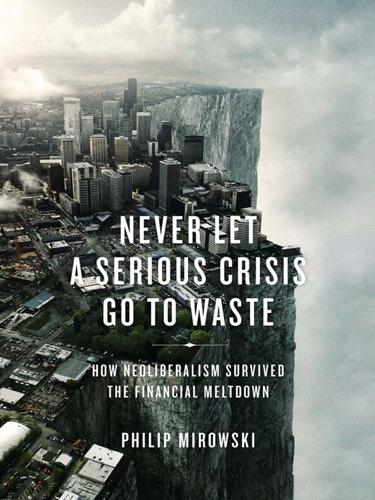
Never Let a Serious Crisis Go to Waste: How Neoliberalism Survived the Financial Meltdown
by
Philip Mirowski
Published 24 Jun 2013
But more to the point, their supposedly left-liberal approach ends up backhandedly reproducing the conventional neoliberal story, as was pointed out by Gregory Mankiw in his published commentary: Although the two authors from Berkeley did not intend this paper to be a defense of Ronald Reagan and his view of government, one can easily interpret it in this way. The paper shows that the savings and loan crisis was not the result of unregulated markets, but of overregulated ones . . . The policy that led to the savings and loan crisis is, according to these authors, deposit insurance.46 Paul Romer, the other author of this paper, revealed his own neoliberal leanings when questioned concerning the crisis in 2011. “Every decade or so, any system of financial regulation will lead to systemic financial crisis.”47 Note well that for Romer it was not private financial sector “corruption” that produced instability, but rather government snafus in regulation, the standard public-choice account.
…
In the MIT tradition, it was a purely deterministic little toy model of a single firm over three periods, where assets are not bought or sold after the first period, and a little maximization exercise which argues that if the owners of the firm could pay themselves more than the firm is worth and then declare bankruptcy in period three, then they will do so. Accounting manipulation and regulatory forbearance (which were not described in any level of detail) are asserted to make this outcome more likely. Deposit insurance permits owners to offload costs of autodestruction onto the government. This was then asserted to “explain” the savings-and-loan crisis of the 1980s. This displays all the hallmarks of the behavioral program touted by Akerlof and Shiller. First, a reputedly irrational behavior (looting and destruction of banks by their owners) is rendered “rational” through the minor amendment of a simple orthodox maximization exercise by tinkering with the utility function of bank owners.
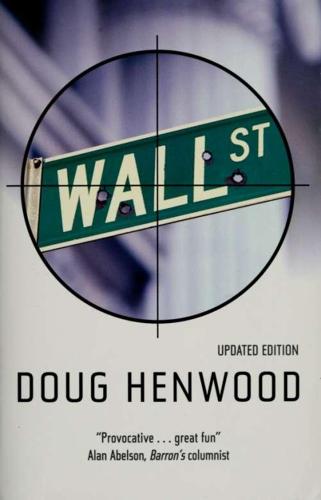
Wall Street: How It Works And for Whom
by
Doug Henwood
Published 30 Aug 1998
"The Privatization of Equity," Harvard Business Review 89 (September-October), pp. 62-63. Lipietz, Alain (1985). The Enchanted World: Inflation, Credit and the World Crisis (London: Verso). Lipin, Steven (1994). "Risk Management Has Become Crucial In a Year When Strategies Proved Wrong," Wall Street Journal, September 29, p. CI. Litan, Robert I. (1992). "Savings and Loan Crisis," in Newman et al. (1992). Livingston, James (1986). Origins of the Federal Reserve System: Money, Class, and Corporate Capitalism, 1890-1913 (Ithaca: Cornell University Press). Lo, Andrew, and A. Craig MacKinlay (1988). "Stock Market Prices Do Not Follow Random Walks: Evidence from a Simple Specification Test," Review of Financial Studies 1, pp. 41-66
…
Huge quantities of public money — some $200 billion, though definitive accountings are hard to come by — were spent with little discussion or analysis, and the affair is now largely forgotten. The chance to use the industry's partial liquidation as an opportunity to develop new public and cooperative financial institutions was blown. Within a couple of years of the crisis' passing, no one paid it any mind any longer. It's as if it never happened. government, especially the Fed The S&L crisis exhibits several roles of government in finance: to look the other way during a riot on the upside, and then pay for the rescue when it's done. But of course that's not the only role of government on Wall Street. Governments are heavy players in the financial markets — not merely as debtors, though certainly the public bond markets are quite important.
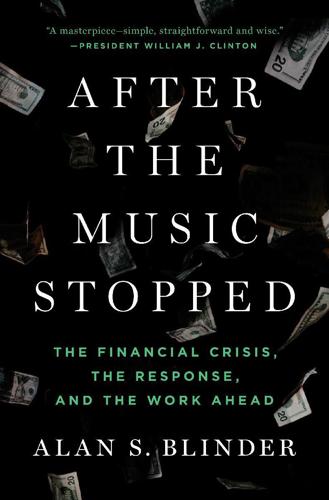
After the Music Stopped: The Financial Crisis, the Response, and the Work Ahead
by
Alan S. Blinder
Published 24 Jan 2013
See Hedge repurchase agreements (repos), 53 Risk free, Treasury securities as, 41, 241, 395–96 Risk premium, bonds, 42 Rogers, Will, 86 Rogoff, Kenneth, 245, 413 Romer, Christina “Christy,” 215, 217, 225, 230–31 Romney, Mitt, 352, 399–401, 406 Rosengren, Eric, 383 Rosner, Joshua, 117, 187 Rubin, Robert, derivatives regulation failure, 63 Runs on banks, cause of, 53 on money market funds (2008), 142–49 Ryan, Paul, 398 Sacerdote, Bruce, 233 Sachs, Lee, 259 Santelli, Rick, 338–40 Savings & loan crisis, 162 Schauble, Wolfgang, 252 Scheiber, Noam, 138, 204, 220 Schumer, Chuck, 326 Schwartz, Alan, 102–3 Schwartz, Anna, 110 Securities and Exchange Commission (SEC), 121, 275 Securitization, 72–79. See also Mortgage-backed securities (MBS) collateralized debt obligation (CDO), 74–79 Dodd-Frank provisions, 307, 311 early forms, 73–74 process of, 72–74 regulatory needs for, 286–88, 294 tranches, 74–79 Senior tranche, 74–75 Shadow banking system, 59–64 institutions related to, 59–60 markets related to, 60 size of, 60 Shareholders, protecting in future, 434–35 Shelby, Richard, 305 Shiller, Robert, 17, 31–32.
…
In that case, the law permitted the FDIC to deviate from least-cost resolution and to “take other action or provide assistance under this section as necessary to avoid or mitigate” systemic risk. While that last phrase creates a broad remit, the criteria were meant to be stern. Remember the context back in 1991: Congress had been badly burned by the S&L crisis—Keating Five and all that—and was in no mood to give the FDIC wide discretion to toss money around without a compelling reason. Seventeen years later, Sheila Bair felt the same way. Until October 14, she had steadfastly refused to invoke the systemic risk exception—bending it only grudgingly for Wachovia.
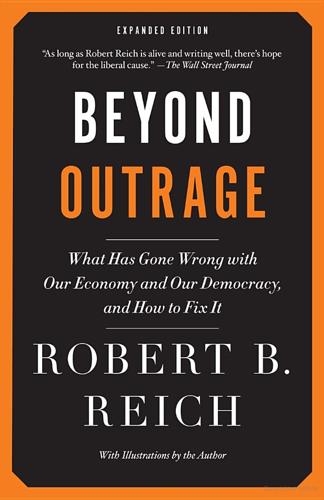
Beyond Outrage: Expanded Edition: What Has Gone Wrong With Our Economy and Our Democracy, and How to Fix It
by
Robert B. Reich
Published 3 Sep 2012
In April 2012, the Dallas branch of the Federal Reserve Bank came to the same conclusion, recommending that the biggest banks be broken up and their size be capped. This is particularly notable in that the Dallas Fed is one of the most conservative of all Fed branches. But it knows from experience. Texas was ground zero in the savings and loan crisis that ripped through America in the 1980s, imposing huge losses on the state. The Wall Street banks were too big to fail before the bailout and are even bigger now. Twenty years ago, the ten largest banks on the Street held 10 percent of America’s total bank assets. Now the six largest hold over 70 percent.
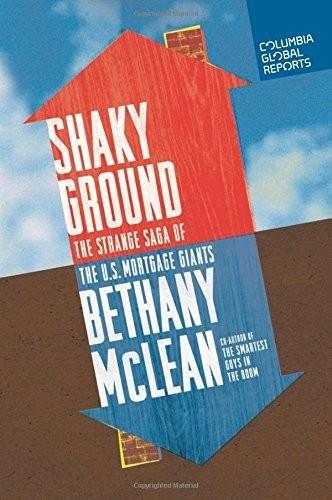
Shaky Ground: The Strange Saga of the U.S. Mortgage Giants
by
Bethany McLean
Published 13 Sep 2015
By the end of the 1970s they were in a state of existential crisis, essentially because they couldn’t manage their interest-rate risk in an era of high inflation. In an attempt to fix things, Congress deregulated the thrift industry; the deregulated thrift industry would last less than a decade before it blew up into the savings-and-loan crisis. Actually, Fannie was in terrible shape too. By the 1980s, it was losing a million dollars a day and “rushing toward a collapse that could have been one of the most disastrous in modern history,” as the Washington Post later put it. This was also because of interest-rate risk. As interest rates skyrocketed, the mortgages Fannie had bought were paying less than its debt cost.
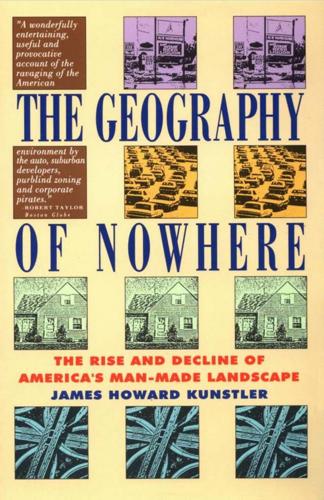
The Geography of Nowhere: The Rise and Decline of America's Man-Made Landscape
by
James Howard Kunstler
Published 31 May 1993
Y. , 144 Saratoga County Department of Social Services, 182 Saratoga Springs, N.Y. , 133-46, 156, 178, 181, 183, 186 Broadway in, 139-43 historical background of, 133-35 Ramada Renaissance Hotel in, 142-43 setback law of, 135-37 shopping malls and, 143-46 South Broadway in, 135-39 trees in, 141-42 Saratoga Trunk ( Ferber), 141 Saudi Arabia, 110 Savannah, Ga., 24, 259 design of, 30-31 Savings and Loan scandal, 146, 247 Say's Law of Markets, 101 Schenectady, N.Y., 243 Schuyler, Philip, 175 Schuylerville, N. Y., 175-207 Champlain Canal and, 176-79 convenience stores and, 181-82 downtown of, 177 as factory town, 177-78 family life in, 182-83 Grand Union store in, 184-85 history of, 175-76 railroad and, 178, 180-81 suburban economy and, 186-87 trolley system of, 178-80 Schuylerville Standard, 180 Scott, Walter, 64, 157 Scott-Brown, Denise, 81 Scranton, Pa. , 130-31 Scully, Vincent, 150-51, 156 Seagram Building (New York, N.

What's Next?: Unconventional Wisdom on the Future of the World Economy
by
David Hale
and
Lyric Hughes Hale
Published 23 May 2011
As a case in point, mortgage and other lending standards have become tighter and more rigorous. Financial firms have also made great strides in reducing excessive leverage. It is virtually certain that the next financial crisis will look very little like the 2008–2009 debacle. And serious systematic problems are not likely to occur for some time (following the example of the savings and loan crisis of the late 1980s and early 1990s, after which the financial system stayed in good order for a decade). With or without Dodd-Frank, there are not likely to be any further bailouts (additional FDIC takeovers of smaller banks are another matter, but for the most part they do not fall under the new legislation).
…
As such, it was anticipated that SOX would have prevented the excesses of WorldCom, Enron, Adelphia, and Tyco that came to public awareness in 2001 and 2002. Causes of the Global Financial Crisis Prior to Enactment of SOX Before examining why SOX failed, it is important to understand certain financial improprieties that occurred prior to the enactment of SOX. These include: • Developing Country Debt Crisis (1983) • US Savings and Loan Crisis (1980s) • Resolution Trust Company, which created REITS (Real Estate Investment Trusts) (late 1980s) • The 1988 Basel Capital Accord (1988) • The beginning of derivatives (early 1990s) • Proliferation of derivatives and Special Purpose Entities (SPEs) (1990s) • Asian Financial Crisis (1997–1998) • Collapse of Long-Term Capital Management (LTCM) (1998) • The repeal of Glass-Steagall (1999) and the adoption of Gramm-Leach-Bliley Financial Modernization Act (GLBA) (1998) • The failure of dot-coms (2000) Causes of the Global Financial Crisis after SOX and Prior to September 18, 2008 It is also important to understand the events and economic climate after the July 31, 2002, passage of SOX and prior to September 18, 2008.
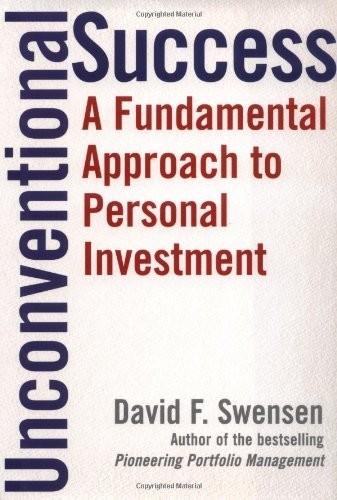
Unconventional Success: A Fundamental Approach to Personal Investment
by
David F. Swensen
Published 8 Aug 2005
In cases where supply of real estate space fails to match demand, prices respond to the disequilibrium, not to the expected relationship with replacement cost or with inflation. In the late 1980s, investor enthusiasm for owning commercial real estate and federal tax incentives for developing properties combined to create a vast oversupply of commercial office buildings. The excesses in the real estate market contributed to the savings and loan crisis, as many thrifts suffered from the burden of underperforming or nonperforming real estate loans. High-quality, albeit poorly leased, properties traded at steep discounts to replacement cost. Prices responded to the disconnect between supply and demand, failing to track inflation. Unless markets reflect reasonable equilibrium, investors face difficulties in assessing the response of real estate prices to inflation.
…
Treasury bonds and Revenue sharing Risk, risks asset-backed securities and basic investment principles and chasing performance and core asset classes and domestic equities and emerging markets equities and ETFs and and failure of for-profit mutual funds foreign bonds and mutual-fund portfolio management evaluation and mutual-fund portfolio turnover and non-core asset classes and and not-for-profit mutual funds portfolio construction and rebalancing and security selection and stale-price trading and U.S. Treasury bonds and venture capital and RJR Nabisco Ross, Stephen Russell Indexes Russia Rydex Global Advisors Salomon Brothers Samuelson, Paul savings and loan crisis Scudder Investments Securities and Exchange Commission (SEC) and failure of for-profit mutual funds and hidden causes of poor mutual-fund performance mutual-fund fees and mutual-fund portfolio turnover and tax-exempt bonds and Securities Exchange Act Securities Industry Association (SIA) Security Brokerage Security selection core asset classes and domestic equities and ETFs and hedge funds and mutual-fund fees and mutual-fund portfolio turnover and Shiller, Robert Siedle, Edward Siegel, Jeremy Small business ownership Social Security Soft-dollar kickbacks ETFs and and failure of for-profit mutual funds as hidden cause of poor mutual-fund performance mutual-fund portfolio turnover and Southeastern Asset Management assets under management limited by co-investment at fees of investment strategy of long-term focus of portfolio concentration of principal orientation of shareholder communication of stable client base of Spitzer, Eliot Stale-price trading and failure of for-profit mutual funds as hidden cause of poor mutual-fund performance insider trading and late trading and market timing and SEC and Standard & Poor’s (S&P) Corporation Depositary Receipts (SPDRs) and 1500 Index MidCap 400 Index of REIT Index of SmallCap 600 Index of Standard & Poor’s (S&P) 500 Index chasing performance and ETFs and and failure of for-profit mutual funds leveraged buyouts and mutual-fund fees and mutual-fund portfolio management evaluation and mutual-fund portfolio turnover and rebalancing and Vanguard and venture capital and Stanford University State Street Investment Corporation ETFs and Stock market crashes Stock options Stocks, see equity, equities, equity bias Stocks for the Long Run (Siegel) Strong, Richard Strong Financial Corporation “Survival” (Brown, Goetzmann, and Ross) Survivorship bias hedge funds and Taxes asset allocation and basic investment principles and on capital gains chasing performance and deferral dividends and ETFs and on incomes interest and mutual-fund fees and mutual-fund performance deficit and mutual-fund portfolio management evaluation and mutual-fund portfolio turnover and portfolio construction and potential liabilities and real estate and rebalancing and retirement plans and tax-exempt bonds and Teachers Insurance and Annuity Association (TIAA), Real Estate Account of Teachers Insurance and Annuity Association-College Retirement Equities Fund (TIAA-CREF) not-for-profit operations of rebalancing and Technology, technology bubble: ETFs and mutual funds and see also Internet, Internet bubble Tenneco Thrift Savings Plan Time horizons mutual-fund portfolio turnover and portfolio construction and stale-price trading and Tobin, James Total Stock Market VIPERs Treasury Inflation-Protected Securities (TIPS), U.S.
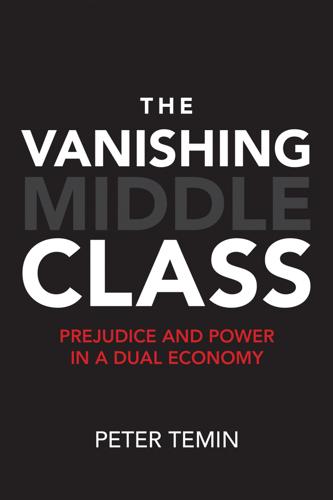
The Vanishing Middle Class: Prejudice and Power in a Dual Economy
by
Peter Temin
Published 17 Mar 2017
Banking problems led the government to deregulate Savings and Loan Associations (S&Ls), leading to excessive borrowing and failures of one third of the S&Ls in the 1980s. In retrospect, the S&L crisis anticipated the financial crisis of 2008. Deregulation led to excessive speculative activity that eventually went bad. It took a decade for the federal government to raise taxes to pay off the $100 billion debt it incurred in paying for guaranteed deposits. It was not seen as a cost of deregulation at the time, even though raising taxes may have cost the first President Bush his job. The S&L crisis instead was seen as a bump in the road to economic deregulation that would come to be called “neoliberalism.”
…
Board of Education and, 116, 119, 171n16 concepts of government and, 89 elitism and, 52, 66, 74, 161 equal protection clause and, 58, 67, 102 FTE (finance, technology, and electronics) sector and, 15, 20–21 gender, 49 (see also Women) Investment Theory of Politics and Jim Crow policies and, 27, 49, 51–53, 58, 65–66, 104, 107, 154 juries and, 56, 59 low-wage sector and, 38, 153 mass incarceration and, 105 mortgages and, 117 poll taxes and, 58, 65 public education and, 117 racial, 15, 20–21, 38, 51–54, 56, 58, 66, 89, 105, 117, 153, 171n29 redlining and, 34, 53 segregation and, 53 (see also Segregation) statistical, 171n29 War on Drugs and, 27, 37–38, 53, 55, 104, 106 white rage and, 51, 101, 104 Disengagement, 35, 117 Diversity, 49, 51, 128, 156 Dix, Dorothea, 107 Dodd-Frank Financial Reform Act Dodd-Frank Wall Street Reform and Consumer Protection Act, 93 Dow Jones Industrial Index, 23 Draft, 16 Dropouts, 42, 45, 108, 158 Drug laws, 104, 171n24 Dual economy African Americans and, 9–13 college and, 3, 8, 11–12 farmers and, 6–11 financial crisis of 2008 and, 4, 9, 12 FTE and, 9–13, 168n10 (see also FTE [Finance, Technology, and Electronics] sector) human capital and, 11–12 immigrants and, 10 income distribution and, 3–5 inequality and, 10 integration and, 13 labor and, 6–7 Latinos and, 9–10, 13, 54–55 Lewis model and, xiii, xvii, 5–12, 62, 82, 89, 124, 158 low-wage sector and, 4, 8, 9–13 (see also Low-wage sector) social capital and, 12 taxes and, 10, 12 transition and, 41–46 wages and, 3–13 Dukakis, Michael, 109 Dylan, Bob, xii Elephant, 150 Earned Income Tax Credit, 79 Edwards, John, 3 Elitism, 52, 66, 74, 161 Emergency managers, 35–36 Environmental Protection Agency (EPA), 84, 93, 130 Environmental racism, xv Equal protection clause, 58, 67, 102 Equity, 30, 111 Eurodollars, 16, 23 Evans, Walker, 52 Exchange rates, 15–16, 23, 32, 169n3 Expected wage, 8 Facebook, 122 Fannie Mae, 138 Farmers African Americans and, 50–51 agricultural issues and, xi, 6, 31, 63 cotton and, xi, 59, 115 dual economy and, 6–11 as economic maximizers, 168n13 indentured servants and, 50 Investment Theory of Politics and, 62, 66 migrant workers and, 11 poor, 6 race and, 50, 52 subsistence, 5–6, 8, 10, 62 Federal funding, 35, 37, 93, 129 Federalism, 21–22, 35, 44, 65, 83, 103, 110 Federal Reserve System, 15–16, 93 Ferguson, Missouri, 102–103 Fernandez, Nelson, 103–104 Fifteenth Amendment, 15, 56, 58 Filibusters, 19 Financial crisis of 2008 concepts of government and, 91, 95 cross-country comparison and, 150–151 debt and, 138–141, 143, 154, 158 dual economy and, 4, 10, 12 FTE (finance, technology, and electronics) sector and, 17 housing boom and, 164 Investment Theory of Politics and, 174n15 labor and, 158 low-wage sector and, 38 private equity firms and, 111 public education and, 118–119, 128 S&L crisis and, 17 transition and, 45 very rich and, 80 Financial Times magazine, 61, 135 FIRE (finance, insurance, and real estate) sector, 80 Flint, Michigan, water crisis, xv, 35–36, 129–130 Food stamps, 79 Forbes 400 list, 77, 82–83, 85, 92 Ford, Gerald, 168n2 Foster, Timothy, 59 401(k) plans, 33–34 Fourteenth Amendment, 51, 58 Freddy Mac, 138 Freeland, Chrystia, 3, 79 FTE (finance, technology, and electronics) sector African Americans and, 15, 20, 22 birth of, 27 capital and, 11–13, 23–24, 42–45, 153, 164 CEO earnings and, 24 cities and, 130, 135–136, 179n18 college and, 10, 24–25, 41–46 concepts of government and, 87, 92, 94, 96 conservatives and, 16–22 cross-country comparison and, 147, 149 debt and, 137–144 democracy and, 21 demographics of, 10 deregulation and, 16–23, 32, 44, 85 discrimination and, 15, 20–21 dual economy and, 9–13, 168n10 expansion of, 30 financial crisis of 2008 and, 17 globalization and, 29 Great Gatsby Curve, The, and, 46 Great Migration and, 20 hourglass job profile and, 28–29 human capital and, 23, 44 ignoring needs of poor by, 80, 135, 142, 153–155 immigrants and, 20 income distribution and, 22 industry and, 16, 18, 20, 23, 25 infrastructure and, 36, 154 Investment Theory of Politics and, 67–70, 74–75 labor and, 13, 19–21, 24, 153 Lewis model and, 20, 36, 101, 105, 153 liberals and, 17, 19, 21–22, 105 low-wage sector and, 11–13, 25, 27–29, 32–37, 153–155, 170n6 mass incarceration and, 101–106, 109, 112–114 middle class and, 96, 144, 147, 153, 155 military and, 102–104, 109–110, 112, 127, 143 North and, 20 political choice by, 153 public education and, 115, 117, 119, 122, 127–128 race and, 9–10, 49, 55 S&L crisis and, 17 slavery and, 17, 22 Social Security and, 33, 45, 52, 69–70, 79, 90, 93, 141, 174n15 South and, 15, 17, 20, 22 taxes and, 15, 17–18, 22–24, 155 transition and, 11, 41–46, 154 unemployment and, 16, 21 unions and, 18–22, 28–29, 32–34, 64, 80–81, 116, 120 very rich and, 77–81 wages and, 16, 20–23, 25 World War I era and, 20–21 World War II era and, 15, 21 Garland, Merrick, 96 Gates, Bill, 121 Geithner, Timothy, 139 General Motors (GM), 33–34 Gerrymandering, 96 GI Bill, 34, 43, 52, 65 Globalization competition and, 8, 28–29, 33, 55, 148, 151, 155, 161 FTE (finance, technology, and electronics) sector and, 29 low-wage sector and, 28–29, 33 Goldin, Claudia, xiii Great Depression, 21, 52–53, 80, 93 Great Gatsby Curve, The, 46 Great Migration African Americans and, xi–xii, xiv, 20, 27–29, 34–35, 52–55, 104, 116–117, 125 company boundaries and, 29–30 FTE (finance, technology, and electronics) sector and, 20 Latinos and, 55 length of, 20, 27–28 Lewis model and, 20 low-wage sector and, 27–29, 34–35 mass incarceration and, 104 Michigan and, 35 mortgages and, 34 public education and, 116–117, 125 urbanization and, 20 Growth miracles, 6 Halliburton, 143 Hamilton, Derrick, 173n17 Handlin, Mary, 50 Handlin, Oscar, 50 Hayek, Friedrich, 21–22, 81 Head Start, 126–127, 156 Health care Aetna and, 142 Affordable Care Act and, xv, 18, 57, 91–92, 95, 141–142 concepts of government and, 92 low-wage sector and, 154 mass incarceration and, 108–109, 113 Medicare/Medicaid and, xv, 91, 93, 142 Piketty on, 156 universal, 79 women and, 56–57 Heckman, James, 124 Hedge fund managers, xv, 23–24, 82, 167n1, 179n5 Helms, Jesse, 80 Heritage Foundation, 17–18, 22 Heroin, 104 High school, 25, 119–121, 126 Hispanics.
…
Board of Education and, 116, 119, 171n16 concepts of government and, 89 elitism and, 52, 66, 74, 161 equal protection clause and, 58, 67, 102 FTE (finance, technology, and electronics) sector and, 15, 20–21 gender, 49 (see also Women) Investment Theory of Politics and Jim Crow policies and, 27, 49, 51–53, 58, 65–66, 104, 107, 154 juries and, 56, 59 low-wage sector and, 38, 153 mass incarceration and, 105 mortgages and, 117 poll taxes and, 58, 65 public education and, 117 racial, 15, 20–21, 38, 51–54, 56, 58, 66, 89, 105, 117, 153, 171n29 redlining and, 34, 53 segregation and, 53 (see also Segregation) statistical, 171n29 War on Drugs and, 27, 37–38, 53, 55, 104, 106 white rage and, 51, 101, 104 Disengagement, 35, 117 Diversity, 49, 51, 128, 156 Dix, Dorothea, 107 Dodd-Frank Financial Reform Act Dodd-Frank Wall Street Reform and Consumer Protection Act, 93 Dow Jones Industrial Index, 23 Draft, 16 Dropouts, 42, 45, 108, 158 Drug laws, 104, 171n24 Dual economy African Americans and, 9–13 college and, 3, 8, 11–12 farmers and, 6–11 financial crisis of 2008 and, 4, 9, 12 FTE and, 9–13, 168n10 (see also FTE [Finance, Technology, and Electronics] sector) human capital and, 11–12 immigrants and, 10 income distribution and, 3–5 inequality and, 10 integration and, 13 labor and, 6–7 Latinos and, 9–10, 13, 54–55 Lewis model and, xiii, xvii, 5–12, 62, 82, 89, 124, 158 low-wage sector and, 4, 8, 9–13 (see also Low-wage sector) social capital and, 12 taxes and, 10, 12 transition and, 41–46 wages and, 3–13 Dukakis, Michael, 109 Dylan, Bob, xii Elephant, 150 Earned Income Tax Credit, 79 Edwards, John, 3 Elitism, 52, 66, 74, 161 Emergency managers, 35–36 Environmental Protection Agency (EPA), 84, 93, 130 Environmental racism, xv Equal protection clause, 58, 67, 102 Equity, 30, 111 Eurodollars, 16, 23 Evans, Walker, 52 Exchange rates, 15–16, 23, 32, 169n3 Expected wage, 8 Facebook, 122 Fannie Mae, 138 Farmers African Americans and, 50–51 agricultural issues and, xi, 6, 31, 63 cotton and, xi, 59, 115 dual economy and, 6–11 as economic maximizers, 168n13 indentured servants and, 50 Investment Theory of Politics and, 62, 66 migrant workers and, 11 poor, 6 race and, 50, 52 subsistence, 5–6, 8, 10, 62 Federal funding, 35, 37, 93, 129 Federalism, 21–22, 35, 44, 65, 83, 103, 110 Federal Reserve System, 15–16, 93 Ferguson, Missouri, 102–103 Fernandez, Nelson, 103–104 Fifteenth Amendment, 15, 56, 58 Filibusters, 19 Financial crisis of 2008 concepts of government and, 91, 95 cross-country comparison and, 150–151 debt and, 138–141, 143, 154, 158 dual economy and, 4, 10, 12 FTE (finance, technology, and electronics) sector and, 17 housing boom and, 164 Investment Theory of Politics and, 174n15 labor and, 158 low-wage sector and, 38 private equity firms and, 111 public education and, 118–119, 128 S&L crisis and, 17 transition and, 45 very rich and, 80 Financial Times magazine, 61, 135 FIRE (finance, insurance, and real estate) sector, 80 Flint, Michigan, water crisis, xv, 35–36, 129–130 Food stamps, 79 Forbes 400 list, 77, 82–83, 85, 92 Ford, Gerald, 168n2 Foster, Timothy, 59 401(k) plans, 33–34 Fourteenth Amendment, 51, 58 Freddy Mac, 138 Freeland, Chrystia, 3, 79 FTE (finance, technology, and electronics) sector African Americans and, 15, 20, 22 birth of, 27 capital and, 11–13, 23–24, 42–45, 153, 164 CEO earnings and, 24 cities and, 130, 135–136, 179n18 college and, 10, 24–25, 41–46 concepts of government and, 87, 92, 94, 96 conservatives and, 16–22 cross-country comparison and, 147, 149 debt and, 137–144 democracy and, 21 demographics of, 10 deregulation and, 16–23, 32, 44, 85 discrimination and, 15, 20–21 dual economy and, 9–13, 168n10 expansion of, 30 financial crisis of 2008 and, 17 globalization and, 29 Great Gatsby Curve, The, and, 46 Great Migration and, 20 hourglass job profile and, 28–29 human capital and, 23, 44 ignoring needs of poor by, 80, 135, 142, 153–155 immigrants and, 20 income distribution and, 22 industry and, 16, 18, 20, 23, 25 infrastructure and, 36, 154 Investment Theory of Politics and, 67–70, 74–75 labor and, 13, 19–21, 24, 153 Lewis model and, 20, 36, 101, 105, 153 liberals and, 17, 19, 21–22, 105 low-wage sector and, 11–13, 25, 27–29, 32–37, 153–155, 170n6 mass incarceration and, 101–106, 109, 112–114 middle class and, 96, 144, 147, 153, 155 military and, 102–104, 109–110, 112, 127, 143 North and, 20 political choice by, 153 public education and, 115, 117, 119, 122, 127–128 race and, 9–10, 49, 55 S&L crisis and, 17 slavery and, 17, 22 Social Security and, 33, 45, 52, 69–70, 79, 90, 93, 141, 174n15 South and, 15, 17, 20, 22 taxes and, 15, 17–18, 22–24, 155 transition and, 11, 41–46, 154 unemployment and, 16, 21 unions and, 18–22, 28–29, 32–34, 64, 80–81, 116, 120 very rich and, 77–81 wages and, 16, 20–23, 25 World War I era and, 20–21 World War II era and, 15, 21 Garland, Merrick, 96 Gates, Bill, 121 Geithner, Timothy, 139 General Motors (GM), 33–34 Gerrymandering, 96 GI Bill, 34, 43, 52, 65 Globalization competition and, 8, 28–29, 33, 55, 148, 151, 155, 161 FTE (finance, technology, and electronics) sector and, 29 low-wage sector and, 28–29, 33 Goldin, Claudia, xiii Great Depression, 21, 52–53, 80, 93 Great Gatsby Curve, The, 46 Great Migration African Americans and, xi–xii, xiv, 20, 27–29, 34–35, 52–55, 104, 116–117, 125 company boundaries and, 29–30 FTE (finance, technology, and electronics) sector and, 20 Latinos and, 55 length of, 20, 27–28 Lewis model and, 20 low-wage sector and, 27–29, 34–35 mass incarceration and, 104 Michigan and, 35 mortgages and, 34 public education and, 116–117, 125 urbanization and, 20 Growth miracles, 6 Halliburton, 143 Hamilton, Derrick, 173n17 Handlin, Mary, 50 Handlin, Oscar, 50 Hayek, Friedrich, 21–22, 81 Head Start, 126–127, 156 Health care Aetna and, 142 Affordable Care Act and, xv, 18, 57, 91–92, 95, 141–142 concepts of government and, 92 low-wage sector and, 154 mass incarceration and, 108–109, 113 Medicare/Medicaid and, xv, 91, 93, 142 Piketty on, 156 universal, 79 women and, 56–57 Heckman, James, 124 Hedge fund managers, xv, 23–24, 82, 167n1, 179n5 Helms, Jesse, 80 Heritage Foundation, 17–18, 22 Heroin, 104 High school, 25, 119–121, 126 Hispanics.
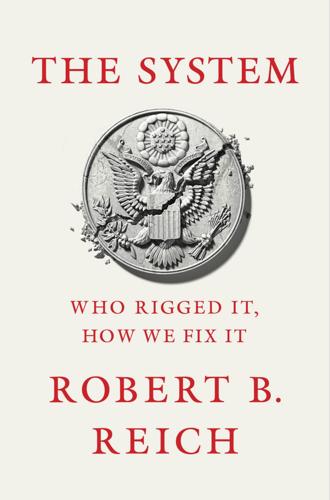
The System: Who Rigged It, How We Fix It
by
Robert B. Reich
Published 24 Mar 2020
” * * * — As of 2019, about 355 bankers, mortgage lenders, real-estate agents, and borrowers had been convicted of crimes related to the financial crisis, but they were all small fry. No major executives of the largest financial firms went to jail. The total number of convictions was only about a third the number of convictions after the much smaller savings-and-loan crisis of the 1980s. Since the financial crisis, a number of elder statesmen have pushed to have Glass-Steagall reinstated in some form. In 2009, John S. Reed, who served with Weill as co-CEO of Citigroup from 1998 to 2000, apologized for creating a lumbering giant that needed multibillion-dollar bailouts from the government.
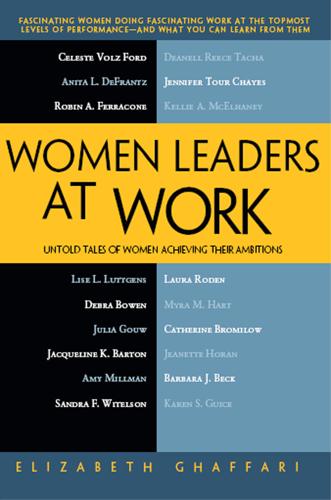
Women Leaders at Work: Untold Tales of Women Achieving Their Ambitions
by
Elizabeth Ghaffari
Published 5 Dec 2011
Gouw joined Pasadena, California-based East West Bank in 1989 as vice president and controller, rising quickly in the company to become executive vice president and chief financial officer by 1994. She was instrumental in the $238 million management-led buyout of East West in June 1998. She was in charge of East West Bank’s acquisition of Pacific Coast Federal Savings Bank of San Francisco from the Resolution Trust Corporation in 1991 during the savings and loan crisis, as well as eight other bank acquisitions that took place from 1999 to 2010, including the FDIC-assisted acquisition of United Commercial Bank (UCB) in 2009. Gouw served as the chief risk officer for East West Bank and vice chairman of both the bank and the holding company in 2008. She has served as president and chief operating officer of both entities since November 30, 2009.
…
[He then asked,] “Can you help with this United Commercial Bank acquisition?” I had done eight bank acquisitions for the bank after we went public in early 1999. Earlier, in 1991, East West Bank had acquired Pacific Coast Federal Savings Bank in San Francisco from the Resolution Trust Corporation during the savings and loan crisis. But, the UCB transaction in November 2009 was much more complex—involving almost $10 billion in assets and negotiations with the Federal Deposit Insurance Corporation. It was a transformational event for us—an opportunity to acquire a major competitor. We had to merge all those bank branches in and trim the duplication.

The Spider Network: The Wild Story of a Math Genius, a Gang of Backstabbing Bankers, and One of the Greatest Scams in Financial History
by
David Enrich
Published 21 Mar 2017
Obama’s attorney general, Eric Holder, later echoed that sentiment, prompting congressional critics to print Monopoly-style cards bearing the image of a winged Rich Uncle Pennybags escaping from a cage, along with the message: “Your bank has been deemed ‘too big to jail’ by the U.S. Department of Justice.” By 2010, newspaper opinion pages were beginning to brim with unfavorable comparisons to the reckoning that took place after the Depression, when a Senate panel named and shamed the industry’s leaders. Even after the much smaller savings-and-loan crisis of the 1980s, more than eight hundred bank officials had ended up behind bars. The harsh comparisons weren’t entirely fair—just because Wall Street fat cats were despised didn’t mean they had committed any crimes. In fact, the nation’s banking laws had been sufficiently watered down during decades of deregulatory zeal that much of what the bankers had done was perfectly legal.
…
See also specific brokers compliance, 117–18 culture of, 44–45, 46, 117–18 firings, 378–79 Libor investigation, 333–34 Libor manipulation, 109, 163–64, 165–66 SFO investigation, 361 switch trades, 169–77 year-end bonuses, 122, 314–15 Rubin, Robert, 247 Salmon, Chris, xii, 15, 22, 204, 447 Salmon, Felix, 197 Salomon Brothers, 21, 33, 75 San Francisco International Airport, 254 Sanders, Bernie, 249 Sandy Lane, 319–20 Sarao, Navinder, 286n Saudi Arabia, 332 savings and loan crisis, 268 Schumacher, Michael, 187 Scott, Andy, 55, 57, 61, 63 Securities and Exchange Commission (SEC), 200, 270–72 Seger, Holger, x, 83, 102, 232–33, 445 Seinfeld (TV show), 153, 280 September 11 attacks, 120–21, 202 Serious Fraud Office (SFO), xiii, 331–33 Hayes cleansing interview, 375–77 Hayes as cooperating witness, 371–72, 374–77, 380, 382–85 Hayes criminal fraud charges, 4–5, 6, 367, 370, 371–72, 374–75, 387–92, 397, 407 Hayes not guilty plea, 395–97, 401–2 Libor investigation, 332–33, 359, 360–62 arrests, 364–67 seizure of Hayes assets, 391, 392, 396–97, 452, 455 trial of Hayes.
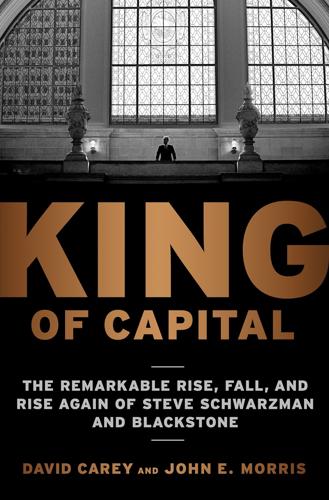
King of Capital: The Remarkable Rise, Fall, and Rise Again of Steve Schwarzman and Blackstone
by
David Carey
Published 7 Feb 2012
Unlike those investments, however, Blackstone in EOP would use the overinflated valuations to its advantage, selling most of the company so it could snare a small portion of EOP’s assets for a bargain-basement price. Blackstone was a pioneer in a type of investing that became known as real estate private equity: raising funds to buy properties and improve them or ride the market cycle up, and selling them a few years later. In the recession and savings-and-loan crisis of the early nineties, when Schwarzman recruited John Schreiber to set up the business, the firm had bought distressed properties. But over time it had adopted an approach more like the buyout group’s. In 1998, for instance, the real estate funds bought Britain’s Savoy Group hotel chain, which included the namesake hotel plus three of London’s other most swanky inns, Berkeley’s, Claridge’s, and the Connaught.
…
Chapter 9: Fresh Faces 1 In 1990, just $1.4 billion: Securities Data Corporation, cited by Michael Siconolfi, “Year-End Review of Bond Markets: Merrill Retains Underwriting Crown in Shaky Market,” WSJ, Jan. 2, 1991. 2 Federal regulators seized: Timothy Curry and Lynn Shibut, “The Cost of the Savings and Loan Crisis: Truth and Consequences,” FDIC Banking Review, Dec. 2000, 2. 3 Schwarzman embellishes: Stephen Schwarzman interview. 4 Carlyle notched: Confidential report to Carlyle’s limited partners, June 2000. 5 From its quick flip: Thomas Hicks interview, Nov. 1992. 6 When the economy revived: Davan Maharaj, John-Thor Dahlberg, staff writers, “Tycoon Has Law Hot on His Heels: California Accuses Francois Pinault and Others of Illegally Acquiring an Insurer’s Assets,” Los Angeles Times, July 6, 2000.

People, Power, and Profits: Progressive Capitalism for an Age of Discontent
by
Joseph E. Stiglitz
Published 22 Apr 2019
At the peak of the recession, fifteen million Americans were unemployed (Bureau of Labor Statistics data). 25.See Jesse Eisinger, The Chickenshit Club: Why the Justice Department Fails to Prosecute Executives (New York: Simon and Schuster, 2017); Rana Faroorhar, Makers and Takers: The Rise of Finance and the Fall of American Business (New York: Crown Business, 2016); and Danny Schechter, The Crime of Our Time: Why Wall Street Is Not Too Big to Jail (San Francisco: Red Wheel Weiser, 2010). More than a thousand bankers were jailed in the much smaller savings and loan crisis twenty years earlier. Yet in this crisis few were charged, and still fewer convicted. William D. Cohan, “How Wall Street’s Bankers Stayed Out of Jail,” Atlantic, Sept. 2015. Schechter suggests that after the savings and loan crisis, bankers invested massively in lobbying to ensure that the laws were such that they wouldn’t go to jail for their misdeeds. 26.Mostly Republicans, but there were also many on the more conservative side of the Democratic Party who were cheerleaders for both.
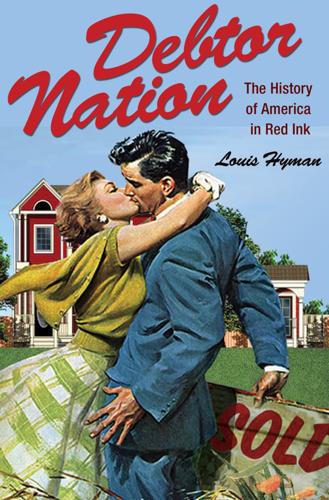
Debtor Nation: The History of America in Red Ink (Politics and Society in Modern America)
by
Louis Hyman
Published 3 Jan 2011
At one such fundraiser, on November 13, 1991, President Bush was speaking to an audience of New York Republicans and made an off-hand comment, unapproved by his speech writers, that he would “like to see the credit card rates down,” believing that lowered rates would help the economy recover.170 This economic reasoning was, at best, obscure, but the vague sense that these high interest rates were to blame possessed a broad appeal, as the recession heightened the criticism of credit cards as unnecessary and expensive indulgences. The junior senator from New York, Alfonse D’Amato, heard the remark, and facing a tough re-election race in New York, seized on it as a political opportunity. The next day, as the houses of Congress negotiated the final stages of a bill to resolve the savings and loan (S&L) crisis, D’Amato, along with then Democrat Joseph Lieberman from Connecticut, proposed an amendment to the S&L bill to cap credit card interest rates nationally at 14 percent.171 In the Senate, the amendment passed quickly, 74 to 19. Lowering credit card rates seemed to fit the political calculus of both Democrats and Republicans.172 While the measure passed quickly, as the reality of what was about to happen sank in, pundits, lobbyists, and policymakers just as quickly denounced the move.
…
Citibank, for instance, would have found itself 0.75 percent below its capital requirement. Such a cap would have destabilized capital markets as well as issuers. For pureplay issuers who used securitization more heavily, the cap would have spelled their demise. Recognizing the danger of destabilizing the banking system, already weakened from the S&L crisis, House Speaker Thomas Foley, through procedural adeptness, managed to split the measure from the larger banking bill, which allowed it to die in the House. That allowed the session to end without a vote, which was, by then, seen as the sensible thing to do. While lower interest rates might have pleased many SECURING DEBT 261 cardholders, reducing the number of Americans with credit cards by twothirds would certainly have offset the political gain from reducing interest rates.
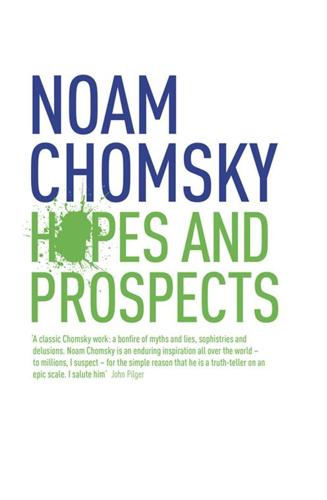
Hopes and Prospects
by
Noam Chomsky
Published 1 Jan 2009
Just to mention a few highlights, he was by far the most protectionist president in postwar American history, virtually doubling protectionist barriers in order to try to save the U.S. economy from takeover by more efficient Japanese producers; he carried out the first “too big to fail” bailout (Continental Illinois) while setting the stage for the huge Savings & Loan financial crisis; his “star wars” fantasies were sold to the business world as a huge taxpayer-funded bonanza to high-tech industry; his “out-of-control spending binge is burying our children and grandchildren under a mountain of unsustainable debt,” to quote House Republican leader John Boehner—referring, however, to the evil Obama, and omitting to mention, as did the press reporting him, that the projected interest burdens for Reagan and Obama are virtually identical as a proportion of GDP.
…
See “American exceptionalism” Fall, Bernard, 122 Fayyad, Salam, 253–54 Federal Reserve Board, 113 Feldman, Noah, 52 Felix, David, 71, 83, 107, 219 Ferguson, Thomas, 32, 108, 208 financial crises, 93, 107, 108, 207, 228 deregulation and, 219 financial liberalization and, 105, 108 recent and current, 63, 73, 109, 110, 212–13, 217, 221–22, 226 Savings & Loan crisis, 211 See also housing bubble financial institutions, 92, 107–11, 113, 209, 228 Charles Schumer and, 221 China as model for, 114 Glass-Steagall Act and, 219 globalization and, 35, 73 Haiti and, 10 recent bailouts of, 105, 219–21 Timothy Geithner and, 221 financial instruments, 220, 221 financial liberalization, 72, 93, 97–98, 105, 107, 108, 111, 114 financial sector, 93, 107, 110–11 financial liberalization and the power of, 212 Iran and, 174 Joe Biden and, 216 Obama and, 212, 228–29 Patriot Act and, 174 financialization of the economy, 34, 79, 93, 94, 97, 231 Fites, Donald, 218 Florida, 23, 24, 49, 51 Fourteen Points (Woodrow Wilson), 48 Framework Agreement of 1994, 138 France, 80 Franklin, Bruce, 56 Franks, Tommy, 57 Fraser, Doug, 218 free speech, corporate personhood and, 32–34 “free trade,” 6, 37, 78, 93 criticism of the term, 90 drug trade and, 78–79 “free circulation of labor” and, 29 vs. protectionism, 6, 76–78, 80, 81, 89, 211 Reagan and, 12 slavery and, 78, 79 See also neoliberalism “free trade agreements,” 31, 90–91, 93, 103–4 monopoly pricing rights in, 86 national security exemptions in, 86 See also North American Free Trade Agreement freedom of association, 208 Freeman, Chas, 171 French colonies, 7.
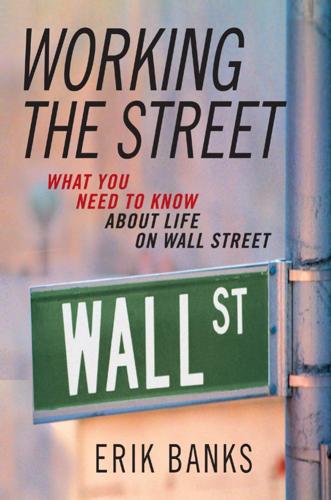
Working the Street: What You Need to Know About Life on Wall Street
by
Erik Banks
Published 7 Feb 2004
And I feel especially lucky that my tenure spanned important, exciting, and wrenching times—actually, some of the most intense in the history of the business world. From the time I arrived as a completely green but very eager banker-in-training in 1986 until the day I left in 2002, Wall Street went through absolutely tremendous peaks and troughs: the Latin debt crisis, the U.S. savings and loan crisis, the rise and fall (and subsequent resurrection) of junk bonds and corporate takeovers, the decade-long global stock market bull run, the bursting of Japan’s enormous economic bubble, the pulverization of several high-flying Asian and Latin econo- xii | W o r k i n g t h e St r e e t mies, the collapse of some big hedge funds, the unreal Internet and technology boom and bust, the corporate accounting scandals and government privatizations, the implosion of communism, the wars, the peace, and everything in between.
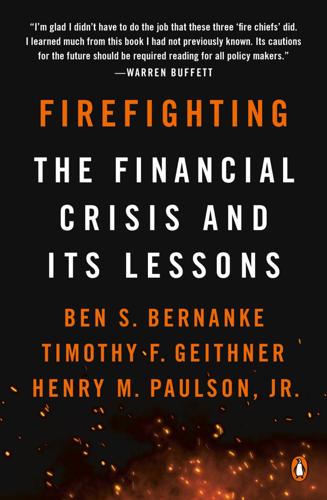
Firefighting
by
Ben S. Bernanke
,
Timothy F. Geithner
and
Henry M. Paulson, Jr.
Published 16 Apr 2019
After the FDIC seized IndyMac Bank, a California thrift formerly affiliated with Countrywide and similarly rash in its approach to real estate, panicked depositors lined up outside and demanded their money back. The FDIC guaranteed deposits up to $100,000, so most of them had nothing to worry about. But the images of panic from the largest U.S. bank failure since the savings and loan crisis of the 1980s made national news. The next week, fearful depositors withdrew more than $1 billion a day from Washington Mutual, a thrift even larger than IndyMac with similar mortgage exposures. Panic is a communicable disease. IndyMac’s failure was a sign that the fire was burning hotter again, but it didn’t seem to threaten the core of the system.
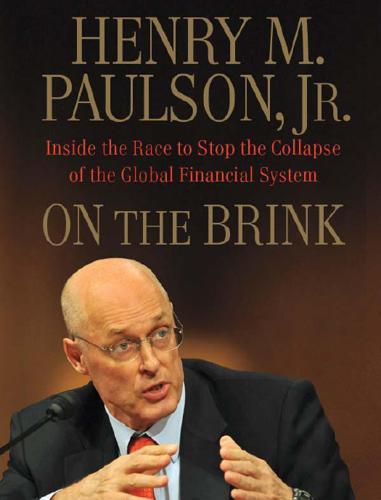
On the Brink: Inside the Race to Stop the Collapse of the Global Financial System
by
Henry M. Paulson
Published 15 Sep 2010
I explained that we needed to be prepared to deal with everything from terror attacks and natural disasters to oil price shocks, the collapse of a major bank, or a sharp drop in the value of the dollar. “If you look at recent history, there is a disturbance in the capital markets every four to eight years,” I said, ticking off the savings and loan crisis in the late ’80s and early ’90s, the bond market blowup of 1994, and the crisis that began in Asia in 1997 and continued with Russia’s default on its debt in 1998. I was convinced we were due for another disruption. I detailed the big increase in the size of unregulated pools of capital such as hedge funds and private-equity funds, as well as the exponential growth of unregulated over-the-counter (OTC) derivatives like credit default swaps (CDS).
…
This paper was backed by the assets the SIVs held; although the SIVs were frequently set up as stand-alone entities and kept off banks’ balance sheets, some maintained contingent lines of credit with banks to reassure buyers of their so-called asset-backed commercial paper, or ABCP. Financing illiquid assets like real estate with short-term borrowings has long been a recipe for disaster, as the savings and loan crisis of the 1980s and early 1990s demonstrated. But by 2007, several dozen SIVs owned some $400 billion in assets, bought with funds that could disappear virtually overnight. And disappear these funds did—as investors refused to roll loans over even when they appeared fully collateralized. The banks like Citi that stood behind the SIVs now faced a huge potential drain on their capital at just the moment they had to contend with a liquidity crunch.
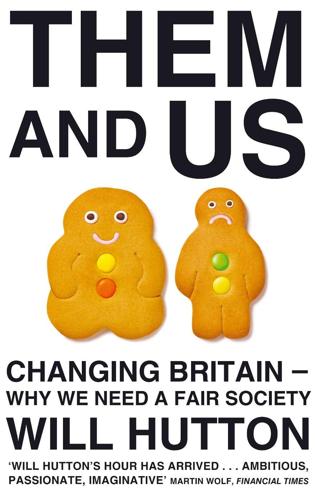
Them And Us: Politics, Greed And Inequality - Why We Need A Fair Society
by
Will Hutton
Published 30 Sep 2010
Some economists, such as Jagwad Bhagwati, had impeccable free trade credentials but still had doubts about financial deregulation. For them, free trade should have been first in the sequence of priorities; deregulating finance, on account of its attendant risk, last. But this was rapidly becoming heresy, despite the two recent British property crashes, the American savings and loans crisis, and a Latin American debt crisis. Nevertheless, while it may have made sense for any individual bank to promote the freedom to manage its balance sheet according to market signals and opportunities for profitable lending, there was clearly a problem of collective action. What was good for one was not necessarily good for all.
…
Edward, 266 Stephenson, George, 126, 127 Stiglitz, Joe, 51, 168–9, 367–8, 371 Strategy Unit, 337 structured investment vehicles, 151, 165, 169, 171, 188, 207, 209 Stutzer, Alois, 86 sub-prime mortgages, 64, 161, 203 Sugar, Alan, 64–5, 67 Summers, Larry, 92, 183 the Sun, 318, 327 Sunday Express, 321 Sunday Times, 318 supermarkets, relentless spread of, 389 Sure Start scheme, 10, 278, 307 Sutton Trust, 273, 293 swaps, 164; credit default swaps, 151, 152, 166–8, 170, 171, 175, 176, 191, 203, 207 Switzerland, 7, 86, 138, 180 takeovers and mergers, 8, 21, 33, 92, 245, 250, 258, 259, 388 Taliban, 102 Tax Justice network, 296 taxation: American right’s attitude to, 235, 297; capital transfer taxes, 73–4; collapse of tax base, 224, 368; concessions for private equity, 245, 247, 249, 374; Conservative reforms (1979-97), 275–6; corporation tax, 245; as deterrent to innovation, 104, 105; due desert and, 40, 220, 234, 235, 266; foreign nationals and, 32; housing wealth levy proposal, 373–4; inheritance tax, 73–4, 75, 78, 302–4, 393; low rates of, 5, 19, 387; luck and, 73–4, 75, 78, 303; one-off tax on bank bonuses, 26, 179, 249; progressive/redistributive, 78, 79, 80, 303, 387; proposed reforms, 209–10, 372, 373–4; relief on childcare vouchers, 277; tax avoidance, 25, 29, 42, 145, 151, 193, 245, 295–7; tax credits, 142, 277, 278, 336; tax evasion, 42, 145, 295–7; tax havens, 32, 295; tax relief on debt interest, 209–10, 374 teachers, 306, 307, 308 Technology Foresight, 21 Technology Strategy Board, 21 telecommunications, 133–4, 143 Terra Firma (private-equity firm), 28, 178, 247–8 terrorism, 36 Tesco, 246, 295 Tett, Gillian, 195 Thailand, 168 Thaler, Richard, 94–5 Thatcher, Margaret, 32, 81, 135, 144, 275, 290, 334, 388; centralisation of power, 14, 313; Rupert Murdoch and, 318 Thompson (wire service), 331 ‘3i’, 250, 252 Tilly, Charles, 24, 27, 272 The Times, 288, 295, 318, 319, 327, 330, 349 Times Higher Education, 21 Toulmin, Tim, 325, 332 Tourre, Fabrice, 103, 167–8 Toyota, 91, 269 trade unions, 88, 91, 142, 161, 179, 275, 364, 387; decline of, 272, 291–2, 341, 365–6; print and journalism, 320, 332; undue influence of, 31–2, 33, 364 Train to Gain, 306 Transport for London, 336 Treasury, 92, 178, 208, 214, 215, 218, 335, 336, 337, 369 Treasury and Civil Service Committee, 340 Troubled Asset Relief Program (TARP), 175, 176 Truth and Reconciliation Commissions, 24 Turkish oligarchs, 30 Turnbull, Lord, 334 Turner, Lord Adair, 24, 179 Tyler, Tom, 87 UBS, 170, 178 UK Trade and Industry (UKTI), 230–1 Ulpian (Roman jurist), 45 Unipart, 93 United Nations, 68, 332–3, 384 United States: American colonists, 54, 121, 126; annual consumption levels, 375; anti-statism and, 234, 311; banking system, 138, 150–2, 156, 158–9, 160, 162–3, 167–9, 173–6, 181, 191–2, 195–6, 244; big finance’s penetration of the state, 176–8, 183; United States – continued economic conflict with China, 376–7, 378–80, 381, 382, 383; economic history of, 108, 131–4, 300; executive pay in, 67, 101, 172–4; financial crisis/collapse and, 152, 158–9, 181, 192, 358–9, 375; free market policies/theory in, 140, 145, 160, 163, 165, 184, 234–5; Great Depression, 159, 162, 205, 362; ‘growth triangle’ in South Carolina, 254; impact of small firms, 253, 255, 256; international order and, 226, 378–9, 385–6; LTCM crisis, 169–70, 183, 193, 200–1; money market funds in, 156, 158, 161; neo-conservatism and, 17–18, 144, 297; as non-saver, 36; relationship finance in, 244; savings and loans crisis, 161–2, 163–4; short termism of markets, 241; TARP, 175, 176; ‘tea-party’ conservatism, 234, 327, 386; universal male suffrage, 128; universities, 101, 262–3, 264, 308; volatility of economy, 297; welfare and, 80, 281, 283, 297 universities, 21, 252, 261–5, 295, 308, 355, 370, 372; private schools and, 293–4, 306; uncapping of fees proposal, 264–5, 371 Vadera, Shriti, 178 Value Added Tax (VAT), 366–7, 370, 372 Vanderbilt, Cornelius, 133 Venetian empire, 121 venture capitalists, 241, 244–9, 250 Vishny, Robert, 62, 63 Vodafone, 255 Volcker, Paul, 206 voting system: alternative vote system (AV), 345–6; as delivering right-of-centre bias, 343; first-past-the-post system, 97–8, 217, 312, 313, 341, 343, 347; need for reform of, 97–8, 344–6, 347, 391; proportional representation, 97, 98, 344–6, 347, 391 Wales, devolving of power to, 15 Wall Street Journal, 349 Wallis, John Joseph, 113, 116, 129–30 Walpole, Robert, 125, 166 ‘war on terror’, 17, 144 Wars of the Roses, 124 Washington consensus, 163 Washington Post, 183 Watson, David Pitt, 242 Watson, Thomas, 29 Watt, James, 110, 126 ‘weapons of the weak’, 114–15 Weatherstone, Dennis (CEO of JP Morgan), 191–2 Webster, David, 292 Wedgwood, Josiah, 126–7 Weingast, Barry, 113, 116, 129–30 Welch, Jack, 216 welfare/social provision, 34, 80–2, 83–4, 281, 283–5, 297, 335; see also social security benefits; asset based, 298, 301–3, 304; coalition policy on, 343; undermining of popular support for, 80, 281–2, 283, 297, 302–3; universal services, 34, 79, 277, 281 welfare-to-work programmes, 278 Wenger, Arsène, 352 Westminster, Duke of, 64, 65 White, William, 182, 185 Willetts, David, The Pinch, 372 Williams, Rowan (Archbishop of Canterbury), 4, 26 Wilson, Harold, 312 Wilson, Woodrow, 132–3 Wilson Committee into City (1980), 179 Wilthagen, Tom, 299–301 Winstanley College, Wigan, 294 Winston, Robert, 107 wire agencies, 322, 331 Woessmann, Ludger, 305–6 Work Foundation, 94, 233 World Bank, 164, 182, 226, 383, 384 xenophobia, 16, 36 X-Factor, 282, 314 York University, Neuroimaging Centre (YNiC), 263 Young, Michael, 283–4 Young, Toby, 282 Yu Yongding, 381 Zilibotti, Fabrizio, 115–16 Zinoviev letter, 315

The Atlantic and Its Enemies: A History of the Cold War
by
Norman Stone
Published 15 Feb 2010
Peking PEN club Peng Pai Penguin (publishers) penicillin Penn Central railway ‘Pentagon Papers’ People’s Liberation Army see Red Army (Chinese) perestroyka Perkins, Thomas Perle, Richard Persepolis Peter the Great Petőfi, Sandor petrochemicals industries Pflimlin, Pierre Philadelphia Philby, Kim Philipe, Gérard Philippines Phillips, Alban William Phillips Curve Phillips, Melanie Phnom Penh Phoenix, Arizona Piaf, Édith Picasso, Pablo Pieck, Walter pieds noirs Pill, contraceptive Pinay, Antoine Piñera, José Pinochet, Augusto ‘Pinochet solution’ Pinter, Harold Pipes, Richard Piscator, Erwin Pitsunda PKK (Kurdistan Workers’ Party) Platts-Mills, John Playboy (magazine) Plaza Agreement (1985) Pleiku Pleven, René PLO (Palestine Liberation Organization) Plojhar, Mgr Josef Plumb, Sir John plutonium Plyushch, Leonid Podolia Poindexter, John Poitiers Pol Pot Poland: agricultural collectivization anti-semitism anti-Soviet demonstrations aristocracy Catholic Church coal industry collapse of communism Communist Party communist takeover Convention of Targowice (1792) emigrants to Germany ethnic German population and France under Gierek under Gomułka inflation intelligentsia Jews in and Khrushchev’s relaxation attempts and Marshall Plan martial law (1981-2) ‘modernization’ oil money invested in peasantry relations with USSR relations with West Germany Second World War Solidarność (‘Solidarity’) Stalinization steel industry territorial losses trade unions UB (secret police) Ukrainians in universities Warsaw Uprising (1944) WRON (national security council) Polaris (missile) Poll Tax (Britain) Pollitt, Brian Pomerania Pompidou, Georges Ponomarev, Boris Ponzi schemes Poos, Jacques population growth collapse of Porsche, Ferdinand Port Said Port Talbot Port-au-Prince Portugal Potsdam Potsdam conference (1945) POUM (Spanish anarchist organization) Powell, Charles, Baron Poznan Pozsgay, Imre Prague: architecture Communists’ organized discontent Czernin Palace Kinsky Palace museum of security police revolution of 1989 Smichov Stalinization undamaged by war working class ‘Prague Spring’ Prats, Carlos Pravda (newspaper) Prebisch, Raúl Presley, Elvis Preuves (magazine) Primakov, Yevgeney Prisender, Edgar privatization of industry and services: Britain Chile West Germany prostitution Protestant churches: and economic development in Germany in Hungary missionaries in China Thirty Years War see also Calvinist Church; Lutheran Church Prussia PUK (Patriotic Union of Kurdistan) Punjab ‘pursuit of happiness’ Pusan Pushkin, Alexander ‘Pushtunistan’ Putin, Vladimir Quang Tri (US combat base) Queen Elizabeth, RMS Quemoy islands Quennell, Peter Raab, Julius radar Radio Urumchi Rákosi, Mátyás Rakowski, Mieczysław Rambouillet summit (1975) Ramsay, Douglas Rangel, Charles Rangoon Rapallo, Treaty of (1922) Rasputin, Valentin rationing: Britain East Germany France Ravenscraig steel works Reader’s Digest (magazine) Reagan, Nancy Reagan, Ronald: background and character and Ceauşescu and collapse of communism core beliefs defence policy economic policy election as President (1980); (1984) enemies of on failure of Johnson’s Great Society and Goldwater campaign Governor of California Iran-Contra affair marriages oratory skills and Poland popularity relationship with Margaret Thatcher retirement Savings and Loans crisis ‘The Speech’ (1980) Strategic Defense Initiative (‘Star Wars’) and universities visits Britain work regimen and leadership style Récsk Red Army (Chinese; ‘People’s Liberation Army’) Red Army (Soviet): atrocities committed by conquering of eastern and central Europe Second World War casualties Red Army Faction Red Brigades Redford, Robert Reece, Sir Gordon Rees-Mogg, William, Baron ‘Reg Q’ (American interest rate regulation) Regan, Donald Reich, Robert Reider, Jonathan Reinhardt, Max Remington Rand (corporation) Rémond, René Renault (automobile manufacturer) reparations, First World War reparations, Second World War: German Japanese Soviet demands Republican Party (United States) Rerum Novarum (papal enyclical) Reuter, Ernst Reuther, Walter revolutions of 1848 Rez, Adam Rhee, Syngman Rhineland Rhodesia Richter, Horst-Eberhard Richter, Svyatoslav Ridley, Nicholas, Baron Ridley of Liddesdale Riesman, David, The Lonely Crowd Rimbaud, Arthur Robbins, Lionel, Baron Robespierre, Maximilien Robinson, Joan Rocard, Michel Rochet, Waldeck Rockefeller, Nelson Rodriguez, Carlos Roe.
…
Wade (1973) Rohatyn, Felix Rolls-Royce Roman Empire Romania: communist takeover economy establishment of Romanian state ethnic German population fall of Ceauşescu and France Hungarian minority Jews Kurdish nationalists’ summer schools labour camps ‘Little Entente’ nationalism Orthodox Church peasantry Soviet annexation of Bessarabia territorial gains from Hungary universities Rome: airport bombing (1985) student population Rome, Treaty of (1957) Roosevelt, Franklin Delano: banking reform and Chinesewar and Johnson and Kennedy and Keynes and lying New Deal reputation and Supreme Court Yalta conference (1945) Röpke, Wilhelm Rostov Rostow, Walt Rotterdam Rousseau, Jean-Jacques Rover (automobile manufacturer) Royal Dutch-Shell (oil company) Royal Society rubber Rublev, Andrey Rueff, Jacques Ruhr international authority Ruhrgas Ruijin Rusk, Dean Russell, Bertrand, 3rd Earl Russell, Conrad, 5th Earl Russia, Tsarist Russia, post-Soviet RussianWar (1917-23) Russian Revolution (1917) fortieth anniversary Western views of ‘rust belt’ Rylands, George ‘Dadie’ Ryzhkov, Nikolay Saarland Sabanci dynasty Sadat, Anwar Saddam Hussein Saigon: American embassy anti-American demonstrations bombing of fall of (1975) French rule refugee population wartime squalor St Anthony’s College, Oxford St Louis, Missouri St Petersburg (Leningrad) Hermitage Russian Museum Soviet era slums Zoo Saint-Pulgent, Maryvonne de Sakarya, battle of (1921) Sakharov, Andrey Saladin Salisbury, Harrison Salomon Brothers (bank) Salonica SALT (Strategic Arms Limitation Talks) Saltén, Felix Saltley Coke Depot Salzburg Festival Samara (Kuybyshev) Samarkand Samuelson, Paul San Francisco San Francisco Treaty (1951) Sandys, Julian Santiago, Chile Catholic University University of Chile Santiago de Cuba Sapieha, Cardinal Prince Sartre, Jean-Paul Saudi Arabia: and Afghan war and Iran oil production and Yom Kippur War (1973) Savak (Iranian secret police) Savings and Loans crisis (USA) Saxony Scargill, Arthur Schacht, Hjalmar Scheel, Walter Schenectady, New York Schiller, Karl Schily, Otto Schlesinger, James Schleyer, Hanns-Martin Schmidt, Helmut: background and character and Britain and Carter economic policy and European Community and Gierek and Honecker on the Left Minister of Finances Ostpolitik Rambouillet summit (1975) and Reagan administration succeeds Brandt as Chancellor Schoenberg, Arnold Schreiberhau Schuman, Robert Schumpeter, Joseph Scotland: comparisons with Saxony Conservative Party in first recorded Scottish utterance nationalism Protestantism referendum on independence (1979) SDP (British Social Democratic Party) ‘Second Cold War’ Second World War: bombing of Germany British victories German capitulation Japanese surrender Soviet victories Victory Day (1945) SED (East German Party of Socialist Unity) Sédillot, René, Le Coût de la Révolution française Seeckt, Hans von Seldon, Arthur Sellers, Peter Selyunin, Vasily Semipalatinsk Semyonov, Vladimir Şener, Mahmut Seoul serfdom Servan-Schreiber, Jean-Jacques Seton-Watson, Hugh Sèvres Protocol (1956) Shah of Iran (Mohammad Reza Pahlavi) fall of Shakespeare, William Shakhnazarov, Georgy Shanghai Shannon, Claude Elwood Shanxi province Shawcross, Hartley, Baron Shcherbitsky, Vladimir Sheehan, Neil Sheffield Sheffield, HMS Shelest, Petro Shell (oil company) Sherman, Sir Alfred Shevardnadze, Edward Shigemitsu, Mamoru Shigeru, Yoshida shipbuilding Shultz, George Siberia gas pipeline Sibiu Sichuan province Sicily Siemens-Schuckert (corporation) Sihanouk, King Sihanoukville Siirt Šik, Ota Sikhs Silesia Simenon, Georges Simes, Dmitri Singapore single parents Sino-Soviet split Sinop Sissons, Michael Six Day War (1967) Skidelsky, Robert, Baron Sladkevičius, Vincentas Slansky, Rudolf Slater Walker Securities (bank) slavery Slovakia: author’s imprisonment in Catholic Church Communist Party Democratic Party Hungarians in Jews in Lutheran Church nationalism and ‘Prague Spring’ relations with Czech lands Second World War Secret Service Slovenia Slump, Great (1930s) Smiley, Xan Smith, Adam Smith, David Smith, Frederick Smithsonian agreement (on exchange rates; 1971) smoking bans Smoot-Hawley tariff snoek (fish) Snow, C.
…
Turin University Turing, Alan Türkeş, Alparslan Turkey: Alevi population ANAP (‘Motherland’ Party) banking system Christian minorities coal industry consumer goods production corruption and Cyprus Democratic Party education system (see also universities) and EEC/EU elections: (1950); (1974); (1977); (1983); (1986); (1989); (1991) emigration establishment and success of Atatürk’s republic GAP project Greek population ‘guest workers’ in Germany and human rights hydro-electricity inflation infrastructure Inönü’s government intelligentsia Islam Jews in Justice Party and Korean War Kurdish population language and Marshall Plan Marxism military coup (1960) military coup (1971) military coup (‘generals’ coup’; 1980) Nationalist Party NATO membership Özal’s economic reforms Özal’s premiership and presidency peasantry political instability of multi-party period population growth refugees in relations with USSR Republican Party Second World War secularism Soviet territorial claims steel industry taxation trade unions universities US aid US bases war with Greece (1919-22) Turner Broadcasting Tutzing U2 spy planes UB (Polish secret police) Uganda Uglich Ukraine: birth rate Communist takeover demolition of churches Khrushchev as Party head nationalism Russian population transfer of Crimea to Uniates Ukrainians: in Poland in Soviet Politburo Ulbricht, Walter unemployment: Britain Chile ‘downsizing’ France Nazi Germany Phillips Curve reunified Germany USA Uniates (Orthodox Church) ‘Uniscan’ (proposed European free-trade area) Unitarians United Nations: and Afghanistan and Chilean coup (1973) and Cuban crisis of 1962 and Cyprus development of bureaucracy establishment of as forum for ‘world opinion’ investigation of German reunification and Korean War ‘non-aligned’ states and Palestine ‘peacekeeping’ role Security Council and Suez crisis and Yom Kippur War United Nations Economic Council for Latin America United Nations Human Rights Commission United Nations Relief and Rehabilitation Administration (UNRRA) United Workers’ Party (Hungarian) universities: Belgium Britain Chile France Germany Italy Poland Romania student demonstrations student exchanges student loans Turkey USA USSR UNRRA (United Nations Relief and Rehabilitation Administration) Untergang, Der (Downfall; film) uranium Uriage, administrators’ school Urrutia, Manuel USA: and Afghanistan ‘Alliance for Progress’ (plan for Latin America) armaments industry atomic bombs automobile industry balance of payments banking system Bay of Pigs invasion (1961) business management methods and Chile and Chinesewar Civil Rights Act (1964) coal production coin-clipping Communists conservatism Constitution consumer goods production crime Cuban crisis of 1962 and Cyprus Declaration of Independence defence expenditure Democratic Party Depression (1930s) and division of Germany education system (see also universities) and Egypt and establishment of NATO and European Defence Community European resistance to cultural domination and Falklands War (1982) family breakdown farm subsidies fast food Federal Reserve feminism film industry financial deregulation and German economic miracle gold reserves grain exports to USSR Great Society and Greekwar and Haiti health care ICBMs (intercontinental ballistic missiles) immigration income per capita inflation intelligentsia interest rates and Iran Iran-Contra affair and Israel Jews in Korean War Lend-Lease aid to Britain McCarthyism mass culture missionaries in China motorways National Security Council (NSC) New Deal New Frontier nuclear weapons development oil industry and Pakistan personal debt and Poland post-war occupation of Japan poverty Presidential elections: (1952); (1960); (1964); (1968); (1972); (1976); (1980); (1984); (1988) productivity public transport ‘pursuit of happiness’ racial problem refugee groups Republican Party ‘rust belt’ SALT (Strategic Arms Limitation Talks) and Saudi Arabia Savings and Loans crisis Second World War space programme steel production Strategic Defense Initiative (‘Star Wars’) strikes ‘supplyside’ economics Supreme Court taxation technological developments trade unions and Turkey underclass unemployment universities urban development and decay visa system Watergate scandal welfare system westward migration see also CIA; Marshall Plan; Vietnam War USSR: Afghanistan war (1979-89) Agitation and Propaganda department alcoholism American grain imports and Angola anti-alcohol campaign atomic bombs and Austria Berlin blockade (1948-9) birth rate border conflicts with China business management methods censorship and Chile and Chinesewar collapse of communism collectivization policy commissariat for culture coup of August 1991 Cuban crisis of 1962 cultural institutions deportations disintegration dissidents ‘Doctors’ plot’ (1952) and East Germany economic stagnation and Egypt and Ethiopia Five Year Plans friendship treaty with China (1950) German invasion (1941) glasnost and human rights and Hungarian uprising of 1956 ICBMs (intercontinental ballistic missiles) inflation information technology institutchiki intelligentsia internment camps invasion of Czechoslovakia and Iran Jews in and Korean War life expectancy rates and Marshall Plan Molotov Plan nationalism navy New Economic Policy non-Russian populations nuclear power nuclear weapons development oil and gas production ‘Optimal Functioning’ planning system ‘our common European home’ ‘peaceful coexistence’ doctrine peasantry perestroyka and Poland power struggle following Stalin’s death and ‘Prague Spring’ refugees in Turkey relations with West Germany religious persecution reparations demands and Romania SALT (Strategic Arms Limitation Talks) scientific and technological developments Second World War shortages and starvation Siberian gas pipeline Sino-Soviet split slave labour space programme Spetsnaz (‘special forces’ troops) stage managment of revolutions of 1989 Stalin’s purges steel industry strikes television and Turkey underground theatre universities and Vietnam Western studies of Soviet economy winter war with Finland (1939-40) see also Communist Party of Soviet Union; KGB; Red Army; RussianWar; Russian Revolution Ussuri river Ustinov, Dmitry Uzbekistan Uzbeks Uzunada island Vaizey, John, Baron Valparaíso Van, Turkey Vance, Cyrus Vandenberg Resolution (1948) Vann, John Vatican Papal Guard Vatican(ecumenical council) Venezuela, oil production Venice Venice conference (1956) venture capital Verheugen, Günter Verlaine, Paul Vernadsky, George Vernadsky, Vladimir Vial (Chilean conglomerate) Vichy France Vienna: airport bombing (1985) Atomic Energy Commission author’s studies in espionage in Karl-Marx Hof bombardment (1934) Kraus on OPEC headquarters post-war rebuilding State Opera Taylor on Vienna conference (1961) Vienna OPEC conference (1973) Vienna school of economics Vietnam: agricultual collectivization ‘boat people’ Buddhists Catholics Chinese minority population Communist Party famine French rule France-Indochina war independence movement industrialization invasion of Cambodia (1978) Japanese invasion (1941) partition peasantry war with China see also North Vietnam; South Vietnam Vietnam War (1959-75): American conscription American public opposition Ap Bac, battle of (1963) bombing campaigns ceasefire CIA involvement civilian casualty totals corruption European response to fall of Saigon (1975) guerrilla warfare Gulf of Tonkin incident (1964) Ho Chi Minh Trail Khe Sanh, battle of (1968) Lam Son operation (1971) media coverage military casualty totals My Lai massacre (1968) numbers of American troops deployed origins of Paris peace talks ‘peace initiatives’ Phoenix ‘pacification’ programme Tet offensive (1968) use of Agent Orange use of helicopters ‘Vietnamization’ Vilna Vinde, Pierre Vladikavkaz Volcker, Paul Volga Famine (1921-2) Volga river Volhynia Volkswagen (automobile manufacturer) Volobuyev, P.

The Black Box Society: The Secret Algorithms That Control Money and Information
by
Frank Pasquale
Published 17 Nov 2014
Speaking of his subcommittee’s bipartisan report, Senator Carl Levin concluded, “Our investigation found a financial snake pit rife with greed, confl icts of interest, and wrongdoing.”136 No wonder Judge Rakoff was so frustrated. Criminologist Bill Black, a bank regulator in the 1980s and early 1990s, provides another point of comparison. Like the housing bubble of the 2000s, the savings and loan (S&L) crisis of the late 1980s involved banks systematically overvaluing real estate and mortgage portfolios. In that crisis, regulators made over 10,000 referrals for potential criminal prosecution, and more than 1,400 individuals were jailed. The crisis of 2008 ballooned to over 70 times larger monetarily, and Black found the behavior of many of today’s managers eerily similar to the actions of convicted S&L leaders.
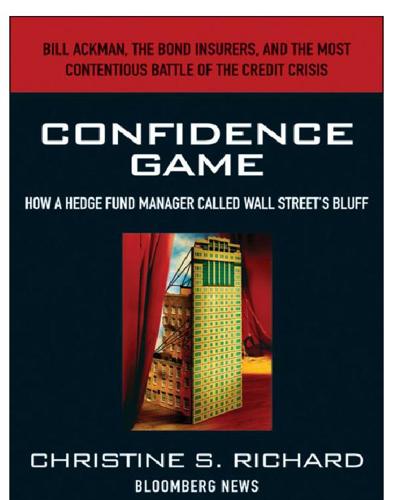
Confidence Game: How a Hedge Fund Manager Called Wall Street's Bluff
by
Christine S. Richard
Published 26 Apr 2010
“For every page of one of Bill’s presentations, you can be sure there were two or three that were cut,” McGuire remembers. “If it was up to Bill, every presentation would be an eight-hour seminar.” Katzovicz carried a box filled with copies of their latest presentation: “Bond Insurers: The Next S&L Crisis?” After a few minutes, the taxi slowed in the crawl of rush hour traffic. “We shouldn’t have taken a taxi,” Ackman fretted. As they reached Houston Street, Ackman insisted they get out and take the subway: “It will be faster.” The subway left them several blocks from the insurance department on Beaver Street in lower Manhattan, and they closed the remaining distance at a high-speed walk in muggy Manhattan heat, Katzovicz struggling with the box of presentations.
…
CHAPTER 17 APOCALYPSE NOW Janet Tavakoli, Structured Finance and Collateralized Debt Obligations: New Developments in Cash and Synthetic Securitization, 2nd ed. (Hoboken, New Jersey: John Wiley & Sons, 2008), p. 334. William Ackman, presentation to the New York State Insurance Department, “Bond Insurers: The Next S&L Crisis?” Aug. 1, 2007. Mick McGuire, e-mail to Jordan Cahn at Morgan Stanley, “MBIA Subprime Call,” Aug. 1, 2007. MBIA presentation, “MBIA’s Disciplined and Selective Approach to Subprime RMBS and Multi-Sector CDOs,” Bloomberg transcript, Aug. 2, 2007. Deutsche Bank Securities presentation, “Shorting Home Equity Mezzanine Tranches: A Strategy to Cash In on a Slowing Housing Market,” April 2007.
…
See “Caulis Negris” deal Blackstone Group William Blair & Company Blanco, Kathleen Blaylock & Partners Blodget, Henry Bloomberg Markets Bloomberg News “Insurance Charade, The,” “MBIA Debt Backed by Crack Houses Perpetuates Pittsburgh Blight,” Bloomberg Television Blumenthal, Richard Boberski, David Bond Buyer Bonderman, David “Bond Insurers: The Next S&L Crisis?” (Pershing Square / Ackman) Borders Group Incorporated Born, Brooksley Brain, David Braun, Michael Brightpoint Brimmer, Andy Broderick Brose, Aggie Brown, David Brown, Jay Ackman meeting (August 2002) Ackman meeting (November 2002) background of compensation arrangements future of MBIA, comments on Is MBIA Triple-A?
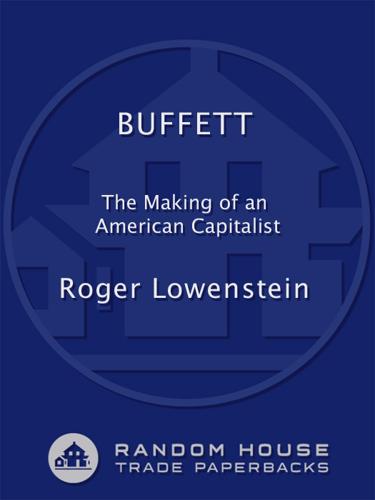
Buffett
by
Roger Lowenstein
Published 24 Jul 2013
But, like few other executives, Buffett did not try to curry favor with them.39 The textile trade group repeatedly asked Buffett to help it lobby for import protection, but Buffett never did, even though his mill could have used the help.40 In a more dramatic case, Berkshire’s savings and loan was a member of the United States League of Savings Institutions. The league, like all such groups, viewed its mission as grabbing for its members the biggest possible share of the government pie. It even had the effrontery to lobby against requirements for stronger levels of capital just as the S&L scandal was coming to light—that is, just as its members were running up a $100 billion bill to the taxpayers. Buffett and Munger, having the quaint view that even lobbyists should have social consciences, quit the league in protest. Munger, who had been warning of danger signs on the S&L front for years,† to the press an acid letter accusing the league of “furnish[ing] self-serving nonsense.”
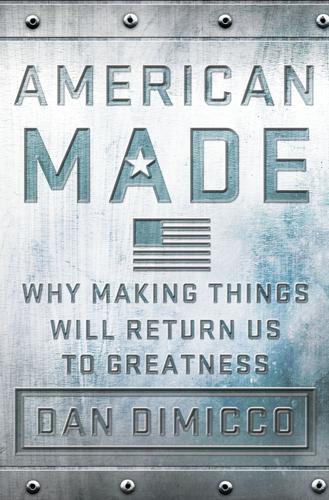
American Made: Why Making Things Will Return Us to Greatness
by
Dan Dimicco
Published 3 Mar 2015
I honestly thought after Lehman Brothers and Washington Mutual and IndyMac and more than 300 other banks went belly-up that we would have finally learned that the road to real wealth isn’t paved with speculation and derivatives. Then again, the lesson didn’t sink in after the dot-com bubble burst, or after Enron imploded, or after the savings-and-loan crisis hit. But we need to learn sometime. We need to go back to the basics of sound economic principles. We need to return to the fundamentals of being a nation that innovates, makes, and builds things. One could argue there are two kinds of capitalism. There is the capitalism that makes and manufactures, and the capitalism that trades and sells.
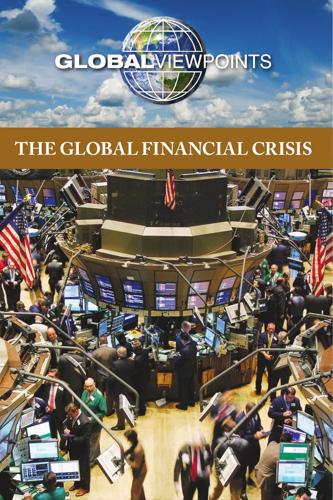
Global Financial Crisis
by
Noah Berlatsky
Published 19 Feb 2010
Several small banks are now fully nationalised; RBS and the Lloyds Banking Group are partly nationalised; the two remaining global banks (HSBC and Barclays), along with the remainder of the sector, depend on a variety of implicit or explicit guarantees. 44 Causes of the Global Financial Crisis How we got to that point has been discussed elsewhere (including in my book The Storm): I am now concerned with the future. There is a bifurcation of paths opening up. One route builds on the experience of recent bank crises in Scandinavia, Israel, Korea and elsewhere, including the US, whose so-called Resolution Trust model helped to limit the savings and loans crisis of the late 1980s and early 1990s. Following this route, the state leads and manages a clean-up and restructuring of banks, usually within a decade or so. Approaches have varied, but there are some common elements: the wiping clean of the slate, in respect of losses incurred by existing private shareholders and the removal of failed management; fresh, taxpayer equity capital; structures to ensure that lending can continue unhindered to good, solvent borrowers; the valuation and active management of “bad” assets, in order to retrieve whatever value is left; then, in due course, the selling off of some or all publicly owned banks to achieve maximum return to the taxpayer and leave a varied ecology of properly regulated national banking institutions.
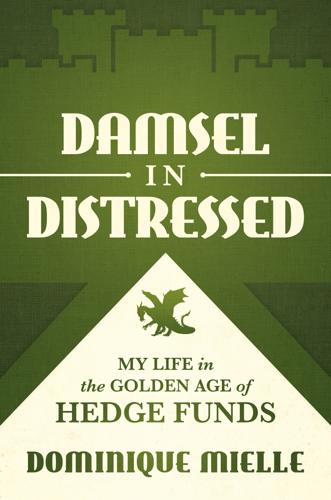
Damsel in Distressed: My Life in the Golden Age of Hedge Funds
by
Dominique Mielle
Published 6 Sep 2021
Yet Greenspan opined: Credit default swaps have been an extraordinarily valuable tool in the sense a substantial proportion of loans that are made, are made by leveraged institutions. And in previous decades, they left those loans on their balance sheets. And when there was stress, they had a banking crisis. Or you had savings and loan crisis, or something of that nature. With the credit default swap, you have the originators of loans capable of selling off the credit risk to those with far less leverage, who are willing to accept the risk at a price. And since we’ve had credit default swaps, there has not been a major financial institution undermined.
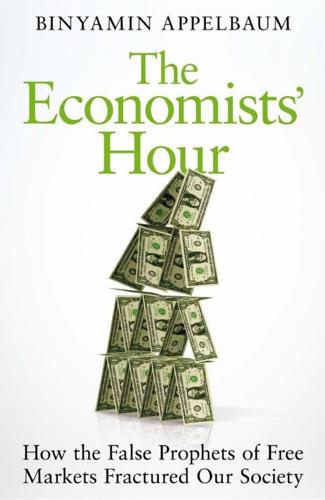
The Economists' Hour: How the False Prophets of Free Markets Fractured Our Society
by
Binyamin Appelbaum
Published 4 Sep 2019
As of 2018, about 355 bankers, mortgage lenders, real estate agents, and borrowers had been convicted of crimes related to the crisis. But they were almost all small fry. No executives of the largest financial firms went to jail. And the total was only about a third of the number of convictions after the much smaller savings-and-loan crisis in the 1980s.16 The government bailed out the banking industry, but it did not mount a comparable effort to help borrowers. Obama decided to rely on mortgage companies to modify unaffordable loans. He eschewed direct intervention, the approach advocated by his chief political rivals in the 2008 presidential race, Hillary Rodham Clinton and John McCain.
…
Supreme Court, ref1, ref2, ref3, ref4, ref5, ref6, ref7, ref8, ref9, ref10, ref11 Ardagna, Silvia, ref1, ref2 Armey, Richard, ref1, ref2 Army Corps of Engineers, ref1, ref2, ref3, ref4, ref5 Arrow, Kenneth, ref1 Astudillo, Maria, ref1 AT&T, ref1, ref2, ref3, ref4, ref5, ref6, ref7 Australia, ref1, ref2 automobile industry: and accidents, ref1, ref2, ref3, ref4, ref5; regulation of, ref1, ref2, ref3, ref4, ref5, ref6, ref7, ref8; and trade, ref1, ref2 Baker, Howard, ref1 Baker, James, ref1, ref2, ref3 Ball, George, ref1, ref2 Bank for International Settlements, Switzerland, ref1, ref2 banking industry: and credit card companies, ref1, ref2; and credit derivatives, ref1, ref2, ref3, ref4, ref5, ref6, ref7, ref8, ref9; economic regulation of, ref1, ref2, ref3, ref4, ref5, ref6, ref7, ref8, ref9, ref10, ref11, ref12, ref13, ref14, ref15; loans to Latin America, ref1; and money market accounts, ref1, ref2; mortgage-lending practices, ref1, ref2, ref3; price-fixing conspiracy of, ref1, ref2; role in Great Recession, ref1; and savings-and-loan crisis, ref1, ref2 Baroody, William J., Sr., ref1, ref2 Baxter, William F., ref1, ref2 Beebe, William Thomas, ref1 Bentsen, Lloyd, ref1 Bernanke, Ben S., ref1, ref2, ref3, ref4, ref5, ref6 Bhagwati, Jagdish, ref1, ref2 Bingham, Eula, ref1 Blair, Tony, ref1, ref2 Blinder, Alan, ref1, ref2 Blumenthal, W.

Without Conscience: The Disturbing World of the Psychopaths Among Us
by
Robert D. Hare
Published 1 Nov 1993
Without the pressure to conform to the rules under strict governmental oversight, certain S & L personnel began to take freedoms with their depositors’ money that led, in a gradually building avalanche of debt, to a financial disaster of unprecedented proportions. At the time of this writing, the projected cost to U.S. taxpayers of what has become known as the S & L bail-out approaches $1 trillion—more than the entire cost of the Vietnam War. • Incredible at it seems, even the S & L scandals have been topped by recent revelations of a worldwide network of unbelievable greed and corruption. “Nothing in the history of modern financial scandals rivals the unfolding saga of the bank of Credit and Commerce International, the $20 billion rogue empire that regulators in 62 countries shut down in a stunning global sweep.
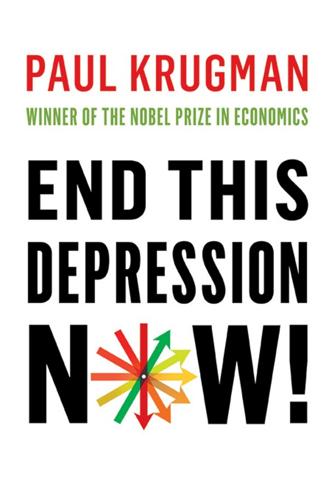
End This Depression Now!
by
Paul Krugman
Published 30 Apr 2012
P., 59 Morgan Stanley, 131, 134 mortgage-backed securities, 62, 112, 114 mortgage relief, 53, 126–28, 219–21 Obama administration and, 220–21 mortgages, 30, 93 defaults on, 47–48, 172 foreclosure and, 45, 127–28 real value of, 163–64 subprime, 65, 99 “underwater,” 127, 220 see also household debt Mulligan, Casey, 6 Mundell, Robert, 172 Munk, Nina, 71, 72 Nakamura, Emi, 236 National Bureau of Economic Research, 4 National Institute for Economic and Social Research, 201 National Review, 25 natural experiments, 212, 233, 235 Nebraska, high employment in, 37 net international investment position, 44 Nevada, housing bubble in, 111, 172 New Deal, 38, 50 job-creation programs of, 39 New Keynesians, 103, 104 New Yorker, The, 125 New York Times, 80–81, 151 1930s, economic conditions in, xi Obama, Barack, 150 business confidence and, 95 deficit and, 130, 131, 134, 143 inflation under, 152 spending cuts and, 28, 131, 143 stimulus plan of, see American Recovery and Reinvestment Act and 2012 election, 226 worker redundancy and, 36 Obama administration, 116, 117, 210 and deficit reduction vs. job creation, 225, 228 household debt relief and, 128 and inadequacy of stimulus, 123–26, 130–31, 213 mortgage relief and, 220–21 unemployment and, 110, 117 Occupy Wall Street, 64, 74–75, 76 oil and gas industry, 37 deregulation of, 61 prices in, 159 optimum currency area, 171–72 Oracle Partners, 72 Organization for Economic Cooperation and Development (OECD), 189, 190, 191, 202 O’Rourke, Kevin, 236 Osborne, George, 178, 200, 201 panics, 59 euro as vulnerable to, 182–84, 186 of 1907, 59 in 2008 financial crisis, 4, 63 Parenteau, Rob, 189 Paul, Ron, 150–51 payroll tax credit, 229 Pearl Harbor, Japanese attack on, 38 Perry, Rick, 151, 218 Piketty, Thomas, 77–78, 81–82 Pimco, 131, 134 Pinto, Edward, 65–66 Plosser, Charles, 36–37 policy makers: Austerian influence on, 188–207 influence of financial elite on, 23–24, 96 informed public and, xii lessons of Great Depression ignored by, xi, 50, 92, 189 in 2008 financial crisis, 115–16 politics, politicians: anti-Keynesianism in, 93–96 influence of money in, 63, 77–78, 85–90 lessons of Great Depression ignored by, xi, 50 revolving door and, 86, 87–88 as roadblocks to recovery, 23–24, 123–24, 129, 130–31, 211, 218, 219, 222, 223 Poole, Keith, 88–89 poor, aid to, 89, 120, 144, 216 Portugal: debt crisis in, 18, 175, 175, 178, 186 debt to GDP ratio in, 178, 178 EEC joined by, 168 private debt: European crisis and, 182 overhang of, 39, 52, 53, 93, 163–64 private-equity firms, breach of trust and, 80–81 private sector: saving vs. investment in, 137 spending by, 25–26, 143–44, 235–36 prosperity, unemployment and, 9 pundit’s fallacy, 225 quantitative easing, 193, 218–19 Rajan, Raghuram, 190, 203–4 Reagan, Ronald: defense spending under, 236 deficit under, 142 deregulation under, 50, 60–61, 62, 67–68 inflation under, 152, 161, 162 real business cycle, 103 real estate loans, bad, 68, 80 real gross domestic product (real GDP), 12–14 CBO estimates of, 13–14 in 2008 financial crisis, 13 recessions, 13, 18, 172, 201 historical patterns of, 122, 128–29 long-term effects of, 17 Lucas project and, 102, 103 of 1937, 38 of 1979–82, 13, 31 of 1990–91, 31 of 2001, 31 see also depressions reconciliation, 124, 226–27 recovery, from depression of 2008–, ix–x, 208–22 aggressive action needed in, 216–19, 221–22 deficit and, 212 government spending and, 211–16 housing sector in, 219–21 inadequacy of stimulus in, 108, 109–10, 116–19, 122–26, 130–31, 165, 212, 213, 229–30 inflation and, 219 infrastructure investment and, 215 job creation and, 228–29, 238 lessons of Great Depression and, xi, 20, 22 long-term focus as mistaken in, 15 as moral imperative, 229–30 Obama administration and, 123–26, 210 political roadblocks to, 23–24, 123–24, 129, 130–31, 211, 218, 219, 222, 223 research-based policies for, xi, 212, 217 self-interest and distorted ideology as roadblocks to, 20 slow pace of, 4 supposed lack of projects in, 212, 213–16 will as key to, 20, 217, 218, 219–20 Reinhart, Carmen, 129 repo, 62, 114 Repubblica, La, 188, 196 Republicans, Republican Party, 107, 151, 228 austerity programs espoused by, 190, 218, 227 Big Lie of 2008 financial crisis espoused by, 64–65 extremism in, 19 financial elite and, 88–89 inflation and, 160 job-creation policies opposed by, 227, 228–29 scorched-earth policy of, 123–24, 131 stimulus and, 109 research, economic, 5–6, 10–11 correlation vs. causation in, 83, 198, 232–33, 237 misleading, 196–99 natural experiments in, 212, 233, 235 policies based on, xi, 212, 217, 231–38 “Rethinking Macroeconomic Policy” (Blanchard et al.), 161–63 Return of Depression Economics, The (Krugman), 31, 69, 91 returns on investment, liquidity vs., 57 Reynolds, Alan, 78 Ricardian equivalence, 107 Ricardo, David, 205–6 Riedl, Brian, 25–26, 29, 106 risk taking, 43, 54, 55 deregulation and, 61–62, 63–64, 80 limiting of, 60 Rogoff, Kenneth, 129 Romer, Christina, 104, 107, 108, 228, 237–38 Romney, Mitt, 80, 226, 227 “Rooseveltian resolve,” 217, 218, 219–20 Rosenthal, Howard, 88–89 Rubin, Robert, 86 Saez, Emmanuel, 77–78, 81–82 Samuelson, Paul, 43, 93 Sargent, Greg, 225 savings, personal: depletion of, 4, 10, 83–84 and spending drop, 41, 136 savings, private sector, investment vs., 137 savings and loan crisis (1980s), 60, 67–68, 72–73, 80 Say’s Law, 25, 106 Schäuble, Wolfgang, 23 Scheiber, Noam, 228 Schiff, Peter, 150 Schumpeter, Joseph, 204–5 self-esteem, unemployment and, 10–11 Senate, U.S.: Banking, Housing, and Urban Affairs Committee of, 85 filibusters in, 123 reconciliation in, 124, 226–27 and 2012 election, 226 see also Congress, U.S.; House of Representatives, U.S.
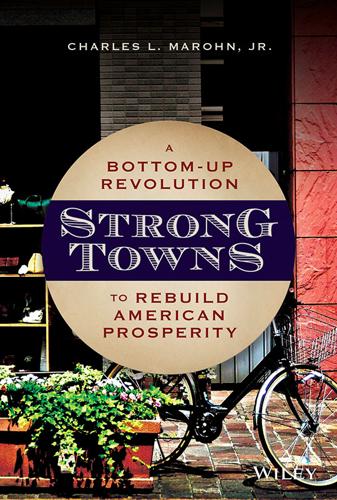
Strong Towns: A Bottom-Up Revolution to Rebuild American Prosperity
by
Charles L. Marohn, Jr.
Published 24 Sep 2019
Both of those actions only made us more dependent on the realization of that future growth. This is one reason why our economy has become a series of recurring crises and panics whenever growth starts to slow. And it’s why we’ve been more and more willing to cede power to those who could restore us to our unsustainable economic path. We’ve been through a savings and loan crisis and bailout, hedge fund failures that threatened the entire market, the runup in Internet stocks with the subsequent crash, and a housing bubble followed by a crisis in subprime lending followed by a re-inflating of the housing bubble. The economic tremors of overreach seem to be increasing in intensity.
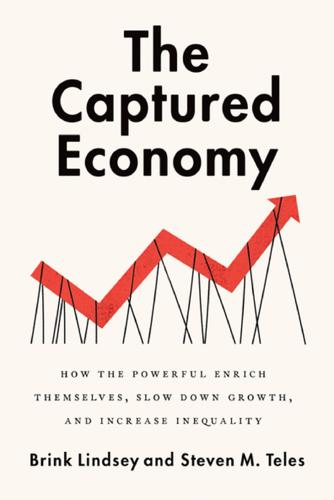
The Captured Economy: How the Powerful Enrich Themselves, Slow Down Growth, and Increase Inequality
by
Brink Lindsey
Published 12 Oct 2017
It’s clear enough that such thinking is fairly uncommon. Yes, when a financial institution is already insolvent or close to it, executives may try “hail Mary” investments because they face no downside risk. Their equity stakes have already been wiped out so they are effectively making one-way bets. Such behavior was seen during the savings-and-loan crisis, as regulatory forbearance allowed thrifts with negative net worth to stay in business and attempt to recoup their losses with increasingly desperate gambles. This is precisely the pattern of behavior that Charles Keating notoriously engaged in back in the 1980s—and which the “Keating Five” senators helped to protect.
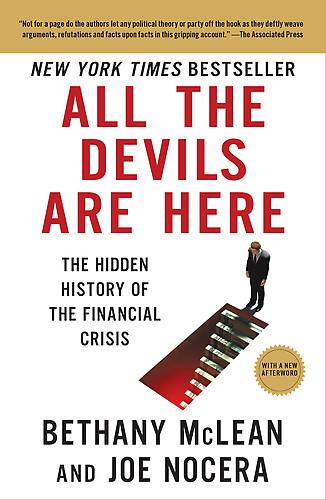
All the Devils Are Here
by
Bethany McLean
Published 19 Oct 2010
The second of two laws passed in the 1980s to aid the new mortgage-backed securities market by enabling such securities to be created without the risk of dire tax consequences. RMBS: Residential mortgage-backed securities. Securities backed by residential mortgages, rather than commercial mortgages. RTC: Resolution Trust Corporation. Government agency created to clean up the S&L crisis. SEC: Securities and Exchange Commission. Regulates securities firms, mutual funds, and other entities that trade stocks on behalf of investors. SMMEA: Secondary Mortgage Market Enhancement Act. The first of two laws passed in the 1980s to aid the new mortgage-backed securities market SIV: Structured investment vehicle.
…
But hard-money lenders had never offered first-lien mortgages, because the economics of a thirty-year fixed mortgage with a sizable down payment simply made no sense in that sector of the market. What changed was the law. Specifically, a series of laws passed in the early 1980s, intended to help the S&Ls get back on their feet, wound up having profound unintended consequences. (They also backfired spectacularly and helped create a second S&L crisis within a decade.) The first law, passed in 1980, was the Depository Institutions Deregulation and Monetary Control Act; among other things, it abolished state usury caps, which had long limited how much financial firms could charge on first-lien mortgages. It also erased the distinction between loans made to buy a house and loans, like home equity loans, that were secured by a house, which would prove critical to the subprime industry.
…
The federal government was behind it. Not in so many words, of course—and, to be fair, it is highly unlikely that many people in government truly understood what they were unleashing. But by the 1990s, government’s long-running encouragement of homeownership had morphed into a push for increased homeownership. Thanks to the second S&L crisis, the percentage of Americans who owned their own home had actually dropped, from a historic high of 65.6 percent in 1980 to 64.1 percent in 1991. In a country where homeownership was so highly valued, this was untenable. Thus it was that, early in his second term as president, Bill Clinton announced his National Homeownership Strategy.
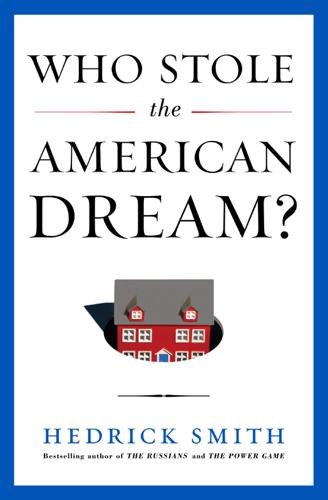
Who Stole the American Dream?
by
Hedrick Smith
Published 10 Sep 2012
The same happened to several pension funds for police and teachers in Detroit, Ontario, and Pompano Beach, Florida, which had invested in WaMu and were stuck with millions of shares of worthless WaMu common stock and bonds. Fraud but Almost No Prosecution What is striking about the housing crisis is that unlike the savings and loan scandal of the 1980s, where hundreds of bank officials and board members went to jail on felony charges, only relatively low-level officers have been criminally prosecuted in the housing bust. Only belatedly have a few high-level government officials even acknowledged massive deception. Late in 2010, Alan Greenspan conceded that fraud had played a central role in the crisis, though he did not say whether the Fed’s lax oversight had contributed.

The Price of Time: The Real Story of Interest
by
Edward Chancellor
Published 15 Aug 2022
Shortly afterwards, the Fed switched its attention from attempting to influence the growth of bank borrowing to directly targeting interest rates.fn3 Henceforth, monetary policy would remain focused on near-term inflation, while other financial imbalances – as reflected by current account deficits, credit growth and underwriting standards, private sector leverage, and asset price bubbles – elicited no response beyond the occasional attempt to pressurize the market into a correction. After the Savings & Loan crisis at the turn of the decade, when more than a thousand US mortgage banks, ‘thrifts’, failed, the Fed funds rate was cut to below 3 per cent, its lowest level for many years and roughly half the prevailing rate of (nominal) GDP growth. Greenspan wanted to help Wall Street out: cheap short-term borrowing enabled banks and hedge funds to mint profits by ‘riding the yield curve’.
…
D., 163–4 Röpke, Wilhelm, 97, 100, 299 Rothbard, Murray, 30 Rothermere, Lord, 93 Roubini, Nouriel, 207, 254 Rousseff, Dilma, 258 Rucellai, Giovanni, 21 Rueff, Jacques, 85, 91, 115‡, 251 Ruskin, John, 180–81 Sainsbury’s (British grocery chain), 160 Saint-Simon, Louis de Rouvroy, Duke of, 50–51, 52, 57 Samuelson, Paul, 246–7 Sarkozy, Nicolas, 292 Savills (property consultants), 174 saving: bonus of compound interest, 190; China’s savings glut, 268–9; as deferred gratification, 29, 188–90; and interest, xxiv, 44, 77, 188–93, 194–9, 205–6; interest as ‘wages of abstinence’, xxiv, xxv, 188–91; savings glut hypothesis, 115–16, 117, 126, 128–9, 132, 191, 252; Terborgh on, 125* savings & loan crisis, US, 111, 145 Say, Jean-Baptiste, 99 Sbrancia, Maria Belen, 290 Scandinavian banking crisis (early 1990s), 136 Schacht, Hjalmar, 82, 92, 312 Schäuble, Wolfgang, 299 Scheidel, Walter, 204 Schumpeter, Joseph, 16, 32, 46, 95, 218; Capitalism, Socialism and Democracy (1942), 126, 140, 296–7; ‘creative destruction’ idea, xx, 140–43, 153, 296–7; on deflation, 100; History of Economic Analysis, xviii; view of intellectuals, 297 Schwartz, Anna, 98, 99, 105, 116 Schwarzman, Steven, 207 Sears (department store), 169–70 secular stagnation, 77, 124–8, 131, 132–9, 151, 205–6 Sée, Henri Eugene, Modern Capitalism (1928), 28* Seneca the Younger, 20–21 Senior, Nassau, 188, 191 Senn, Martin, 193 shadow banks: in Canada, 174–5; in China, 266, 270, 282*, 283–5, 286; collapse in subprime crisis, 221, 283; illiquid products, 226–7; re-emergence after 2008 crisis, 221, 227, 231, 233; structured finance products, 116, 227, 283–5; Trust companies as precursors of, 84*; types of, 221; ‘Ultra-short’ bond exchange-traded funds (ETFs), 227 Shaftesbury, Anthony Ashley Cooper, Earl of, 27 ‘shareholder value’ philosophy, 163–6, 167, 170–71 Shaw, Edward, 286 Shaw, Leslie, 83, 83* Shiba Inu (cryptocurrency), 308 Shin, Hyun Song, 254, 263 Shiyan, Hubei province, 275 Silicon Valley, 148, 151, 173, 176, 204 Silver, Morris, 7, 11 Singer, Paul, 185, 246 Smith, Adam, 14, 174; on monopolies, 162, 298; view of interest, 27, 27*, 31, 183; on wealth, 181; The Wealth of Nations (1776), xxii, 27–8, 27*, 31 Smithers, Andrew, Productivity and the Bonus Culture (2019), 152* Smoot–Hawley Act (1930), 261 socialism, 188, 297, 298 Soddy, Frederick, 181, 242 Solon the ‘Lawgiver’, 9, 18 Solow, Bob, 128 Somary, Felix, 94–5, 308 Sombart, Werner, Modern Capitalism, 22* Soros, George, 148*, 273, 283 South Africa, 258 South America: loans/securities from, 77, 79–80; precious metals from, 49, 168; speculation in bonds from, 64, 65–6, 91; trade during Napoleonic Wars, 70 South Korea, 267 South Sea Bubble (1720), 62, 65*, 68, 69, 307 Soviet Union, 278 Spain, 144–5, 147, 168, 213, 253, 279; mortgage bonds (cédulas), 117 Special Purpose Acquisition Companies (SPACs), 307 speculative manias, xxiii; Borio on, 135; and cryptocurrencies, 177–9; ‘hyperbolic discounting’ during, 176–7; in period from 1630s to 1840s, 64–6, 67–72, 73, 74, 75–6, 77–8, 79–80; technology companies in post-crisis years, 176–9; before Wall Street Crash (1929), 91 see also Mississippi bubble Spencer, Grant, 177 Sraffa, Piero, 42 St Ambrose, 18 St Augustine, 18–19, 202 St Bonaventure, 19 Stable Money League/Association, 87, 96 Standard Oil, 157 state capitalism, 280, 284, 292–5, 297, 298 Stefanel (Italian clothing company), 147 Stein, Jeremy, 231, 233 Steuart, Sir James, 53, 273 ‘sticky prices’ theory, 87* Strong, Benjamin, 82–3, 86–8, 90*, 92, 93, 98, 112 Stuckey’s Bank, 63, 66–7 subprime mortgage crisis, xxii, 114, 116, 117–18, 131, 211, 292; produces ‘dash for cash’, 227; unwinding of carry trades during, 221, 227 Suetonius, The Twelve Caesars, 12 Suez Canal, 78 Sumerian civilization, 4, 6, 8, 15 Summers, Larry, 124–5, 127, 129, 185, 230, 230*, 235, 302 Sumner, William Graham, ‘Forgotten Man’, xx, xxii, 198 Susa, Henry of, 25 Svensson, Lars, 247 Sweden, 174, 241, 242, 244, 245, 247, 294 Sweezy, Paul, 156 Swiss National Bank, 172–3, 293–4 Switzerland, 172, 174, 226, 233, 241, 244, 245 Sydney (Australia), 175 Sylla, Richard, 4, 11, 68, 109 Tacitus, 20–21 Tasker, Peter, 271 Tawney, R.H., 201 tax structures, 164; offshore tax havens, 210 Taylor, John, 116–17, 129, 252 Tencent, 283 Tencin, Claudine Alexandrine Guérin, Madame de, 51 Terborgh, George, 125–6, 127 Tesla, 176–7 Theranos, 149 Thiel, Peter, 263 Third Avenue (investment company), 227–8 Thornton, Daniel, 192 Thornton, Henry, 41–2, 66*, 70, 75 Thornton, Henry Sykes, 66* Tiberius, Roman Emperor, 12 time, concept of, xviii; and act of saving, 188–90; canonical ‘hours’, 21; and Lewis Carroll, 309; in era of ultra-low interest rates, 59, 177; Franklin on, xviii, 22, 28; and Hayek, 32; interest as ‘time value of money’, xxiv, xxv–xxvi, 10, 14–15, 16, 20, 22, 26–7, 28–32; Lord King’s ‘paradox of policy’, 194, 230*; the Marshmallow Test, 29, 189; and medieval scholars, 19–20; Renaissance writings on, 21; secularization of, 21–2; speculators’ misunderstanding of, 59; and thought in ancient world, 20–21; time as individual’s possession, 20, 21, 25; ‘time in production’, xxiv, 14–15, 16, 22, 95, 95†, 141; ‘time preference’ theory, xxiv*, 28–32, 42, 95, 188–9; Thomas Wilson’s ideas, 26–7, 28, 30 Time-Warner, 167 Tooke, Thomas, 69 Toporowski, Jan, 167 Torrens, Robert, 66 Toys ‘R’ Us, 169 trade and commerce: in ancient world, 6, 7–8, 12, 14, 15; Atlantic trade, 59; business partnerships (commenda, societas), 26; commercial classes/interests, 35, 36–7, 38–40, 41, 43, 44, 66–7; commercial importance of time, xviii, 15–16, 21, 22; emergence of modern trade cycle, 62–4; expansion of in Middle Ages, 19, 21–3, 25–6; international trade, 6, 15, 23, 24, 59, 252–3, 261–2; and Italian Renaissance, 21; in medieval Italy, 21–3; mercantile/shipping loans, 6, 12, 14, 22–3, 26, 219 TransAmerica Life Insurance, 199* Trichet, Jean-Claude, 239 Trollope, Anthony, The Way We Live Now, 73 Truman, Harry, 84 The Truman Show (Peter Weir film, 1998), 185–7 Trump, Donald, 185, 261, 262, 291–2, 299, 304, 310 trusts/monopolies: in early twentieth century Europe, 159; Lenin on, 159–60; merger ‘tsunami’ after 2008 crisis, 160–63, 161*, 168–70, 182–3, 237, 298; ‘platform companies’, 161; Adam Smith on, 162, 298; in US robber baron era, 156, 157–9, 203 tulip mania (1630s), 68 Tunisia, 255 Turgot, Anne-Robert Jacques, 15, 28–9, 30, 218 Turkey, xxiii, 252, 258–60, 263 Turkmenistan, 262 Turner, Adair, 292 TXU (energy company), 162 Uber, 149, 150 ‘unicorn’ start-up companies, 148–50, 153, 155, 173, 176–7 Union Pacific Railroad, 157, 158 United States: as bubble economy, 184–7; credit expansion of 1920s, 87–91, 92–4, 96–8, 112, 203; Democrats’ Green New Deal policy, 302; economic expansion (1929–41), 143; economy in Bretton Woods era, 291, 302; financial crisis (1873), 157; foreign securities/loans in 1920s, 91; inflation in 1970s, 108–9; Knickerbocker Panic (1907), 83–4; large-scale immigration into, 78; loan of farm animals in, 4; long-term interest rates (1945–2021), 134; loss of manufacturing jobs to China, 261*, 261; low economic vitality in post-crisis decade, 124, 150–53, 191; monetary policy in 1900s, 83–4, 83*; post-Second World War recovery, 126; public debt today, 291–2, 291*; recessions of early 1980s, 109–10, 151; reversal of global capital flows (late-1920s), 93; robber baron era, 156–9, 203; shift from manufacturing towards services, 167–8, 182; and zombification, 146, 152–3, 155 see also Federal Reserve, US United States Steel Corporation, 157–8 Universities Superannuation Scheme, UK, 196 Useless Ethereum Token, 178 usury: attacked from left and right, 17; attitudes to in ancient world, 17–18, 19, 20–21, 219; in Britain, 24, 26–7, 34, 40, 42, 65‡, 65; Church law forbids, 18–19, 23–4; definitions in Elizabethan era, 26–7; etymology of word, 5; Galiani on, 218–19, 220, 221; and Jews, 18; Marx on, 16, 200–201; medieval Church acknowledges risk, 25–6; Old Testament restrictions on, 17; Proudhon-Bastiat debate on, xvii–xix, xxi, xxii, xxv, 9; in Renaissance world, 22–3; scholastic attack on, 18–20, 23–4, 25 Valeant Pharmaceuticals, 161, 168–9 Vancouver, 175 Veblen, Thorstein, Theory of Business Enterprise (1904), 158, 159, 166 Velde, François, 58*, 59 Venice, 22, 23 Vinci, Leonardo da, Salvator Mundi, 208–9 VIX index, 228–9, 254 La Voix du Peuple, xvii–xix volatility, 153, 228–30, 233, 234, 254, 304, 305 Volcker, Paul, 108–9, 121, 145, 184, 240 Voltaire, 57 Wainwright, Oliver, 209 Waldman, Steve, 206 Waldorf Astoria, New York, 285–6 Wall Street Crash (October 1929): Fed’s response to, 98, 100, 101, 108; Fisher and Keynes fail to foresee, 94–5; Hayek’s interpretation of, 101, 105; low real rates in 1920s USA, 87–91, 89, 92–4, 96–8, 203; low/stable inflation at time of, 134; monetarist view of, 98–9, 101, 105, 108; predictions/warnings of, 93–5, 96, 101, 105, 308; reversal of international capital flows (late-1920s), 93, 93*, 261 WallStreetBets, 307, 309 Walpole, Horace, 62–3 Warburg, Paul, 94 Warsh, Kevin, 228 wealth: ‘Buddenbrooks effect’, 216; conspicuous consumption by mega-rich, 54–5, 208–10, 212; definitions of, 179–82, 216; elite displays as signs of inequality, 209–10, 212; virtual wealth bubbles, 179, 180, 181–2, 185, 193–5, 206, 215, 216–17, 217†, 229–30, 237; wealth illusion, 193–5, 198 Welch, Jack, 170, 171 Wells, H.
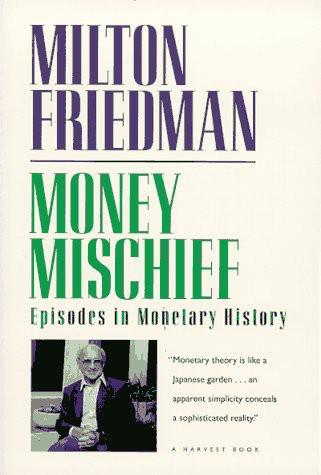
Money Mischief: Episodes in Monetary History
by
Milton Friedman
Published 1 Jan 1992
Such deregulation as has occurred came too late and has been too limited to prevent a sharp reduction in the role of banks, as traditionally defined, in the U.S. financial system as a whole. Such banks now account for a far smaller share of the credit market than they did earlier. Their place has been taken by such non-banks as Sears Roebuck, American Express, Merrill Lynch, and so on. One particularly notable effect of the inflation and subsequent deregulation was the savings and loan crisis, which is imposing an extremely heavy cost on the federal insurance of deposits at savings and loans, and hence on taxpayers, and is threatening the solvency of the Federal Deposit Insurance Corporation.* Irregular inflation and high and variable interest rates have produced similar developments in other countries.
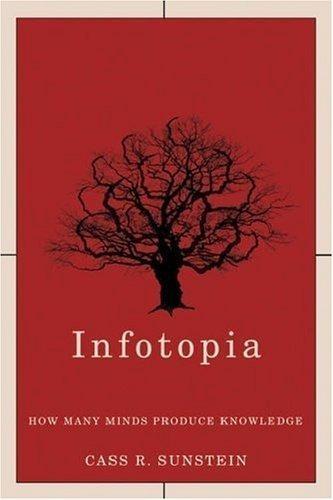
Infotopia: How Many Minds Produce Knowledge
by
Cass R. Sunstein
Published 23 Aug 2006
Note, however, that Hewlett Packard produced good predictions even in a thin market. Chen and Plott, Information Aggregation Mechanisms, 5, 12. 54. See Abramowicz, “Prediction Markets, Administrative Decisionmaking, and Predictive Cost-Benefit Analysis,” 990–92. 55. See ibid., 987–90. 56. Most dramatically, they “might have led to earlier recognition of the savings and loans crisis in the 1980s.” Ibid., 988. 57. See Hahn and Tetlock, Harnessing the Power of Information, 3–6. 58. Ibid. 59. See Erik Snowberg et al., “Information (In)efficiency in Prediction Markets,” in Information Efficiency in Financial and Betting Markets, ed. Leighton Vaughan Williams (Cambridge, UK: Cambridge University Press, 2005), 374. 60.

How Boards Work: And How They Can Work Better in a Chaotic World
by
Dambisa Moyo
Published 3 May 2021
CNBC Make It, August 14, 2018. www.cnbc.com/2018/08/14/fewer-than-half-of-young-americans-are-positive-about-capitalism.html. Elson, Charles M. “What’s Wrong with Executive Compensation?” Harvard Business Review, January 2003. https://hbr.org/2003/01/whats-wrong-with-executive-compensation. Ely, Bert. “Savings and Loan Crisis.” In Concise Encyclopedia of Economics. Library of Economics and Liberty, 2002. www.econlib.org/library/Enc1/SavingsandLoanCrisis.html. Embankment Project for Inclusive Capitalism. New York: Coalition for Inclusive Capitalism, 2018. www.epic-value.com/#report. Enriquez, Edan. “When You Empower a Girl, You Empower a Community.”

Broken Markets: A User's Guide to the Post-Finance Economy
by
Kevin Mellyn
Published 18 Jun 2012
Returns on capital could be boosted by increasing the leverage in the balance sheet by borrowing more and buying back shares, but Basel regulatory capital set a limit to all that. However, compared to historical levels, banks became leveraged to the hilt through creative capital structures. Growth was a bigger challenge as long as barriers to interstate bankers and mergers were in place. In the wake of the S&L crisis, however, a broad swath of states and localities found local banking systems poisoned by bad loans or shut down by the Federal Deposit Insurance Corporation (FDIC).The political power of local banking franchises that was once used in Washington and state capitals to keep big competitors out swung into reverse.
…
Falling house prices made an increasing number of homes worth less than the loans involved, and rising defaults and foreclosures drove down prices further. This is how bubbles deflate. Had the US banks held the mortgages on their own books, as they do in most markets, only the domestic market would have tanked, as it did in the S&L crisis of the 1980s. However, the financial sausage factory had turned the bulk of them into securities held by investors all over the world, including banks, insurance companies, and the giant US governmentsponsored enterprises whose straight debt was also held by banks and central banks worldwide. Individual market players had not only to worry about what time bombs might be in their own portfolios—and they often had many uncoordinated trading and investment businesses around the world—but what other banks they dealt with in overnight money market lending might have in theirs.
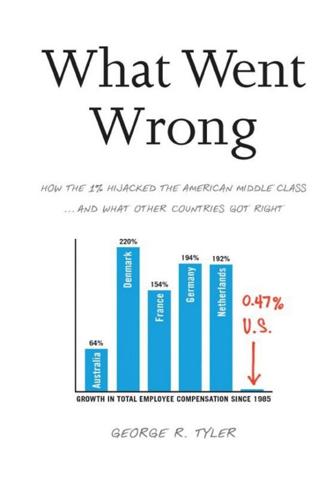
What Went Wrong: How the 1% Hijacked the American Middle Class . . . And What Other Countries Got Right
by
George R. Tyler
Published 15 Jul 2013
As has long been recognized by most economists and by the psychology profession, people chronically suffer from irrationalities including: the confirmation bias (we give more credence to information that reinforces our viewpoint); the availability bias (we act inordinately on the latest if not necessarily the most accurate information); the herd instinct; thinking the future will be like the present; or overrating our abilities on a broad range of activities.38 None of the key assumptions undergirding Reaganomics are valid in the real world, and the irrational behavior that Smith and Keynes warned about is omnipresent. We know this deregulation spasm turned out badly just like the Gilded Age before it, and the signals were evident even as President Reagan’s term ended, with the Savings and Loan crisis erupting and the 1987 market crash. Here is how Financial Times columnist John Kay put it: “Much of what … causes instability in the global economy results from the failure of these assumptions. Herd behavior, asset mispricing, and grossly imperfect information have led us to where we are today.”39 Columbia University economist Joseph Stiglitz, the 2001 recipient of the Nobel prize in economics, noted in September 2007, that the self-regulation policies of Reaganomics: “were never based on a solid empirical and theoretical foundation, and even as these policies were being pushed, academic economists were explaining the limitations of markets—for instance, whenever information is imperfect, which is to say always.”40 Deregulation flourished after 1980 and, unsurprisingly, the consequence has been serial speculative credit bubbles in a reprise of the Roaring Twenties or eighteenth-century London, Paris, or Edinburgh.
…
about, 25, 35–37, 65, 105, 146, 149 Adam Smith was the antithesis of, 111 Alan Greenspan and, 36, 81–82, 85, 119, 219, 387 Atlas Shrugged, 35 The Fountainhead, 35 Milton Friedman and 102–4, 205 Pearlstein, Steven (Washington Post journalist) on, 36 Phillips-Fein, Kim on, 35 philosophy of narcissism, self-absorption and pseudoscientific social Darwinism, 37, 40, 102, 104, 111 Reagan and Rand’s philosophy, 35–36, 66 Reaganomics and, 35–37, 65, 104–5, 149 Rappaport, Alfred (professor), 101 Rauner, Felix (University of Bremen), 334 Rawls, John, 267, 289, 401 Rayment, Paul, 64 Reagan, Ronald (President) 33, 37 big government threatening, 181–84 budget spending and deficits, 185, 204, 207–8 deregulation and donations from executives, 32 Greenspan, Alan, 35, 81 national debt, tripled the, 42, 207, 211 savings and Loan crisis, 29 wildcat banker as, 200, 212 Reagan era Adam Smith’s capitalism, rejection of, 64, 104, 149 attitudes towards employees and investors, 115–21 Australia, rejection of, 58 borrowing and spending during, 184–6, 201–06 class warfare, 272–73 corporate philanthropy rejected by, 105 corporate pay-for-performance, collapse of, 135–37 credit bubble, leverage during, 41, 42, 105, 210–211, 215, 217–9 greatest credit bubble in history, 201 debt crisis created by, 210–11 deferred prosecution of, 88–89 deindustrialization, 347, 381–400 deregulation of electricity generation and Enron, 72 dysfunctional corporate governance, 27–28, 127–32, 398–400 economic mobility decline, 291–96 employee protection against arbitrary dismissal, 419 financialization of America, 77, 383–86 low-wage model in America fails in Europe, 246–50 manufacturing jobs and lost multiplier impacts, 389–92 monetary policy manipulated for political gain, 219–21 myths of Reaganomics, 225–42, 288–91 pseudoscientific rationale, 126 subprime home mortgages, 68–69 supply-side economics, 225–26 taxes alternative minimum tax, 194 lower on corporations, 276 payroll tax, 195–96 relaxed enforcement of, 275–76 tax structure, flat, 190–4 trickle-down economics, 10 Wall Street fraud, failure to punish, 87–88 Reaganomics.
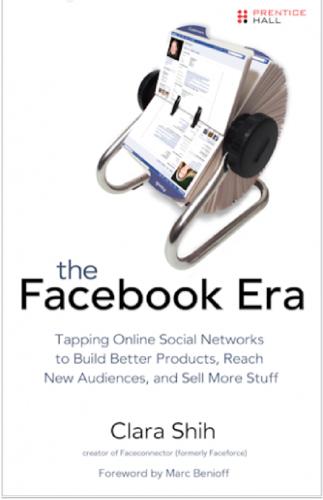
The Facebook era: tapping online social networks to build better products, reach new audiences, and sell more stuff
by
Clara Shih
Published 30 Apr 2009
Jean-Louis Bravard, who was a banker at the time and later became the company’s first CIO in 1991, recalls how PCs enabled new transactions and financial products that were previously not fathomable. There were no IT processes or team in place, so Bravard purchased a PC with his personal credit card and expensed it. • Modeling complex transactions. The economic downturn triggered by the savings and loan crisis left many clients in precarious financial situations that were difficult to grasp. One particular borrower who was at risk of defaulting had an especially complicated mix of short-term and long-term liabilities. Using Lotus 1-2-3 spreadsheet software on his PC, Bravard ran a simulation on what market conditions would be necessary for the client to remain From the Library of Kerri Ross C h a p te r 1 Th e Fo u r t h R e vo l u t i o n 15 solvent.
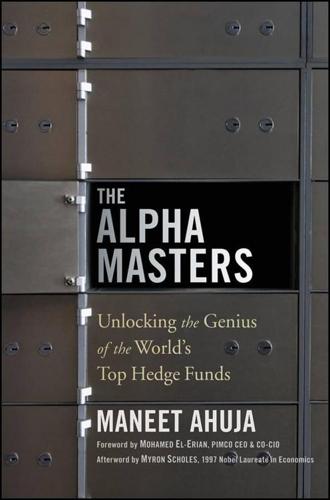
The Alpha Masters: Unlocking the Genius of the World's Top Hedge Funds
by
Maneet Ahuja
,
Myron Scholes
and
Mohamed El-Erian
Published 29 May 2012
Pulling in the Profits Tepper’s instincts were impeccable. He continued to pull in millions for the firm and was up for partner in 1988 and then again in 1990. By 1990, at the age of 33, being passed over for partner was very upsetting. “I kept making the firm so much money.” Case in point: the 1990 savings and loan crisis. Tepper bought the holding company paper of troubled financial institutions like Republic Bank and MCorp. He understood that even though the failing banks were being seized by the government and reopened under new owners, the bank holding companies were in great shape, with billions of dollars in cash and other nonbranch assets.
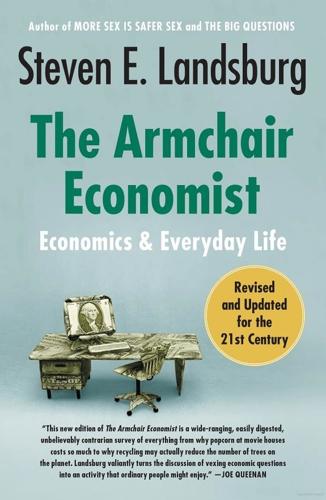
The Armchair Economist: Economics and Everyday Life
by
Steven E. Landsburg
Published 1 May 2012
The reasoning that led us to prefer campaign ads over Al and Peg has changed, but whatever reasoning led us The Policy Vice 143 to want to tax the networks $1 million is presumably still intact. Why would we want that decision to depend on something as irrelevant as which programming we prefer to see? When columnists suggest that the federal government, in possession of large parcels of real estate after the savings and loan crisis, should sell only limited quantities to maintain a high price, economists are bemused. A high price transfers income from citizens to the government. But the government has never lacked for mechanisms to accomplish such transfers. Why adopt a new mechanism with the primary effect of idling valuable resources?

Losing Control: The Emerging Threats to Western Prosperity
by
Stephen D. King
Published 14 Jun 2010
On 31 October 1989, the New York Times reported: The Rockefeller Group, the owner of Rockefeller Center, Radio City Music Hall and other mid-Manhattan office buildings, said yesterday that it had sold control of the company to Mitsubishi Estate Company of Tokyo, one of the world’s biggest real estate developers … The proceeds will go into the family trusts established by John D. Rockefeller Jr. in 1934 and be used to diversify the family’s holdings. At the time, the sale of the Rockefeller Center was seen as the beginning of the end for the American way. Over the previous ten years, as rustbelt industries had declined and as the Savings and Loans crisis had swollen, the US economy seemed to have lost direction while Japan, meanwhile, was enjoying a period of extraordinary success. As a symbol of American decline, the Rockefeller Center’s transfer to Japanese ownership was hard to beat. Six years later, on 12 September 1995, the New York Times offered a new story: The Mitsubishi Estate Company of Japan plans to walk away from its almost $2billion investment in Rockefeller Center … [its] decision … is the most striking in a string of recent retreats from the trophy properties stretching from New York to Honolulu that Japanese companies acquired during a real estate binge in the 1980s.

Twilight of the Elites: America After Meritocracy
by
Chris Hayes
Published 11 Jun 2012
I first heard of Gresham’s law in this context from William Black, a lawyer, an economist, and a criminologist, who is an expert on precisely this dynamic. Black’s area of expertise is white-collar crime and what he calls “criminogenic environments,” institutional settings that produce systemic rule-breaking. Black had an opportunity to study financial fraud up close early in his career, during the savings and loan crisis, a financial implosion the contours of which years later look startlingly familiar: a major real-estate bubble, this one regionally based in Texas, and a massive escalation in loan volume and leverage, which went hand in hand with a systematic degradation of underwriting standards. Then: a huge crash, a panicked crisis, and a federal bailout.
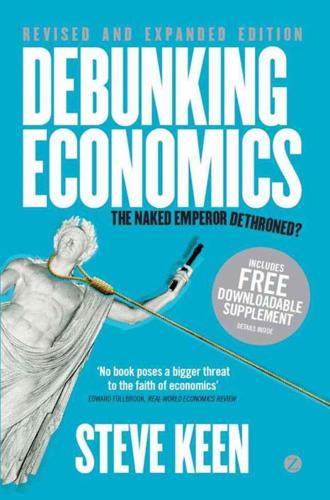
Debunking Economics - Revised, Expanded and Integrated Edition: The Naked Emperor Dethroned?
by
Steve Keen
Published 21 Sep 2011
In Chapter 12, I make the case that were it not for the extreme rescue efforts he initiated in 1987, the stock market crash of that year would have precipitated a serious recession, but one far milder than that we are now experiencing. Instead, that rescue and the many others in the crises that followed – the Savings and Loans crisis, the Long Term Capital Management crisis, and finally the DotCom crisis – encouraged the speculative excesses of Wall Street to continue. The ultimate result was the subprime crisis, the fallout from which was so big that a further rescue was impossible. The key indicator here – and the key reason that I and the others Bezemer identified as having predicted the crisis could tell that one was coming – is the ratio of private debt to national income (known as GDP, which stands for ‘gross domestic product’).
…
planetary behavior, theory of pleasure, pursuit of Poincaré, Henri policy ineffectiveness proposition politicians, influenced by neoclassical economics polynomialism Ponzi finance Popper, Karl positive economics post-Keynesianism potato famine in Ireland Power Law model Prescott, Edward price; changing, impact on consumer demand; controls imposed on; determination of; positive; theory of (‘additive’) pricing, of financial assets printing of money probability product rule production; Austrian theory of; economists’ assumptions about; neoclassical theory of; reswitching of; with a surplus; with explicit labor; with no surplus productivity: diminishing, causes rising price; does not determine wages; falls as output rises profit; definition of; falling tendency of; Marxian calculation of; maximization of (short-run); normal; rate of (determination of; falling); source of; super-normal proof by contradiction Property Income Limited Leverage (PILL) proto-energetics psychic income Pythagorean mathematics QE1 qualitative easing quantum uncertainty Quesnay, François Quesnay Economic Dynamics (QED) random numbers Rapping, Leonard rational behavior rational expectation see expectation, rational rational numbers rational private behavior rationality; definition of; in economics realism recession reductionism; fallacy of; reconstituted; strong Regulation Q regulatory capture rent; theory of Repast program representative agent passim Reserve Requirement reswitching returns to scale Ricardo, David; Marx’s critique of; Principles of Political Economy and Taxation; theory of rent risk; and return; measurement of; risk-averse behavior Robbins, L. Robinson, Joan Rodbertus, J. K. Roosevelt, Franklin D. Rothbard, Murray Roubini, Nouriel roundaboutness Russia Samuelson, Paul; ‘social indifference curves’; Foundation of Economic Analysis Sargent, Thomas Savings and Loans crisis Say, Jean Baptiste Say’s Law; Marx’s critique of scarcity Schiff, Peter Schrödinger’s cat Schumpeter, J. A. Sciabarra, Chris scientific realism second-order linear differential equations self-employment self-interest self-organization of systems Shadowstats.com Shaikh, Anwar, ‘Neo-Ricardian economics’ Sharpe, W.
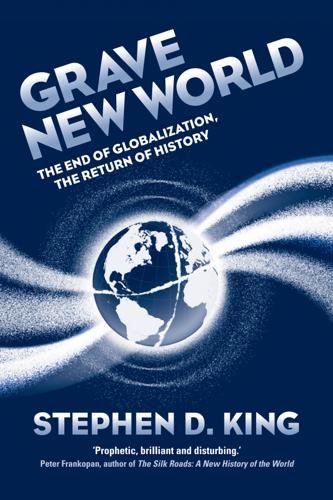
Grave New World: The End of Globalization, the Return of History
by
Stephen D. King
Published 22 May 2017
(i), (ii)n1 Roosevelt, Theodore (i), (ii) Rothwell, Jonathan (i) Rousseff, Dilma (i) Royal Navy (i), (ii) Rumsfeld, Donald (i) Russia (i) see also Soviet Union 19th century (i), (ii) 20th century (i) Cold War in Africa (i) debt default (i) EU and (i) Eurasian Economic Union (i) George Bernard Shaw on (i) Germany and (i) military spending (i) Ottomans and (i) Persia defeated (i) Peter the Great (i) Putin becomes president (i) railways (i) Syria and (i), (ii) Ukraine and (i) Russo-Japanese War 1904–05 (i), (ii) S&P 500 index (i) Saddam Hussein (i), (ii), (iii) Safavid dynasty (i) Sahara (i) Salmond, Alex (i) Sanders, Bernie (i), (ii), (iii), (iv) Sarajevo (i) Sardinia (i) Saudi Arabia Iran and (i), (ii), (iii) military spending (i) petrodollars (i) Sunnis (i) savings and loans crisis (i) Saxony (i) Scarborough Shoal (i) Schatzalp (i) Schengen Agreement (i), (ii), (iii) Schuman Declaration (i) Schwab, Klaus (i) Scotland (i), (ii) Scottish National Party (i), (ii) Second World War Coca-Cola in (i) economic progress following (i) Germany implodes (i) living standards and (i), (ii) US and (i), (ii), (iii) US and Soviet Union after (i) US, Britain and (i) World Bank and (i) Security Council (UN) (i), (ii), (iii), (iv) see also UN self-determination (i), (ii) Seljuk Turks (i) Senate (US) (i) Senkaku Islands (i) Serbia (i) Sevastopol (i) Seville Cathedral (i), (ii) Shanghai (i), (ii), (iii), (iv) Shanghai Cooperation Organisation (SCO) (i), (ii), (iii) SHAPE (Supreme Headquarters Allied Powers Europe) (i) Sharia law (i) Shaw, George Bernard (i), (ii), (iii) Shi’as (i), (ii) Shimoda, Treaty of (i) Sikhs (i), (ii) Silk Road (i), (ii), (iii), (iv), (v) Singapore Asian Infrastructure Investment Bank (i) British in (i) IMF and World Bank (i) Lee Kuan Yew (i) mathematical abilities (i) TPP (i) Western living standards (i) Skype (i) slavery (i), (ii) Slavs (i) Slovakia (i) Slovenia (i) Smith, Adam (i), (ii), (iii) Smoot–Hawley tariff (i), (ii) Snowden, Edward (i) social media (i), (ii) social mobility (i) social welfare (i) socialism (i), (ii), (iii) Somalia (i), (ii) South China Sea (i) South Korea (i), (ii), (iii), (iv), (v) South Sudan (i), (ii) Southern Kurils (i) Soviet Union see also Russia American suspicions of (i) collapse of (i), (ii), (iii), (iv) Eastern Europe freed from (i), (ii), (iii) invades Afghanistan (i), (ii) Korean War and (i) League of Nations and (i) living standards (i) perceived threat to US (i) post-Second World War balance of power (i) Steffens impressed by (i) Spain Andalucía (i) Battle of Trafalgar (i) EU deficits (i) joins EU (i) living standards increase (i) Spaniards head north for work (i) Spanish speakers in US (i) US military presence (i) Spanish Succession, War of the (i) Speakers’ Corner (i) Special Drawing Rights (SDRs) (i) Spice Islands (i) ‘Spirit of Davos’ (i) Spirit of the Laws, The (Montesquieu) (i) Spratly Islands (i) St Petersburg (i) Stability and Growth Pact (i) Stalin, Joseph (i) Stanley, H.M.

When the Money Runs Out: The End of Western Affluence
by
Stephen D. King
Published 17 Jun 2013
Foreign creditors would have lost out – one reason why, before the advent of the single currency, Germans used to demand a significant risk premium for lending to countries in Southern Europe. With fixed currencies, the answer, surely, is to allow an orderly default or, more prosaically, a debt restructuring. One possibility would be to take lessons from the 1980s Savings and Loan crisis in the US, where bad debts were ultimately bundled up into the Resolution Trust Corporation. Admittedly, the establishment of a eurozone ‘bad bank’ would leave eurozone taxpayers to pick up the bill. That, however, would be small price to pay if, as a result, nations within the single currency were then able to thrive: far better to have orderly losses than a catastrophic collapse.
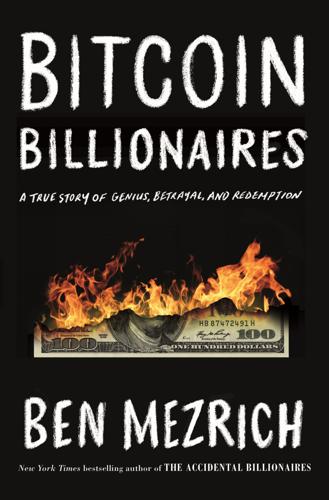
Bitcoin Billionaires: A True Story of Genius, Betrayal, and Redemption
by
Ben Mezrich
Published 20 May 2019
The entire arena seemed to lurch under his feet as the DJ on the stage hit keys on his computer, launching off an artillery battalion of synthetic drumbeats. If this could happen in an EU country, what prevented it from happening anywhere else? This was precedent. Tyler was too young to remember the savings and loan crisis in 1987, but they had lived through the dot-com bubble in 1999, and the recent credit crisis, just four years earlier, in 2008. He believed that what was happening in Cyprus was exactly the sort of financial trauma that would open people’s eyes to just how safe their money actually was—or wasn’t.

The Man Who Knew: The Life and Times of Alan Greenspan
by
Sebastian Mallaby
Published 10 Oct 2016
He would show up occasionally at New York lunches given by the first generation of hedge funds, many of which had borrowed money to load up on go-go stocks with “data” or “onics” in their names. When the stock market began to tumble soon after Nixon’s inauguration, many of his lunch companions lost their shirts—go-go was gone, and the 1960s were over. On his trips out to the West Coast for the board meetings of Trans-World, Greenspan could see that the savings-and-loan industry faced a crisis, too. As interest rates rose, savings and loan associations (S&Ls) needed to compete with higher-yielding bonds in order to attract deposits. But they were prohibited from paying depositors more—like banks, which faced so-called Regulation Q caps on the amount of interest they could pay, S&Ls were hamstrung by the government.3 As a result, the volume of deposits at the S&Ls began to tumble, landing lenders like Trans-World in an impossible bind.4 They had extended long-term mortgages to home buyers, and could not recoup their money until the mortgages matured.
…
Financial System: Hearings Before the Committee on Banking, Finance, and Urban Affairs (U.S. House of Representatives, 1989), http://babel.hathitrust.org/cgi/pt?id=mdp.39015019122913;view=1up;seq=1. 34. Robert D. Hershey Jr., “Bush Cautious on Anti-Inflation Steps,” New York Times, January 26, 1989. 35. Barbara Rudolph, “The Savings and Loan Crisis: Finally, the Bill Has Come Due,” Time, February 20, 1989. 36. Greenspan’s presence on the stage was captured on video. See Savings and Loan Proposal, News Conference (White House, Washington D.C., United States, 1989), http://c-spanvideo.org/program/LoanPr. 37. The governor was Martha Seger. 38.
…
One governor noted that raising interest rates would have the effect of “taking some of the modestly solvent and profitable thrifts and throwing them over on the other pile.”37 A regional Fed president chimed in that an increase in borrowing costs of just half a percent would saddle S&Ls with additional losses of about $1 billion—losses that taxpayers would be forced to swallow.38 Moreover, if tighter monetary policy led to a recession, newly unemployed homeowners would default on their mortgages, compounding the S&Ls’ problems.39 Black Monday had been scary because it had happened so fast, but the remedy had proved relatively simple. By contrast, the slow-burning S&L mess could be far more expensive to taxpayers. If the S&L crisis presented one obstacle to higher interest rates, the Fed was also hamstrung by its own internal confusion. Paul Volcker’s early tenure had coincided with the ascendancy of monetarism, which simplified and clarified the FOMC’s mission—to deliver stable growth of money. Now, in the Greenspan era, the Fed found itself in a doctrinal no-man’s-land.40 Officially, the Fed still operated in a monetarist fashion: it steered the economy by tinkering with the supply of credit.
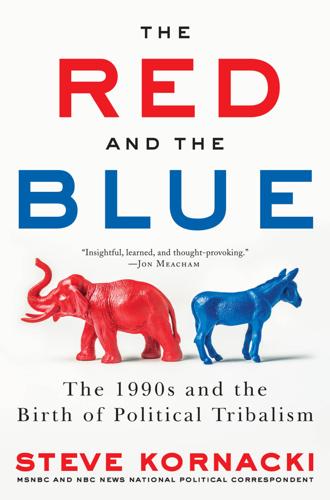
The Red and the Blue: The 1990s and the Birth of Political Tribalism
by
Steve Kornacki
Published 1 Oct 2018
Against this backdrop, the news out of Washington could be enraging. Take the congressional pay raise, a 23 percent hike jammed through the Senate the previous summer in a surprise late-night vote, a surprise jointly sprung by both party leaders. “A SWIFT, STEALTHY COUP,” the Washington Post’s headline called it. There was the savings and loan crisis, too, in which shoddy regulation, risky junk bond investments, and the collapse of the real estate market in the late 1980s led to the failure of more than fifteen hundred thrifts—or about half the total of all S&Ls in America. This, in turn, bankrupted the federal agency that insured S&Ls, and when Washington stepped in with a $124 billion bailout, there were shrieks from Americans of all political stripes.
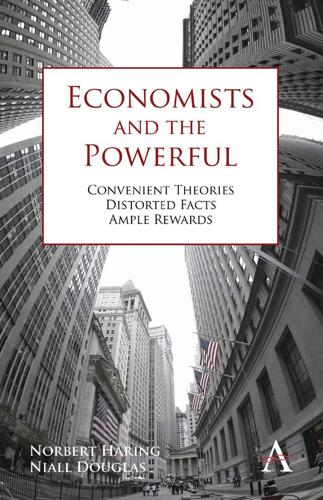
Economists and the Powerful
by
Norbert Haring
,
Norbert H. Ring
and
Niall Douglas
Published 30 Sep 2012
If they were careful, they have not done anything for which they could go to jail (Black 2010). This may sound like an ex post description of what was going on in the run-up to the subprime crisis. It is noteworthy, though, that Black developed his theory of control fraud earlier, based on the evidence of the savings and loan crisis of the mid-1990s, which had followed a similar pattern. They made a killing Did it work for the bankers and for the regulators who helped them fend off any impediments to their dangerous business practices? It did indeed. The CEO of failed subprime lender Washington Mutual, 96 ECONOMISTS AND THE POWERFUL Kerry Killinger, reportedly extracted US$100 million before his company folded.
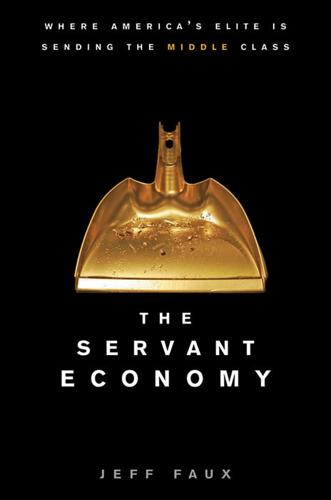
Servant Economy: Where America's Elite Is Sending the Middle Class
by
Jeff Faux
Published 16 May 2012
Roosevelt, Theodore Rose, Stephen Rothkopf, David Rothstein, Richard Rubin, Robert Bill Clinton and financial meltdown of 2008 and free trade policy and Geithner and Glass-Steagall Act repeal and Summers and TARP and U.S. politics and Sachs, Lee Salomon Brothers Samuelson, Paul Sanders, Bernie Santa Clara County v. Southern Pacific Railroad Co., savings and loan crisis Scandinavia Schaller, Jessamyn Schmitt, John Schultze, Charles Schumacher, E. F. Schwarzenegger, Arnold Securities and Exchange Commission servant economy effect on economy free trade policy and job creation military and need for personal services and New Deal protections and standard of living and two-tiered work force and value-added intermediaries wages and Shadow Elite (Wedel) Sherman Anti-Trust Act Shiller, Robert Shilling, A.
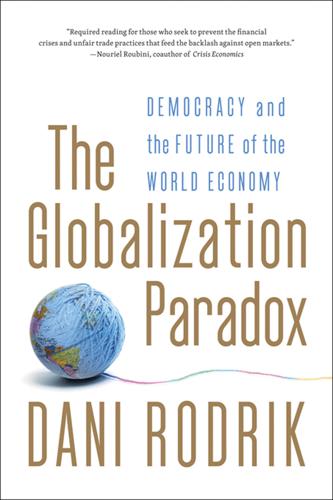
The Globalization Paradox: Democracy and the Future of the World Economy
by
Dani Rodrik
Published 23 Dec 2010
But in advanced economies, the challenge was obscured by a half century lull of financial stability. Before the Great Depression, the United States had been hit by major banking crises every fifteen or twenty years or so. Nothing comparable took place in the subsequent fifty years until the savings and loan crisis of the 1980s.21 This era of financial stability owed its existence to an uneasy accommodation between Main Street and Wall Street—between the real and financial sectors—following long centuries of experimentation. The quid pro quo took a simple form: regulation in exchange for freedom to operate.

Fool's Gold: How the Bold Dream of a Small Tribe at J.P. Morgan Was Corrupted by Wall Street Greed and Unleashed a Catastrophe
by
Gillian Tett
Published 11 May 2009
“Extended periods of low concern about credit risk have invariably been followed by reversal, with an attendant fall in the prices of risky assets,” Greenspan noted in 2005. However, Bernanke and his predecessor also hoped that any “attendant price fall” would not lead to a financial shock, because the blow would be softened by financial innovation. Back in the 1980s, the savings and loan crisis had devastated some banks because they were not able to shed credit risk. By 2007, though, the dominant creed at the Washington Fed and US Treasury was that credit risk had been so widely dispersed, via credit derivatives and CDOs, that any blows would be absorbed. The innovation evangelists seemed to have history on their side.

The End of Wall Street
by
Roger Lowenstein
Published 15 Jan 2010
Ranieri focused on investment-grade mortgages, and carved them up in such a way as to appeal to institutions that previously invested in corporate bonds. Wall Street had suddenly met Main Street. Mortgage banks obtained an additional source of capital, meaning they did not have to hold as many of their loans for the full thirty years. Though this made life easier for thrifts (indeed, it helped to avert a reenactment of the S&L crisis of the 1980s) the “cure” introduced subtle, and profound, changes in the allocation of credit. Investors who bought into pools of mortgages did not have a sense of the individual borrowers, as the loan officer on Main Street did. They relied for assurance on a credit rating. The rating agency dealt in volume, and volume required economies of scale.
…
CDOs were “always treated as trading book,” according to a report on UBS’s eventual losses written after the fact. Liquidity was simply assumed. 23 By mid- to late ’06, various observers were becoming alarmed about the stability of the banking system. Stephanie Pomboy, a consultant and maverick newsletter writer, opined that the industry “looks remarkably similar to the run-up to the S&L crisis. Just as then, banks have record exposure to an asset bubble.” Mark Zandi, the Moody’s economist, said publicly that pressures in the subprime market (which the ratings division of his company had enabled) could precipitate “a global financial event.”24 Angelo Mozilo was also alarmed, as his confidential e-mails showed.25 In March ’06, he alerted Countrywide’s head of mortgage banking that their popular 100 percent mortgages (no down payments) were “the most dangerous product in existence . . . there can be nothing more toxic.”

Hit Makers: The Science of Popularity in an Age of Distraction
by
Derek Thompson
Published 7 Feb 2017
Unique and unrivaled access to perfect information about the future is the holy grail of profitable forecasting. Predicting the most valuable hits is essentially about finding Cassandran resources—people, reports, or insights that are both predictive and mostly ignored. The most famous investments in Wall Street history—like Warren Buffett’s 1990 bet on Wells Fargo during the savings-and-loan crisis, or the infamous bet against the U.S. housing market in The Big Short—were absurdly profitable precisely because those investors discovered information that most people discounted at the time. Buffett and the men who foresaw the housing crash were both once considered crazy. They were Cassandras.
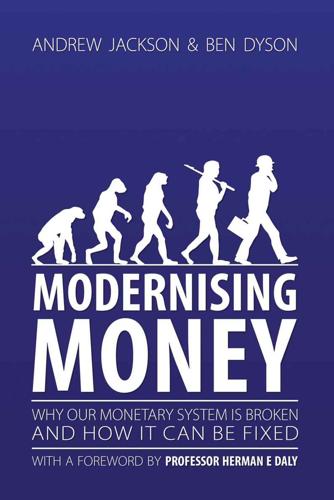
Modernising Money: Why Our Monetary System Is Broken and How It Can Be Fixed
by
Andrew Jackson (economist)
and
Ben Dyson (economist)
Published 15 Nov 2012
Additionally, the lack of monitoring by depositors may encourage banks to make riskier loans. So, despite the fact that deposit insurance is intended to increase the stability of the banking system by preventing bank runs, it may in fact reduce stability by encouraging risky behaviour: “The U.S. Savings & Loan crisis of the 1980s has been widely attributed to the moral hazard created by a combination of generous deposit insurance, financial liberalization, and regulatory failure … Thus, according to economic theory, while deposit insurance may increase bank stability by reducing self-fulfilling or information-driven depositor runs, it may decrease bank stability by encouraging risk-taking on the part of banks.”

The Space Barons: Elon Musk, Jeff Bezos, and the Quest to Colonize the Cosmos
by
Christian Davenport
Published 20 Mar 2018
When he was in his early twenties, he bought a federally owned apartment complex in Waco, Texas, for $217,500 at a government auction, even though he hadn’t seen the complex—and had never been to Texas. Three years later, in 1979, he sold it and pocketed more than $1 million. Within a few years, he bought and flipped property after property, making himself a millionaire several times over. When the savings-and-loan crisis hit in the late 1980s, he found a way to profit from that as well. He started a bank with $3 million of his own money, and started buying up loans at discounted prices. “If everybody else is going broke, that simply means your competition is going away,” he told a Dallas magazine in 2000.
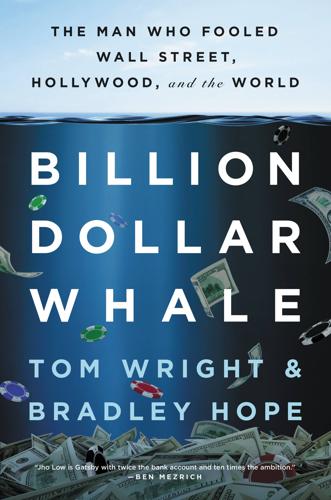
Billion Dollar Whale: The Man Who Fooled Wall Street, Hollywood, and the World
by
Tom Wright
and
Bradley Hope
Published 17 Sep 2018
The Justice Department continued to look at Leissner’s role in events. In almost a decade since the financial crisis, only one Wall Street banker—a Credit Suisse executive—had gone to jail, despite an economic collapse that had thrown millions out of work and lowered living standards. More than one thousand bankers were convicted for their roles in the savings and loan crisis in America in the 1980s and 1990s. In 2006, a court found Ken Lay, the former CEO of Enron, guilty of fraud. Since the crisis, though, the Justice Department had shied away from singling out individuals for white-collar crimes, preferring instead to reach deals with banks to defer prosecutions in return for hefty fines.
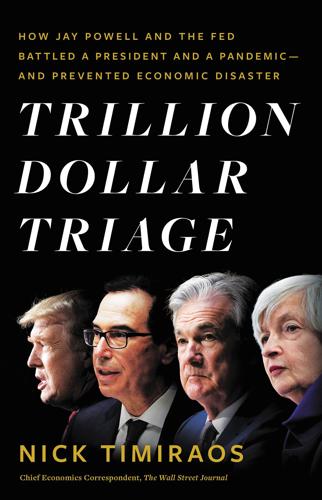
Trillion Dollar Triage: How Jay Powell and the Fed Battled a President and a Pandemic---And Prevented Economic Disaster
by
Nick Timiraos
Published 1 Mar 2022
They recommended a thirty-three-year-old, Ivy League–educated lawyer, Randal Quarles. Powell hired him, launching the public-policy career of another future Fed colleague. Financial crisis 101 1990 wasn’t the easiest year to start work at the Treasury. Over the previous few years, the country had been rocked by financial collapses and corruption. A rolling savings-and-loans crisis had resulted in the collapse of over 1,000 banks and depositories and still wasn’t fully contained. The bank-deposit insurance fund—which guarantees that bank customers will be able to withdraw their money even in a crisis—was depleted. The economy entered a recession. It was, however, the perfect time to learn firsthand how to deal with unpredictable crises.
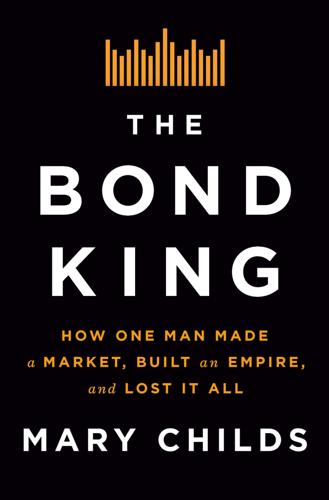
The Bond King: How One Man Made a Market, Built an Empire, and Lost It All
by
Mary Childs
Published 15 Mar 2022
* * * “Bill was to a large extent a trend follower, but he had a unique ability to know when it was time to lean against that trend and take a contrary position,” former Pimco partner Ben Trosky remembers fondly. “There were numerous occasions where everyone [else] was scared shitless, and Bill put on his seat belt.” Gross was known for big contrarian calls, and he was right more often than not. In the early 1990s, in the aftermath of the savings and loan crisis, when the banks were limping along, the Federal Reserve tilted interest rates to their benefit, keeping short-term rates low while allowing long-term rates to rise. So, Gross decided to sell long Treasuries; he was right, and the trade worked. Now, while their peers continued gorging on risk and derivatives and off–balance sheet vehicles, Pimco traders ratcheted down how many risky bonds they bought.

Boom: Bubbles and the End of Stagnation
by
Byrne Hobart
and
Tobias Huber
Published 29 Oct 2024
The simulacrum of value: Hyper-financialization and financial nihilism When the US terminated the Bretton Woods agreement in 1971, the global financial system entered a new paradigm defined by an open system of intensified capital flows, untethered exchange rate volatility, and increasingly frequent and destructive financial crashes. Faster financial flows resulted in compounding deregulation—more restrictive financial systems were routed around and had to adjust to keep up. This led to a sequence of spectacular bubbles, including the savings-and-loans crisis of the 1980s, the crash of October 1987, the bursting of the Japanese real estate and stock market bubbles in 1991, the emerging-markets bubbles and crashes of 1994 and 1997, the collapse of the US hedge fund Long-Term Capital Management in 1998, the implosion of the dot-com bubble in 2000, the 2007–2008 financial crisis (which was initially driven by a global real estate bubble), and, more recently, the financial turmoil that followed the global Covid-19 shutdowns.
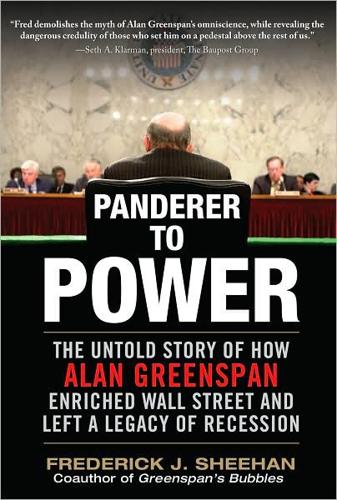
Panderer to Power
by
Frederick Sheehan
Published 21 Oct 2009
Instead, he mumbled for 18 years and evaded such discussions. 48 In brief, the commission did not touch the age at which a person is eligible for benefits; it taxed beneficiaries if their income was above a certain level, it required federal employees to contribute to the system, and it retained the formula for adjusting benefits for inflation. 49Steven Greenhouse, “Pitfalls in the Capital Spending Boom,” New York Times, June 3, 1984. 7 Lincoln Savings and Loan Association 1984–1985 Charles Keating’s S&L was the example of how the industry had spun out of control. [Seidman’s italics.]1 —L. William Seidman, Full Faith and Credit: The Great S&L Debacle and Other Washington Sagas Greenspan was fortunate that his nomination for Federal Reserve chairman preceded the unwinding of Lincoln Savings and Loan. The infamous “Keating Five” scandal was hatched at Lincoln. Five U.S. senators lost credibility in its wake—Alan Cranston, Donald Riegle, Dennis DeConcini, John Glenn, and John McCain. Greenspan was hired by Charles Keating in 1985 to write a letter to regulators on Lincoln’s behalf. The government bailout of the savings and loan industry cost American taxpayers $124.6 billion.2 Lincoln alone cost at least $2.0 billion.3 1 L.
…
If Greenspan had received the same assignment in 1989 with the same evidence he had in 1984, “his conclusions about Lincoln … would be very much the same.”42 36 Stephen Pizzo, Mary Fricker, and Paul Muolo, Inside Job: The Looting of America’s Savings and Loans (New York: McGraw-Hill, 1989), p. 266; “Greenspan wrote the letter while he was paid consultant for Lincoln Savings and Loan of Irvine, California, owned by a Charles Keating, Jr., company.” 37 Mayer, Greatest-Ever Bank Robbery, p. 140. 38 www.fdic.gov/bank/historical/s&l/. 39 Margaret Carlson: Interview with Charles Keating, “Money Talks,” Time, April 9, 1990. 40 Mary Fricker and Steve Pizzo, “The S. & L. Scandal: The Gang’s All Here,” New York Times, July 27, 1990. 41 Mayer, Greatest-Ever Bank Robbery, p. 139. 42 Nathaniel C. Nash, “Greenspan’s Lincoln Savings Regret,” New York Times, November 20, 1989. Alan Greenspan loathed to admit a mistake. Like a mother hen defending her offspring, Greenspan had developed highly successful defenses.
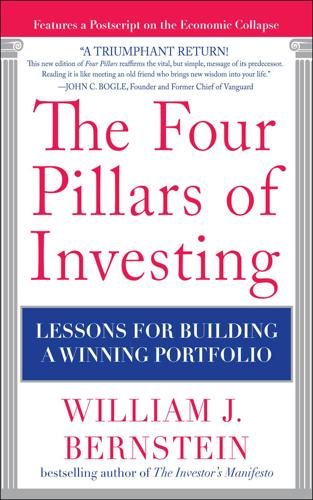
The Four Pillars of Investing: Lessons for Building a Winning Portfolio
by
William J. Bernstein
Published 26 Apr 2002
He will almost certainly fall even further behind because of the participants’ generalized lack of knowledge of three of the four pillars—investment theory, history, and psychology. Toss in the inevitable luck of the draw, and many will have long-term real returns of less than zero. It is possible that, in the next few decades, we shall see a government bailout of this system that will make the savings and loan crisis of the 1990s look like a trip to Maui. Jack Bogle Breaks Away From the Pack If Fidelity’s ownership structure is unusual, then Vanguard’s is unique. The four mutual fund examples I provided above are not isolated cases. Within almost any asset class you care to name, and compared to almost any other fund company, Vanguard offers the lowest fees, often by a country mile.
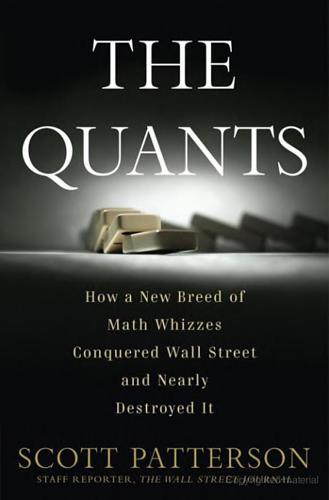
The Quants
by
Scott Patterson
Published 2 Feb 2010
He started teaching finance and accounting courses at Fordham University and Yeshiva University in Manhattan while keeping his hand in the game by taking the odd consulting job. Consulting at J. P. Morgan, he helped design a revolutionary risk management system for a group that eventually became an independent company called RiskMetrics, a top risk management shop. Securitization, meanwhile, took off like a freight train in the early 1990s after the savings and loan crisis, when the federal Resolution Trust Corporation took over defaulted savings and loans that once held more than $400 billion of assets. The RTC bundled up the high-yielding, risky loans and sold them in just a few years, whetting the investors’ appetites for more. In 1998, Brown took a consulting job with Rabobank, a staid Dutch firm that had started dabbling in credit derivatives.
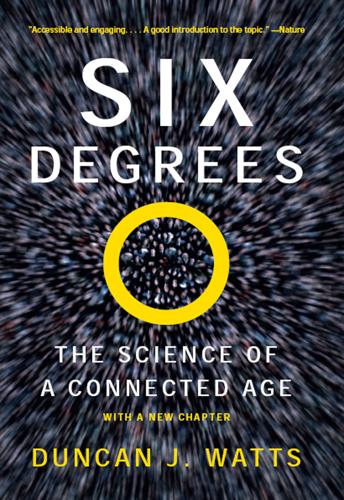
Six Degrees: The Science of a Connected Age
by
Duncan J. Watts
Published 1 Feb 2003
A year later, after the dot-com crash, you might well have concluded that all those (now unemployed) MBAs, not to mention a good many Wall Street analysts, had indeed been possessed of “extraordinary delusions.” You might, however, have suspected that such widespread hallucinations of illusionary value—not just the late 1990s infatuation with technology, but the Texas savings and loan crisis of the 1980s, the crash of October 1987, the Mexican peso crises, and the bubble economies of Japan and then later Korea, Thailand, and Indonesia—are a relatively recent feature of an increasingly rugged and treacherous financial landscape. Surely in the days before automatic trading systems, round-the-clock markets, and frictionless international capital flows—before even telephones, telegraphs, or transcontinental railways—the rapid proliferation of unfounded belief, and the ready capital to back it, would have been impossible, at least on a large scale.
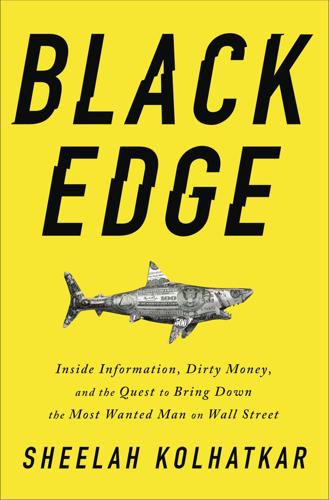
Black Edge: Inside Information, Dirty Money, and the Quest to Bring Down the Most Wanted Man on Wall Street
by
Sheelah Kolhatkar
Published 7 Feb 2017
Two of their brokers at outside firms, including Kidder, Peabody, which was embroiled in the Drexel insider trading scandal, jumped out their office windows. The junk bond bubble was beginning to burst, as companies that had borrowed billions of dollars found they couldn’t pay it back. The savings and loan crisis was also getting worse, causing the collapse of more than a thousand banks around the country. Wall Street was in crisis. Cohen, however, remained in control. For the next month after the crash, as the NYSE floor specialists struggled to open trading in their securities every morning, Cohen’s “clerks” would call them before the market opened and get quotes for where they thought particular stocks would start trading.
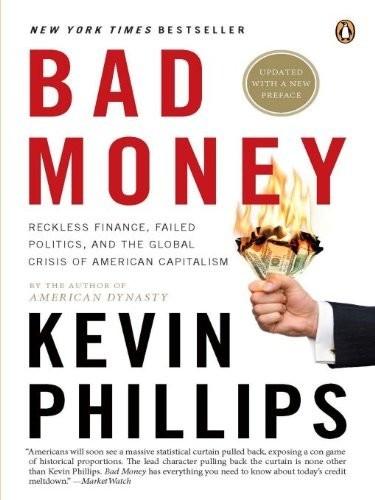
Bad Money: Reckless Finance, Failed Politics, and the Global Crisis of American Capitalism
by
Kevin Phillips
Published 31 Mar 2008
Hixson, A Matter of Interest: Reexamining Money, Debt, and Real Economic Growth (New York: Praeger, 1991), p. 81. 9 Kevin Phillips, Post-Conservative America: People, Politics, and Ideology in a Time of Crisis (New York: Random House, 1982), p. 9. 10 James Medoff and Andrew Harless, The Indebted Society (New York: Little, Brown, 1996), pp. 28-34. 11 Benjamin Friedman, “Sorting Out the Debt,” New Perspectives Quarterly, vol. 4, no. 3 (Fall 1987). 12 Thomas W. Synnott III, “The Debt Explosion of the 1980s,” Business Economics, January 1991. 13 “Deregulation Helped Turn S&L Problem into Crisis,” Miami Herald, February 19, 1989. 14 Kevin Phillips, Arrogant Capital: Washington, Wall Street, and the Frustration of American Politics (New York: Little, Brown), p. 94. 15 Ibid. 16 Of the $11.6 trillion worth of public and private debt added in the United States between 1993 and 2001, $5.8 trillion—an extraordinary proportion—was private financial debt, according to federal Flow of Funds data. 17 Jane D’Arista, “Financial Sector Borrowing Drives the Credit Expansion,” Flow of Funds Review and Analysis, Fourth Quarter 1999, p. 2. 18 Daniel Gross, Bull Run: Wall Street, the Democrats, and the New Politics of Personal Finance (New York: Public Affairs Press, 2000), p. 194. 19 Alan Greenspan, The Age of Turbulence: Adventures in a New World (New York: Penguin Press, 2007), chapter 2. 20 Michael Duffy and Dan Goodgame, Marching in Place: The Status Quo Presidency of George Bush (New York: Simon & Schuster, 1992), p. 66. 21 Bill Gross, “100 Bottles of Beer on the Wall,” Investment Outlook, www.pimco.com, February 2007. 22 Nick Beams, “U.S.
…
Roosevelt, Theodore Rosenberg, David Rove, Karl Royal Dutch Shell see also Shell Rubenstein, David Rubin, Robert ruble, Russian Ruskin, Alan Russia capitalism of currency policy of oil policy of oil production oil reserves of petro-diplomacy of Russian Export Blend Crude Oil (REBCO) Ryan, Timothy SAC Capital Partners S&L crisis S&P/Case-Shiller Home Price Index S&P Sarkozy, Nicolas Saudi Arabia China’s arms sales to U.S. currency and U.S.’s economic relationship with Saudi Aramco Saut, Jeff Say, Jean-Baptiste Schama, Simon Schiff, Peter Schlesinger, Arthur Schlesinger, James Scholes, Myron Schumer, Charles Schumpeter, Joseph Schwartz, Anna Scott, Walter Secret, The (Byrne) “Securities: The New World Wealth Machine” (Edmunds) Securities and Exchange Commission securitization CDOs and defined deregulation and derivatives and entrepreneurialism and family income and federal mortgage enterprises and hedge funds and housing and mortgage crisis and opacity and principal categories of pseudomonetary products and rating services and risk burden and shadow banking system and Three-M conundrum and Senate, U.S.
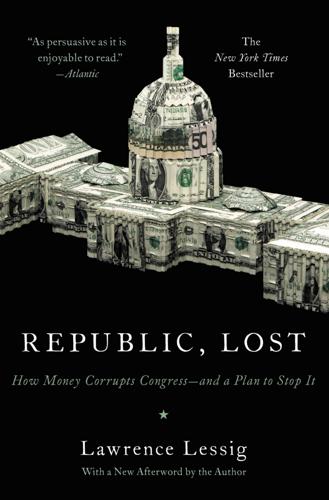
Republic, Lost: How Money Corrupts Congress--And a Plan to Stop It
by
Lawrence Lessig
Published 4 Oct 2011
No one can know the answer to that question for sure. But there are some important clues. Take the case of Congressman Jim Leach, from Iowa, who was the leading Republican on the House Banking Committee in 1994. Leach was convinced that the derivatives market produced systemic risk to the economy. After the savings-and-loan crisis of the early 1990s, he issued a report that called for strong regulations of derivatives. That report was criticized by many in the industry. As one industry representative told the Washington Post, “I have a tough time conceiving of any event that would make derivatives the culprit of something that really crashed the system.”58 (Presumably, this is an easier thing for this industry representative to “conceive” of today.)
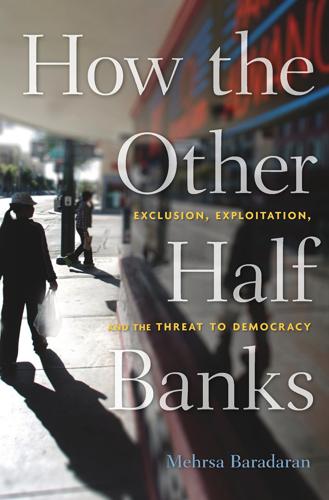
How the Other Half Banks: Exclusion, Exploitation, and the Threat to Democracy
by
Mehrsa Baradaran
Published 5 Oct 2015
Roosevelt, “Second Inaugural Address,” Washington, DC, January 20, 1937, Franklin D. Roosevelt Presidential Library and Museum, accessed March 19, 2015, www.fdrlibrary.marist.edu/aboutfdr/inaugurations.html. 85. See Federal Home Loan Bank Act, Pub. L. No. 72–304, 47 Stat. 725 (1932). 86. FDIC, “Savings and Loan Crisis and Its Relationship to Banking,” in History of the Eighties, vol. 1 (1997), 170, accessed March 19, 2015, www.fdic.gov/bank/historical/history/vol1.html. 87. Freddie Mac, “Company Profile,” accessed September 30, 2014, www.freddiemac.com/corporate/company_profile/. 88. For a comprehensive discussion of “redlining,” see Charles Lewis Nier, III, “The Shadow of Credit: The Historical Origins of Racial Predatory Lending and its Impact upon African American Wealth Accumulation,” University of Pennsylvania Journal of Law and Social Change (2008). 89.

Billionaires' Row: Tycoons, High Rollers, and the Epic Race to Build the World's Most Exclusive Skyscrapers
by
Katherine Clarke
Published 13 Jun 2023
A small but stocky Italian with olive skin and white hair, he was perhaps best known for having successfully faced off with the federal government over the demise in the 1990s of one of his company’s subsidiaries, Carteret Savings Bank of New Jersey. The roughly twenty-year legal battle, which dragged on through appeal after appeal and turned Bianco into a proficient litigant, was one for the record books. The complicated litigation hinged on a policy called “supervisory goodwill” rolled out by government regulators during the savings and loan crisis of the 1980s to encourage banks on strong financial footing to absorb weaker ones. As part of that policy, the government had allowed the healthy banks to count any “supervisory goodwill” they bought toward their regulatory capital. Carteret availed itself of the goodwill policy to acquire several troubled banks in the 1980s, so in 1989, when Congress abruptly eliminated the goodwill provision, it was left high and dry, Bianco had argued.
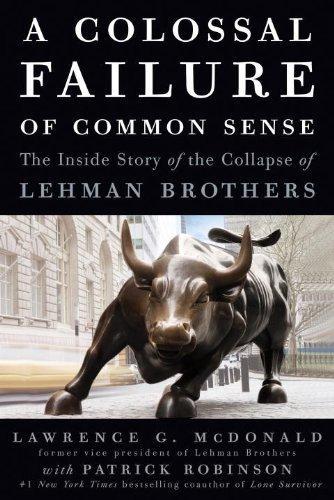
A Colossal Failure of Common Sense: The Inside Story of the Collapse of Lehman Brothers
by
Lawrence G. Mcdonald
and
Patrick Robinson
Published 21 Jul 2009
There was the stock market crash of 1987, when on Black Monday, October 19, computerized program selling caused the largest one-day percentage decline in stock market history. I remember my dad showing me the graph—it looked like the vertical drop from the high point of a Coney Island roller coaster. And then there was the savings and loan crisis of 1988–90, which took years for the government to repair. That was a bank problem, when 747 of them failed. In a way, this was the forerunner of the trouble that loomed ahead when Glass-Steagall was repealed. Needless to say, throughout that entire time my dad was right about the market.
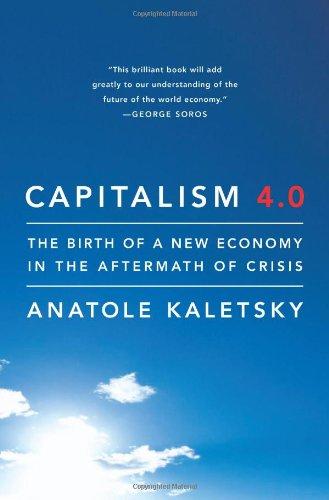
Capitalism 4.0: The Birth of a New Economy in the Aftermath of Crisis
by
Anatole Kaletsky
Published 22 Jun 2010
However, some big cyclical moves did occur during this forty-one-year period. The first was a surge in the 1970s, as inflation took off. This was followed by a slump in the early 1980s caused by the sky-high interest rates of the Volcker monetarist phase. A gradual recovery from 1984 onward was stymied by the savings and loan crisis in 1990; after that, the market fell into a long hibernation. The net effect was that house prices fell by 25 percent relative to incomes in the fourteen years from 1981 to 1995. What happened in the following twelve years, from 1995 to 2005, was a reversal of this decline. Then in 2006, property prices slightly overshot the previous peak on the way up, and in 2009, they fell below the previous troughs by a wider margin.

Culture and Prosperity: The Truth About Markets - Why Some Nations Are Rich but Most Remain Poor
by
John Kay
Published 24 May 2004
London: Macmillan Press. Butters, L. 2000. Bletchley Park: Home ofStation X. Andover, Pitkin Unichrome. Buzo, A. 1999. The Guerrilla Dynasty: Politics and Leadership in North Korea. Boulder, Colo.: Westview Press. Calavita, K. H., N. Pontell, and R. H. Tillman. 1997. Big Money Game: Fraud and Politics in the Savings and Loan Crisis. Berkeley, Calif., and London: University of California Press. Cannan, E. 1927. An Economist's Protest. London: P. S. King. Capen, E., R. Clapp, and N. Campbell. 1971. "Competitive Bidding in High-Risk Situations." journal ofPetroleum Technology 23 (1): 641-53. Cardoso, F. H., and E. Faletto. 1979.
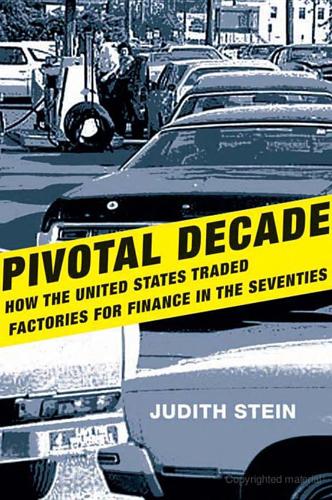
Pivotal Decade: How the United States Traded Factories for Finance in the Seventies
by
Judith Stein
Published 30 Apr 2010
A desert triumph could not compete with industrial decline, Japanese competition, rising unemployment, and growing inequality. Between 1973 and 1990, GDP grew 1.06, compared with 2.45 from 1950 to 1973.56 The rapid gains after the 1982 recession did not continue and savings, investment, and productivity stagnated. Deregulation spawned the savings and loan crisis, not entrepreneurship. Balanced budgets now replaced tax cuts as the latest elixir, promising low interest rates and high investment. From 1980 to 1989, the budget deficit averaged 3.9 percent of GDP. During the 1970s the deficit was 2.1 percent, and in the 1960s it was 0.8 percent. In 1985 Congress passed the Gramm-Rudman-Hollings Balanced Budget Act, which required incremental steps toward a balanced budget for 1993.

Mastering Private Equity
by
Zeisberger, Claudia,Prahl, Michael,White, Bowen
,
Michael Prahl
and
Bowen White
Published 15 Jun 2017
During the second half of the 1980s, managers in Europe and Asia began to adopt “American style” venture capital and buyout practices. Many of these managers made fundraising trips to the US as, relatively speaking, there were more willing investors there. Along with pension funds and endowments, nearly all of the private equity funds of funds were based in the US. By 1990, the US was in a recession and a savings and loan crisis. Buyout fundraising dropped dramatically, with only $6 billion raised in 1991. Fortunately, lessons were learned by all parties and the buyout business grew steadily and more rationally throughout the 1990s. What were originally highly leveraged transactions morphed over time to become today’s private equity industry, which provides a variety of equity capital, including growth capital, to a broad range of industries and businesses.
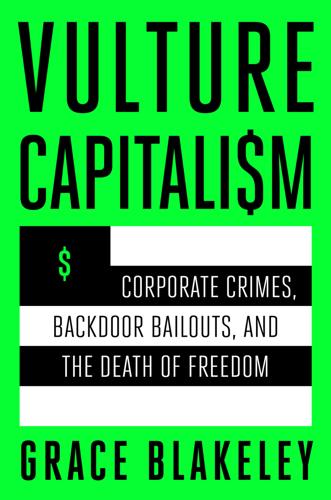
Vulture Capitalism: Corporate Crimes, Backdoor Bailouts, and the Death of Freedom
by
Grace Blakeley
Published 11 Mar 2024
The financial crisis was driven as much by crooked coordination between powerful actors as it was by unrestrained “free market” capitalism. And when the crisis did hit, once again the state stepped in to shield powerful vested interests from the consequences of their own greed. After the US savings and loan crisis in the 1980s, thousands of bankers were sent to jail on fraud and other charges. After the financial crisis of 2008, only one US banker was sent to prison—Kareem Serageldin, a banker at Credit Suisse who was convicted of fraud. Serageldin, who was born in Egypt and had a modest upbringing in Michigan, was earning nearly $7 million a year when he was arrested.
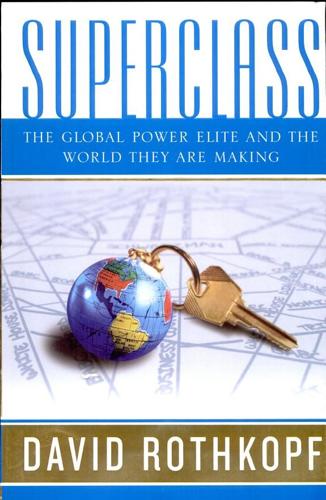
Superclass: The Global Power Elite and the World They Are Making
by
David Rothkopf
Published 18 Mar 2008
These interventions have produced other beneficiaries who turn out to have considerable influence, like federal contractors such as the company once led by Vice President Cheney, Halliburton. In a similar way, during the Clinton and prior Bush eras, many pointed out that the financial bailouts associated with the emerging markets crash of 1997-98, with the Tequila Crisis, and with the savings-and-loan crisis of the late 1980s and early ’90s greatly benefited the Wall Street colleagues and friends of Robert Rubin and Nicholas Brady, who also happened to be among the core groups they consulted in arriving at their decisions. Yes, these interventions also had important macroeconomic benefits, and the consequences of failing to undertake them would have been severe.
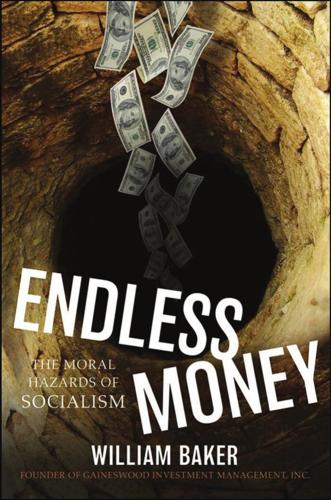
Endless Money: The Moral Hazards of Socialism
by
William Baker
and
Addison Wiggin
Published 2 Nov 2009
But this cause and effect is still not understood by Obama policymakers, who are expanding government subsidization and risking an even more catastrophic outcome for the capital markets. Progressive groups pushed the idea of ending “redlining,” the practice of not granting mortgages in low-income, mainly black neighborhoods that was prevalent before the savings and loan crisis wiped out that industry. Before that time, S&Ls had interest rate ceilings above which they could not issue loans, so they naturally avoided lending to anyone with high risk of nonrepayment, since a premium for that bad outcome could not be built into the loan price. Despite this being confined to the dustbin of history, in 1989 ACORN got sympathetic members of Congress to amend the Home Mortgage Disclosure Act to force banks to collect racial data.

Good Economics for Hard Times: Better Answers to Our Biggest Problems
by
Abhijit V. Banerjee
and
Esther Duflo
Published 12 Nov 2019
The model for this was Linda Taylor, a woman from Chicago who had four aliases and was convicted of $8,000 in fraud, for which she spent several years in prison. This was one and a half years longer than onetime billionaire capitalist hero Charles Keating, the central figure in the most famous corruption scandal of the Reagan era (the Keating Five scandal), and the related savings and loans crisis that was to cost taxpayers over $500 billion in bailout money. In a new twist, the moral turpitude of the poor was now presented as the consequence of welfare itself. In 1986, Reagan famously declared the war on poverty lost. It was welfare that made us lose the war, by discouraging work and encouraging dependency, which led to the “crisis of family breakdowns, especially among the welfare poor, both black and white.”14 In a radio address to the nation on February 15, 1986, Reagan declared: We’re in danger of creating a permanent culture of poverty as inescapable as any chain or bond; a second and separate America, an America of lost dreams and stunted lives.
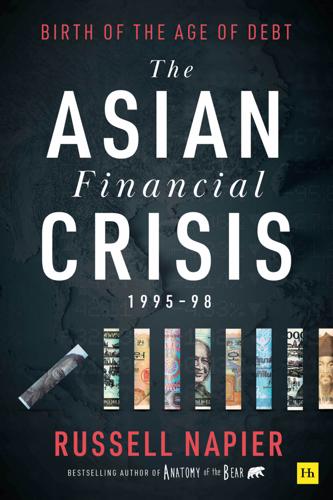
The Asian Financial Crisis 1995–98: Birth of the Age of Debt
by
Russell Napier
Published 19 Jul 2021
They would suggest that this is an accounting legerdemain which will not shrink the US$94bn number any further. The cynic is wrong. It is clearer by the day that a significant portion of the non-performing loans of the domestic sector will end up in government hands. This should not surprise anybody as it is exactly what happened in the United States during the savings and loan crisis and in Sweden where they nationalised the banks. It is standard operating procedure. The governments are already in the business of raising funds to provide banks with cash in return for their non-performing loans. Full nationalisation may be necessary. The cynic will argue that this still has no effect on the US$94bn hole as we have only moved the problem from companies to commercial banks to government.
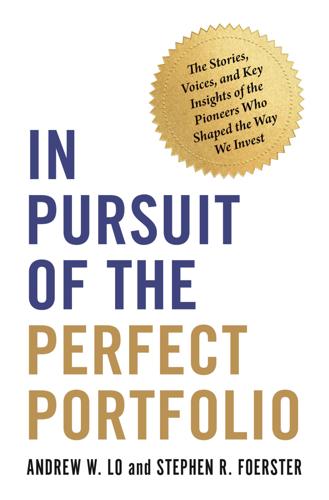
In Pursuit of the Perfect Portfolio: The Stories, Voices, and Key Insights of the Pioneers Who Shaped the Way We Invest
by
Andrew W. Lo
and
Stephen R. Foerster
Published 16 Aug 2021
In the academic year 1976–1977, Sharpe visited the National Bureau of Economic Research as part of a team studying issues related to the minimum required amount of capital that banks should maintain relative to the amount of loans that banks were extending. Sharpe focused on the relationship between deposit insurance and default risk. The project warned of excessive risk taking among financial institutions. After the savings and loans crisis of the 1980s, Sharpe reflected, “Would that our results had been heeded by those concerned with savings and loans institutions in the United States in the subsequent decade!”58 Much the same thing could be said of global financial institutions during the financial crisis of 2007–2009. In 1978, Sharpe wrote a highly successful textbook simply titled Investments, which went through six editions up to 1999.

The Color of Money: Black Banks and the Racial Wealth Gap
by
Mehrsa Baradaran
Published 14 Sep 2017
In Where Do We Go from Here, King had said, “A society that has done something special against the Negro for hundreds of years must now do something special for him."52 While the judicial branch was dismantling the executive branch’s black capitalism program, the legislature was enshrining features of it in the law. In 1989, Congress passed the Financial Institutions Reform, Recovery, and Enforcement Act (FIRREA) in response to the savings and loan crisis. The act was primarily focused on regulating the failed thrift sector, but it also included a much less discussed provision on minority banks. Section 308 of FIRREA, entitled “Preserving Minority Ownership of Minority Financial Institutions," contained the first legislative decree concerning minority banks.
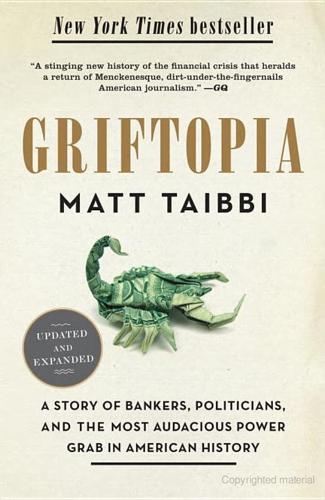
Griftopia: Bubble Machines, Vampire Squids, and the Long Con That Is Breaking America
by
Matt Taibbi
Published 15 Feb 2010
But Greenspan’s errors were often historic, idiotic blunders, evidence of a fundamental misunderstanding of problems that led to huge disasters. In fact, if you dig under almost every one of the major financial crashes of our time, you can find some kind of Greenspan quote cheerfully telling people not to worry about where the new trends in the economy were leading. Before the S&L crisis exploded Greenspan could be seen giving a breezy thumbs-up to now-notorious swindler Charles Keating, whose balance sheet Greenspan had examined—he said that Keating’s Lincoln Savings and Loan “has developed a series of carefully planned, highly promising and widely diversified projects” and added that the firm “presents no foreseeable risk to the Federal Savings and Loan Corporation.”
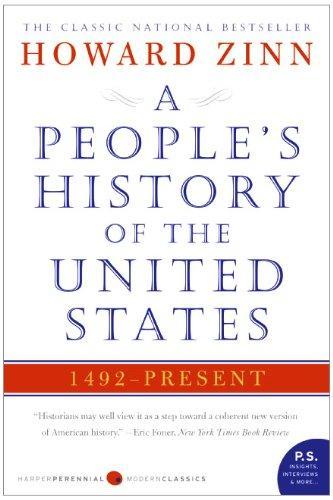
A People's History of the United States
by
Howard Zinn
Published 2 Jan 1977
Pierre, 193 Rumania, 426 Rusk, Dean, 298, 366, 476, 499 Russett, Bruce, 410, 411 Russia, 598, 657, see also Soviet Union Russian immigrants, 226, 265, 375, 382 Russo, Anthony, 470, 487, 488 Rwanda, 655 Ryan, Jack, 618 Ryan, Thomas Fortune, 305 Sacco and Vanzetti case, 376 Safe Water Drinking Act, 576 Sage, Russell, 207, 305 Salsedo, Andrea, 375–76 Sampson, Anthony, 413–14 Sanders, Bernie, 622 Sandinistas, 585, 593 Sandford, Mrs. John, 112 Sanger, Margaret, 343 Santa Anna, Antonio Lopez de, 166, 167–68 Sartre, Jean-Paul, 435 Sasway, Benjamin, 606 Saudi Arabia, 413–14, 623, 678, 681 Savak, 573 savings and loan scandal, 582–83 Schell, Jonathan, 477, 604 Schenck, Charles, 365–66 Schlesinger, Arthur, 130, 352, 441, 458 Schlesinger, James, 550, 552, 566, 619 “School of the Americas,” 569, 667 Schroeder, John, 152, 153, 158 Schutz, Carl, 301 Schwerner, Michael, 456 Scotch immigrants, 49 Scott, Dred, 187, 198 Scott, William, 78 Scott, Winfield, 10, 145, 147, 157, 166 Scottsboro Boys, 398, 444, 447 Seaton, Esta, 511 Seeger, Pete, 537 Seminole Indians, 127, 128, 129, 141, 143–46 Seminole War, 143–46 Senate, election of, 96, 349 Seneca Indians, 526; see also Iroquois Seven Years’ War (French and Indian War), 53, 59, 60, 61, 77, 87 Shah of Iran 572, 573 Shalom Stephen, 589, 591 Shattuci, Job, 92 Shaw, George Bernard, 271 Shaw, Irwin, 374 Shaw, Nate, 178–79, 397–98 Shays, Daniel, 93–94, 95 Shays’ Rebellion, 91–95, 98 Sherman, William T., 197 Sherman Anti-Trust act, 259–60, 351 Sherwin, Martin 422, 423, 424 Shy, John, 77, 78, 79 Simon, William, 558 Sinclair, Upton, 322, 365 Sioux Indians, 104, 524 Slater, Samuel, 115 slavery/slave trade, 12, 28–29, 30–31 abolitionists, 117, 120, 121, 122, 124, 155, 181–90 passim African states, 27–28 Colonial era, 23, 27–38 passim, 43, 46, 49, 50, 53–58 passim, 72, 103, 105–06; rebellions, 32–38 passim, 53, 54, 55, 56, 59, 72 Constitution, 13th Amendment, 192, 198, 204 Declaration of Independence 72–73 Dutch, 28, 29 18th century, 33, 58, 88, 89, 91, 98 English, 28, 29 French, 28 Indians, 3–7 passim, 32 19th century, 171–94; Fugitive Slave Act, 181, 186, 188; rebellions and conspiracies, 171, 174, 175, 183 passim, 194; see also Civil War Portuguese, 25, 29 Spanish, 3–7 passim, 25, 32 Smith, Abbot, 43, 45, 46–47, 53 Smith, Adam, 74 Smith, Henry Nash, 282 Smith, John, 13 Smith, Justin H., 158–59, 166–67 Smith, Ruby Doris, 453, 504 Smith, Sir Thomas, 24 Sobell, Morton, 434 Socialism/Socialist party, 264, 322, 330–50 passim, 352, 353, 359, 374, 558 and labor, 244–45, 249, 268–73, 278, 281, 282, 307–08, 336, 339–40, 382, 385, 406, 547 Spanish-American war, 307–08 World War I, 10, 359, 364–70, 372 World War II, 420 Social Security Act, 403 Somalia, 654–55 Somoza dictatorship, 572, 585 Sons of liberty, 66, 68, 71 Sorensen, Theodore, 546 Sorge, F.

Jony Ive: The Genius Behind Apple's Greatest Products
by
Leander Kahney
Published 14 Nov 2013
“So we responded to Ideal Standard that they could give us a design brief, which we would fulfill, but it was our decision as to which of our designers we would assign to do the work. When he heard this, he walked away! He specifically wanted Jony to do the project.” In time, the Ideal Standard executive would reemerge on Jony’s horizon. But in 1989, the savings and loan banking crisis took a toll on RWG’s business. The company’s interior design group had been getting numerous commissions to design dealing rooms for banks in the United Kingdom, Spain and Australia. But as the financial crisis spread around the world, the banks canceled. “With the financial crisis, banks terminated projects leaving our designers without work,” recalled Weaver.
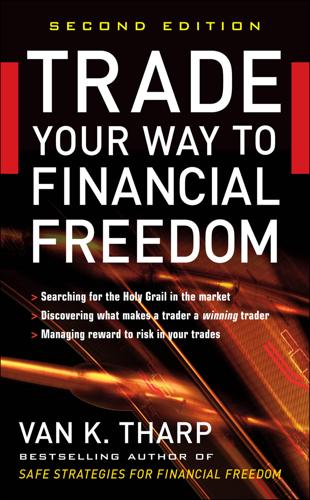
Trade Your Way to Financial Freedom
by
van K. Tharp
Published 1 Jan 1998
Many real estate partnerships, for example, sprang up in the 1980s in order to take advantage of significant loopholes in the tax law. But when those loopholes were closed by the Tax Reform Act of 1986, those partnerships basically went out of business. The net result was a record number of bankruptcies for people involved in those loopholes. It also produced a savings and loan crisis in which the government had to bail out the savings and loan industry to the tune of $125 billion. Here are some of the implications of that tax bill: • Depreciation on real estate went from 19 to 31 years, effectively making profitable investments unprofitable. • Real estate losses were denied to passive investors, making real estate partnerships that accumulated real estate for tax savings for their limited partners obsolete overnight
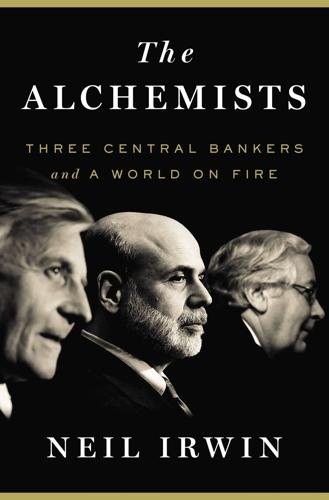
The Alchemists: Three Central Bankers and a World on Fire
by
Neil Irwin
Published 4 Apr 2013
“It can’t happen”: Rudiger Dornbusch, “The Euro Controversy,” MIT Department of Economics Editorial, 2001. In 2005, Alabama paid: “Federal Taxes Paid vs. Spending Received by State,” Tax Policy Center, October 19, 2007, http://taxfoundation.org/tax-topics/federal-taxes-paid-vs-spending-received-state. The bailout of savings and loans: Timothy Curry and Lynn Shibut, “The Cost of the Savings and Loan Crisis: Truth and Consequences,” FDIC Banking Review 13, no. 2 (December 2000), 26–35. Losses in Texas: FDIC Division of Research and Statistics, History of the Eighties, vol. 1, An Examination of the Banking Crises of the 1980s and early 1990s, 183, http://www.fdic.gov/bank/historical/history/vol1.html.
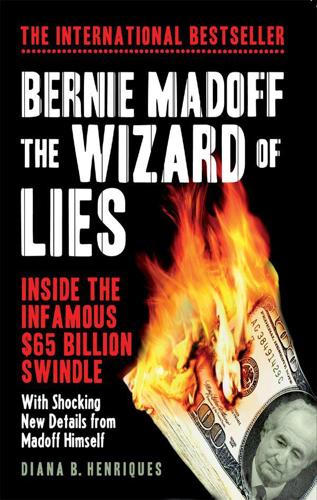
Bernie Madoff, the Wizard of Lies: Inside the Infamous $65 Billion Swindle
by
Diana B. Henriques
Published 1 Aug 2011
See also Securities and Exchange Commission; Securities Investors Protection Corporation; and specific firms and investigations automation and, 42, 44–46, 49 deregulation and, 79–80, 86, 121–22 Europe and, 68 fixed commissions and, 65–66 hedge funds and, 104, 131, 172 history of, 28, 35–36, 42 investor protection and, 341–47 Madoff criticizes, 180 negligence and, 78, 267 order flow controversy and, 87 reform of, post-2008, 241–42 Renaissance Technologies, 140–43, 157 Reserve fund, 195 Retirement Accounts Inc, 127 retirement savings, 172–73, 342–44 retrocession fees, 171 Richards, Lee S., III, 21–23, 222–23, 239 Richards, Lori, 140, 142, 145–46 Richmond Fairfield Associates, 147 Rockefeller, David, 174 Rogers, Casey & Barksdale, 130 Rogerscasey Inc, 132, 141 Ross, Burt, 276 Roth, Eric, 212 Rothko, Mark, 113 Rothschild et Cie, 170 Rye funds, 130–31 Sage, Maurice, 63, 65 Salomon Brothers, 71 Salomon Smith Barney, 118 Samuels, Andrew Ross, 293 Santa Clara fund, 169, 172 Sarbanes, Paul, 122 savings and loans crisis, 53 Schama, Simon, 213 Schapiro, Mary, 228–29, 241, 301–3, 326–27 Schlichter, Arthur, 63 Schulman, Robert I., 131 Schwartz, Michael, 276 Second Circuit Court of Appeals, 309, 324 Securities and Exchange Commission (SEC), 10, 31 Barron’s article and, 121–22 Chais and, 58, 301 Cohmad and, 300–301 deregulation and, 78–79 failure of, and reform post-2008, 240–42, 301–4, 311, 326–27 failure of, in Madoff case, 210, 227–30, 266, 296, 345 financial crisis of 2008 and, 196, 228–29 fixed commissions and, 66 Friehling and, 255, 301 hedge funds and, 126, 142, 172 investigation by, after Madoff confession, 17, 228, 239, 241, 245, 270–72 investigation of 1992, 94–102, 132, 272, 335 investigation of 2001–4, 138, 140, 145–46 investigation of 2005, 139–46, 151 investigation of late 2005–6, 153–59, 162–66, 172, 227, 271–72 Joel suspended by, 43 Kotz report of 2009, 302–4 Madoff arrest and, 17–18, 22, 224, 275 Madoff critique of, 180 Madoff employees charged by, 297–98, 310 Madoff family not charged by, 286, 293 Madoff sons report father to, 10, 12, 14 Madoff victims and, 220, 222, 236, 239, 264, 267–68, 303–4 Markopolos and, 122–25, 142–43, 153–57, 162, 227 NASD and, 86 Office of Compliance Inspections and Examinations, 121 OTC and, 45–46 regulations of 1970s, 42, 79 Shana Madoff’s husband and, 179 Securities Industry Association, 80 Securities Investor Protection Act (1970), 234, 262, 308 Securities Investor Protection Corporation (SIPC), 44 cash advances by, 220, 222, 260, 306–8 creditor meetings and, 244 indirect investors and, 235, 304–5, 325–26 legal expenses and, 246, 311 Madoff case taken by, 220–22, 224 net equity dispute and, 235–36, 242, 255, 259–66, 268, 307, 324–25 Picard assigned as trustee by, 216–18 Picower settlement and, 328–30 reform of, 311, 325–27 Sedgwick, Kyra, 212 September 11, 2001, attacks, 90, 125, 265 Shad, John, 79–80, 86, 96 Shapiro, Carl, 4, 61–62, 72–74, 84, 86, 92, 100–101, 137, 152, 158, 183–84, 205, 307, 335 philanthropy and, 62, 340 settlement by, 320 Shapiro, Ellen, 72–73 Shapiro, Ruth, 137 Shearson Lehman Hutton, 108 Sheehan, David J., 217–19, 222, 237, 239–40, 244, 258, 263–64, 267, 269, 294, 307–8, 311–16, 318–20, 328–30 Shopwell chain, 65 short sales, 30, 196 Siegman, Miriam, 276–77, 298 Simons, Nat, 141 Singapore, 171, 212 Smith Barney, 131 Sonar report, 322 Sorkin, Ira Lee “Ike,” 1–2, 6–7, 15–17, 20, 96–98, 101, 224, 238, 242–43, 248–51, 270, 273, 275, 277, 279 Sorkin, Nathan, 242, 248 Sorkin, Rosalie, 242, 248 Soros, George, xxiii, 60 sovereign immunity principle, 303–4 Soviet Union, former, 169 S&P 500, 83, 94, 118, 123, 176, 204, 296 Spain, 1, 239, 245 Spielberg, Steven, 212, 215, 340 Spitzer, Eliot, 241 split-strike conversion strategy, 75–77, 83–85, 112, 115, 117–18, 192, 196, 199, 271 size constraints and, 93, 106, 128 Sporkin, Stanley, 79 spread, defined, 45 Squadron, Howard, 88–89, 96, 242 Squillari, Eleanor, 3, 6–8, 11–14, 161 stagflation, 52 Stanton, Louis L., 22, 222, 300 Steinhardt, Michael, 25–26 Sterling Stamos fund, 148 stock market.
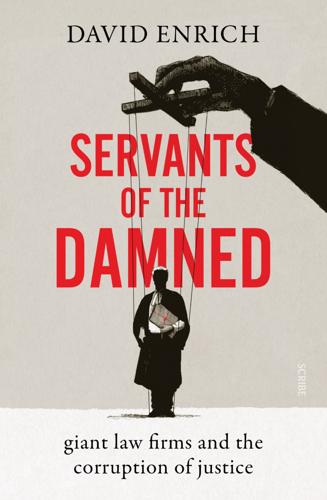
Servants of the Damned: Giant Law Firms and the Corruption of Justice
by
David Enrich
Published 5 Oct 2022
After a week of frenzied negotiations, a settlement was reached minutes before the trial was set to begin. Jones Day agreed to pay $51 million, while denying any wrongdoing. At the time, it was the most ever paid by a law firm to resolve a malpractice suit—and the largest penalty levied during the S&L crisis. As part of the settlement, Jones Day had to sign a “cease and desist” order and was forced into the embarrassing position of agreeing to conduct additional reviews before bringing on new banking clients. The deal made the front page of the New York Times. “This is really an instance of lawyers, who knew better, making an affirmative decision to chase the riches,” an attorney for the government said.
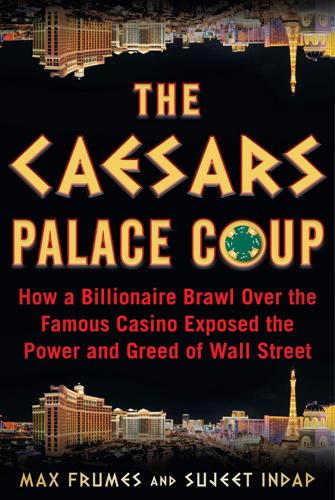
Palace Coup: The Billionaire Brawl Over the Bankrupt Caesars Gaming Empire
by
Sujeet Indap
and
Max Frumes
Published 16 Mar 2021
Irvine-based American Savings & Loan, the country’s biggest thrift, failed in 1988. The federal government took on much of the toxic assets, selling the remaining “good bank” to Bass for just a few hundred million dollars. Cleansing the toxic bank ultimately cost the federal government more than $5 billion (the cost to taxpayers of the broader S&L crisis was later estimated to be nearly $500 billion). The Bass group later sold the “good bank,” rechristened American Savings Bank, for $1.4 billion in stock to Washington Mutual in 1996 (worries about the Bass’ sweetheart deal allowed Uncle Sam to get 30 percent of the sale proceeds). When Continental Airlines was coming out of bankruptcy in 1993, Bonderman could not convince Robert Bass that it was worth resurrecting.
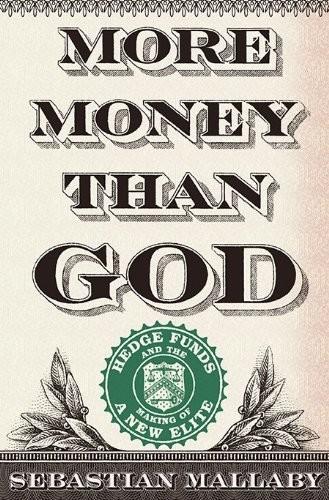
More Money Than God: Hedge Funds and the Making of a New Elite
by
Sebastian Mallaby
Published 9 Jun 2010
But he also began to make money in bonds, and by the early 1990s he was pioneering an early version of what later came to be known as the shadow banking system.2 Like Druckenmiller’s currency trading, the strategy involved taking advantage of the policies of a central bank—though this time it was the U.S. Federal Reserve that proved obliging. In 1990 and 1991, the U.S. economy was in recession following the savings and loans crisis, and the Fed was trying to stimulate it by keeping short-term interest rates low. This created a situation in which Steinhardt could borrow short-term money exceedingly cheaply, then load up on longer-term bonds that yielded considerably more, pocketing the difference. The risk in this trade was that if longer-term interest rates spiked up, the value of Steinhardt’s bonds would crater.
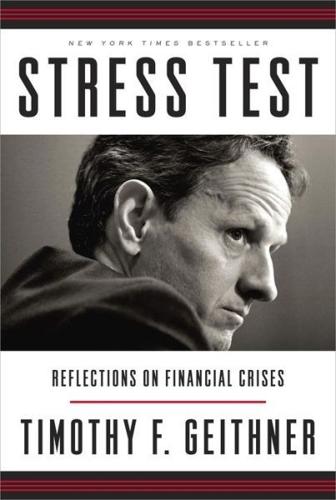
Stress Test: Reflections on Financial Crises
by
Timothy F. Geithner
Published 11 May 2014
Its balance sheet was loaded with option adjustable-rate mortgages (ARMs), an almost comically irresponsible product that let borrowers choose their monthly payments, adding to their future obligations if they wanted to pay less at the moment. When the housing bubble popped, IndyMac popped with it, the largest U.S. bank to fail since the savings-and-loan crisis of the 1980s, though not even one-tenth the size of Bear Stearns. In Pasadena, TV cameras filmed tearful depositors lining up outside its locked doors, screaming for their money back. The FDIC guaranteed deposits up to $100,000 at thrifts, so most of those panicked account holders had nothing to worry about.
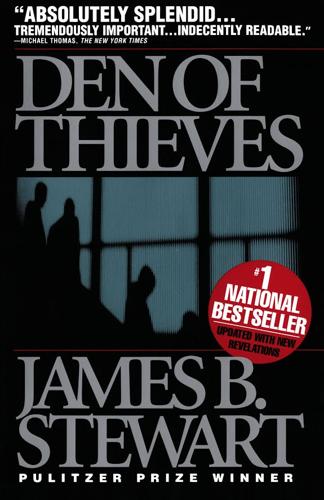
Den of Thieves
by
James B. Stewart
Published 14 Oct 1991
"In my business, you need protection," he told a visitor. At a conference on Latin American debt in Tijuana, Mexico, Milken spoke in front of his own larger-than-life image. He was hailed as a "genius" and a "king," the man who could solve everything from the Third World debt crisis to the savings and loan crisis to the balance of payments problem. Martin Siegel was Kidder, Peabody & Co.'s "golden boy," one of the country's leading investment bankers, the symbol of a new era on Wall Street. He was the man who had everything, yet worried that everything wasn't enough. Even as he was being lionized in the press— Business Week called him a "heartthrob"—he embarked on a double life of clandestine meetings and briefcases of cash.
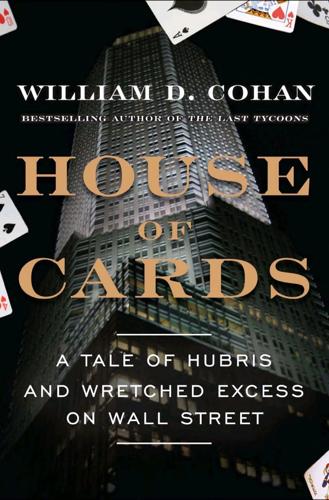
House of Cards: A Tale of Hubris and Wretched Excess on Wall Street
by
William D. Cohan
Published 15 Nov 2009
“I got paid a really lousy bonus one year by the head of the syndicate at that point, and I talked to my immediate boss and he said, ‘You ought to go talk to John Sites'”—who founded the mortgage department at Bear Stearns in 1981 and later became co-head of fixed income— “‘and ask John Sites if he has a role for you in the mortgage area because you like to read these books and they're complicated deals.’” Bear's mortgage-backed securities business rose from the ashes of the savings-and-loans crisis of the mid to late 1980s, when failed thrifts were desperately trying to get illiquid assets off their balance sheets. At that time, the margins on trading the bonds of Fannie Mae and Freddie Mac were huge, generally $2 to $3 on a trade and sometimes $5. In other words, the difference between what a bond was bought for and what it could be sold for could be as much as five points.
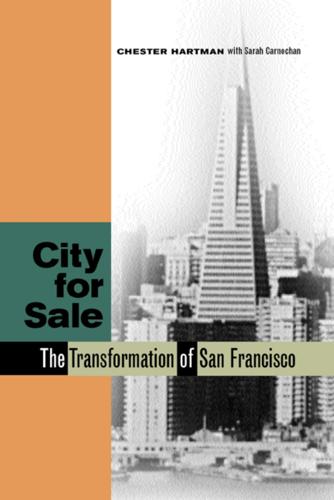
City for Sale: The Transformation of San Francisco
by
Chester W. Hartman
and
Sarah Carnochan
Published 15 Feb 2002
In the last years of the century, office construction activity came to the fore again with a vengeance, triggered largely by the dot-com revolution, which helped eat up the 3.5 million square feet of unused, banked allowable development that built up between the late 1980s and mid-1990s period, when the savings and loan crisis, the state’s real estate recession, and resultant high financial district vacancy rates stopped the city’s building boom. The invasion of the “dot-comies” hit San Francisco in the late 1990s with earthquake-like force. Somewhere between five hundred and seven hundred Internet-related companies (the speed and nature of these start-ups makes counting them difficult), created an estimated fifty-five thousand jobs, located mainly South of Market and in the Mission.
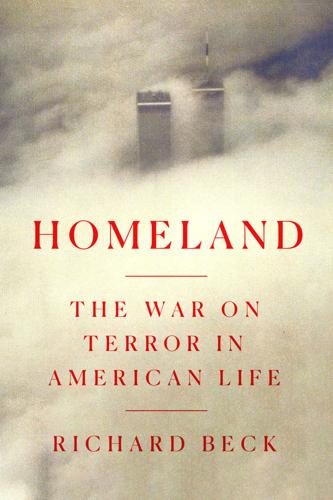
Homeland: The War on Terror in American Life
by
Richard Beck
Published 2 Sep 2024
The magnitude of the crash was clear by the end of 2008, and Occupy didn’t start until the fall of 2011. What changed over those two and a half years was that it became clear that the Obama administration wasn’t going to go after any of the bankers who caused the crash. There was more than adequate precedent for him to do so. After the savings and loan crisis of the 1980s, which contributed to a recession in the early 1990s but didn’t cause anywhere near the damage wrought by the global financial crisis, more than nine hundred people went to jail. Only one executive saw prison time in the United States as a result of the financial crisis, and his trial didn’t even take place until 2013.[20] In the early stages of the Obama presidency, many people believed that impunity culture was confined to the Bush administration rather than pervading the political system as a whole.
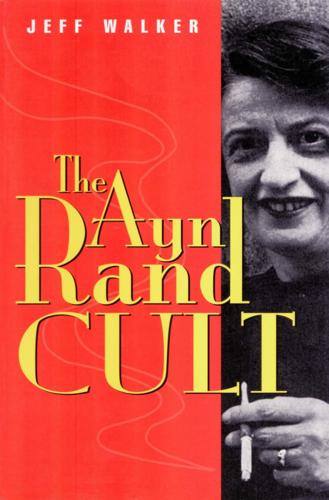
Ayn Rand Cult
by
Jeff Walker
Published 30 Dec 1998
Greenspan’s Fed even seriously pondered scheduling the phase-out of remaining inflation, complete with ‘sacrifice ratios’, a euphemism for “how many people we’re going to throw out of work,” the chairman conceded. In contrast, Corrigan worried that targeting zero inflation might provoke a backlash against the Fed. It did. Fed governor Edward Kelley warned that in the event of a recession, the cost of the savings and loan bankruptcies crisis might get completely out of hand. It did. Real GNP steadily slowed in 1989. By keeping the funds rate at 8 percent until November despite collapsing credit demand, the Fed was in effect tightening credit. In August 1990, Greenspan cautioned that, “those who argue that we are already in recession I think are reasonably certain to be wrong.”

The Unwinding: An Inner History of the New America
by
George Packer
Published 4 Mar 2014
Warren’s life began in those years, and although she had seen her share of rough times as a girl, her parents and brothers were doing all right, and she managed to reach the age of thirty in good financial shape. Then came the late 1970s, early 1980s. “Regulation? Ahh, it’s a pain, it’s expensive, we don’t need it.” So government started unraveling the regulatory fabric. What happened next? The S&L crisis. In the late eighties, seven hundred financial institutions went under just as Warren and her colleagues were getting ready to publish their research on bankruptcies. What they had found was just the opposite of what Warren expected, and it upended what she had believed about markets and government.
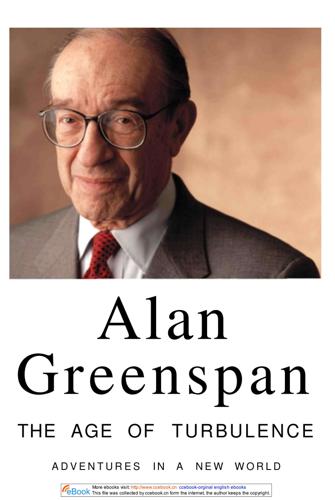
The Age of Turbulence: Adventures in a New World (Hardback) - Common
by
Alan Greenspan
Published 14 Jun 2007
(That policy caused gas lines in some parts of the country that fall.) But with fourteen years under my belt as Fed chairman, I'd seen the economy pull through a lot of crises—including the largest one-day crash in the history of the stock market, which happened five weeks after I took the job. We'd survived the real-estate boom and bust of the 1980s, the savings and loan crisis, and the Asian financial upheavals, not to mention the recession of 6 More ebooks visit: http://www.ccebook.cn ccebook-orginal english ebooks This file was collected by ccebook.cn form the internet, the author keeps the copyright. I NTRODUCTION 1990. We'd enjoyed the longest stock-market boom in history and then weathered the ensuing dot-com crash.
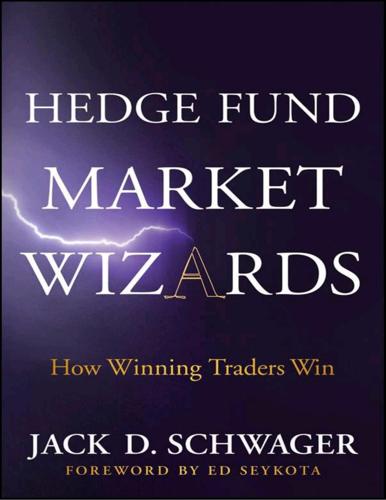
Hedge Fund Market Wizards
by
Jack D. Schwager
Published 24 Apr 2012
I didn’t necessarily understand the intricacies of the mortgage securitizations, but I realized that the banks were heavily leveraged in this product. On top of that, when politicians are making statements that certain banks deserve to fail, why would anyone want to own bank stocks? I had seen it all before. I had seen a number of big banks go to zero during the S&L crisis. I had seen insiders at these banks buying on the way down. Even they were caught by the greater trend, which they didn’t see. Besides being short banks and mortgage lenders, what other trades accounted for your 2008 gains? Energy stocks were a major winner for us in 2008. During the first half of the year, we made money on the long side.
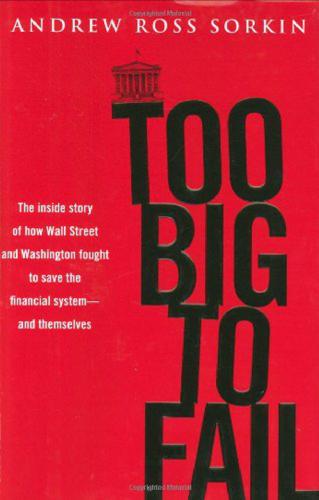
Too big to fail: the inside story of how Wall Street and Washington fought to save the financial system from crisis--and themselves
by
Andrew Ross Sorkin
Published 15 Oct 2009
Paulson agreed but said if they were going to proceed, he wanted to promote his plan to have the government buy toxic assets, a solution that he thought would be the most politically palatable, because it would be comparable to the Resolution Trust Corporation of the late 1980s. Congress created the RTC in 1989 to handle the more than $400 billion in loans and other assets held by 747 failed savings and loans as part of the S&L crisis. The RTC had been the recipient of a wide range of loans, properties, and bonds from the failed thrifts. Like the predicament Paulson currently faced, some of the assets were good but most were bad, and some, including construction and development loans, had no discernible market. The task was daunting: L.
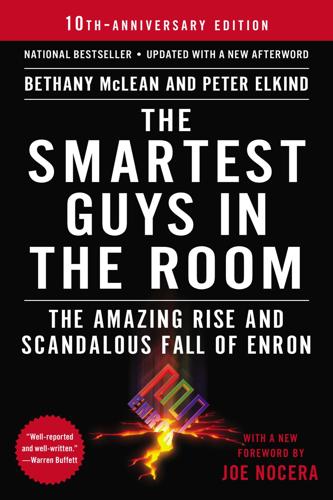
The Smartest Guys in the Room
by
Bethany McLean
Published 25 Nov 2013
Skilling also insisted that mark-to-market accounting gave a truer reading of a company’s financial reality than the more common historical-cost accounting. “There’s no way around it,” he would tell people. “It reflects the true economic value.” To him this wasn’t even a debatable issue. His favorite example was the S&L crisis (which was still in full swoon at the time Skilling joined Enron). Historical-cost accounting allowed S&Ls to keep loans that had collapsed in value on their books at wildly inflated prices, which in turn allowed them to hide the true state of their finances. By contrast, Wall Street firms, which have to use mark-to-market accounting to value their portfolios, take hits when, say, the stock market collapses because they have to mark the value of their assets to the current market price.
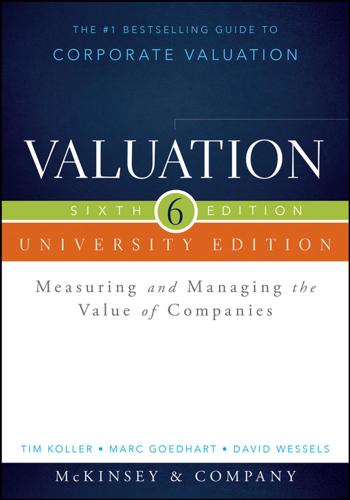
Valuation: Measuring and Managing the Value of Companies
by
Tim Koller
,
McKinsey
,
Company Inc.
,
Marc Goedhart
,
David Wessels
,
Barbara Schwimmer
and
Franziska Manoury
Published 16 Aug 2015
See also Growth analyzing, 215–220 accounting changes and irregularities, 218–219 currency effects, 216 mergers and acquisitions (M&A), 217–218 from attracting new customers, 122 and balance with ROIC, 117 decay analysis, 132 decomposing, 219–220 drivers of, 118–120 empirical analysis, 127–133 historical trends, 128–129 from increasing market share, 122 from new product development, 120–121 from persuading existing customers to buy more product, 121 projecting, 145–146 rates across industries, 130 sustaining, 124–127, 130–133 through acquisitions, 122 through incremental innovation, 122 through product pricing and promotion, 122 transition probability, 132–133 and value creation, 120–124 value of major types of, 121 variation in, by industry, 119 variation in, over product life cycle, 125 volatile, by industry, 131 Risk: cash flow risk, 44–47 diversifiable vs. nondiversifiable, 800–804 exposure level, 44–47 hedging, 46–47 price of, 42–44 Risk-free rate, 289–290, 720 Risk-neutral valuation, 797–798 Risk-weighted assets (RWA), 777–778 Rockwell Automation, 23 INDEX 869 ROIC. See Return on invested capital (ROIC) Roll-up strategies, 611–612 RONIC (return on new invested capital), 262–263, 268–269 Russian government default crisis, 11 S Sale-leaseback transactions, 41–42 Sales productivity, 583 Savings and loan crisis, 11 Scalability of products/processes, 104 Scenario analysis, 339, 344–348 Scenario DCF approach, 711–716, 729–730, 785–786 Scenario development, 743–744 Scenarios, creating, 533–534 Scenario weighting, 742–743 Schiller, Robert, 65 Scholes, Myron, 165 Securitized receivables, 327–328, 440 Sell-side analysts, 689 Sensitivity analysis, 339, 342–344 Shareholder capitalism, 6–10 Shareholder payouts, 663–668 Shareholder returns.

Class Acts: Service and Inequality in Luxury Hotels
by
Rachel Sherman
Published 18 Dec 2006
This Boston hotel and the rights to the Ritz-Carlton name were sold in 1982, and the company (owned by Marriott since 1998) now operates over sixty hotels globally. The Four Seasons chain likewise began with one nonluxury property in Toronto in 1960 and has expanded, especially since the 1980s, to over sixty-five hotels and resorts worldwide. The national recession of the late 1980s and early 1990s and the savings and loan debacle brought crisis to the highly cyclical hotel industry. Like other segments, however, luxury rebounded by middecade when the industry reorganized itself to increase profitability and efficiency.16 Developers began again to build luxury hotels.17 Thanks to Internet startup millionaires and stock market high rollers, these hotels reaped record profits during the boom of the late 1990s, gaining more value than UC_Sherman (O).qxd 28 10/3/2006 2:01 PM Page 28 chapter one other industry segments.18 In 1998, 5 percent of newly opened hotels were classified as upscale.
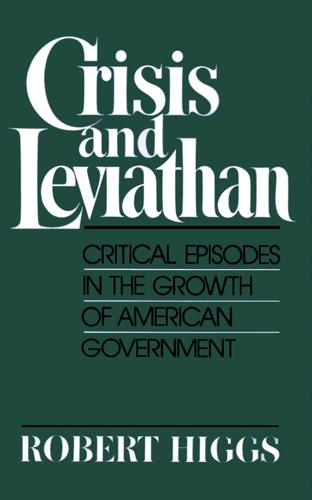
Crisis and Leviathan: Critical Episodes in the Growth of American Government
by
Robert Higgs
and
Arthur A. Ekirch, Jr.
Published 15 Jan 1987

The Quest: Energy, Security, and the Remaking of the Modern World
by
Daniel Yergin
Published 14 May 2011
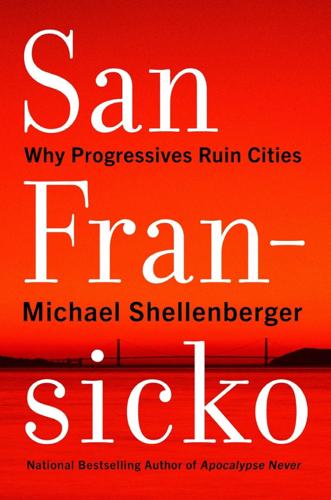
San Fransicko: Why Progressives Ruin Cities
by
Michael Shellenberger
Published 11 Oct 2021